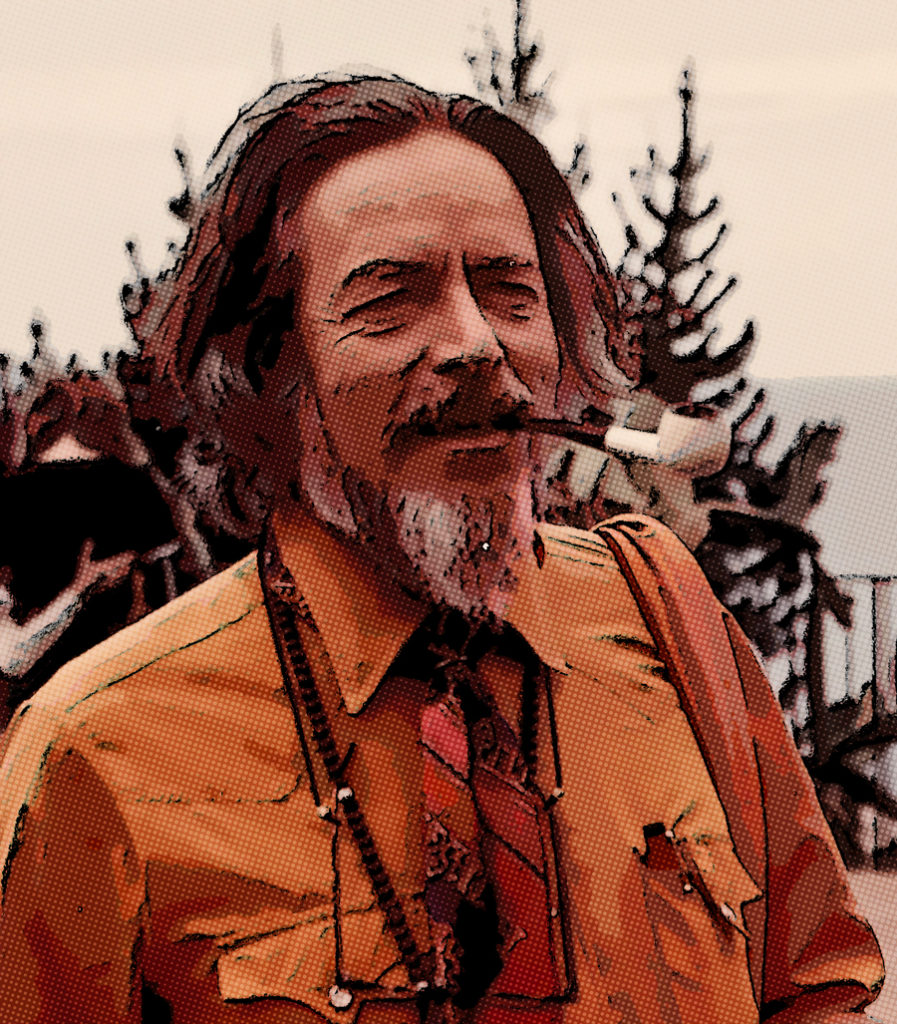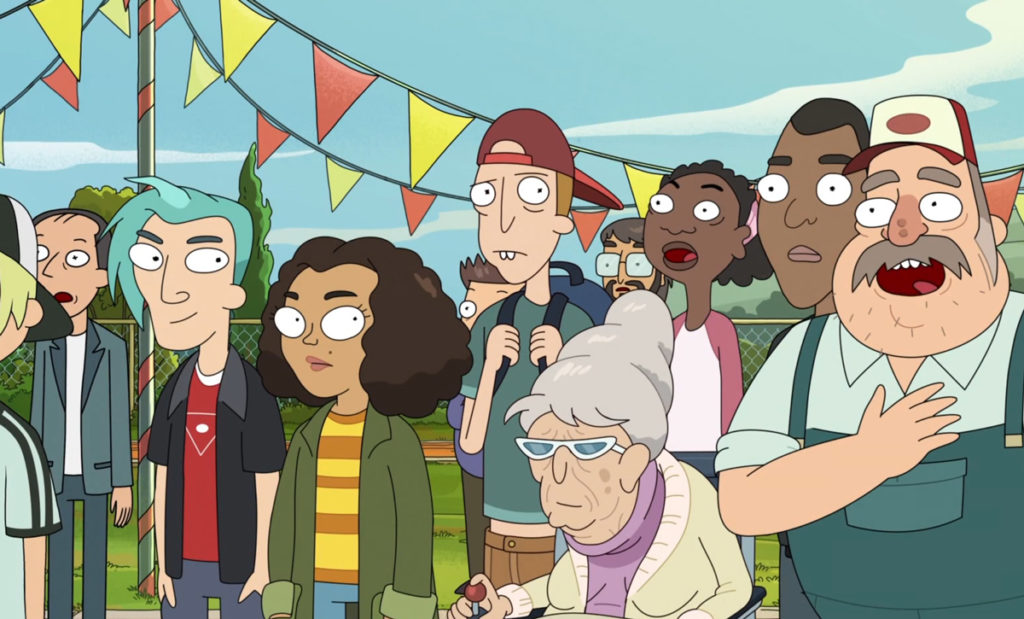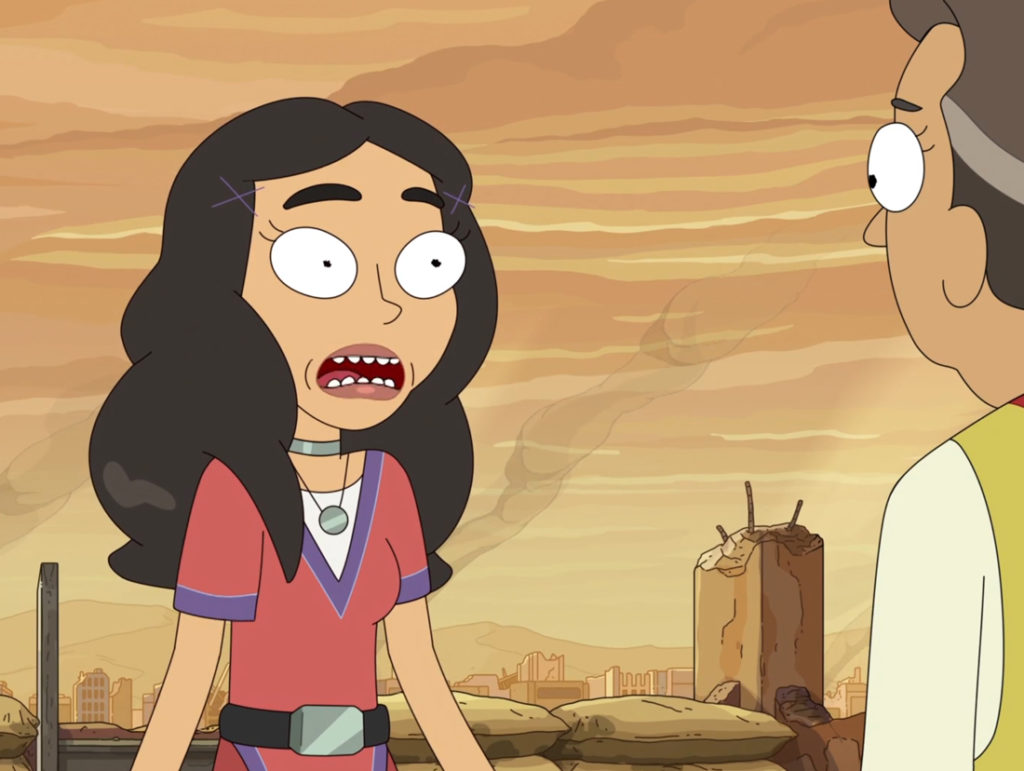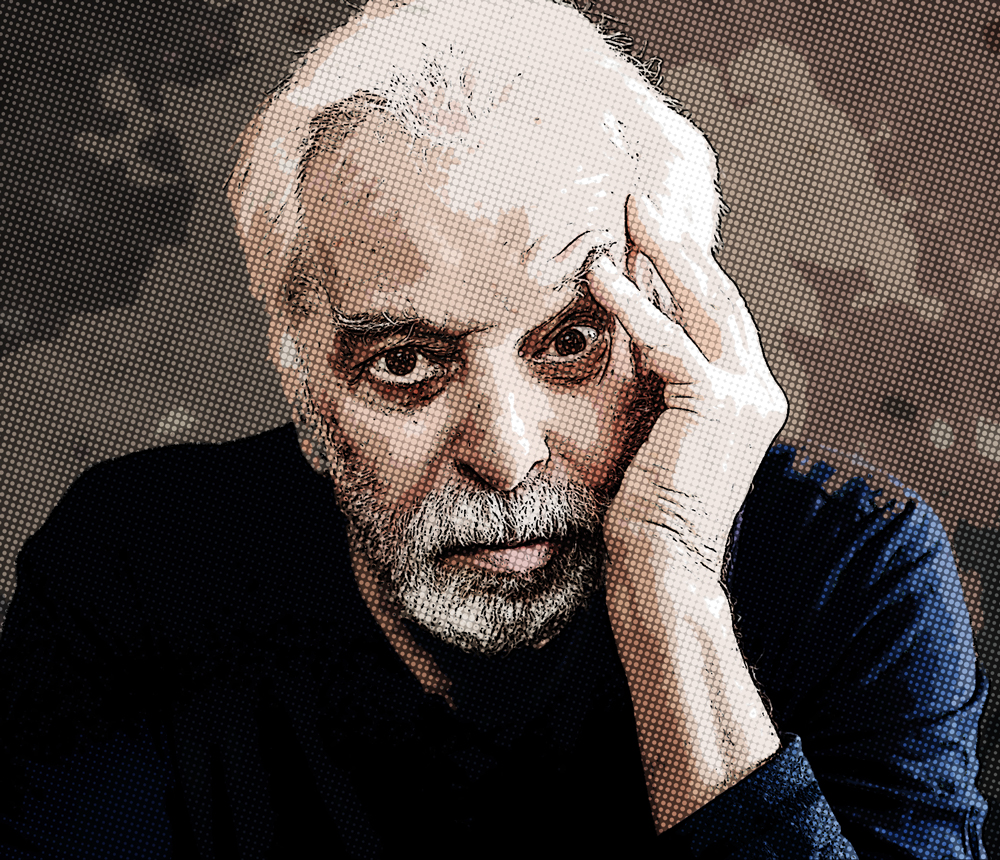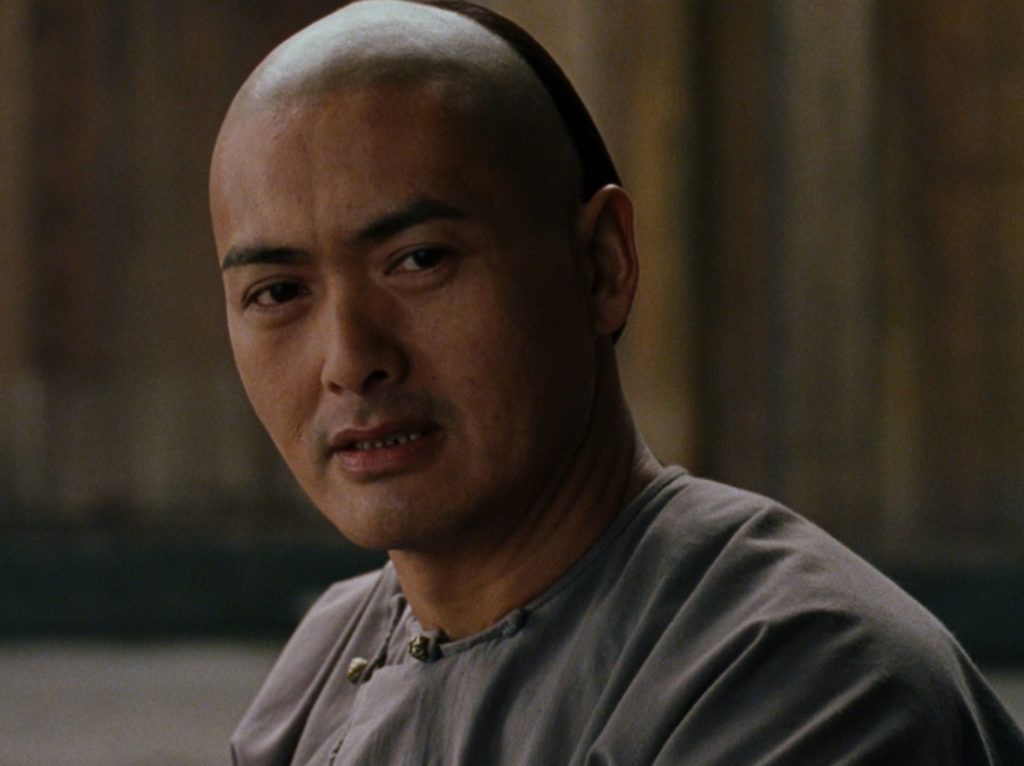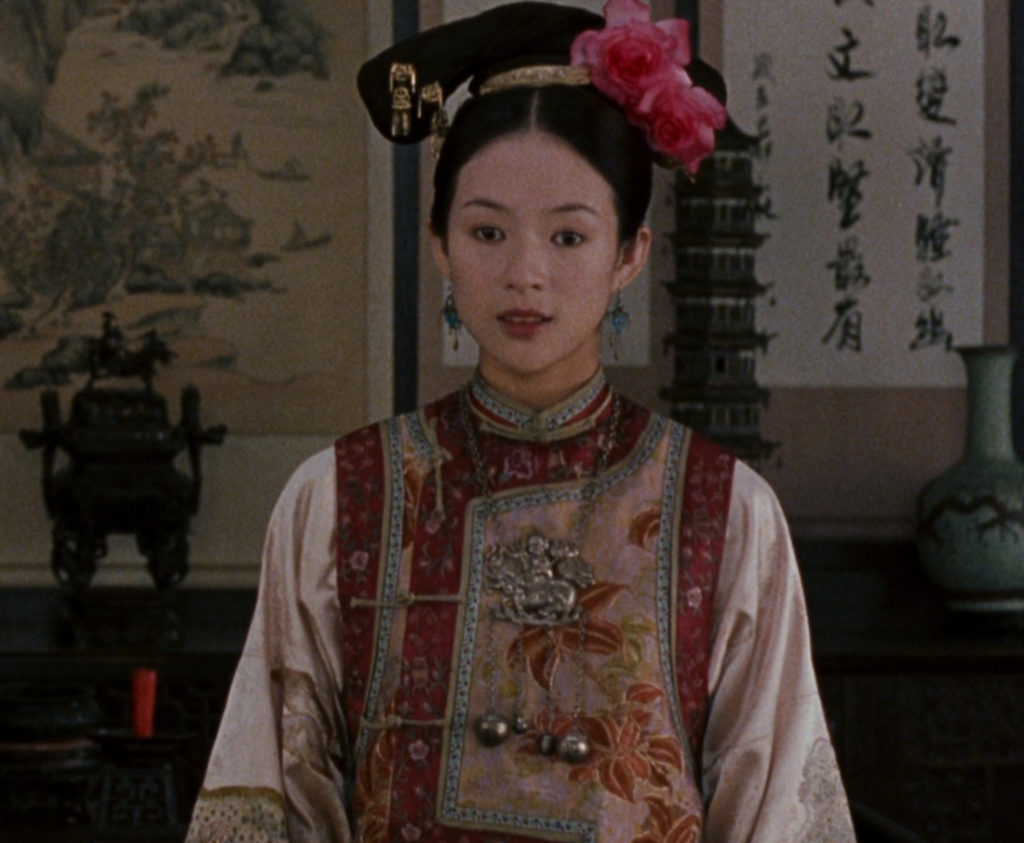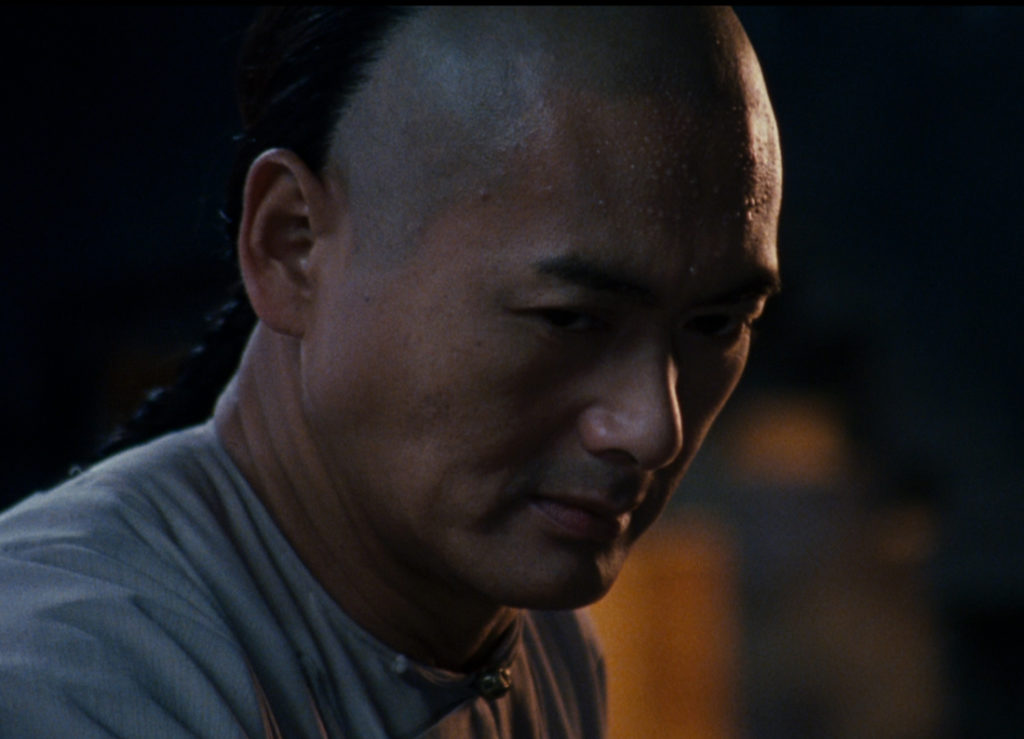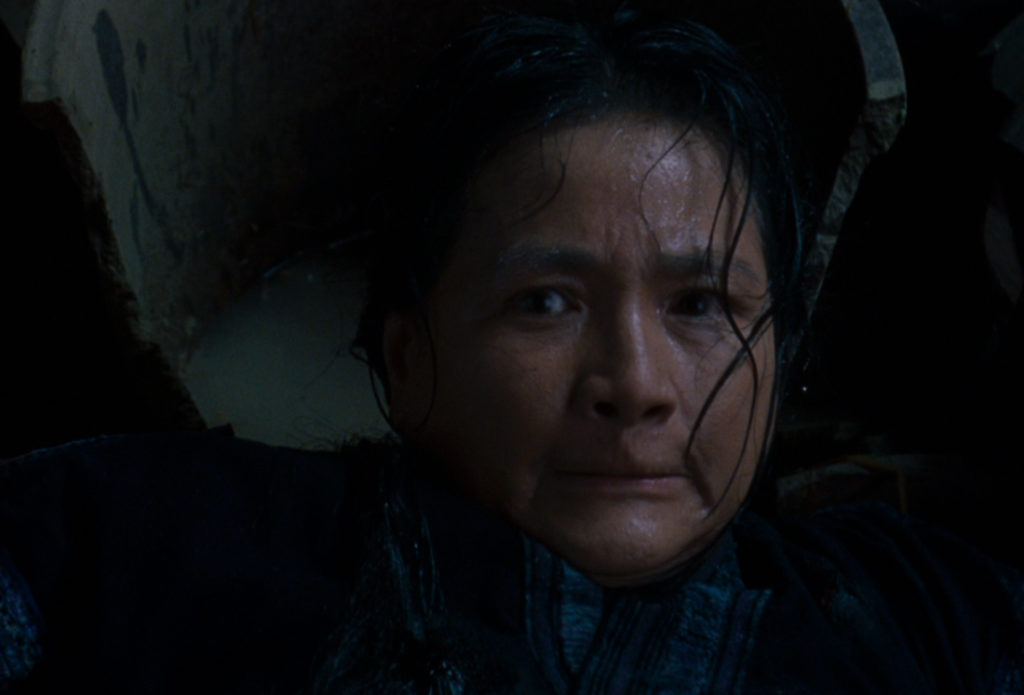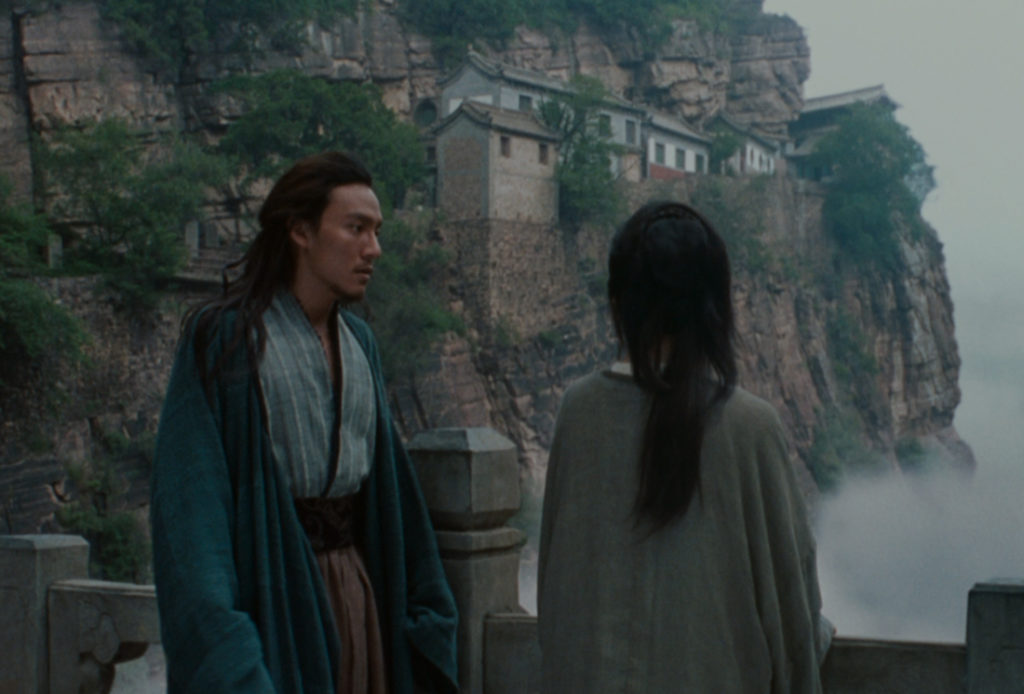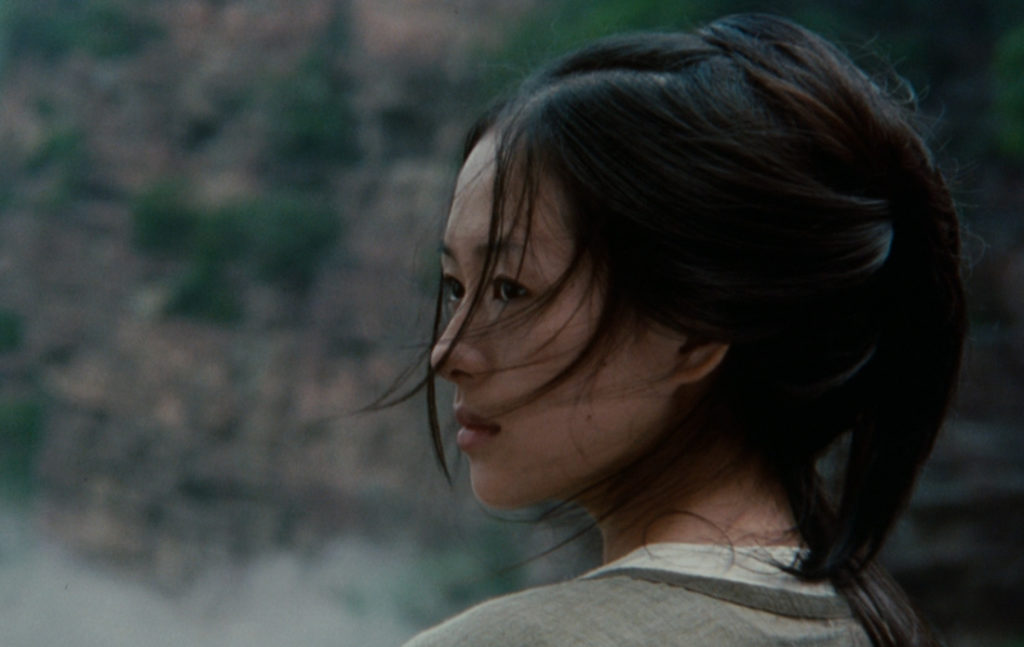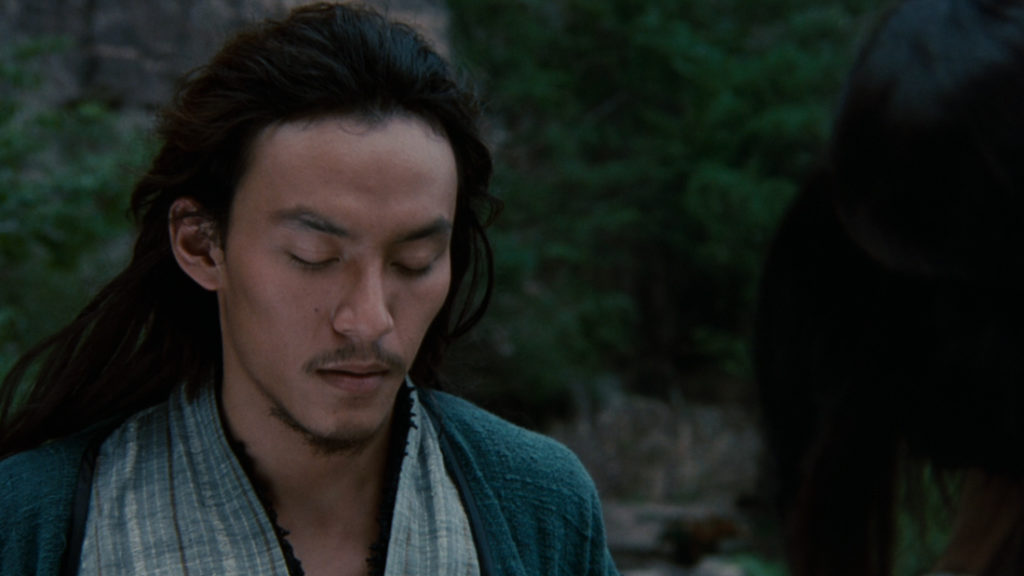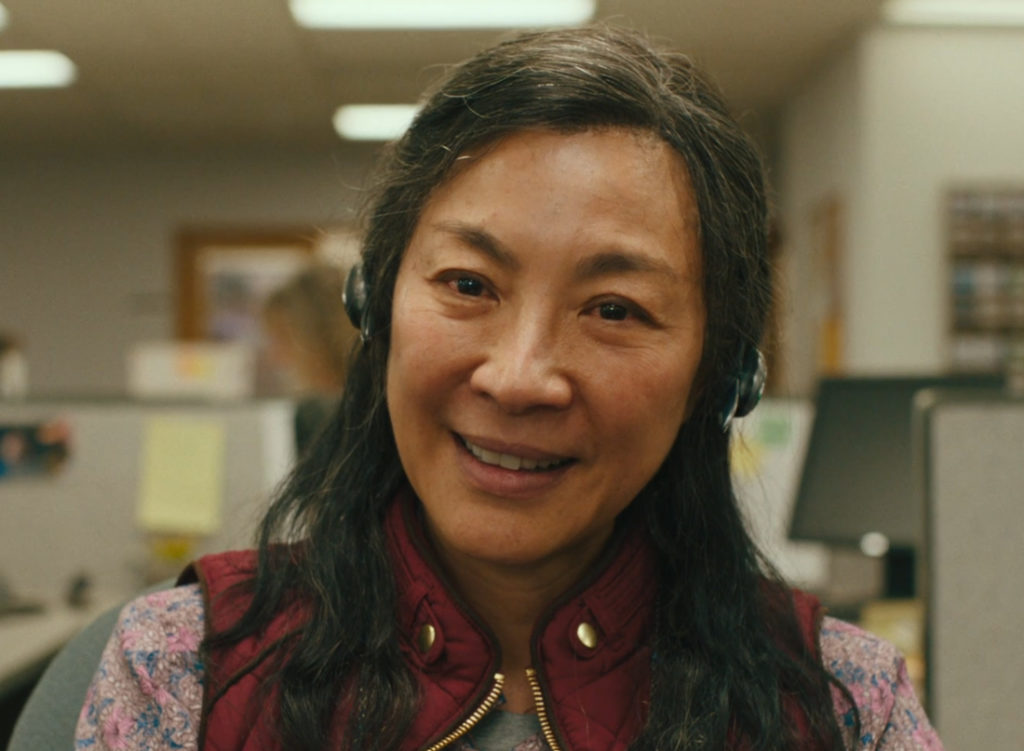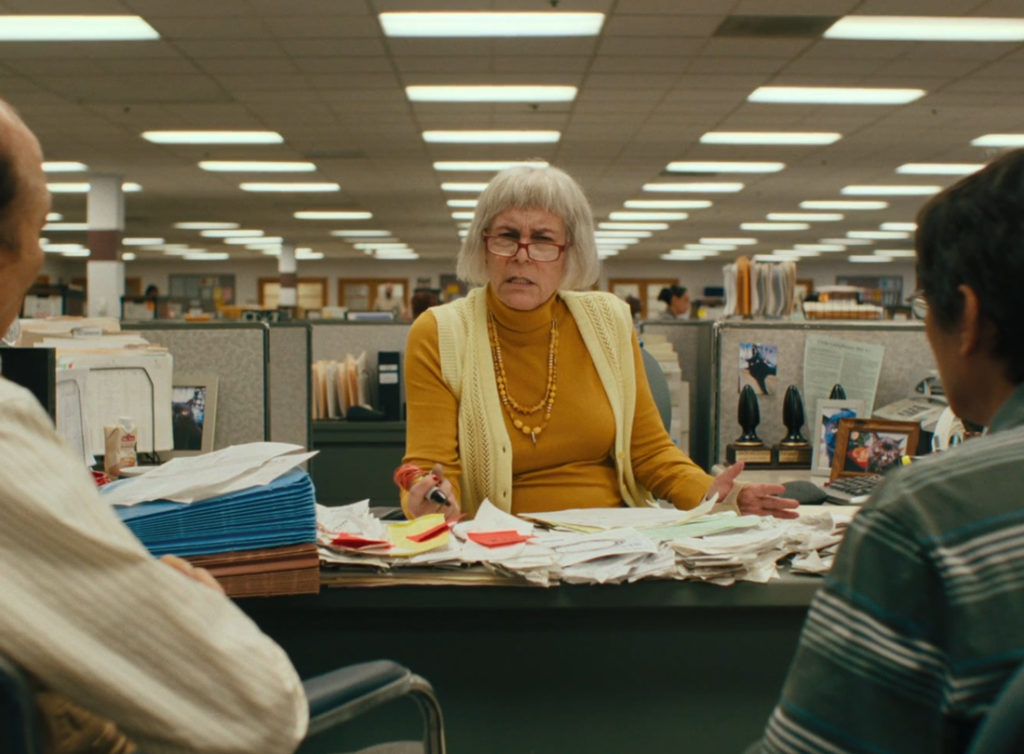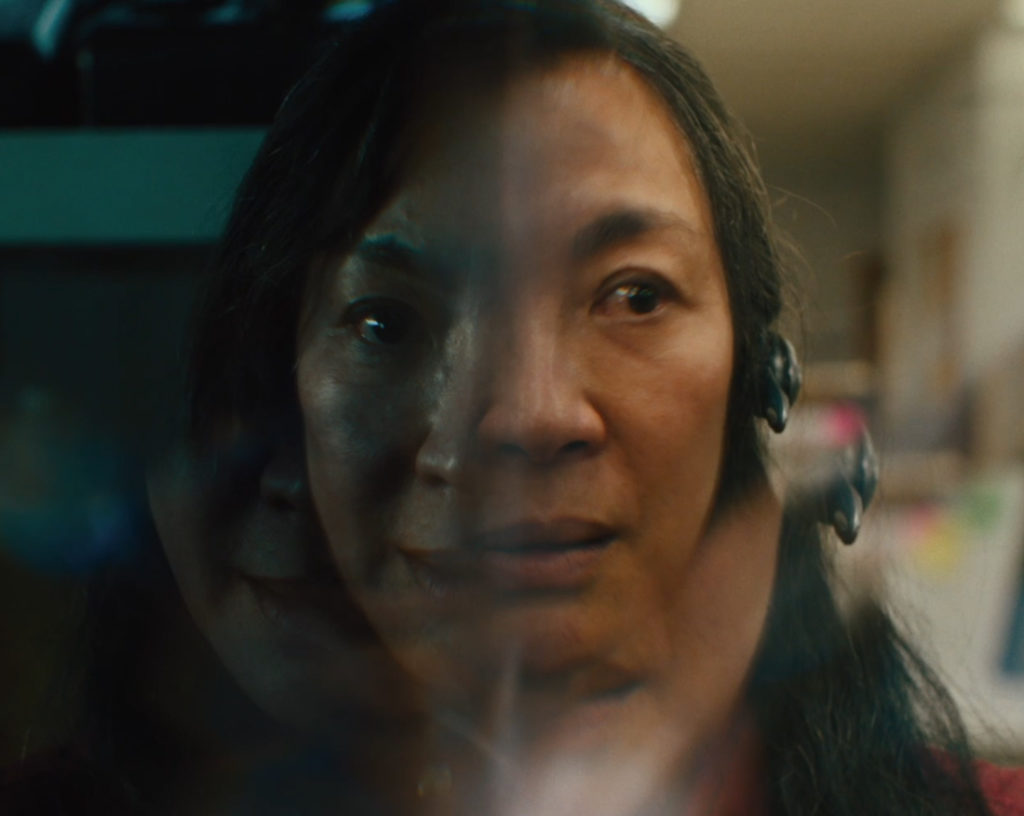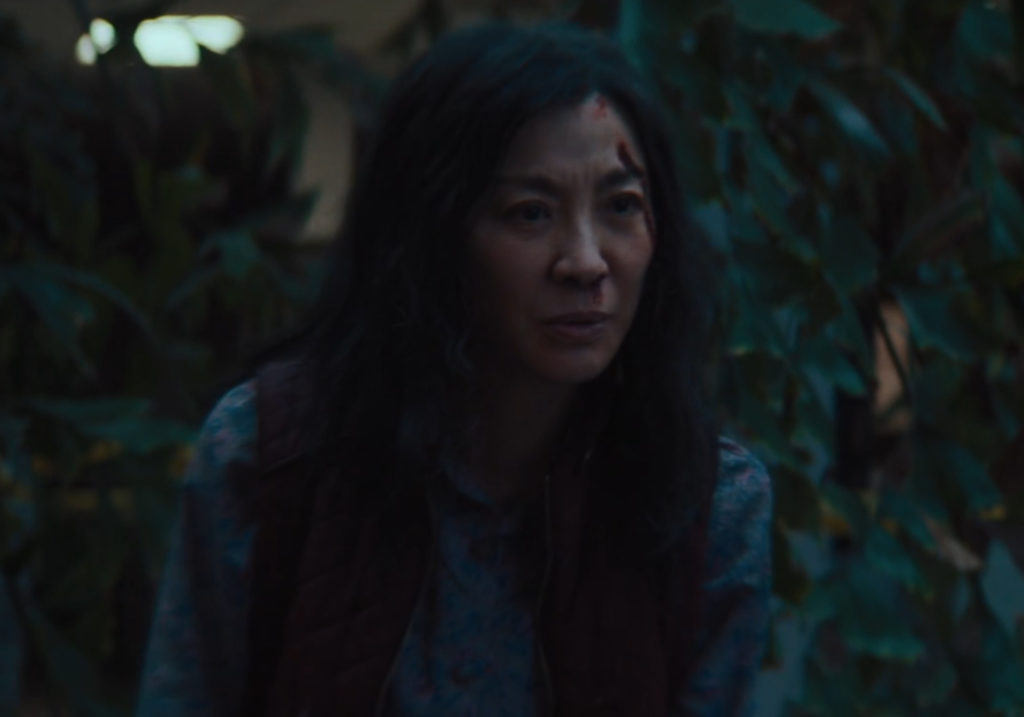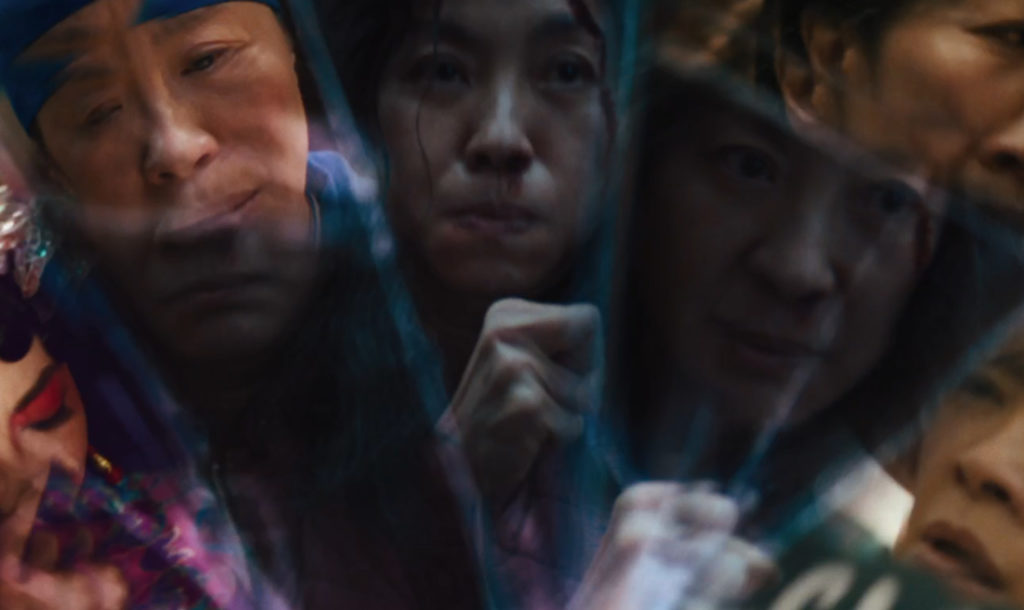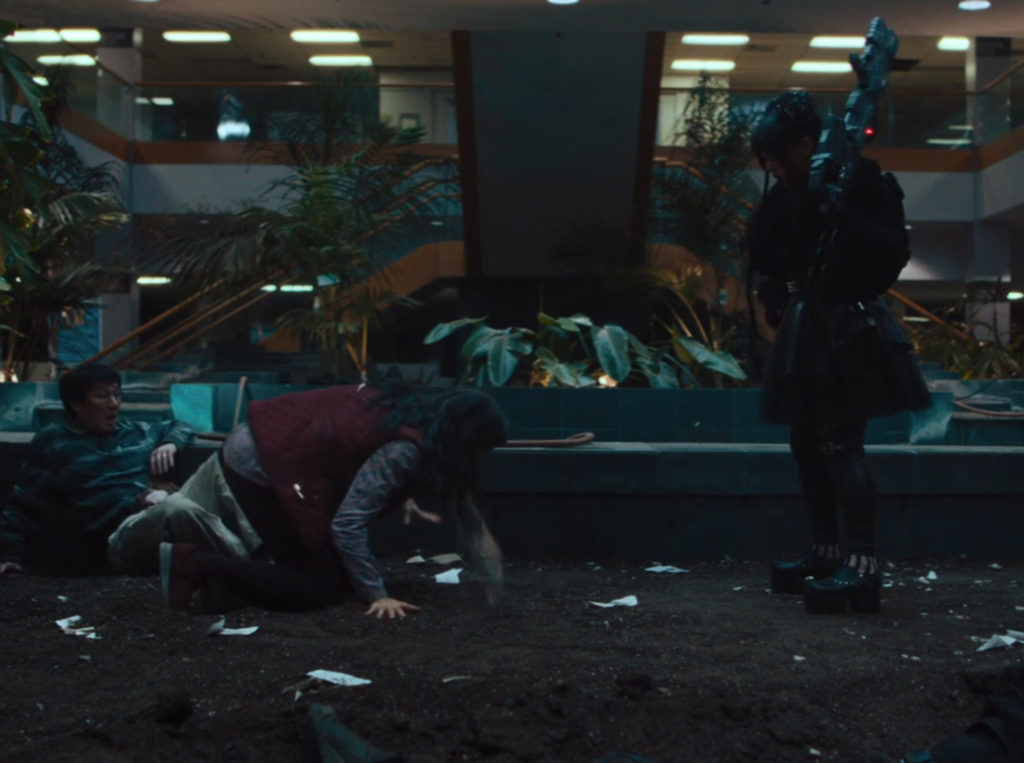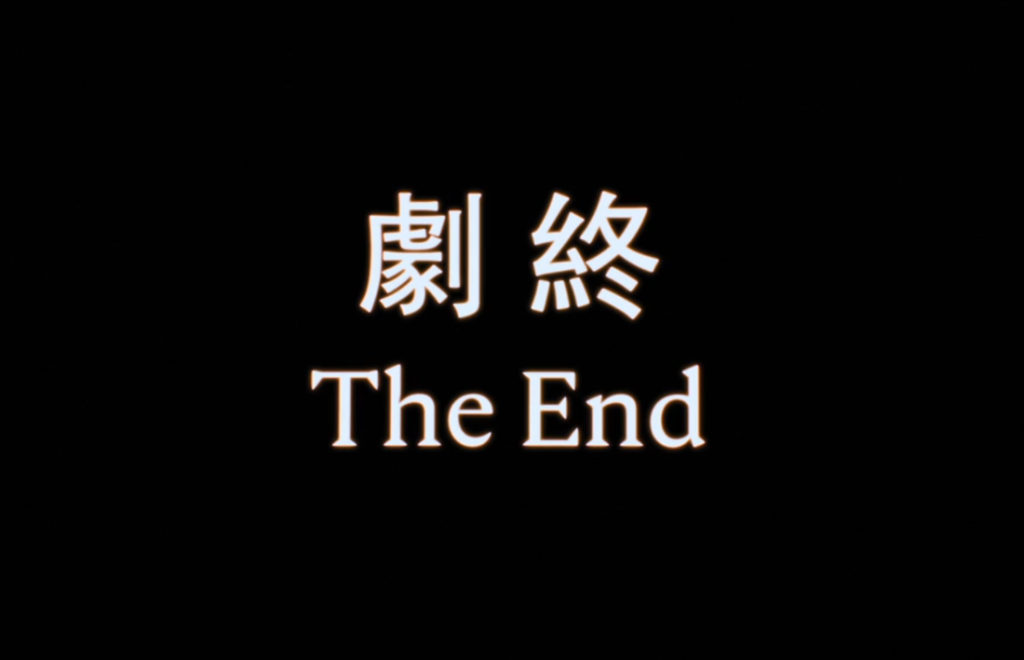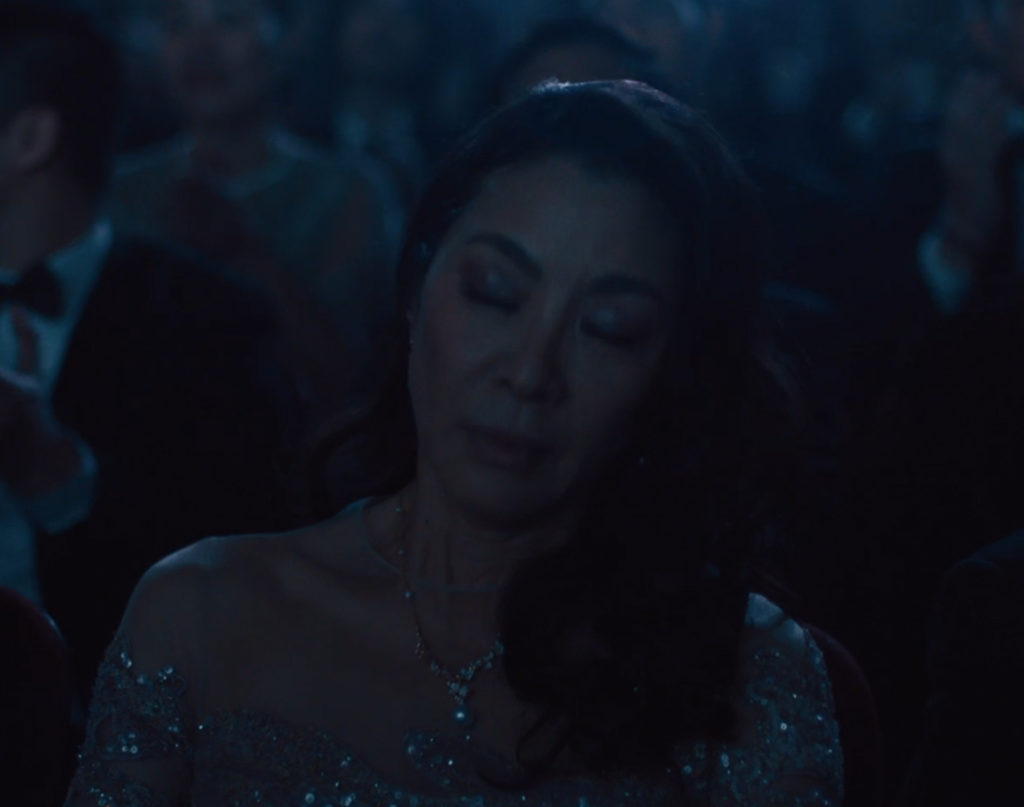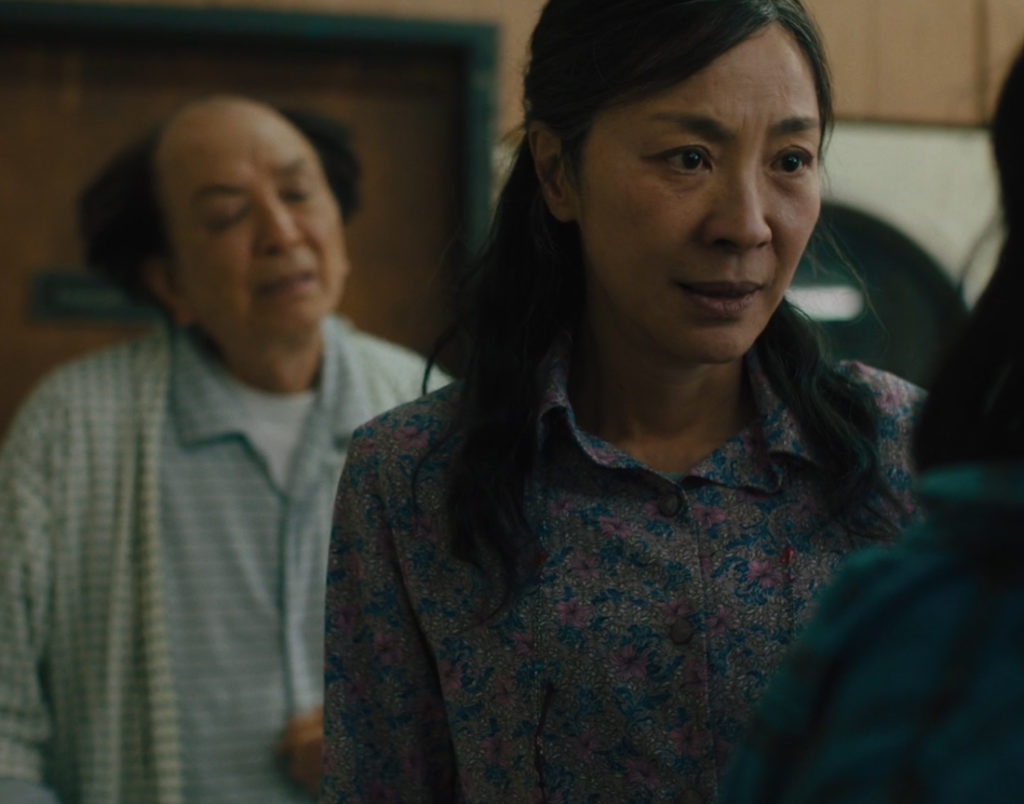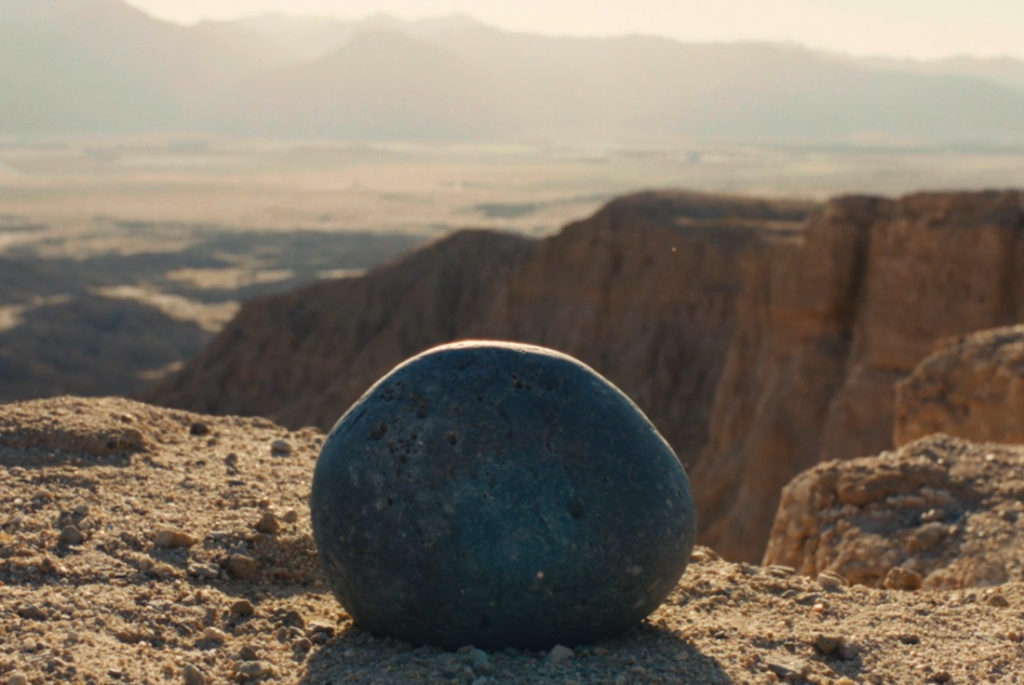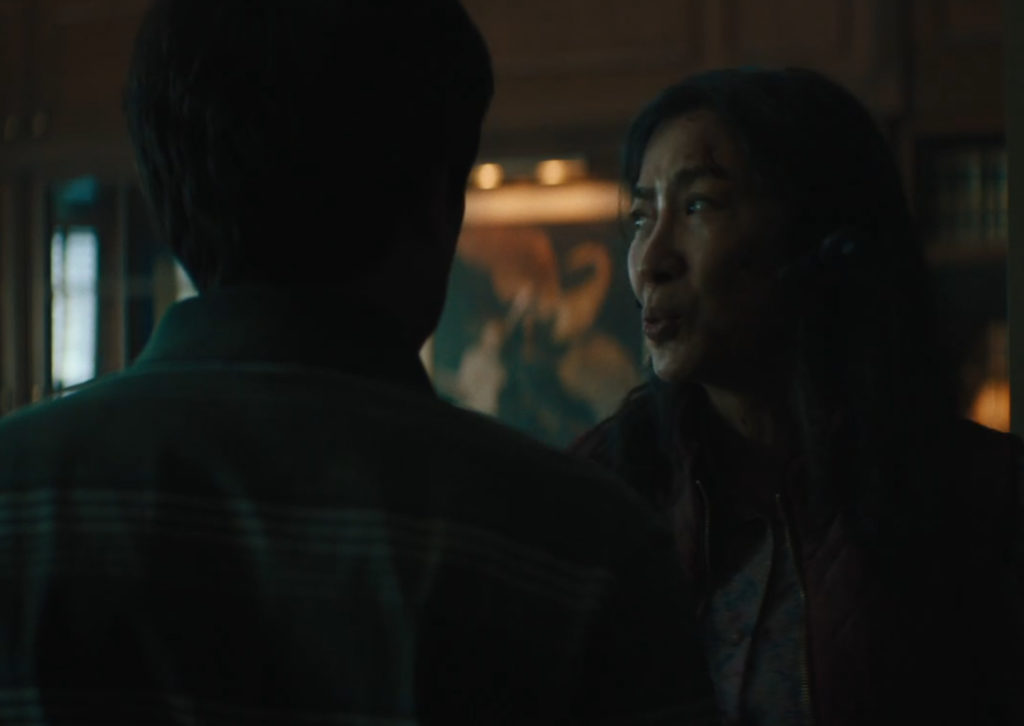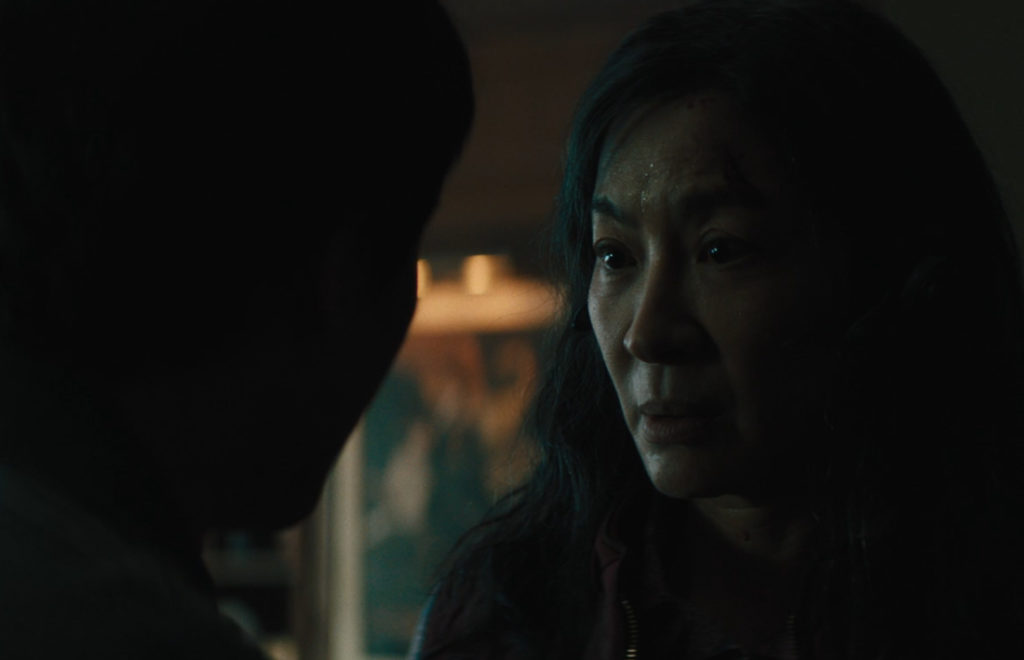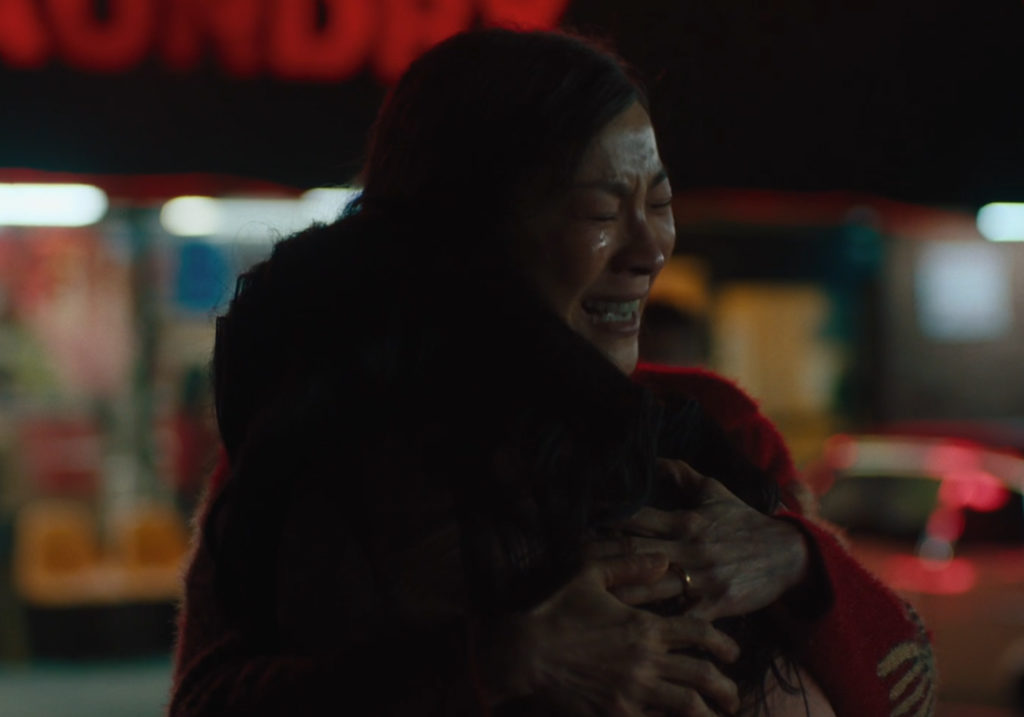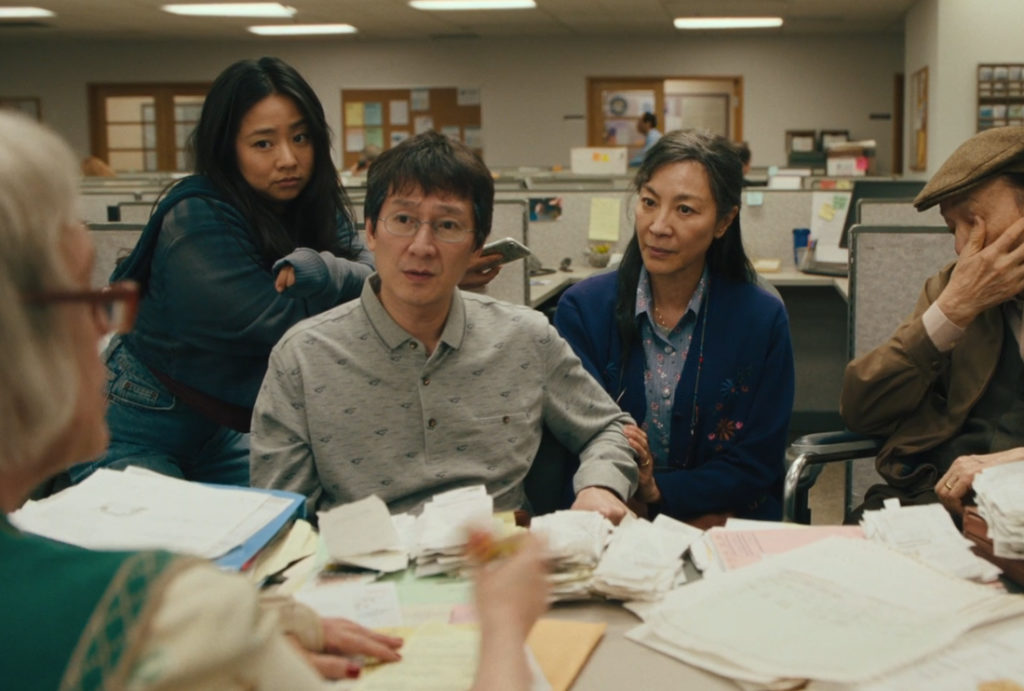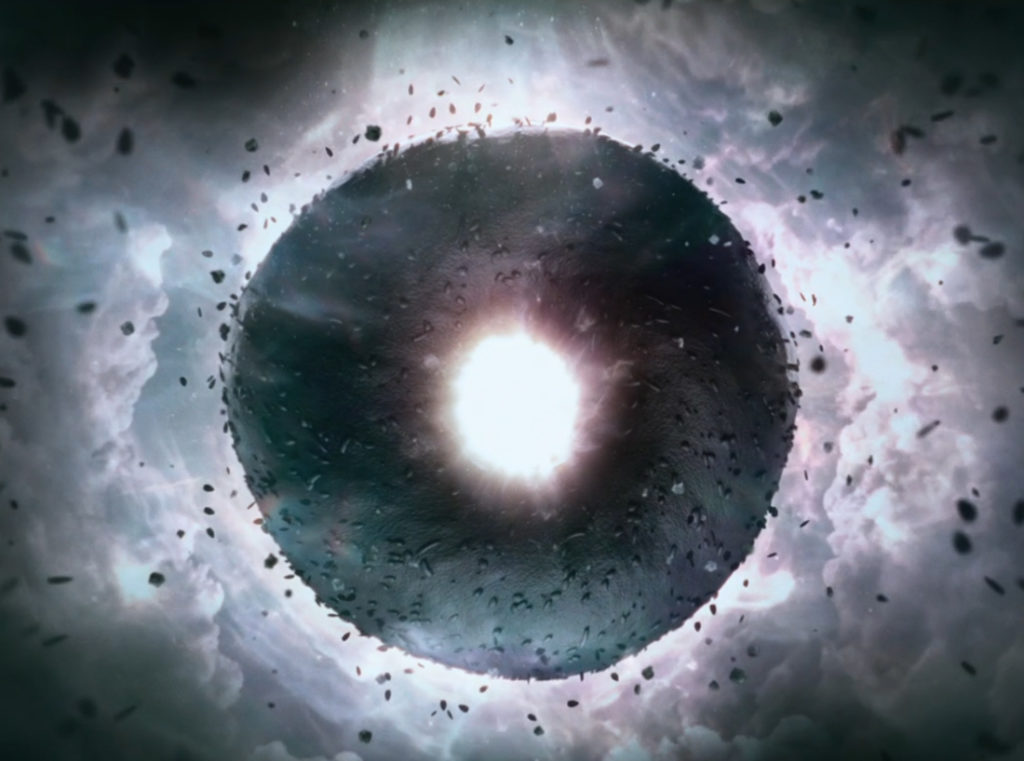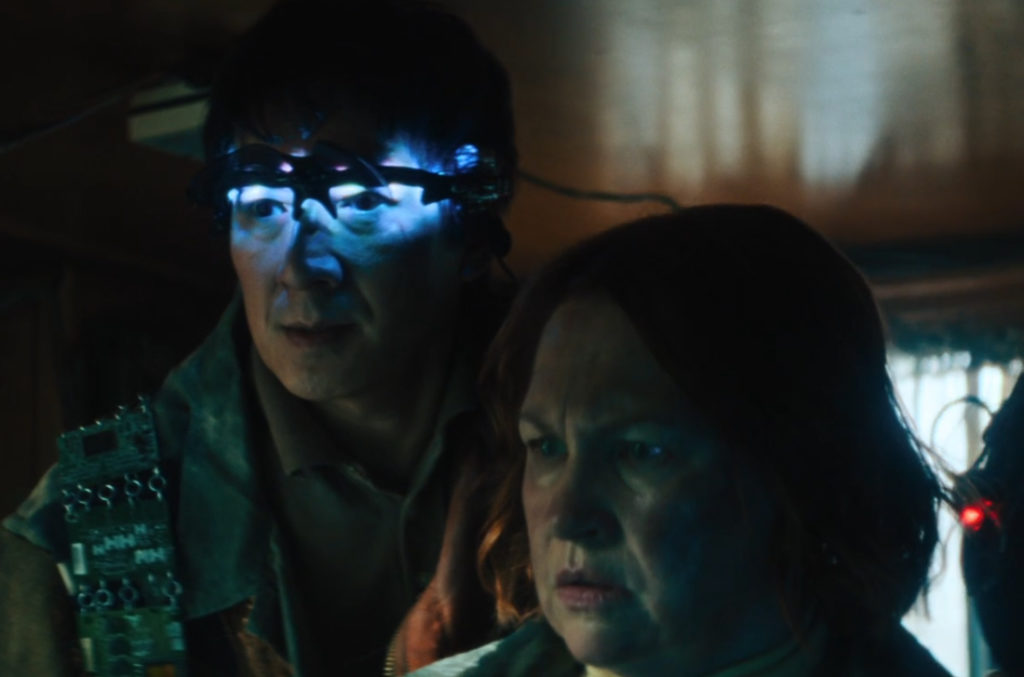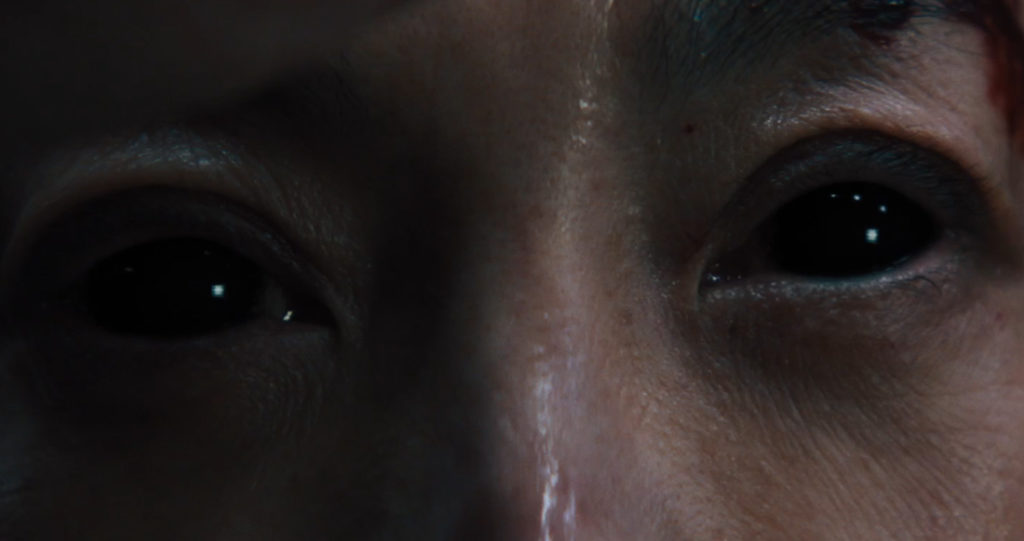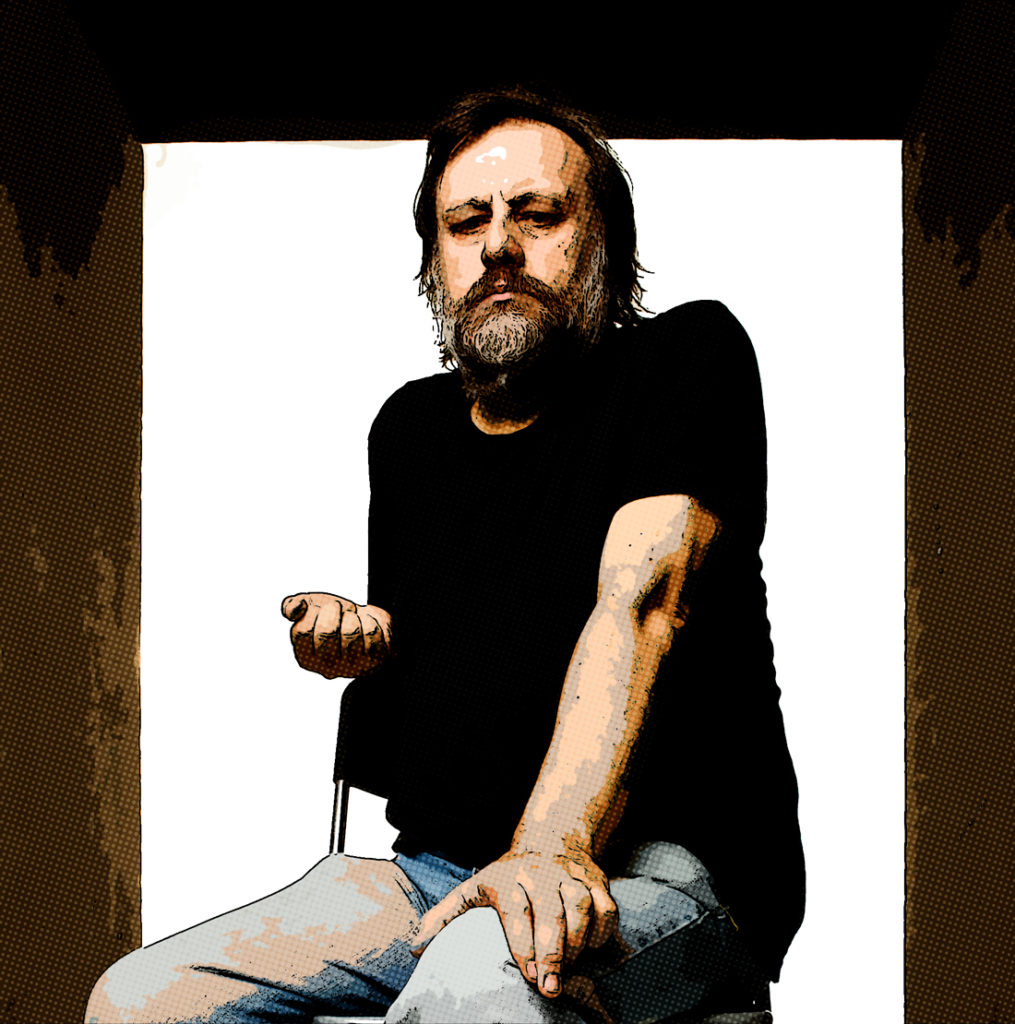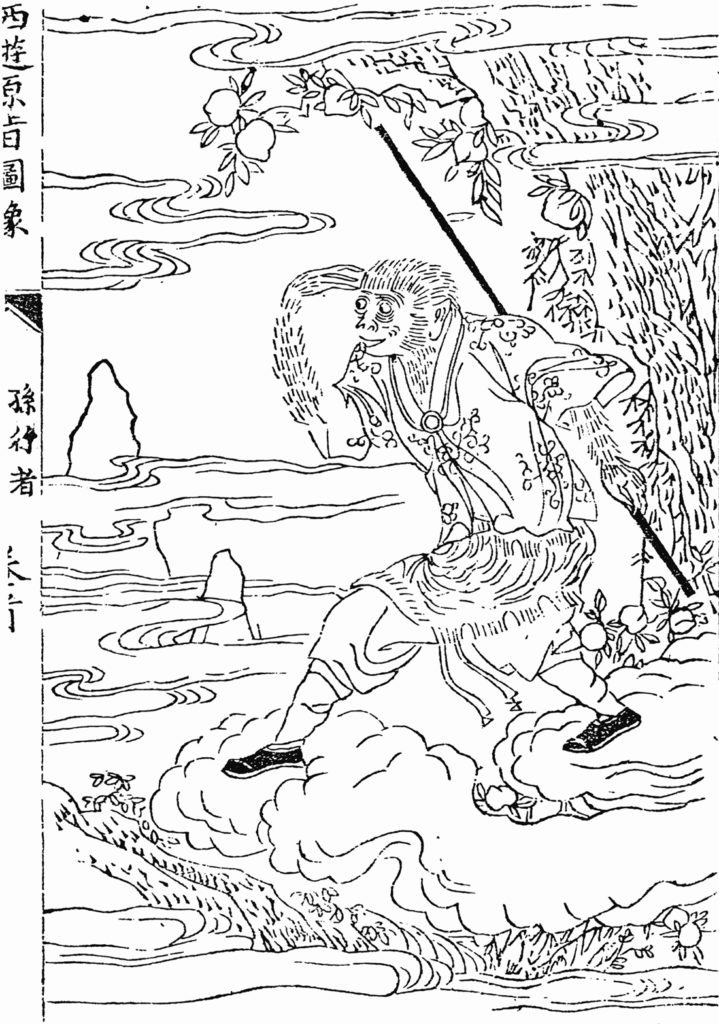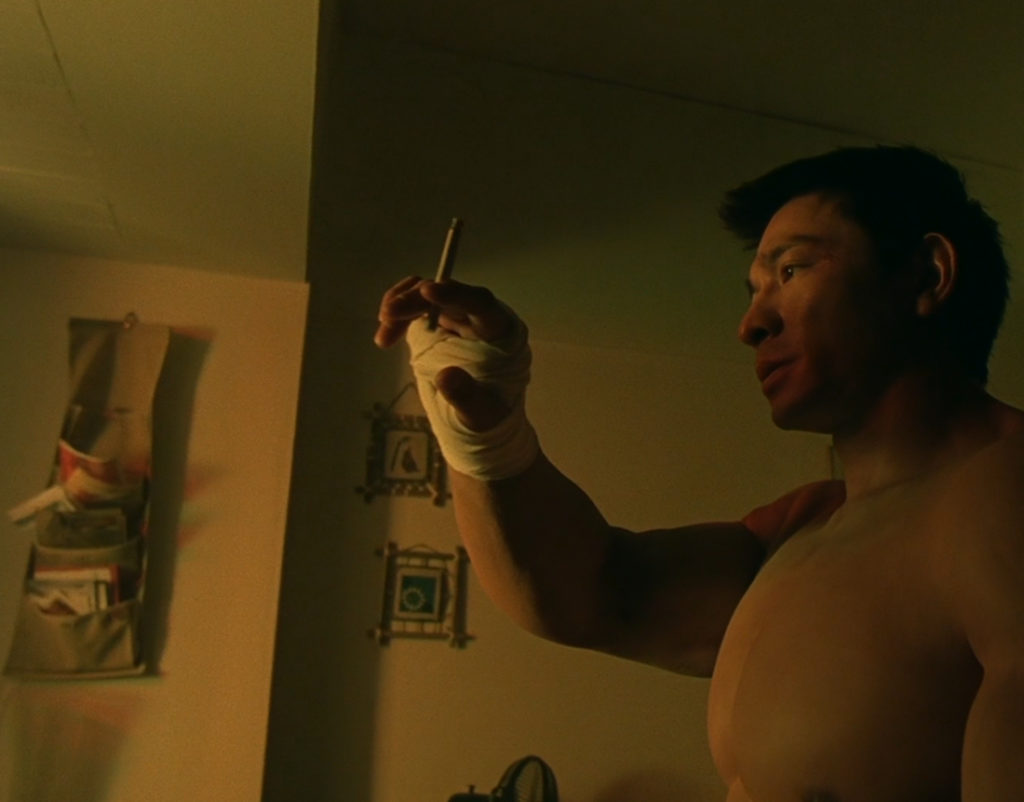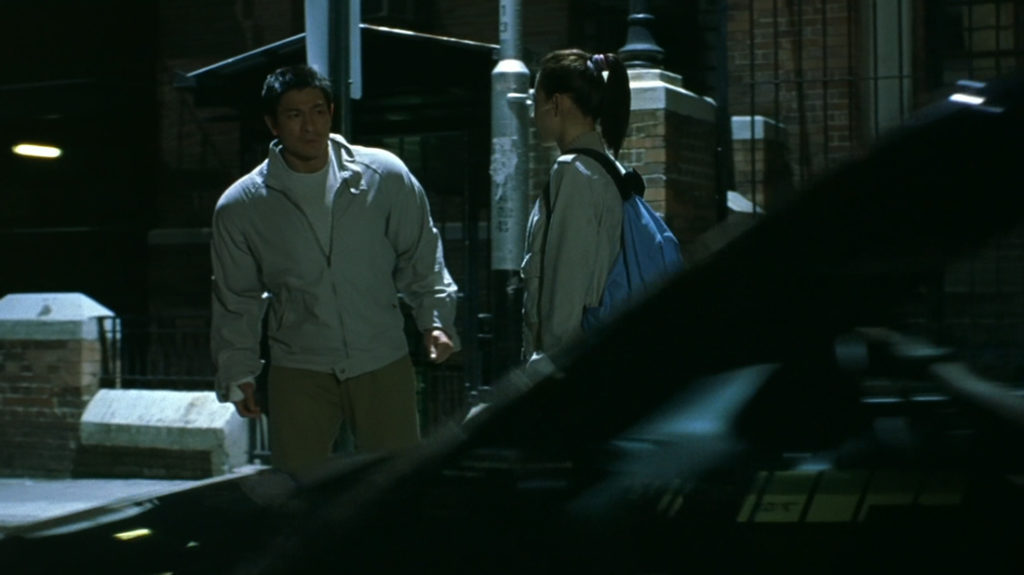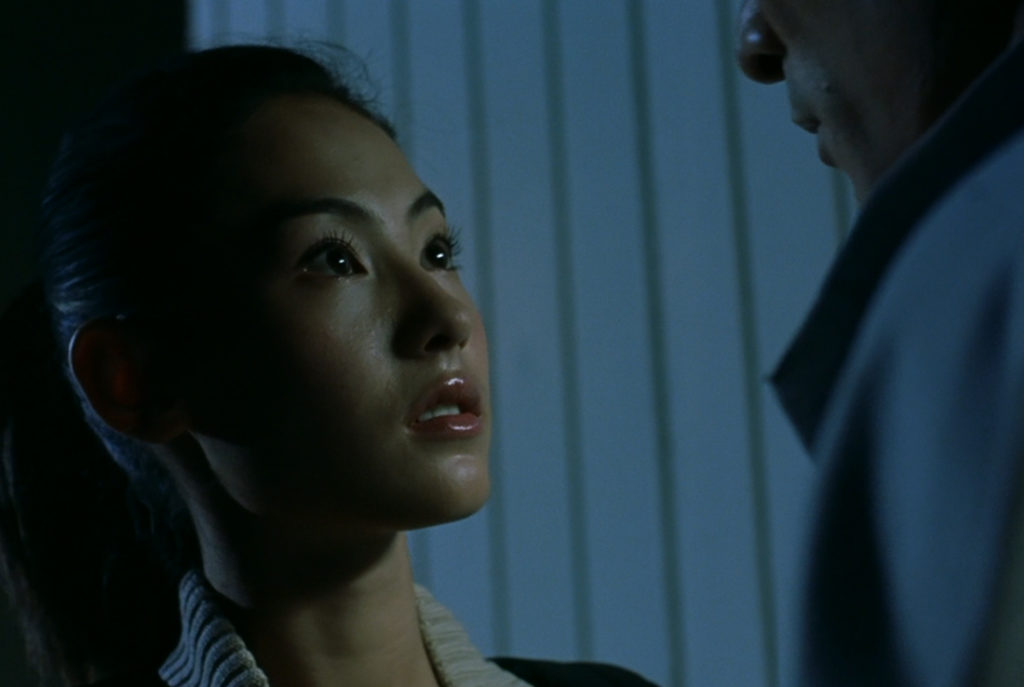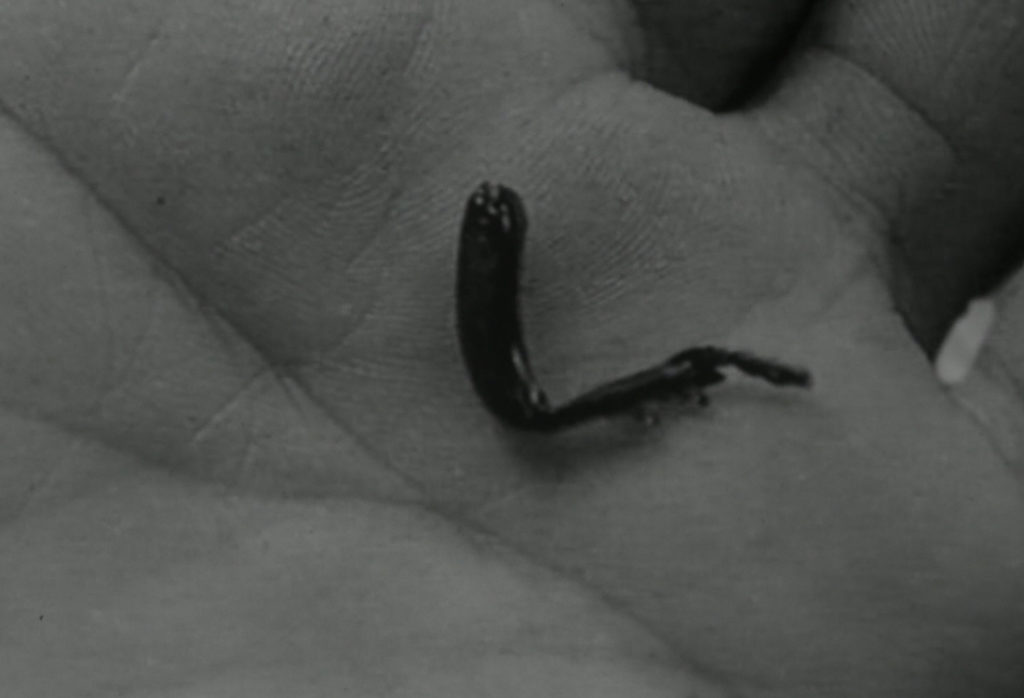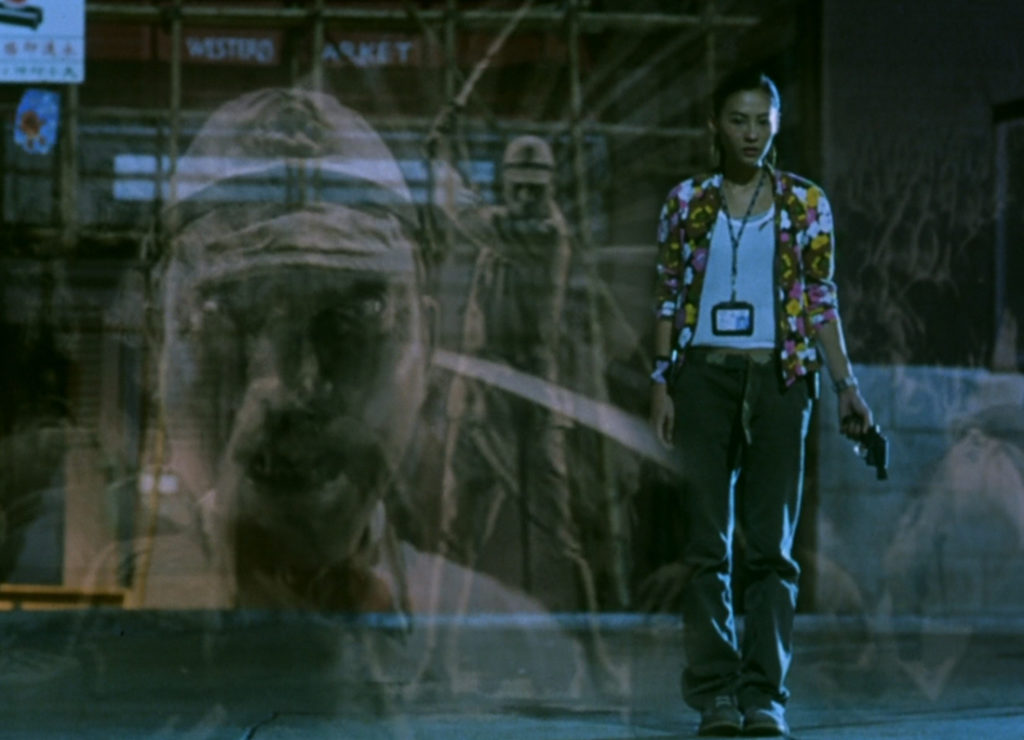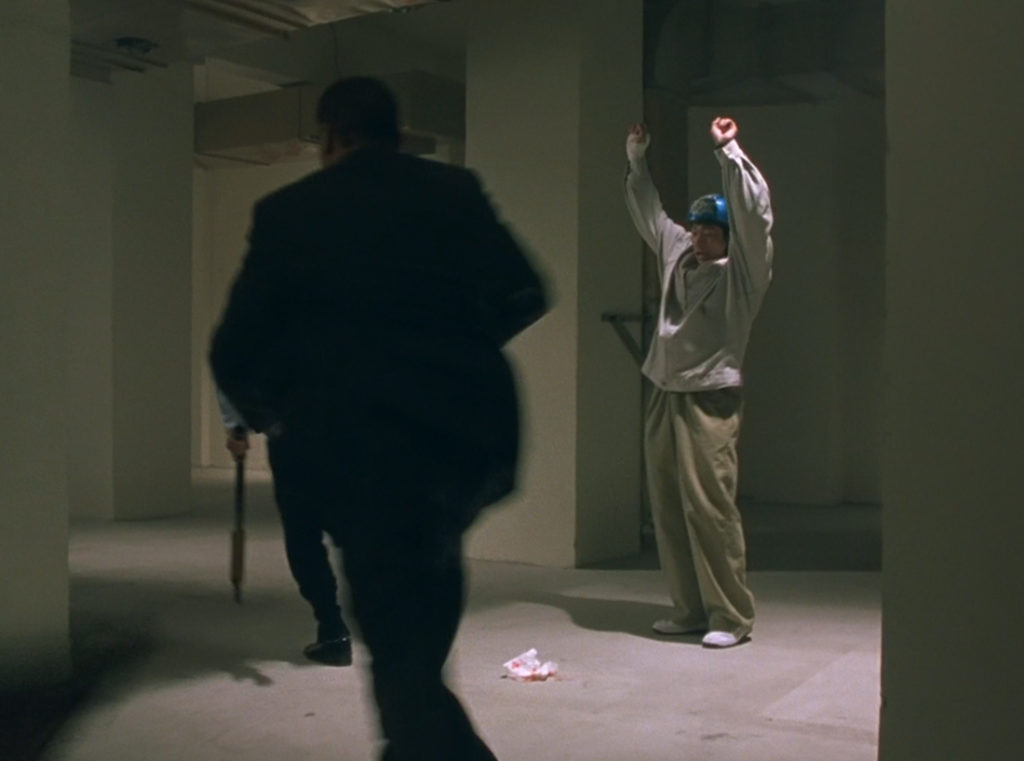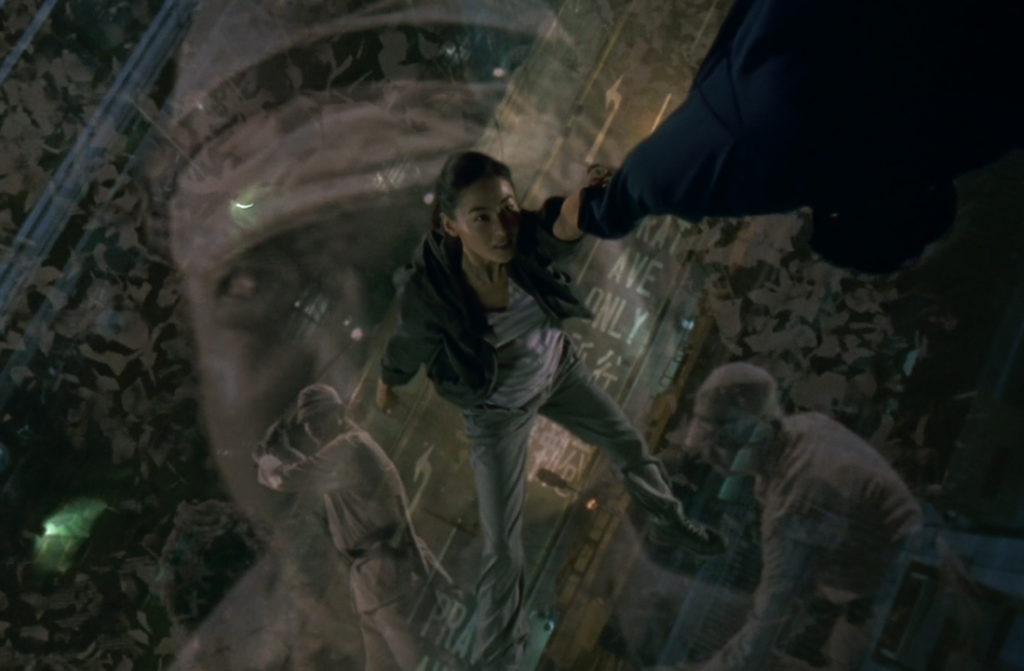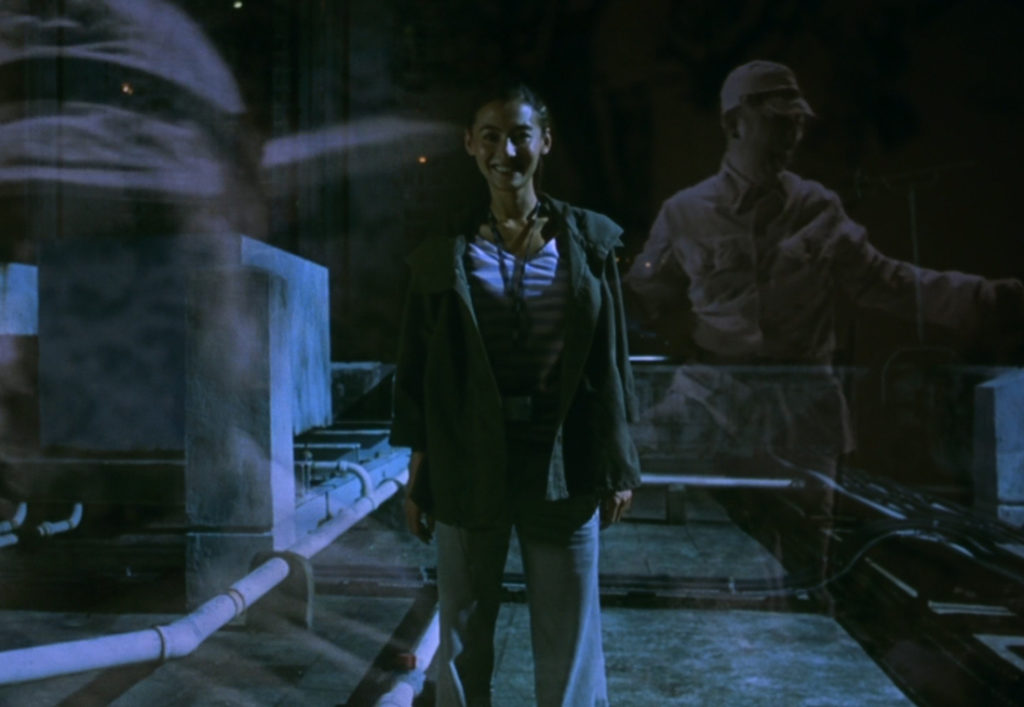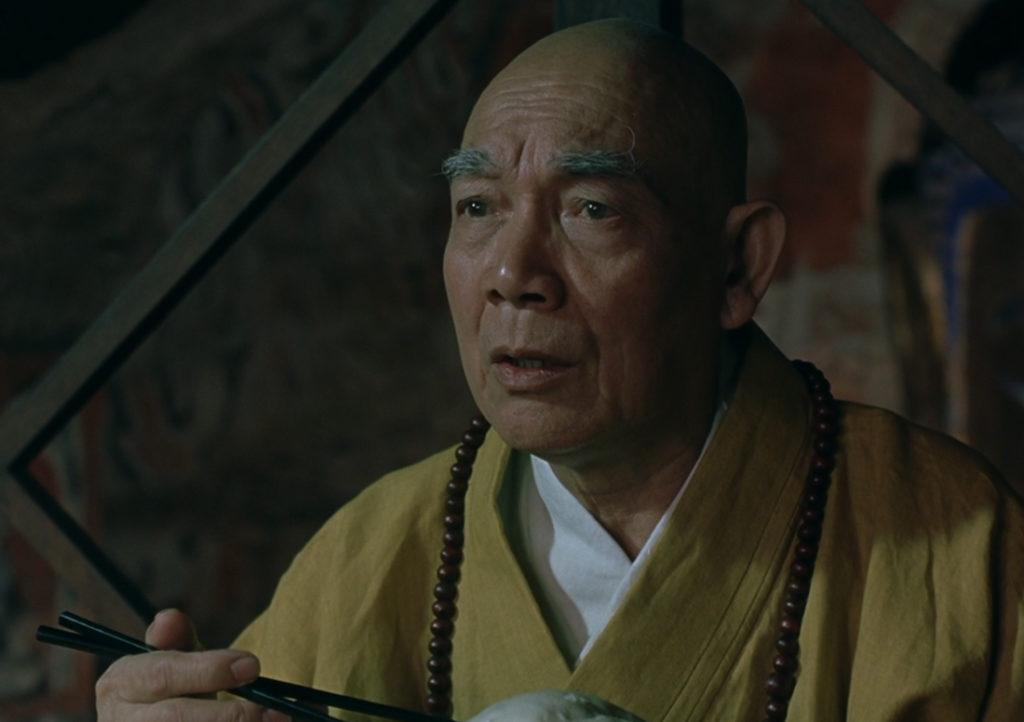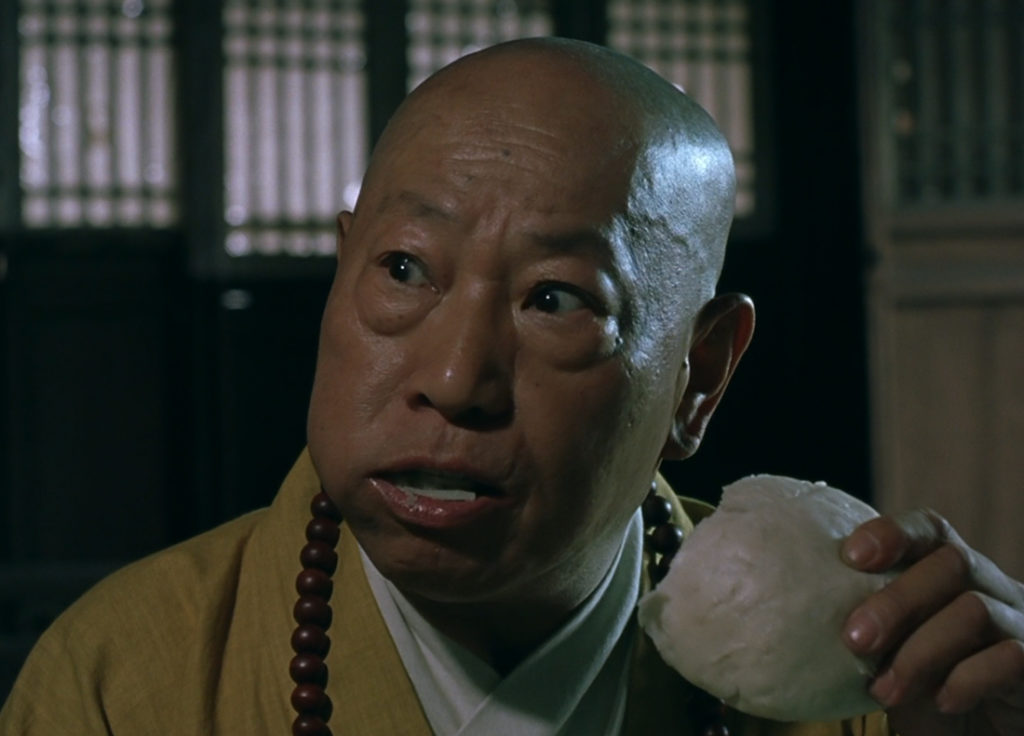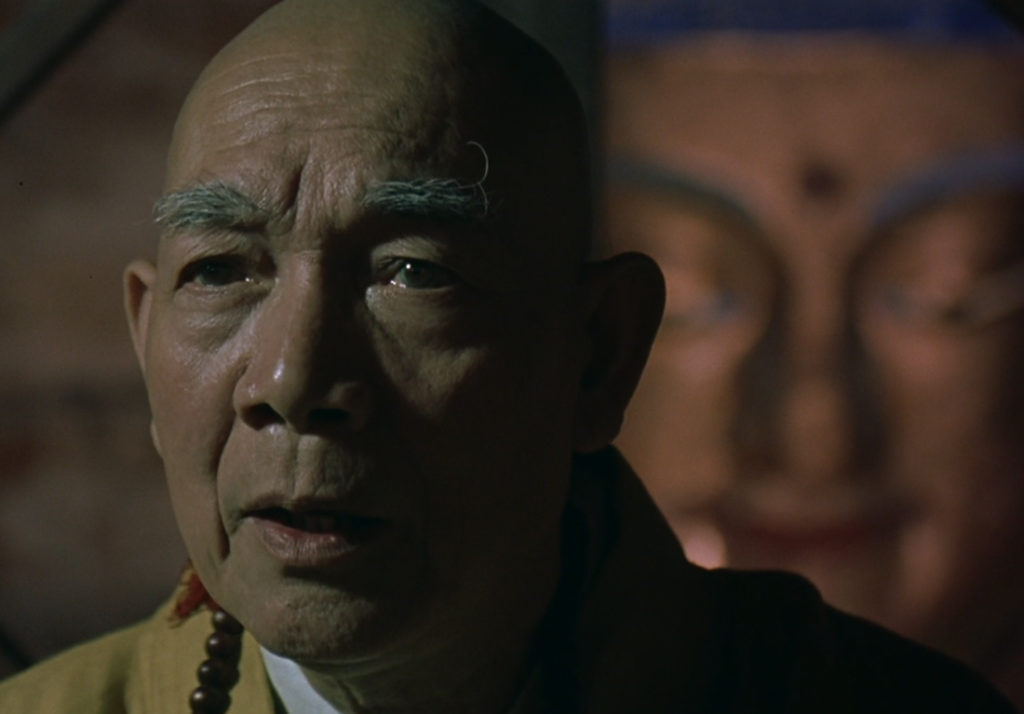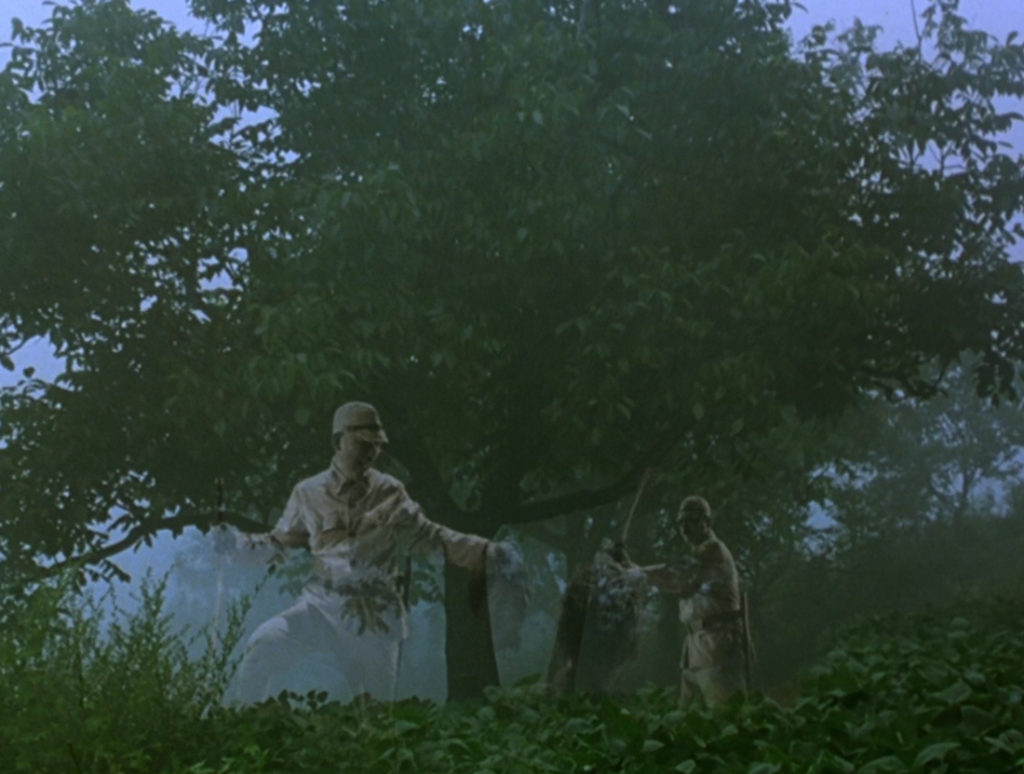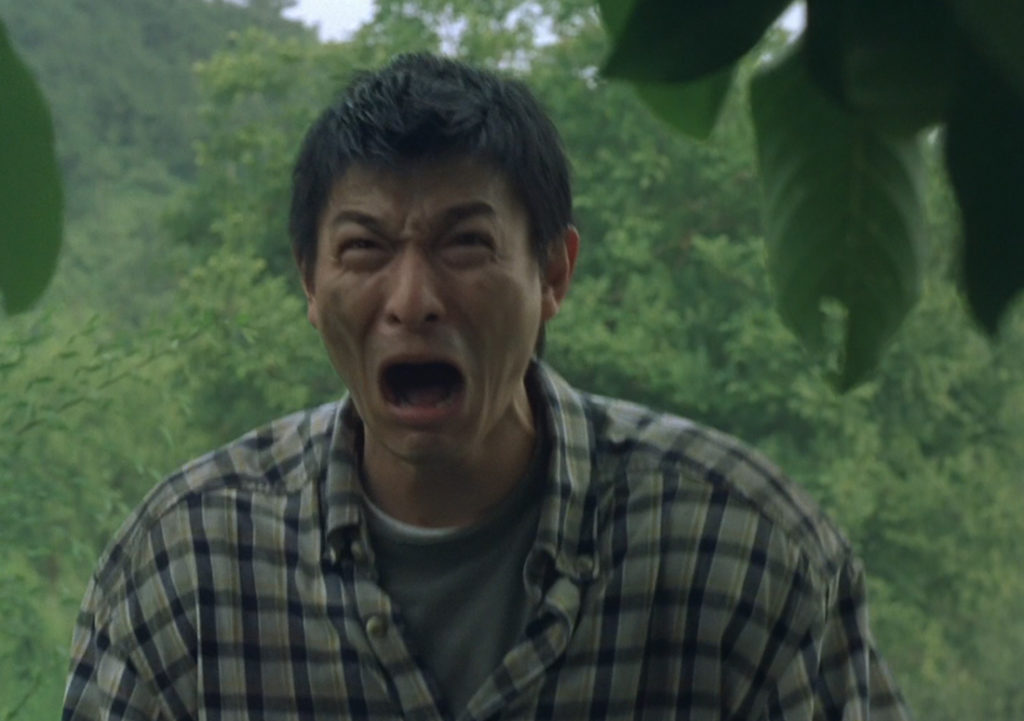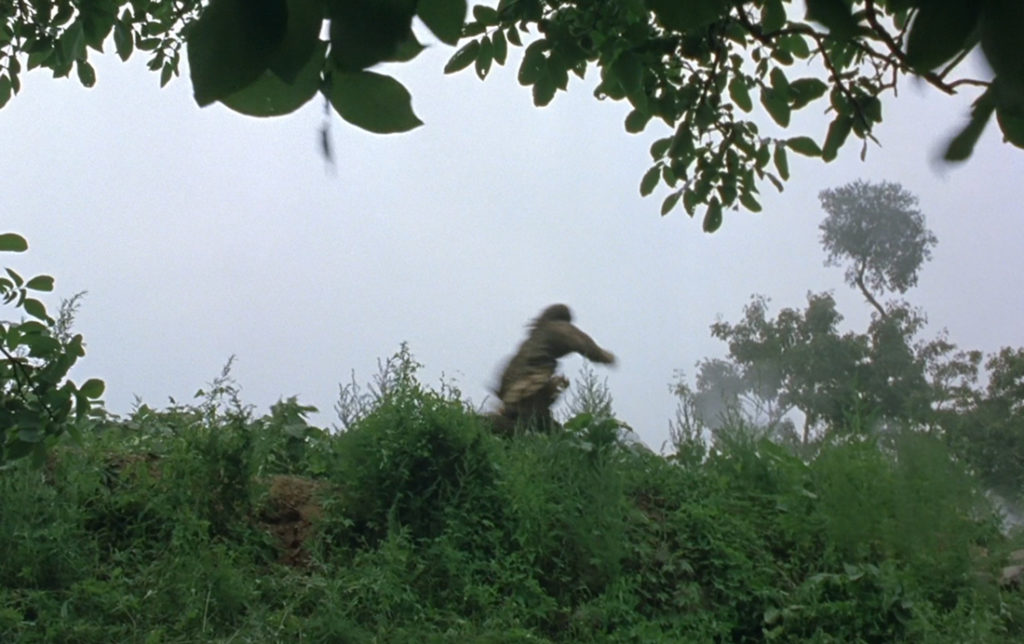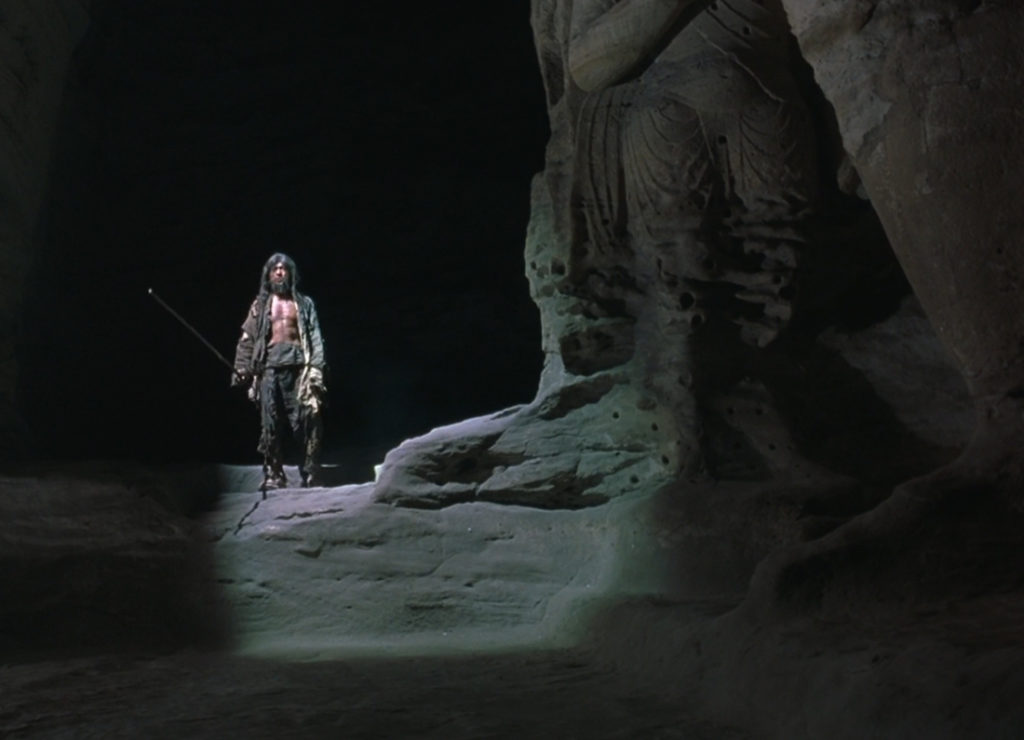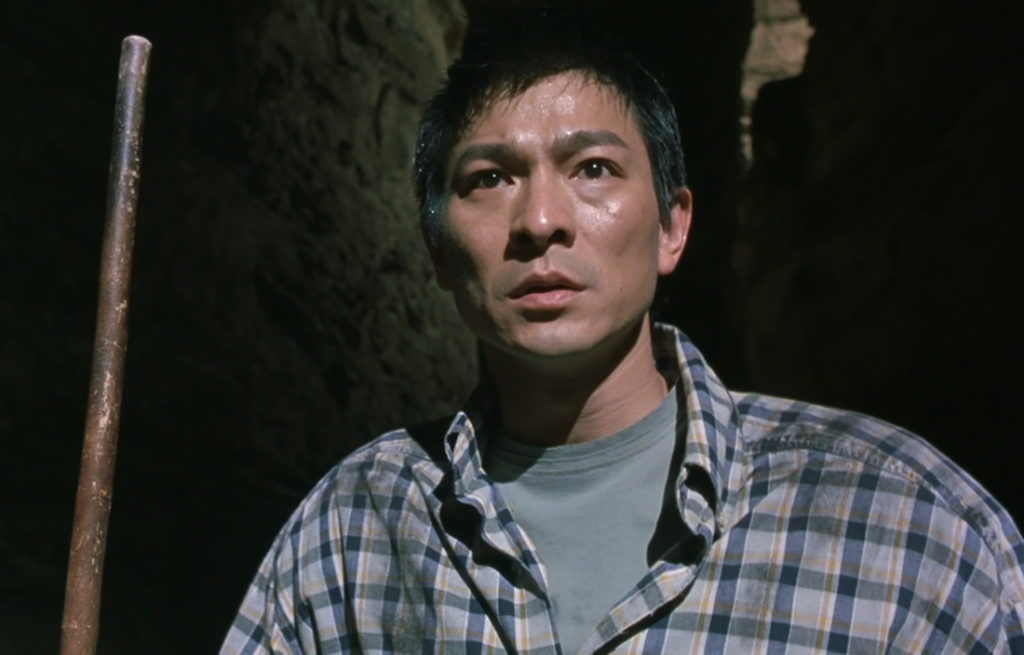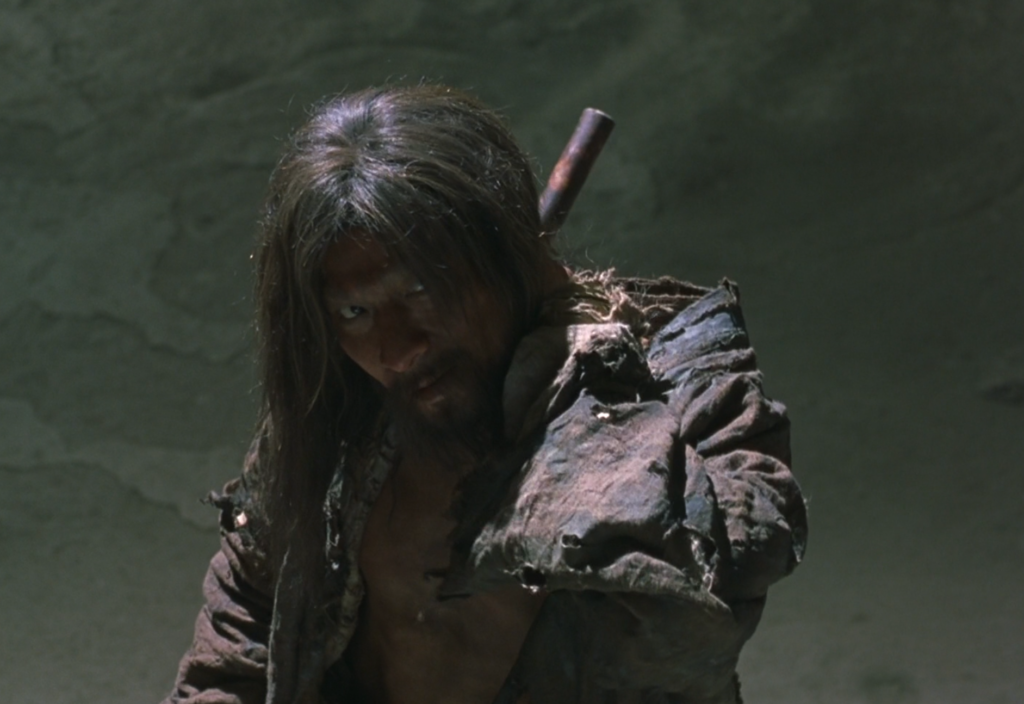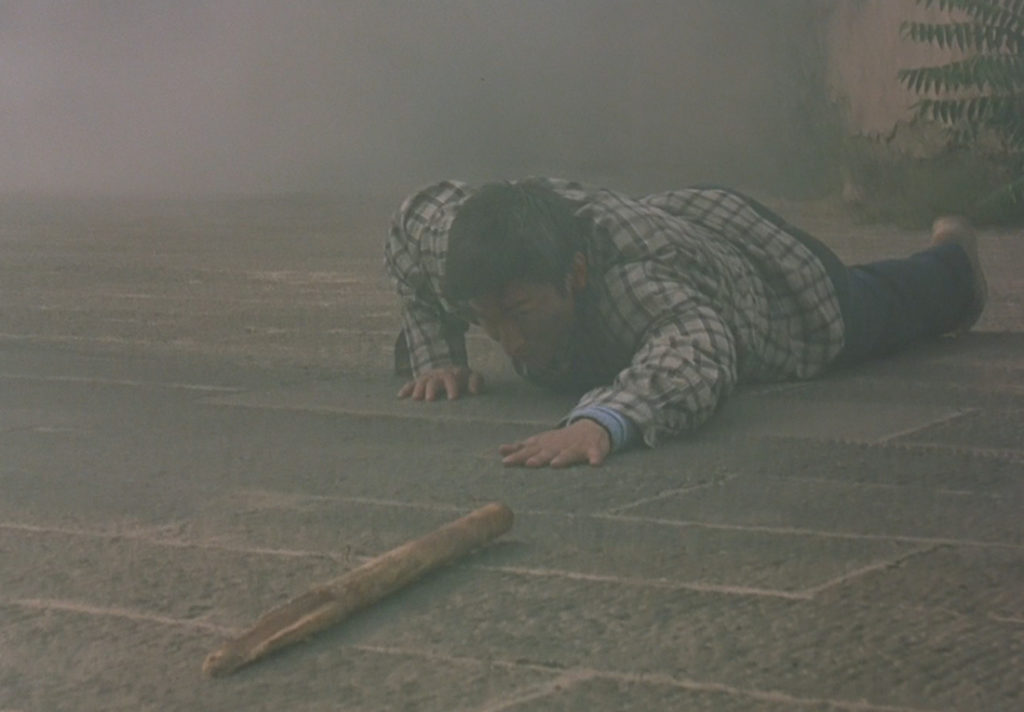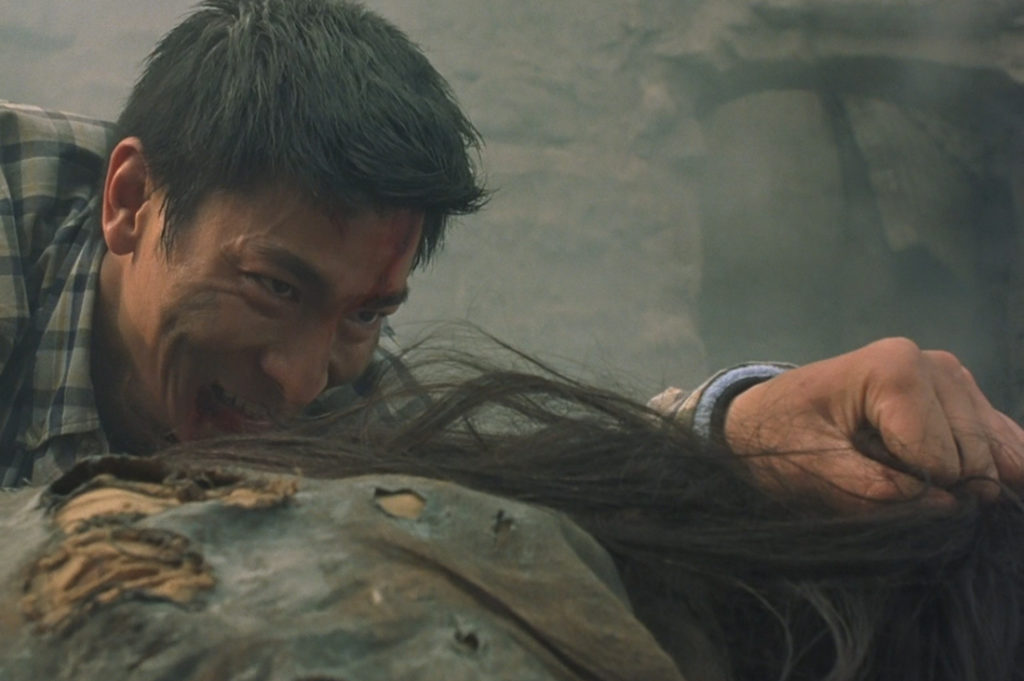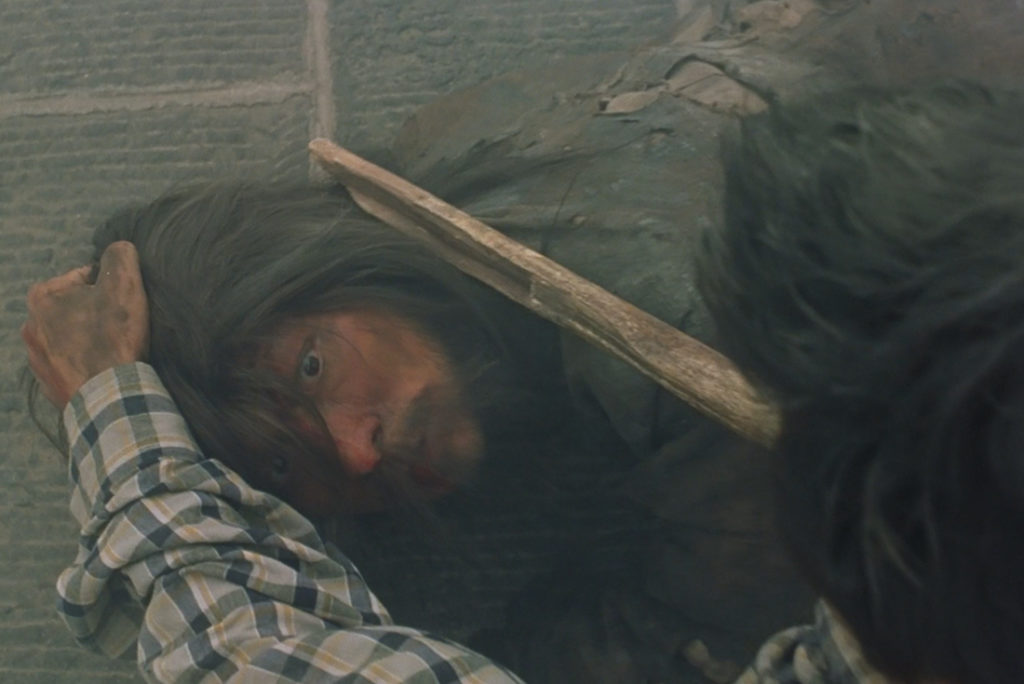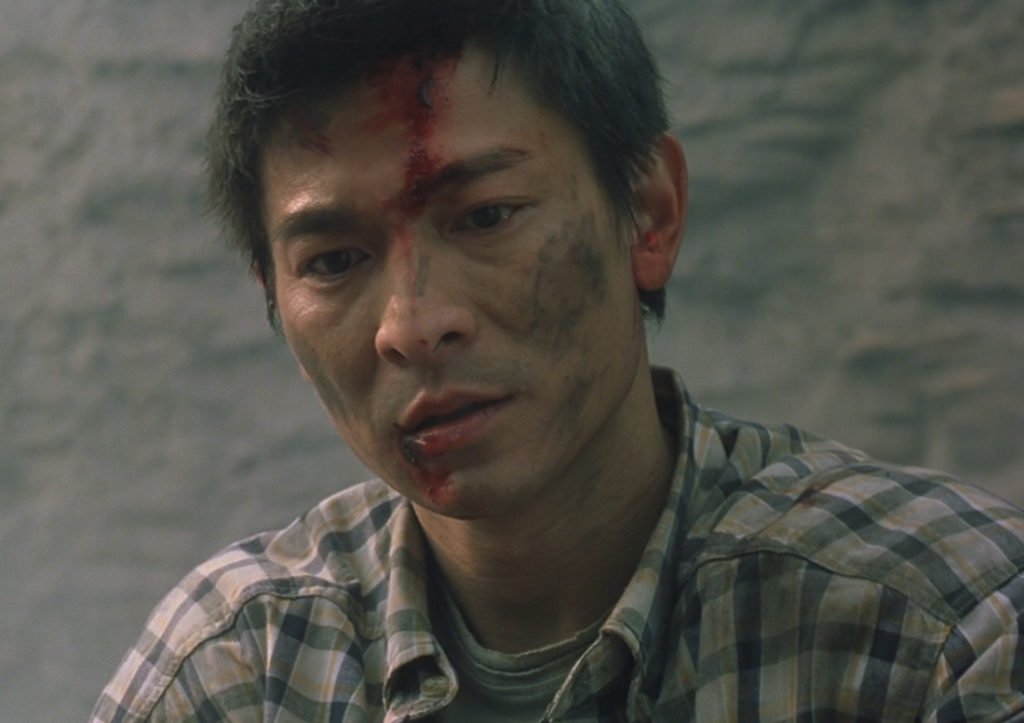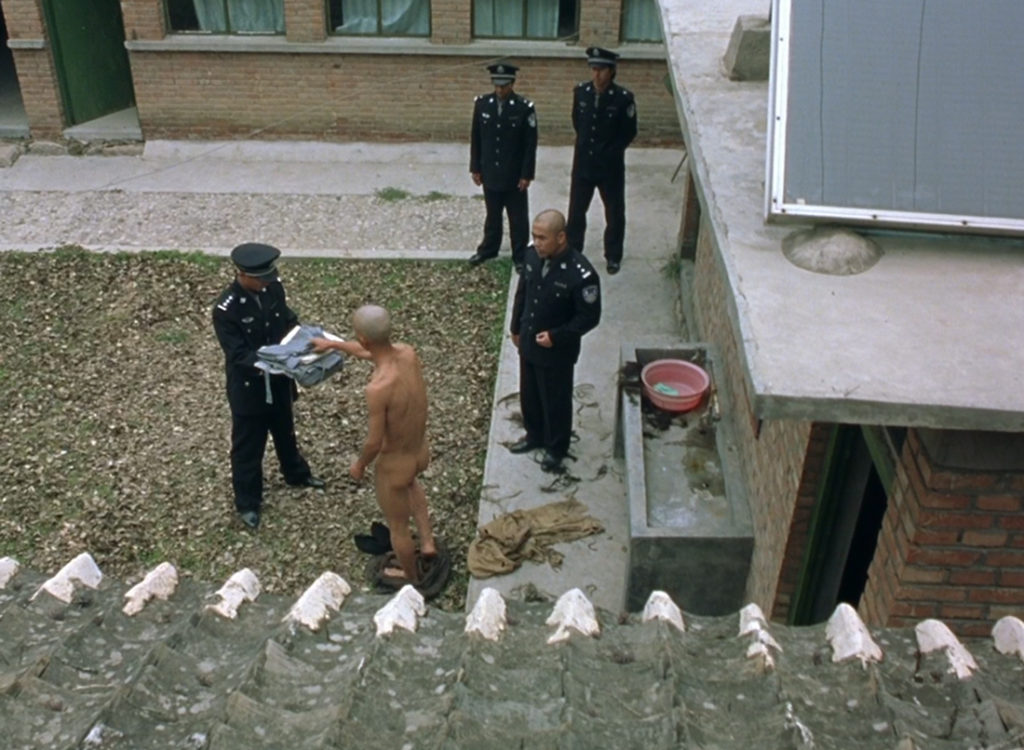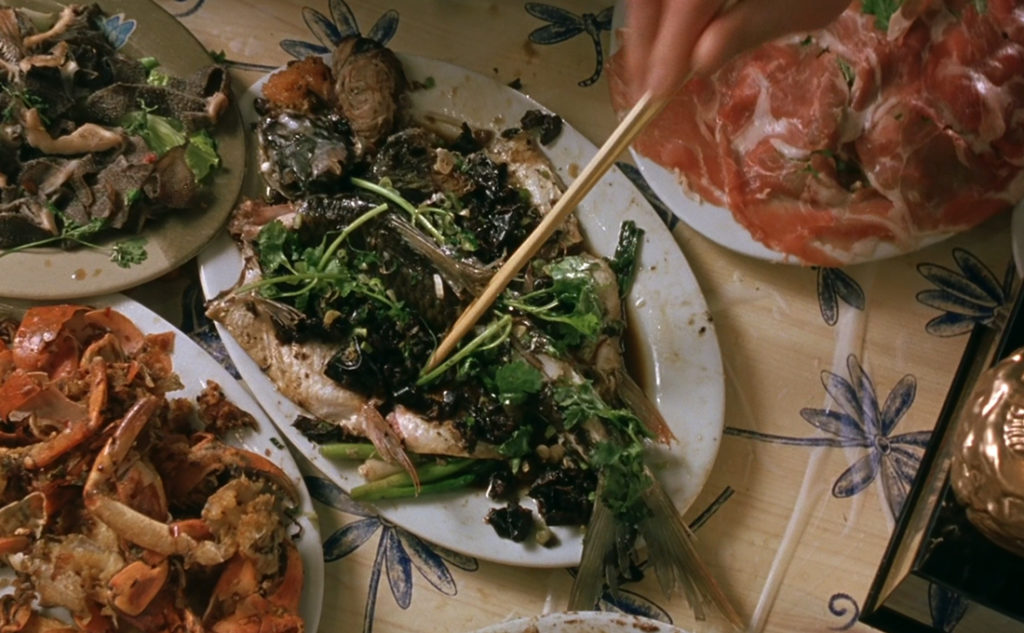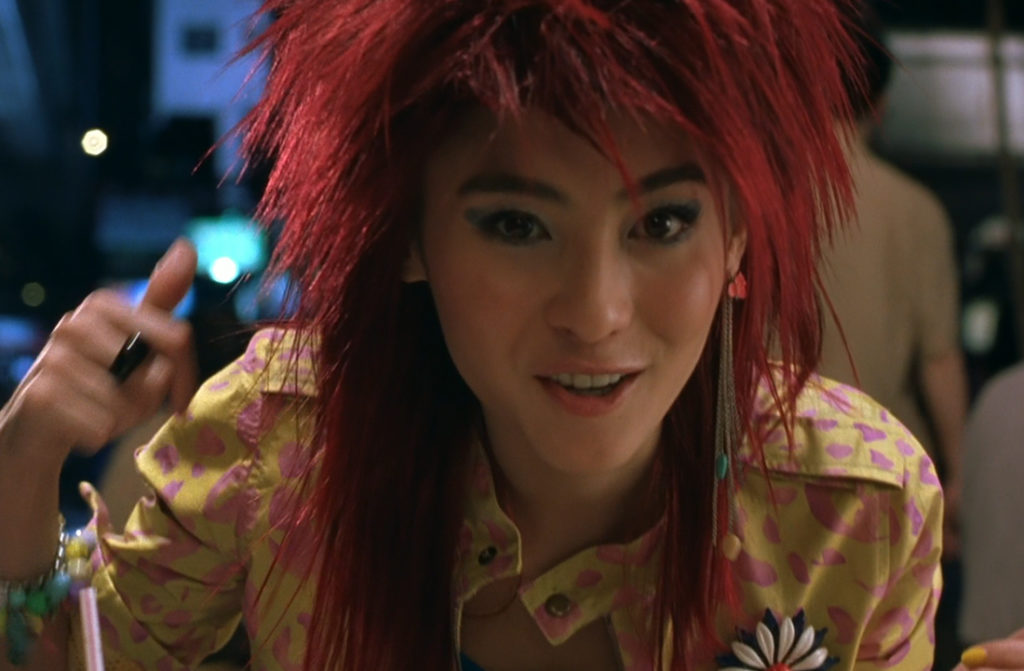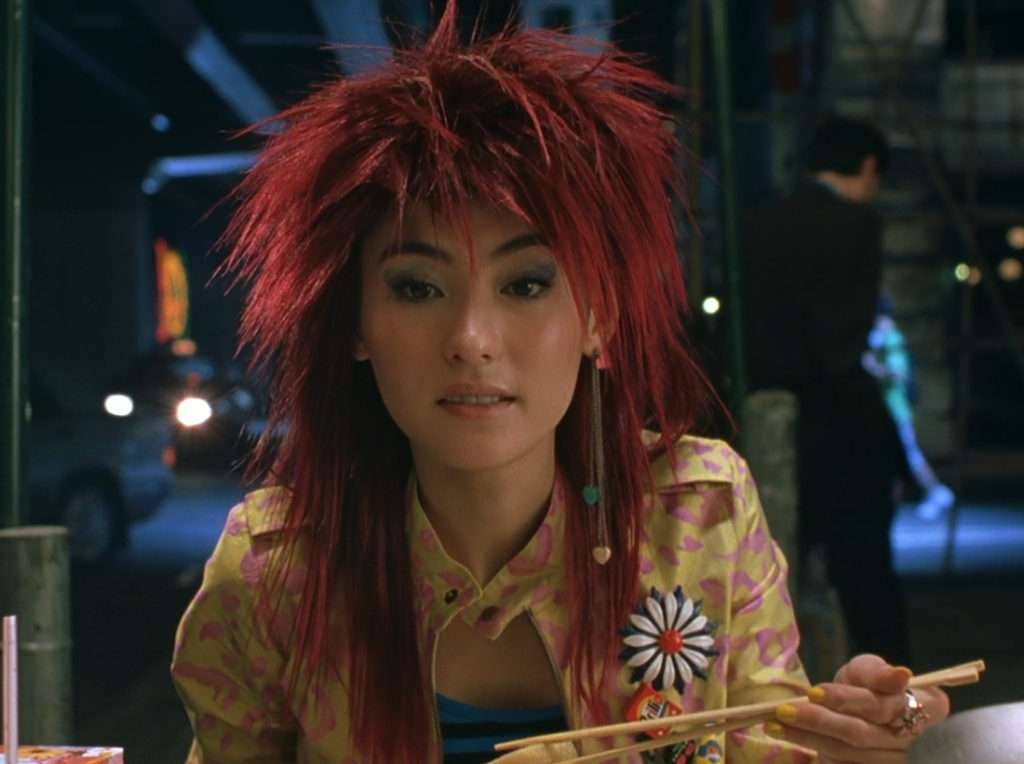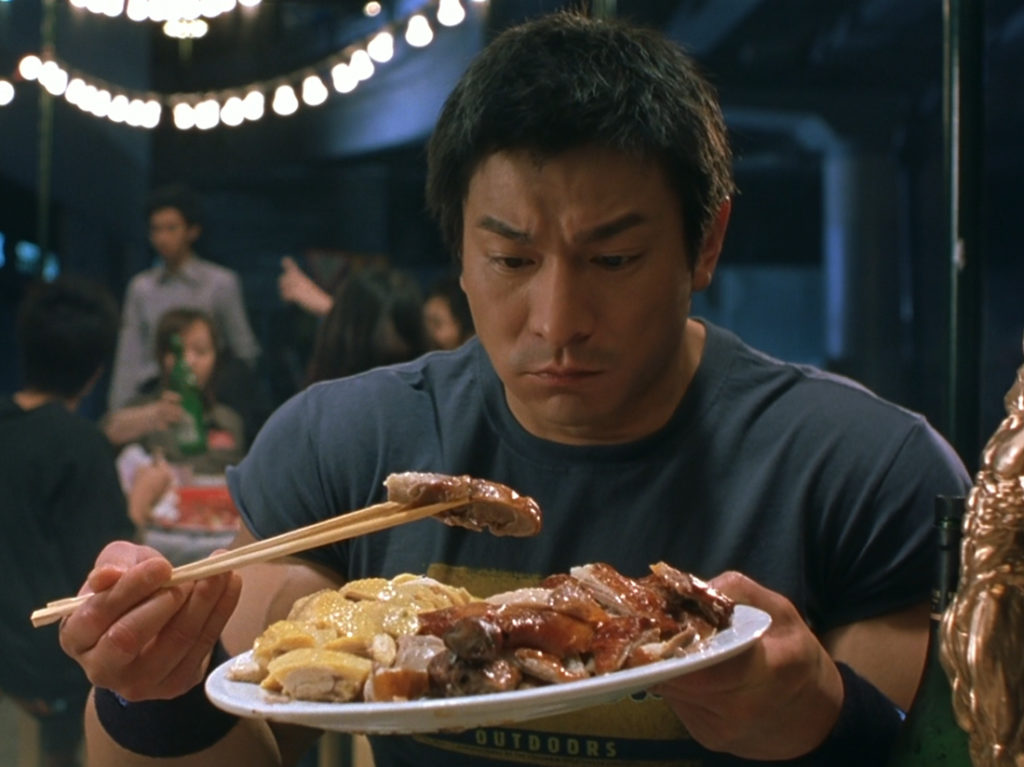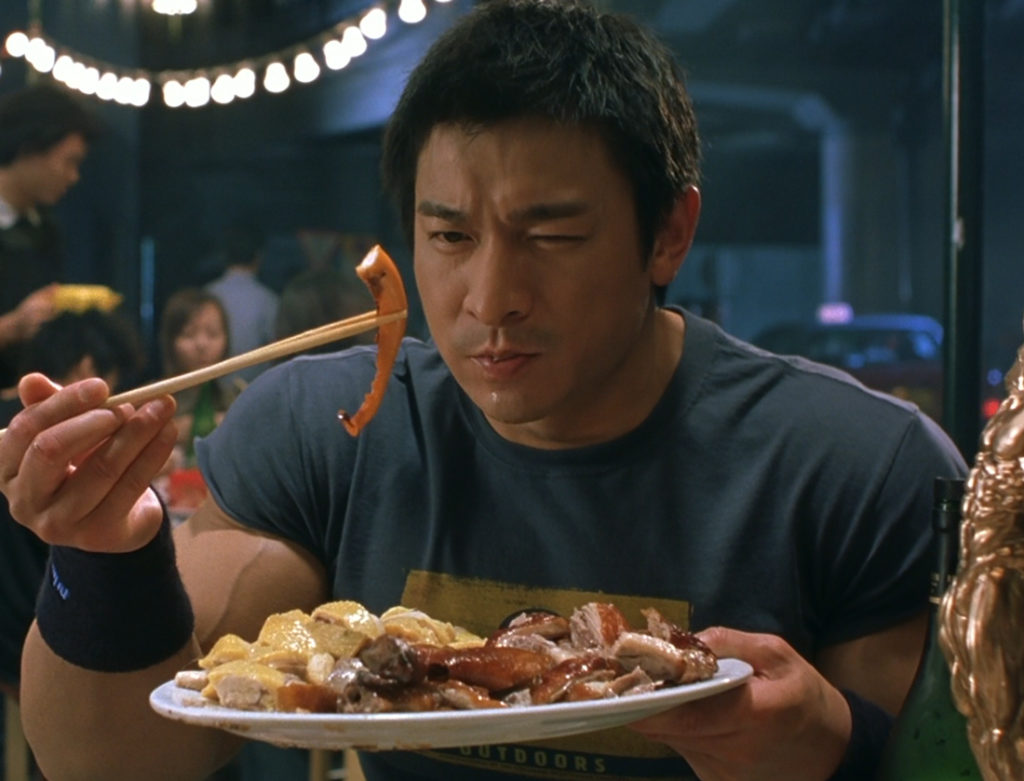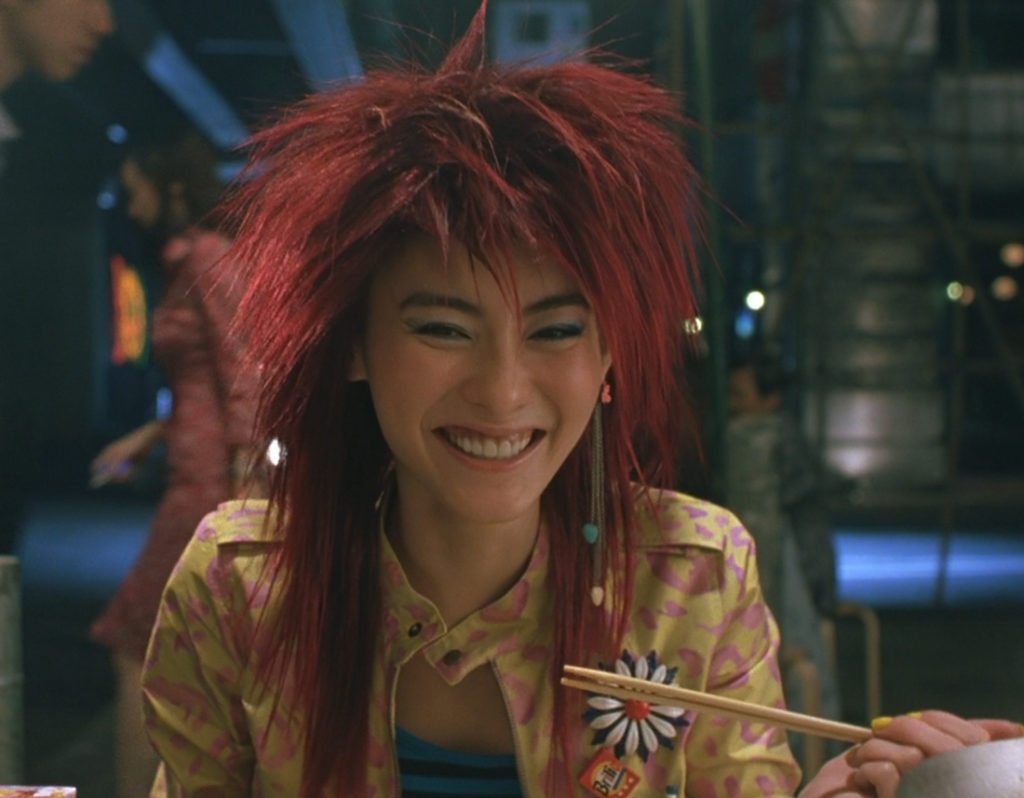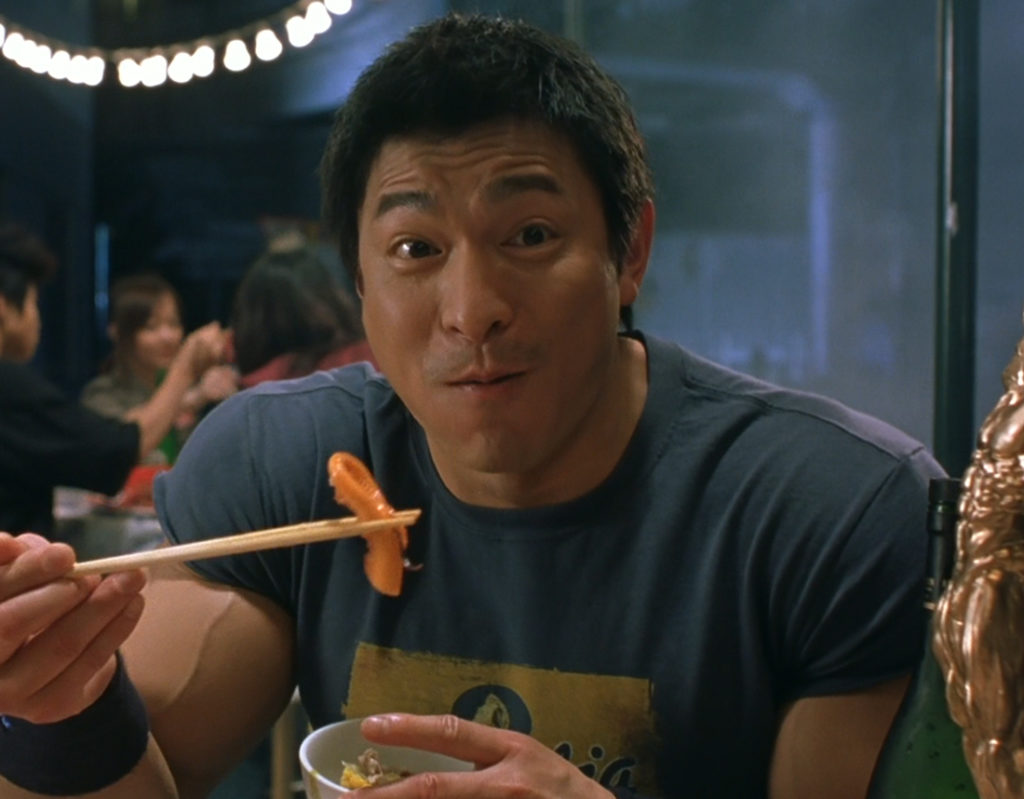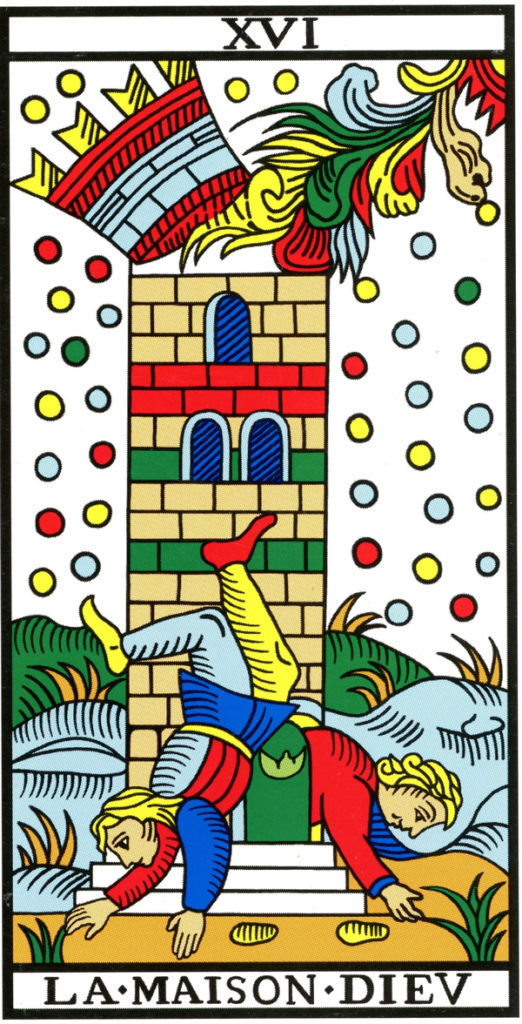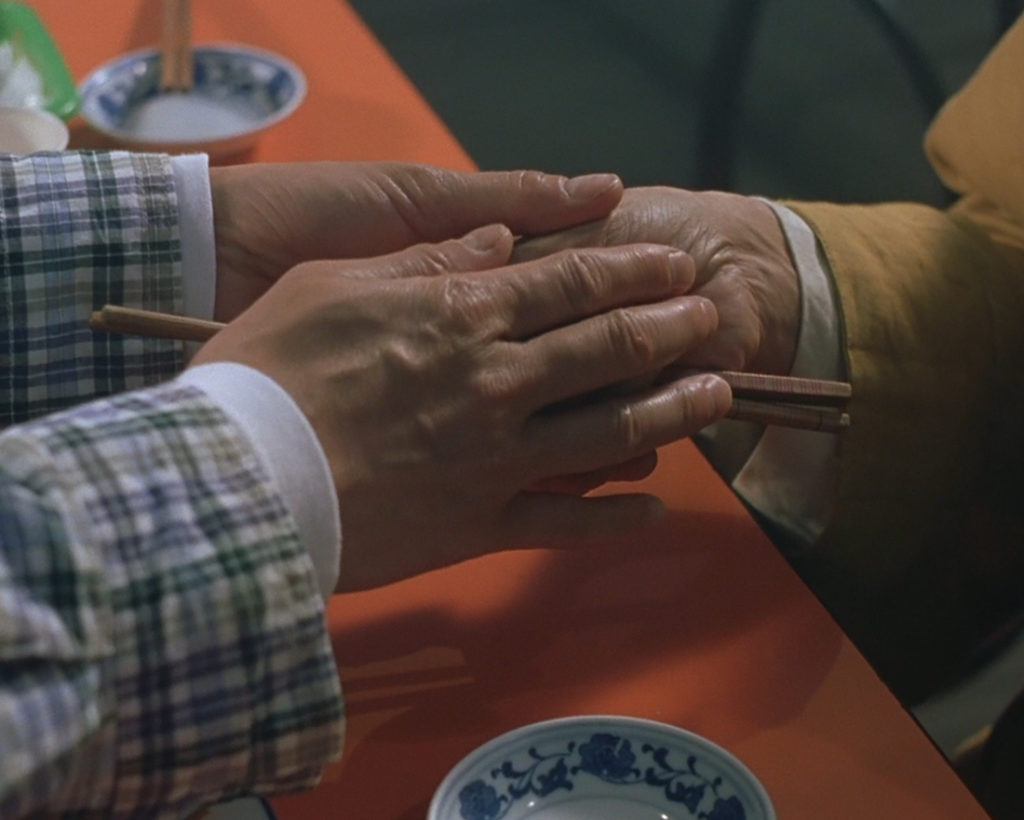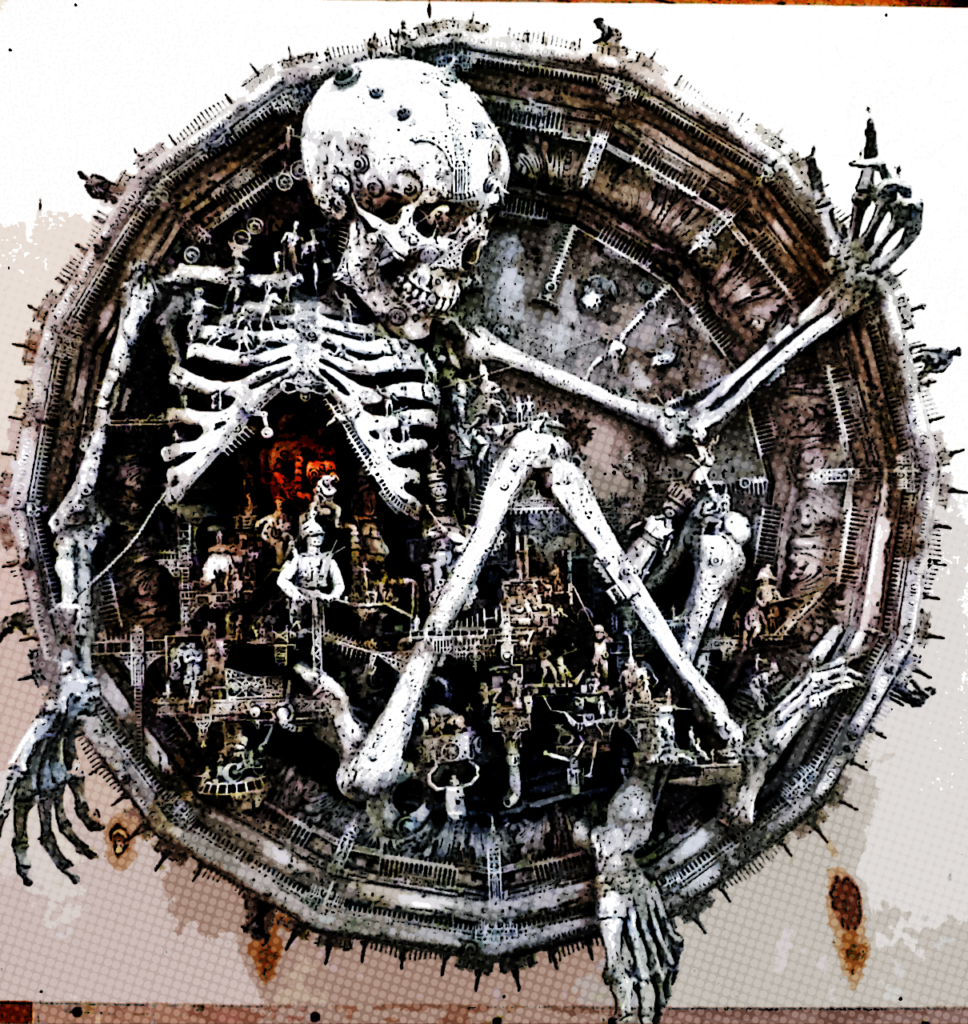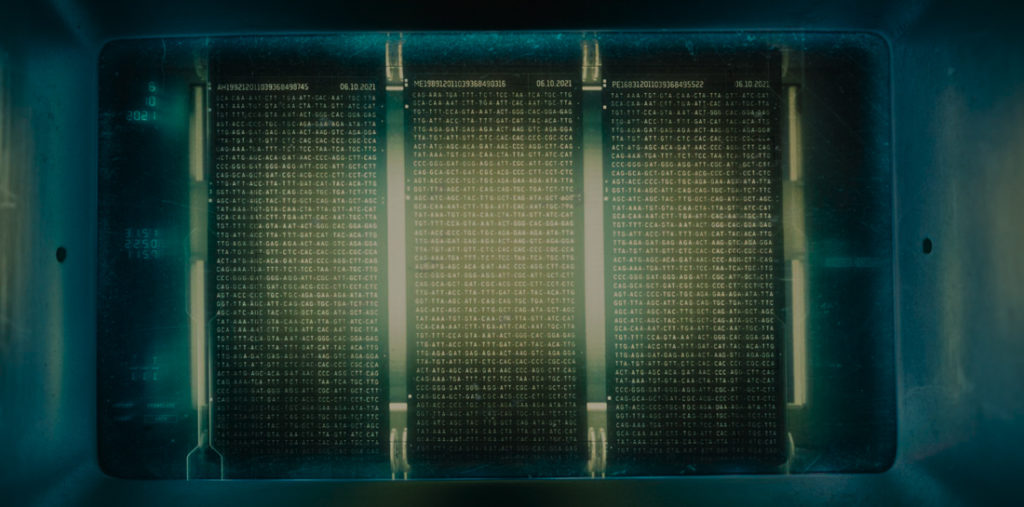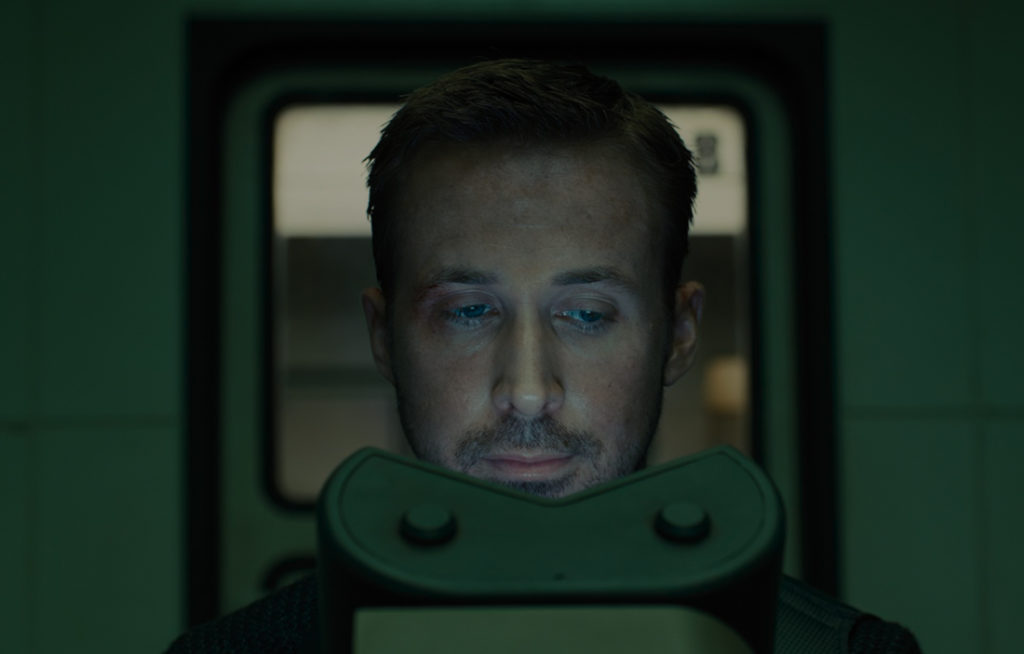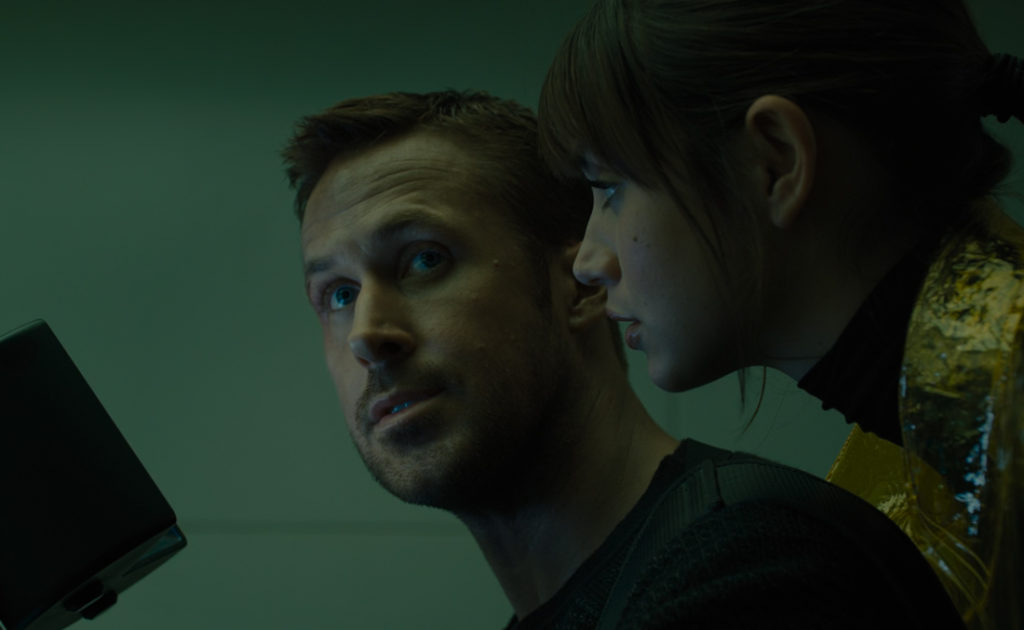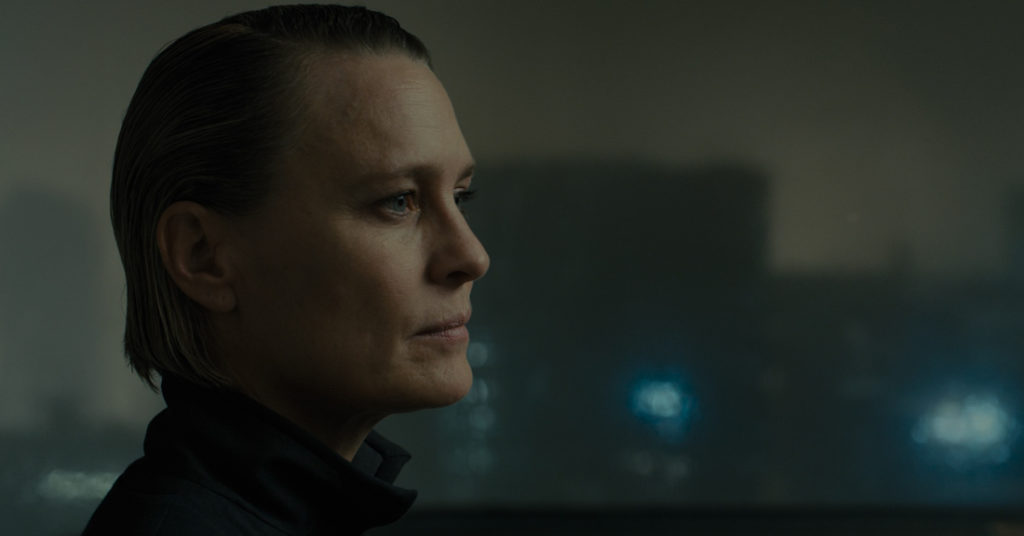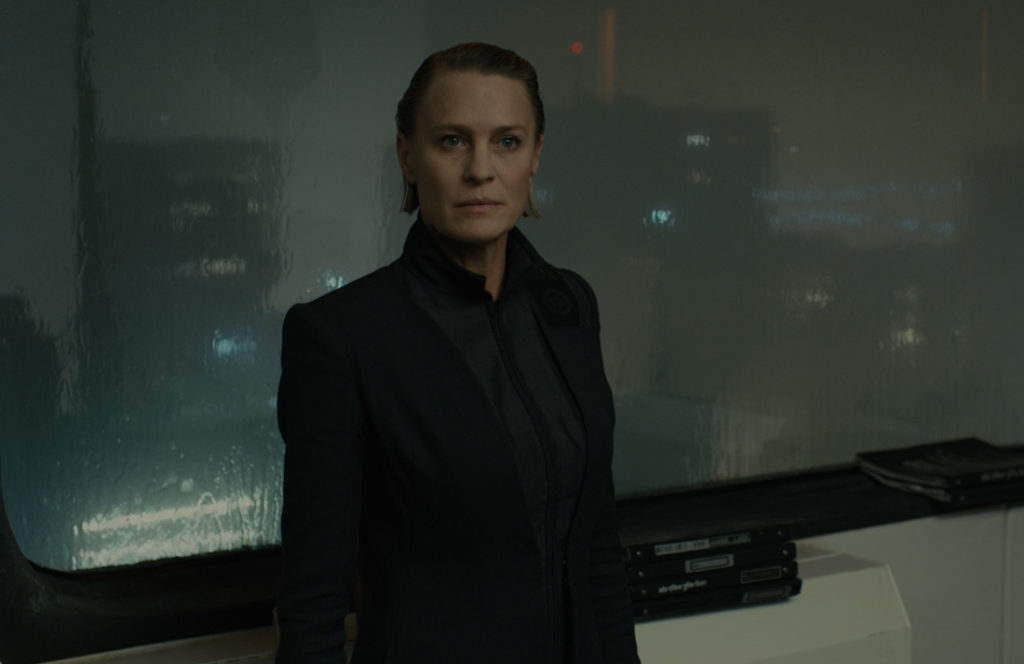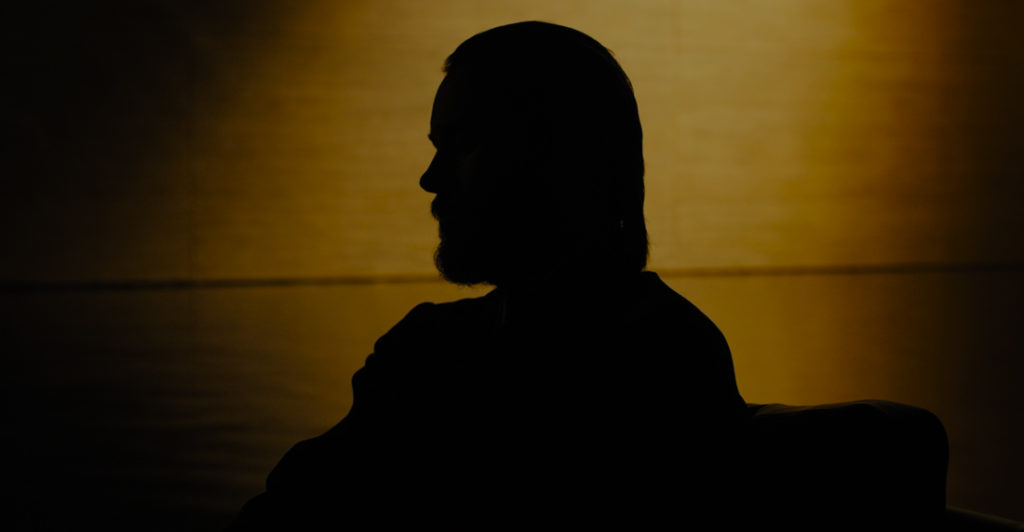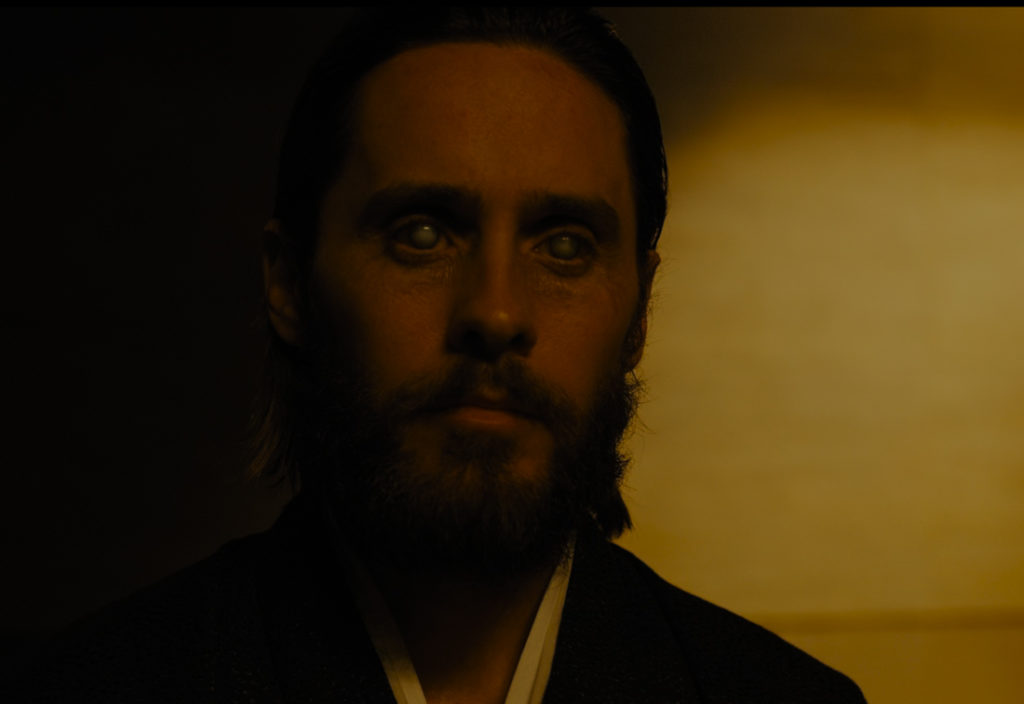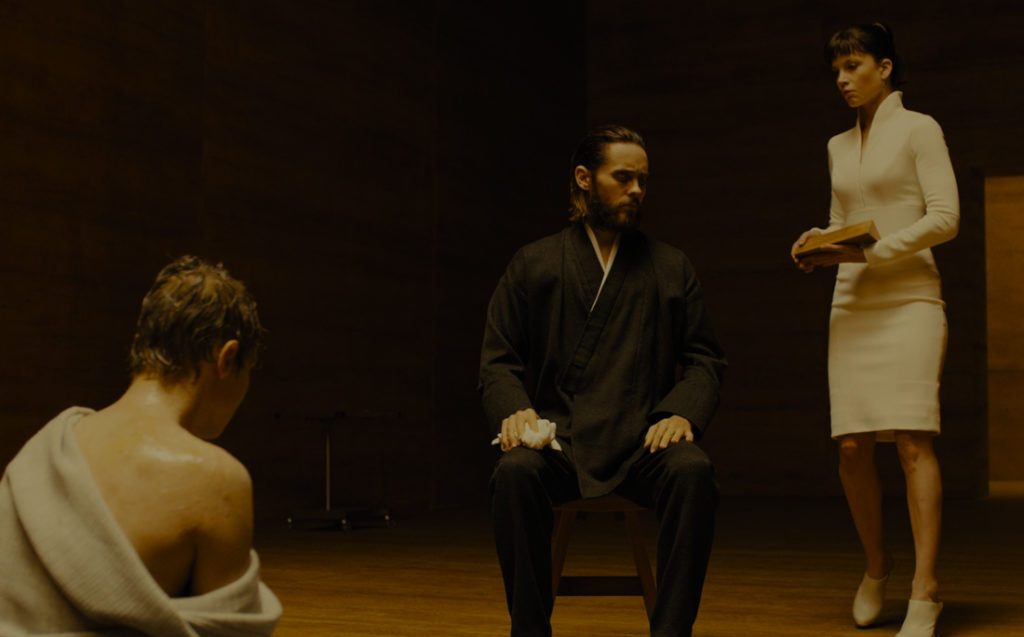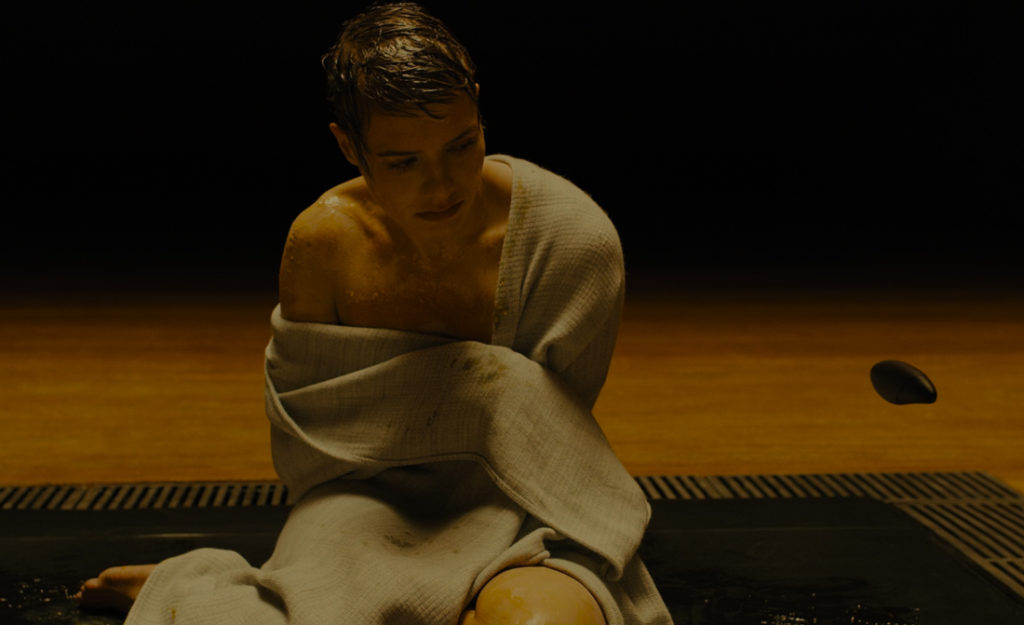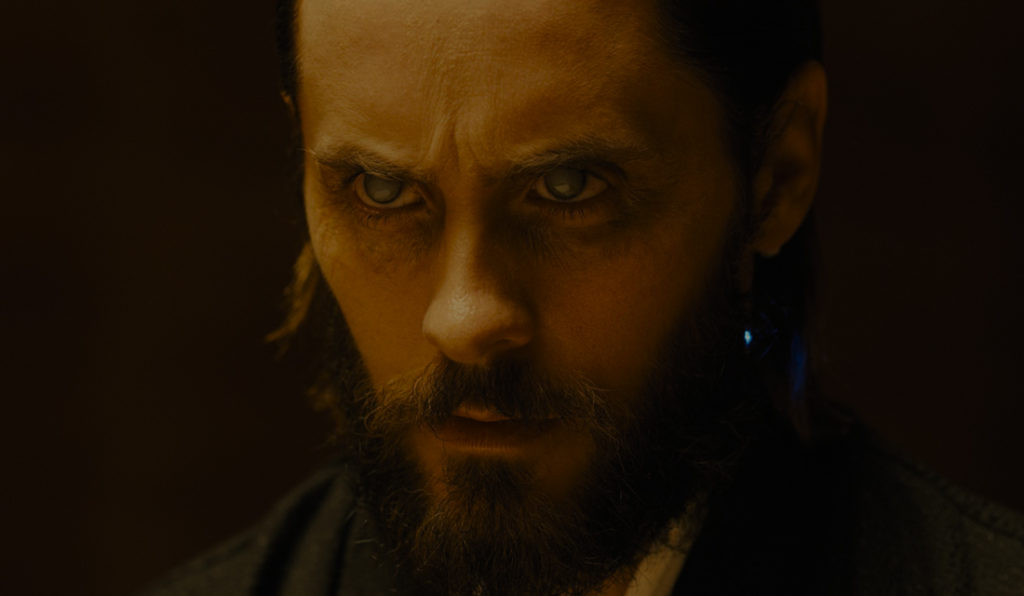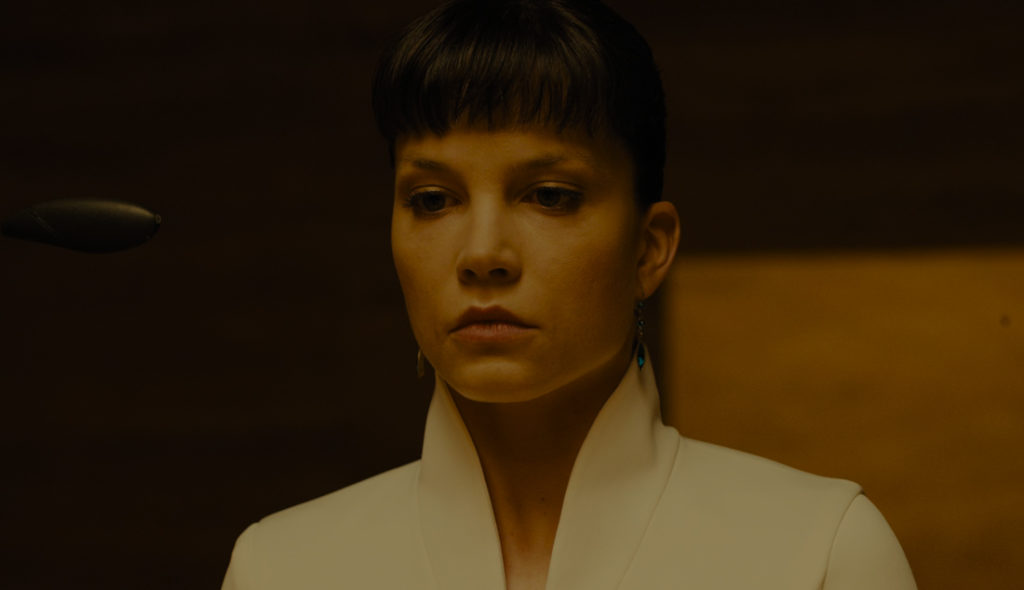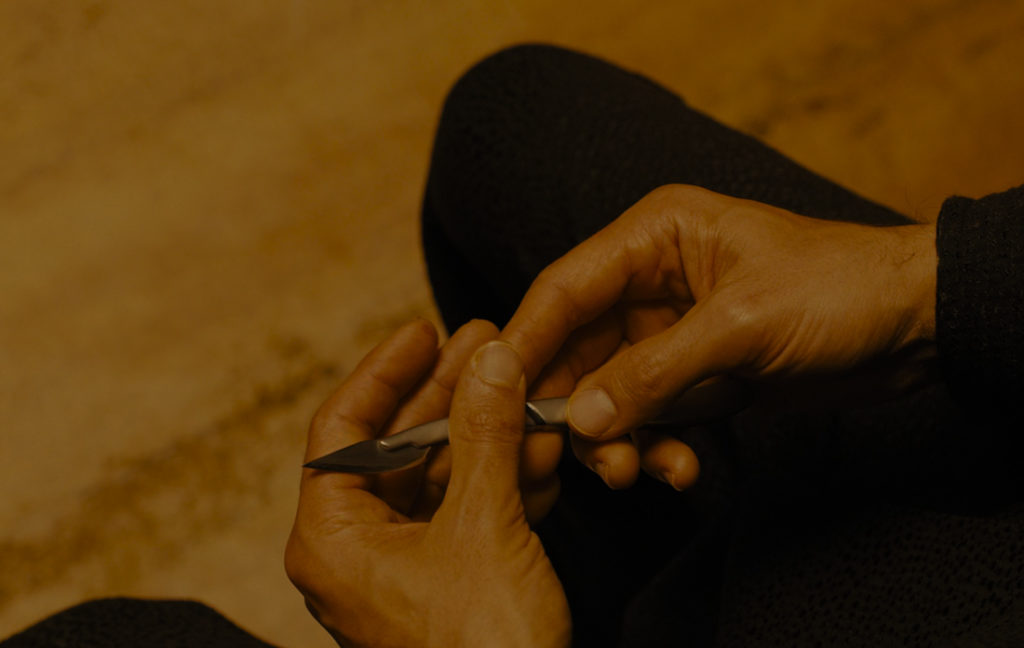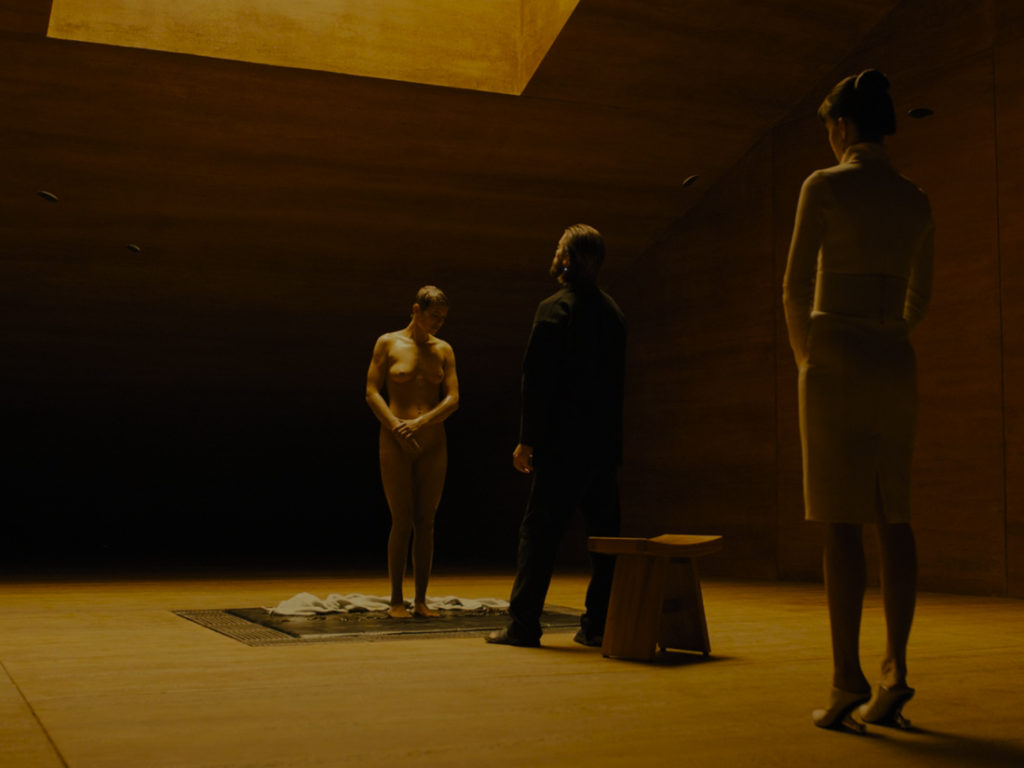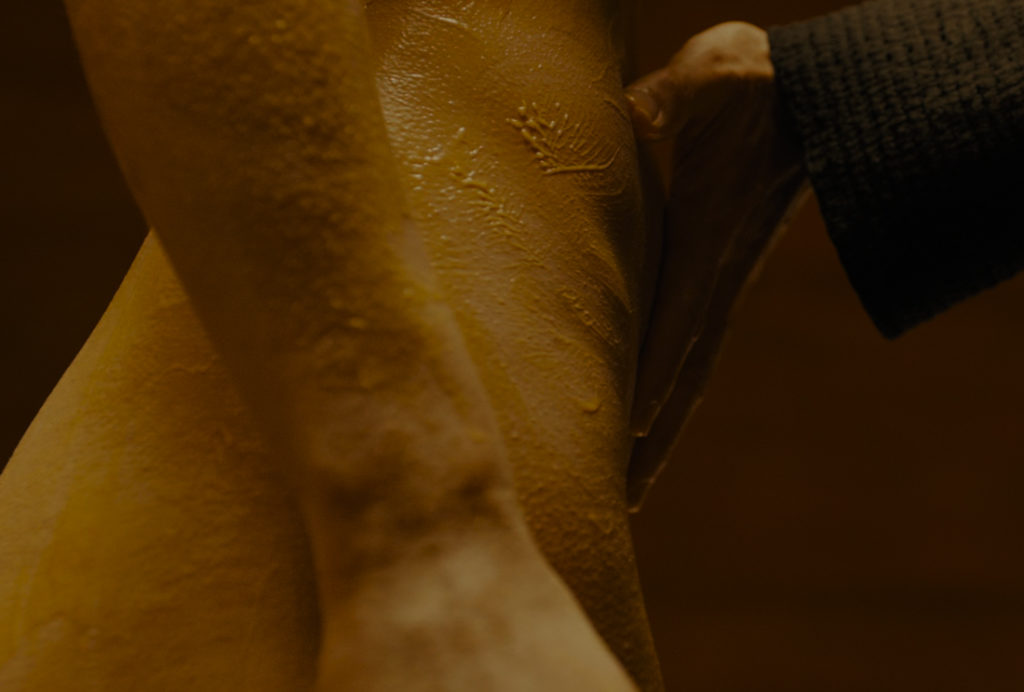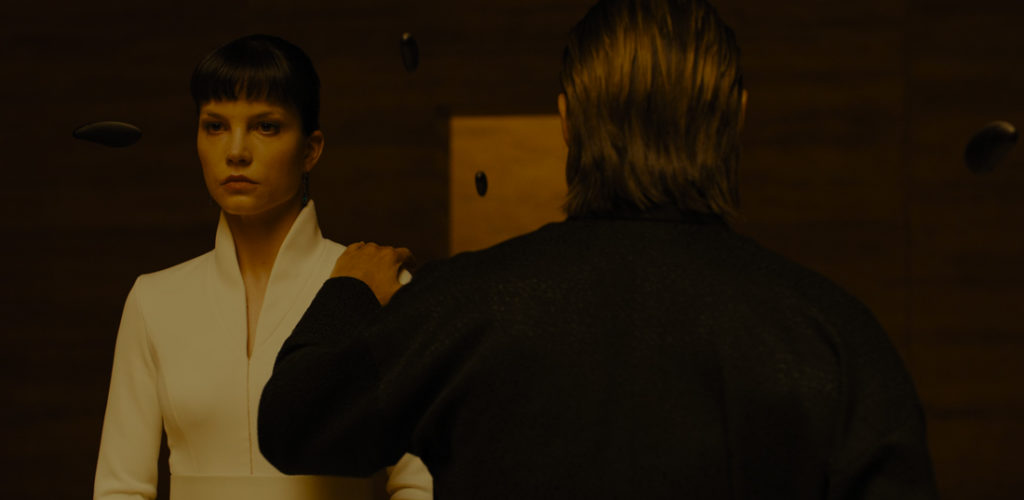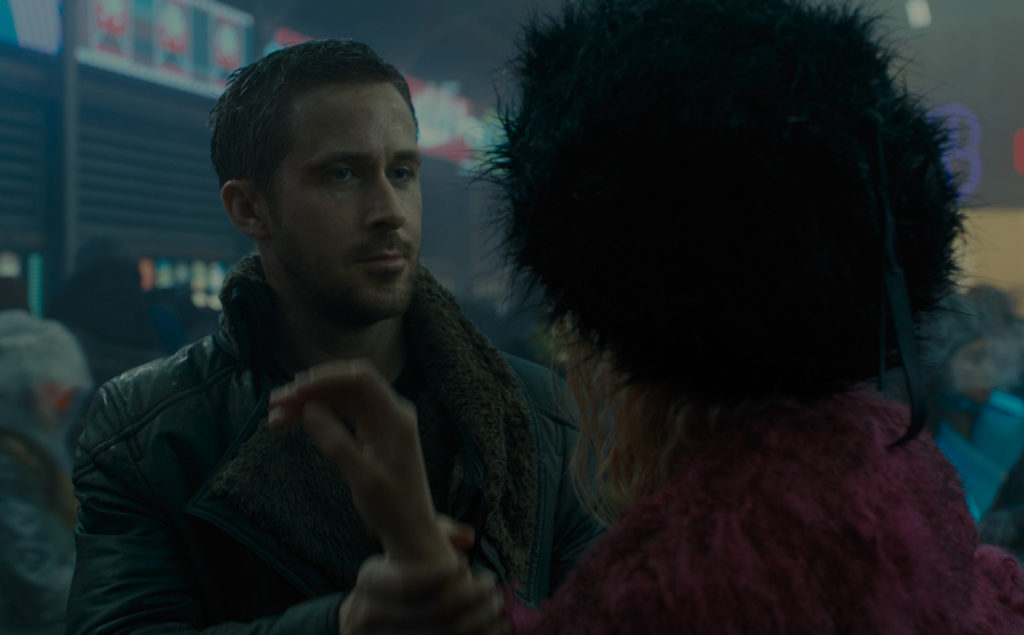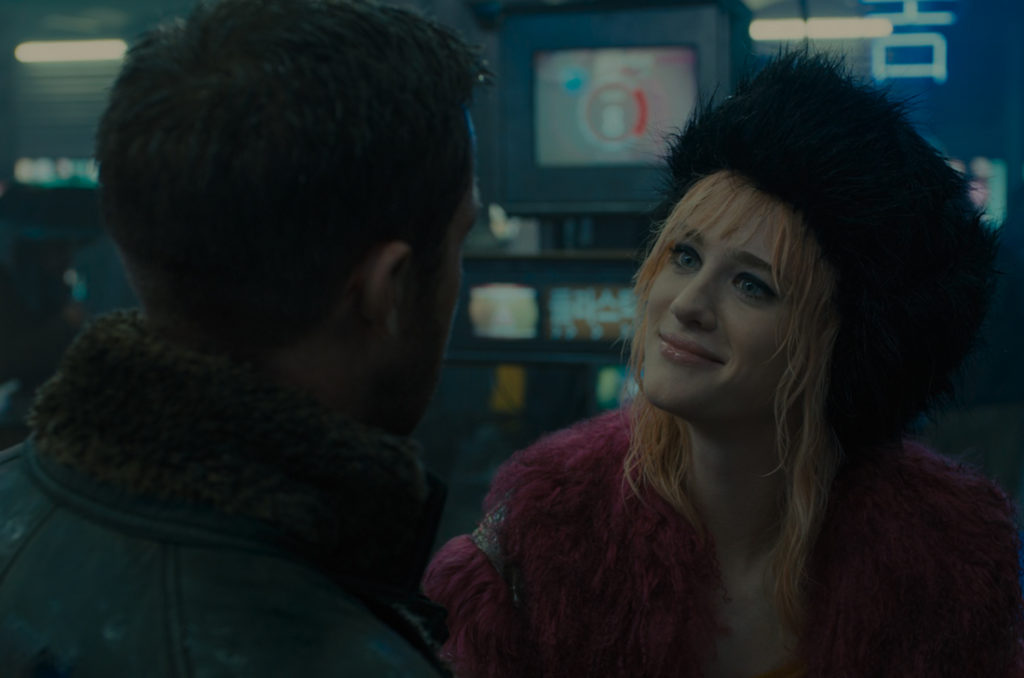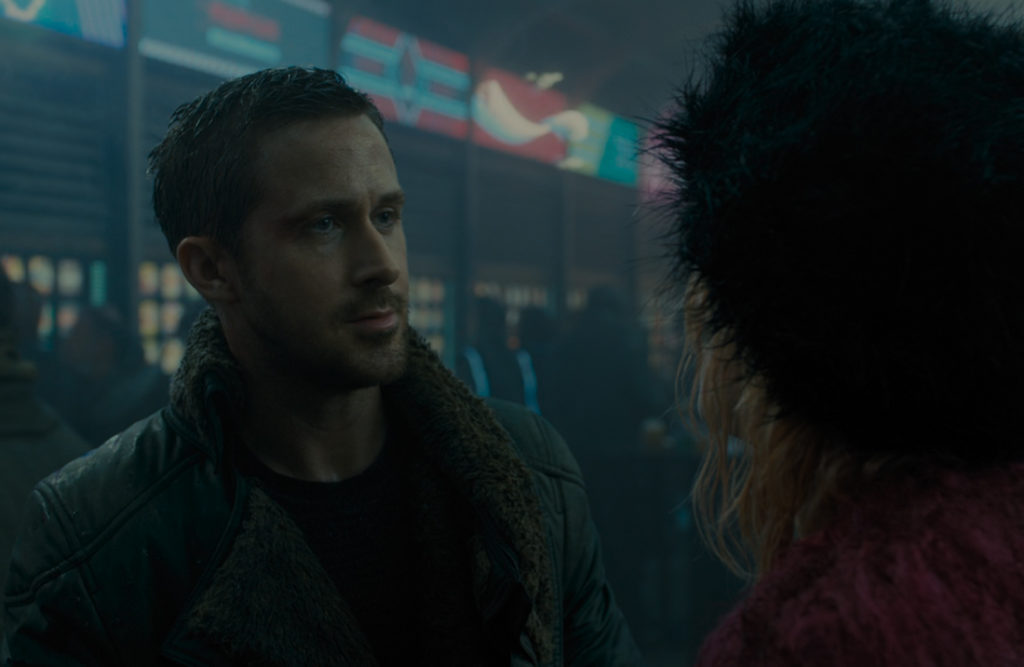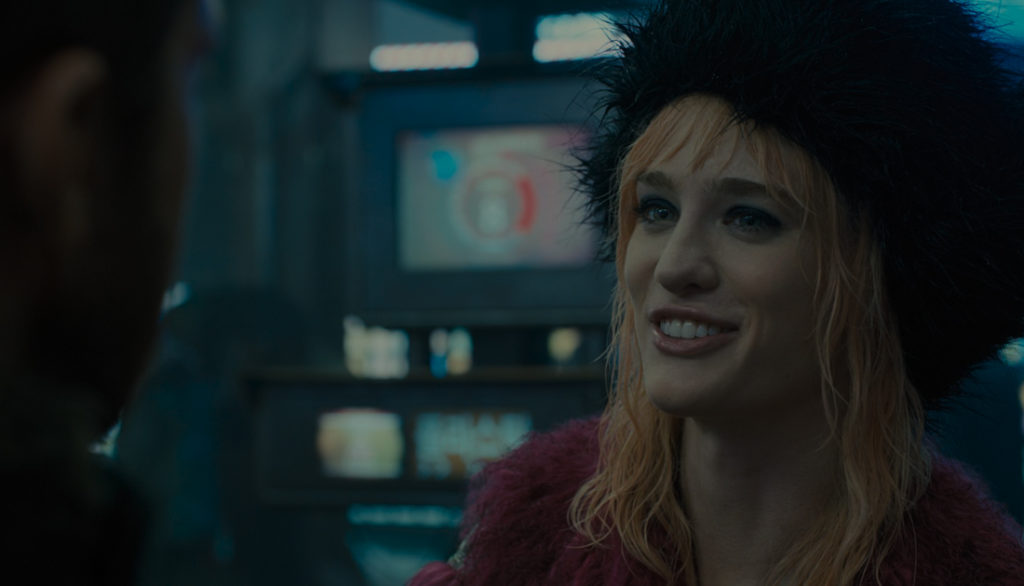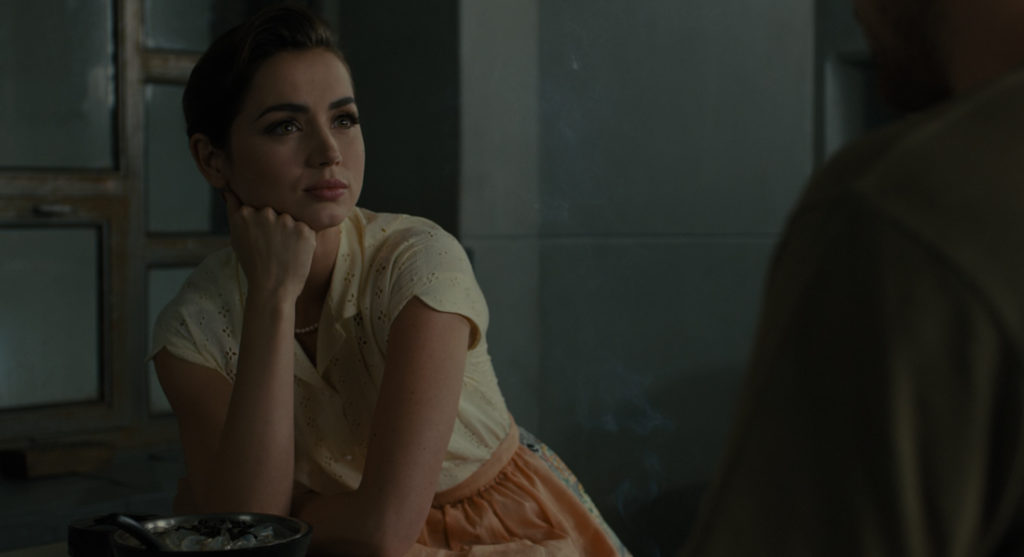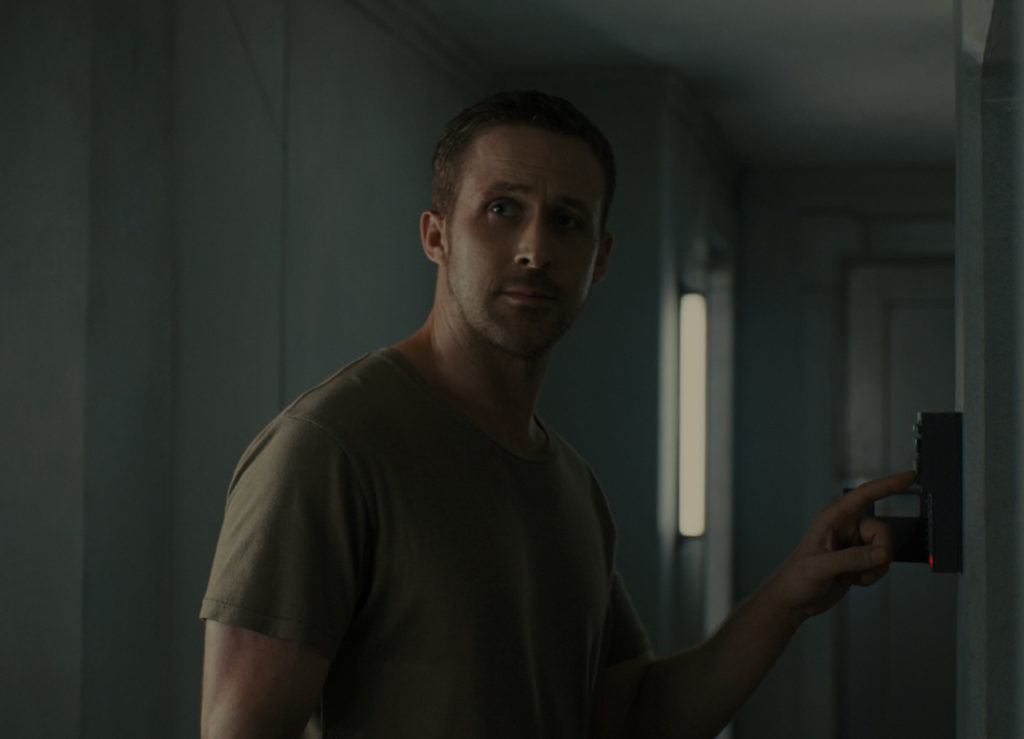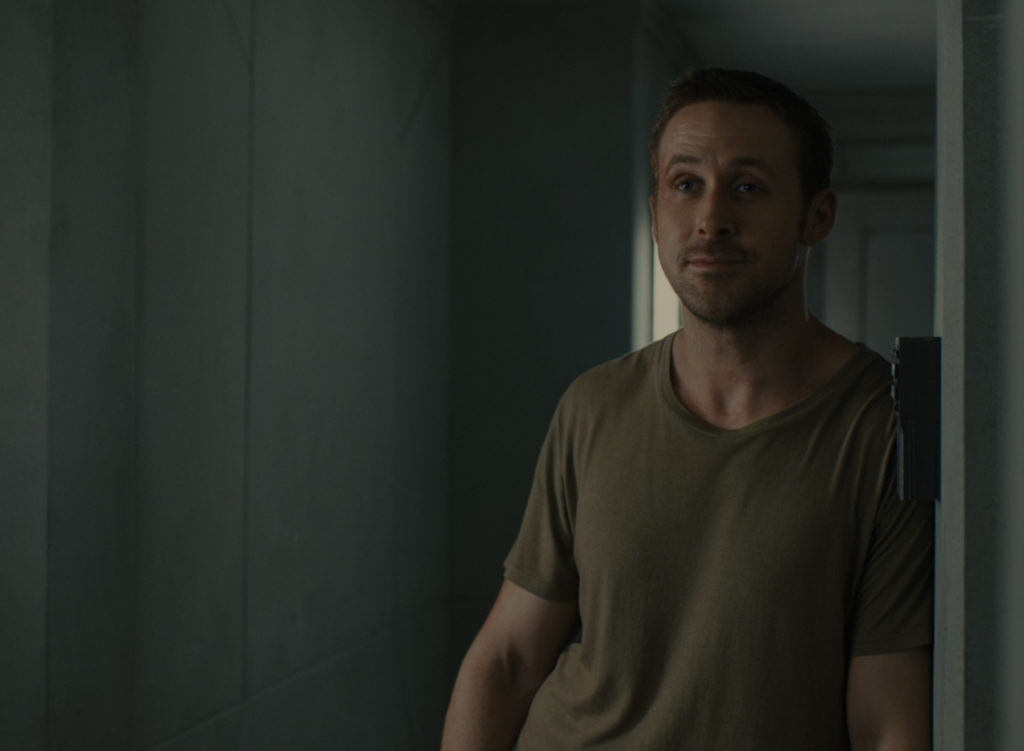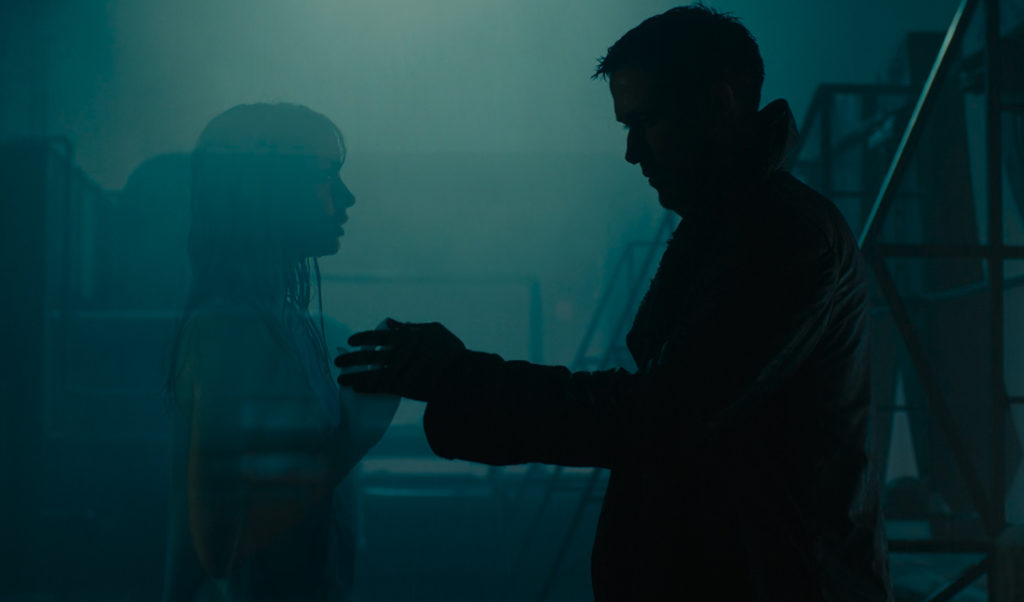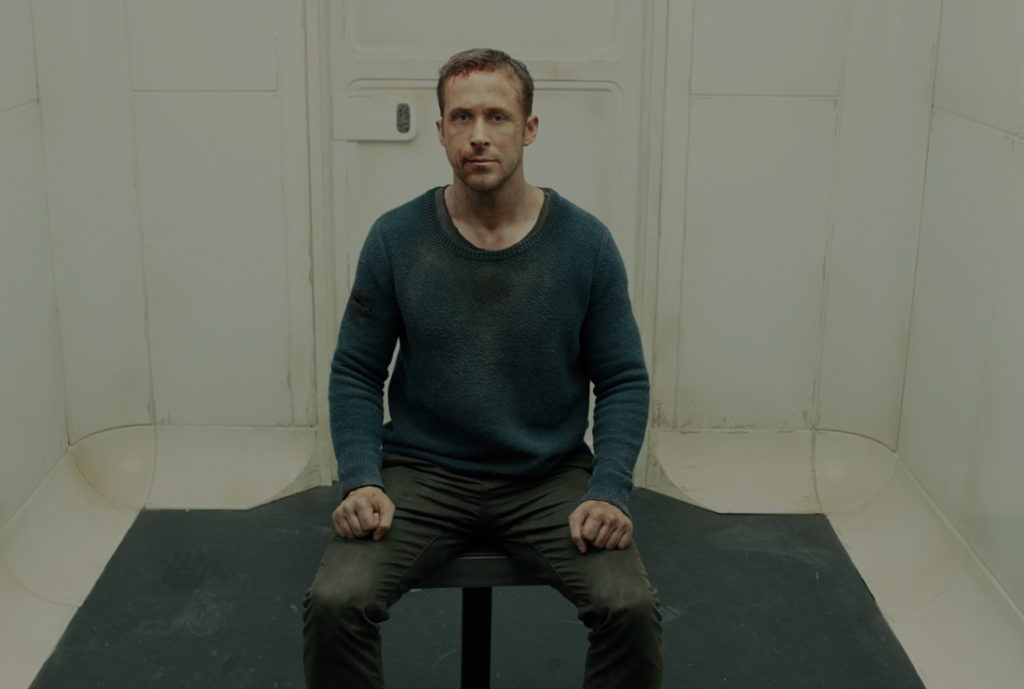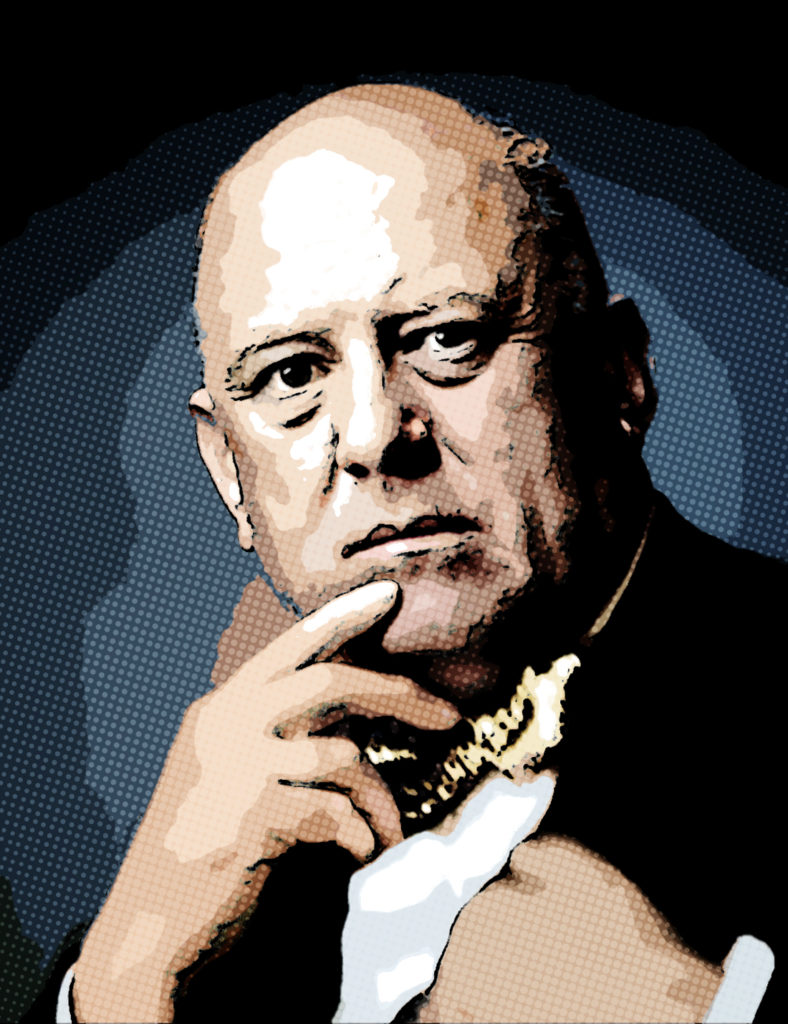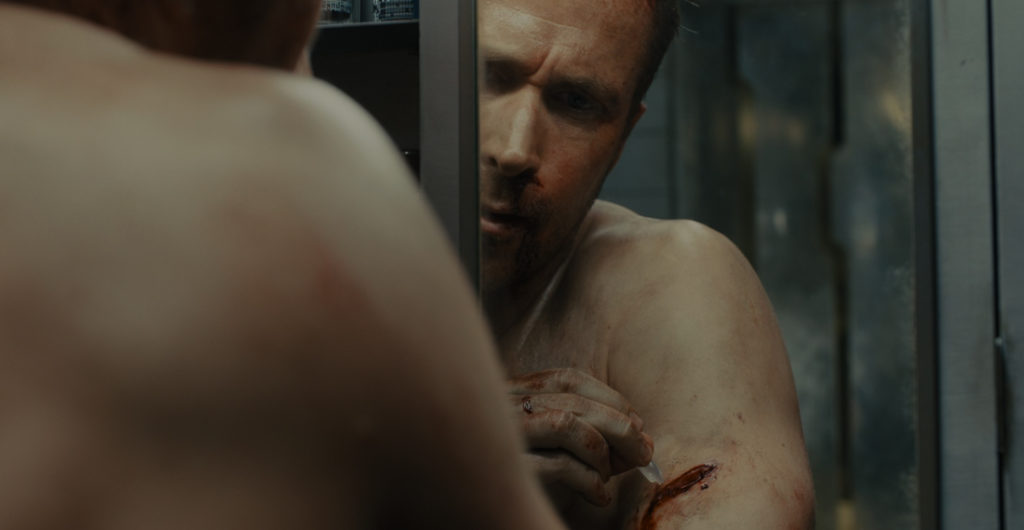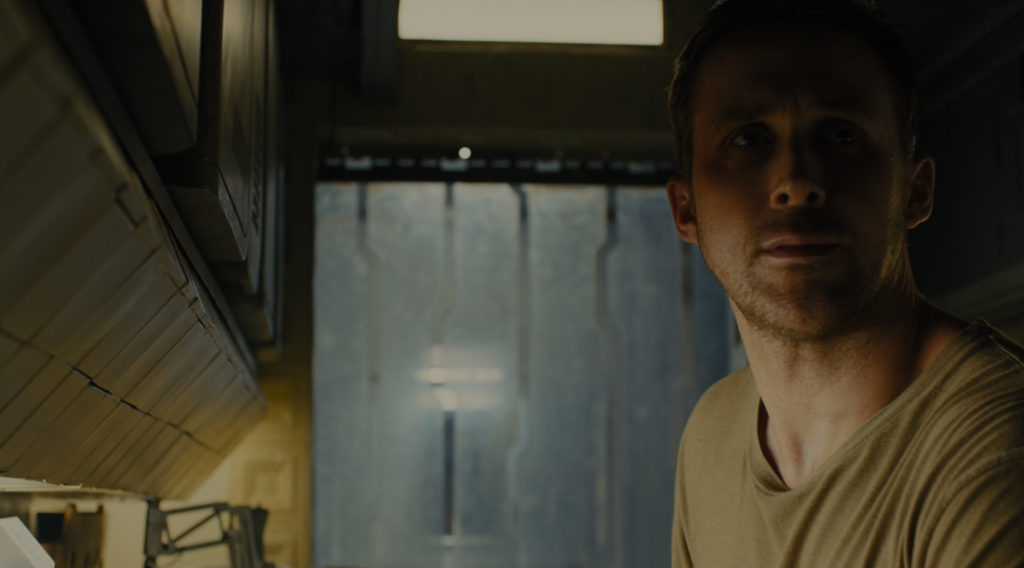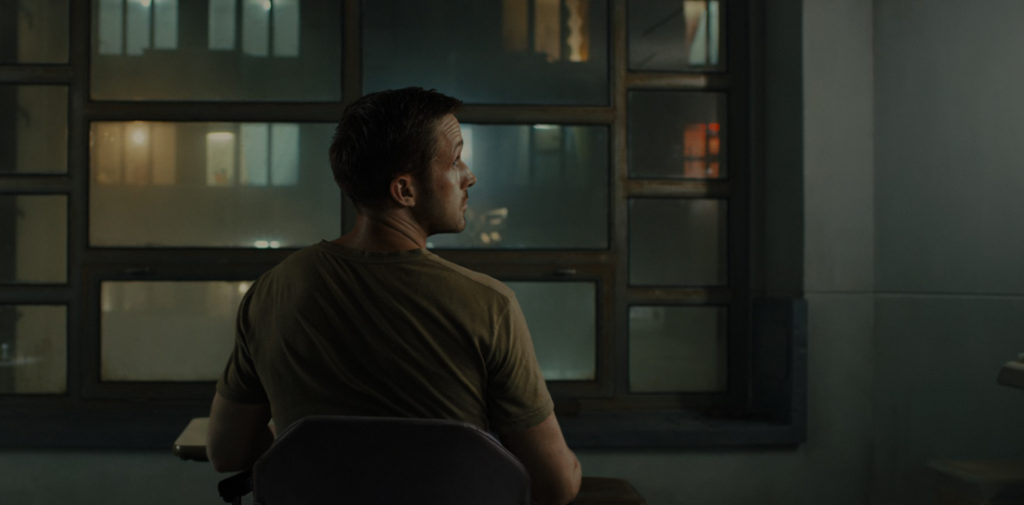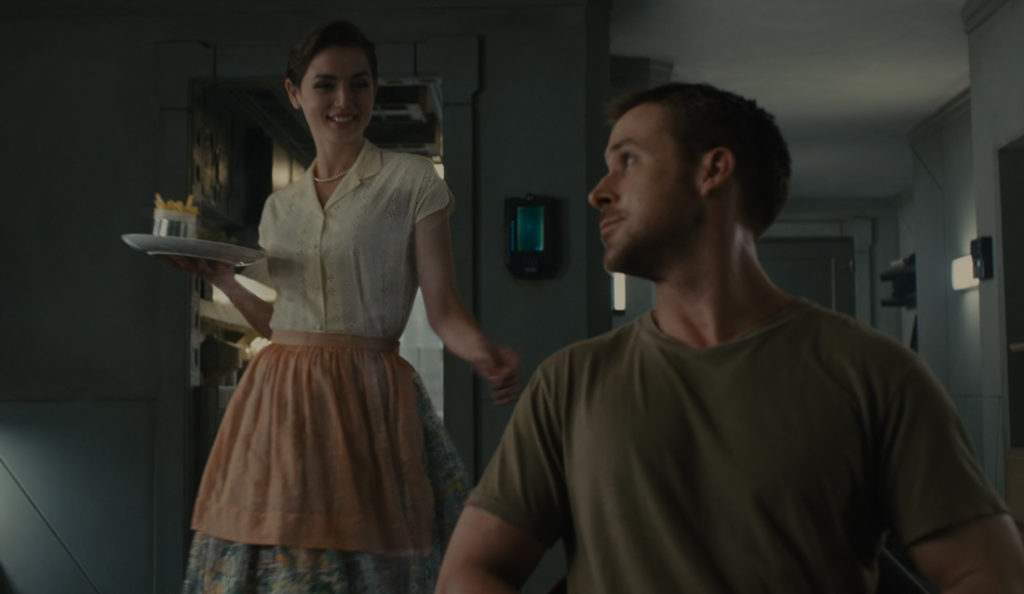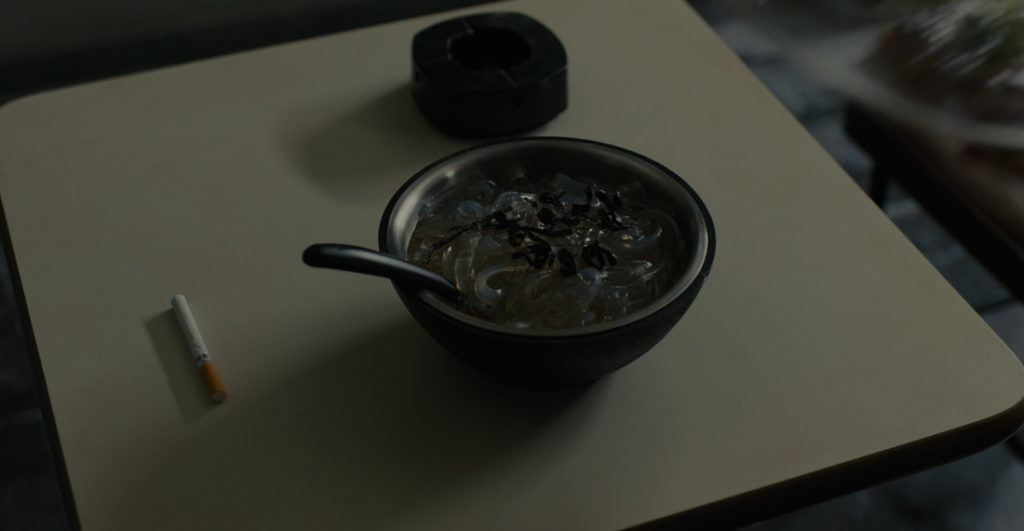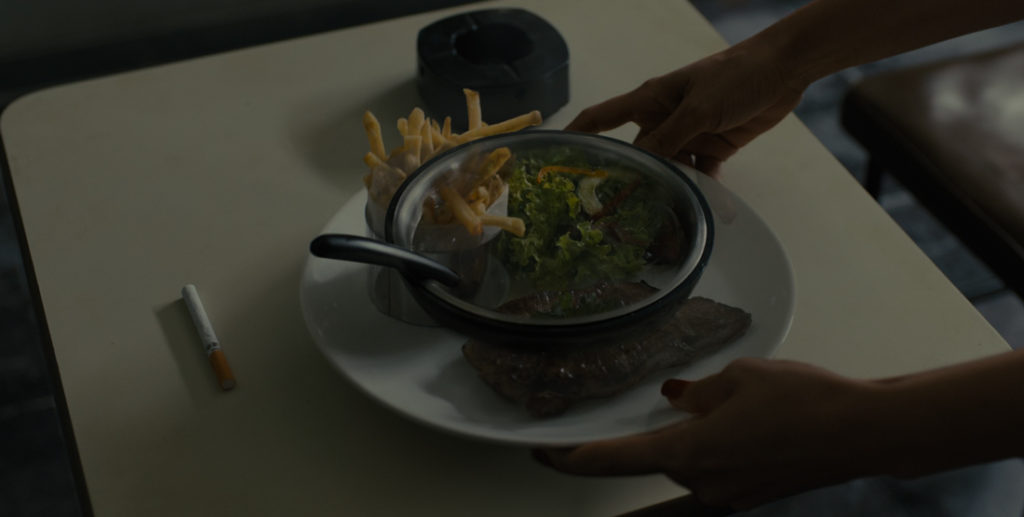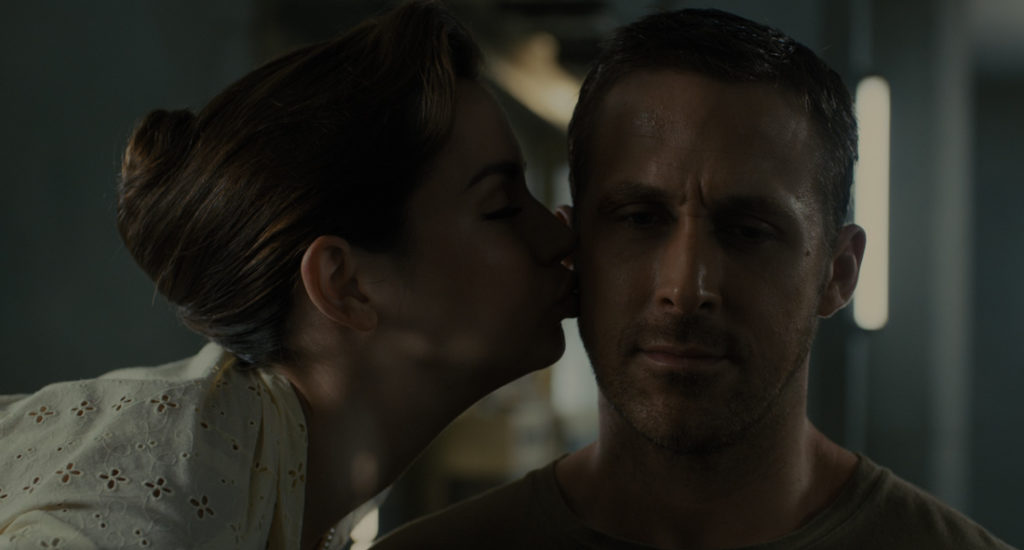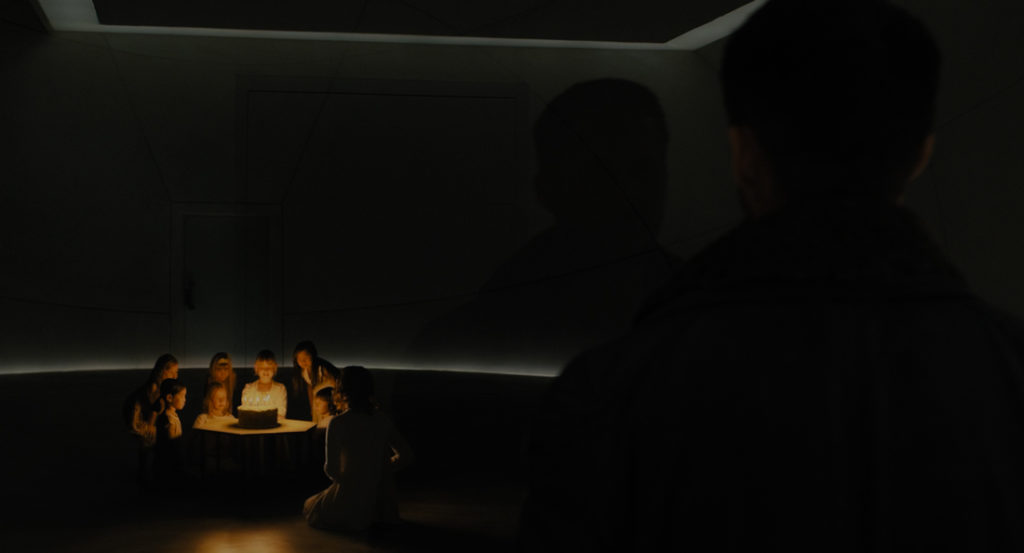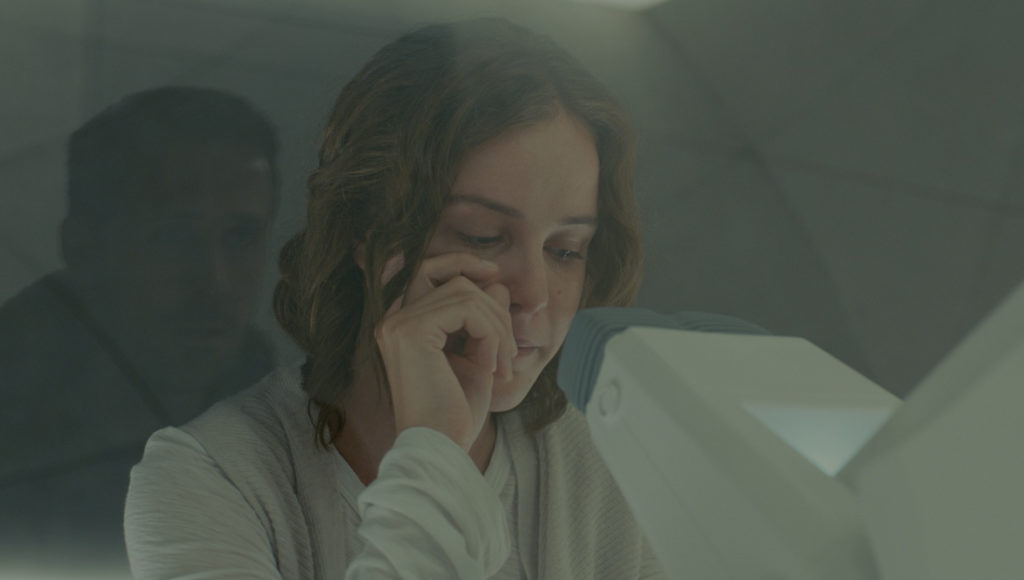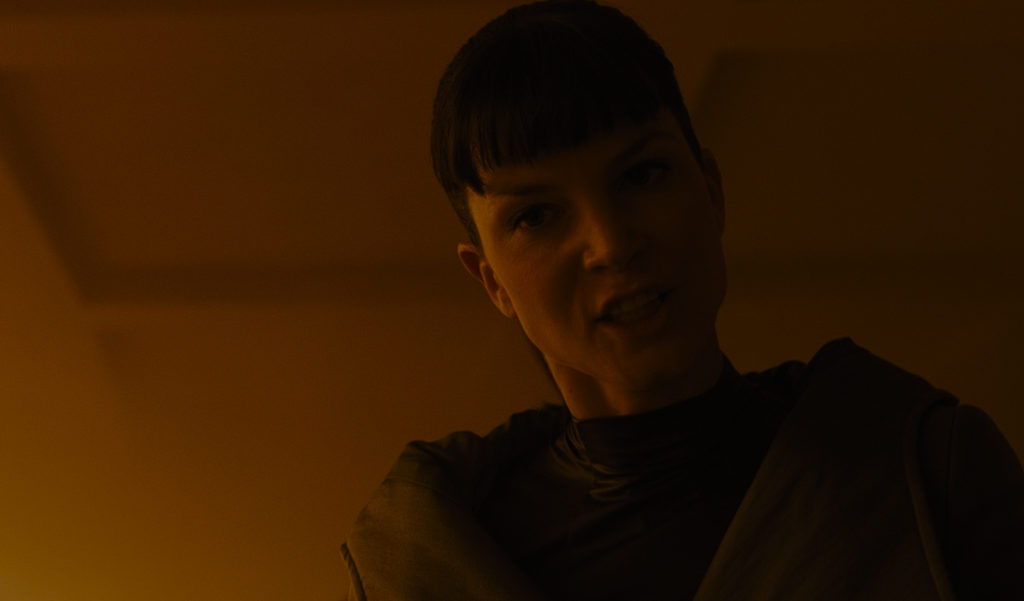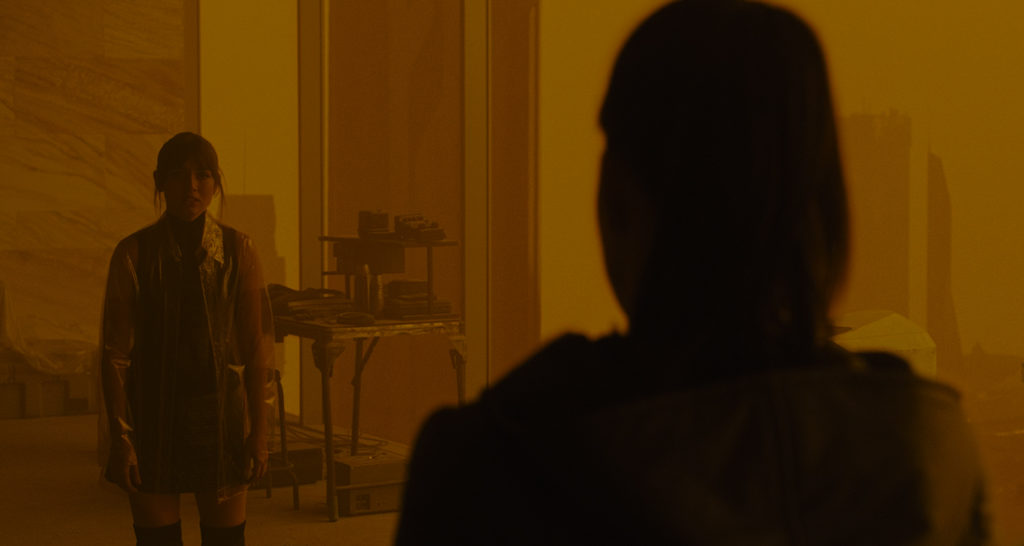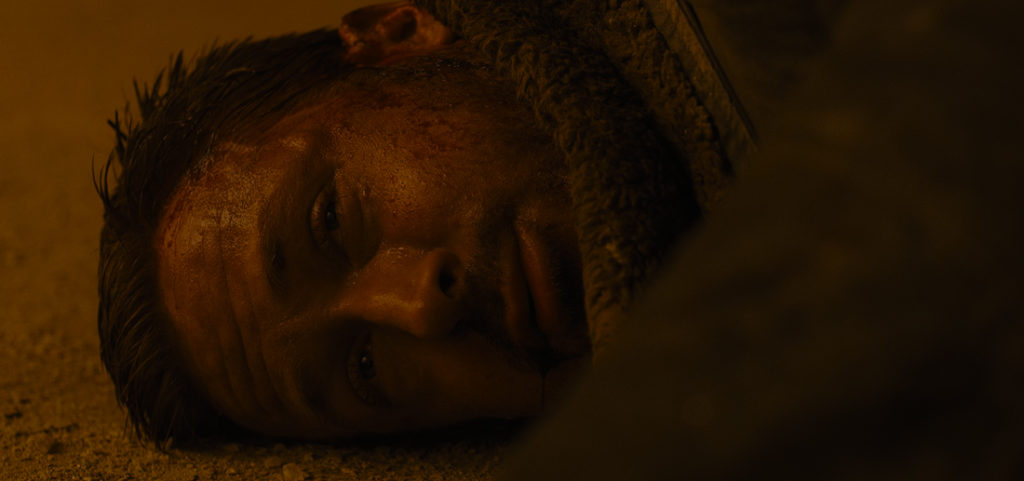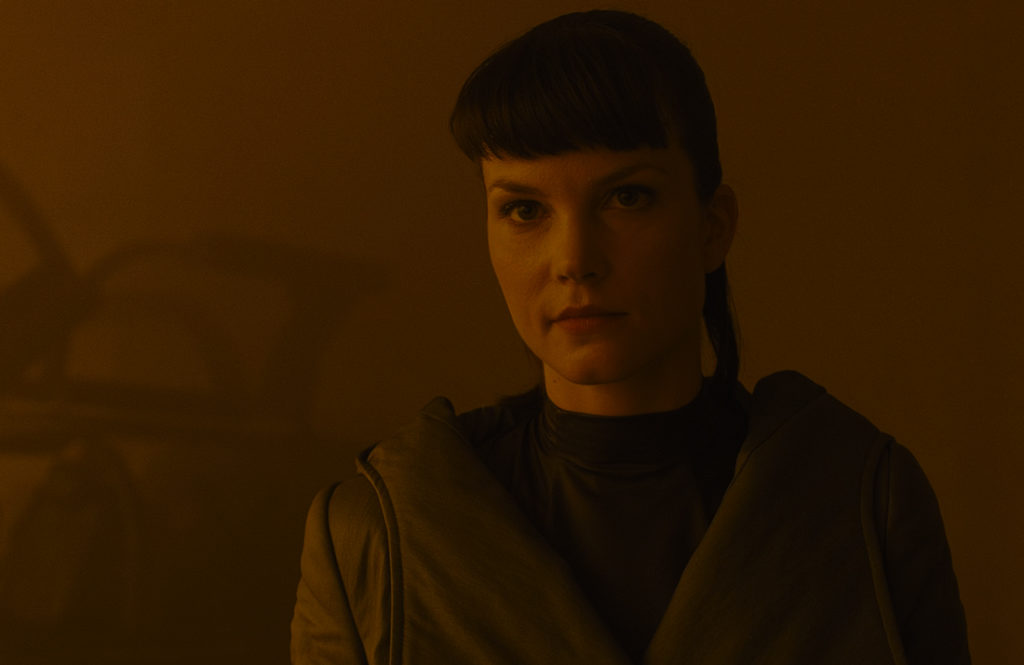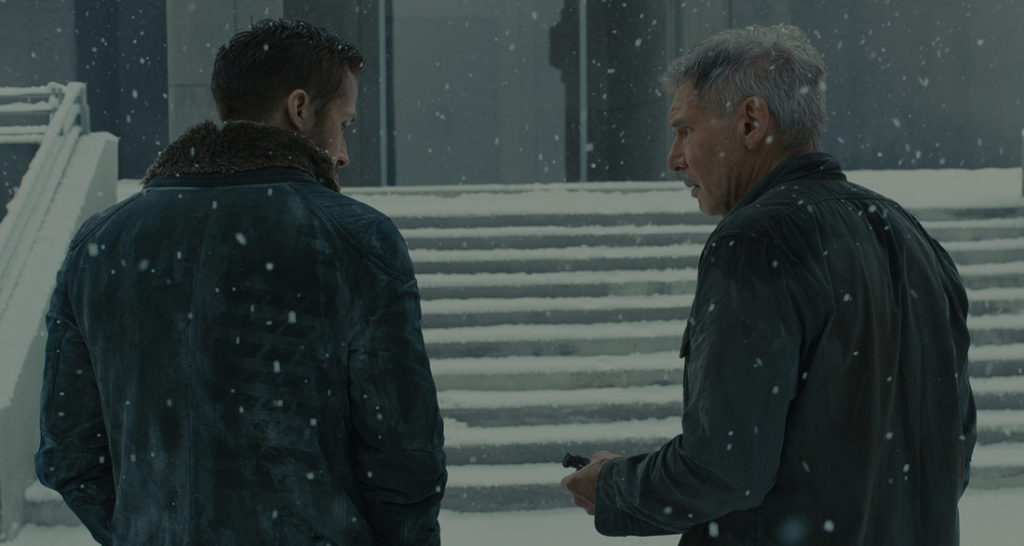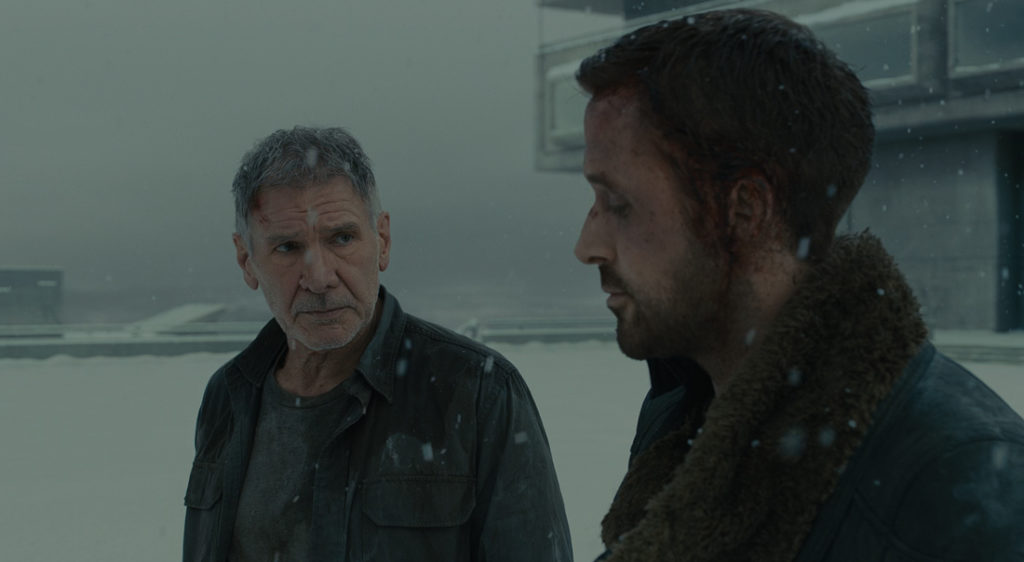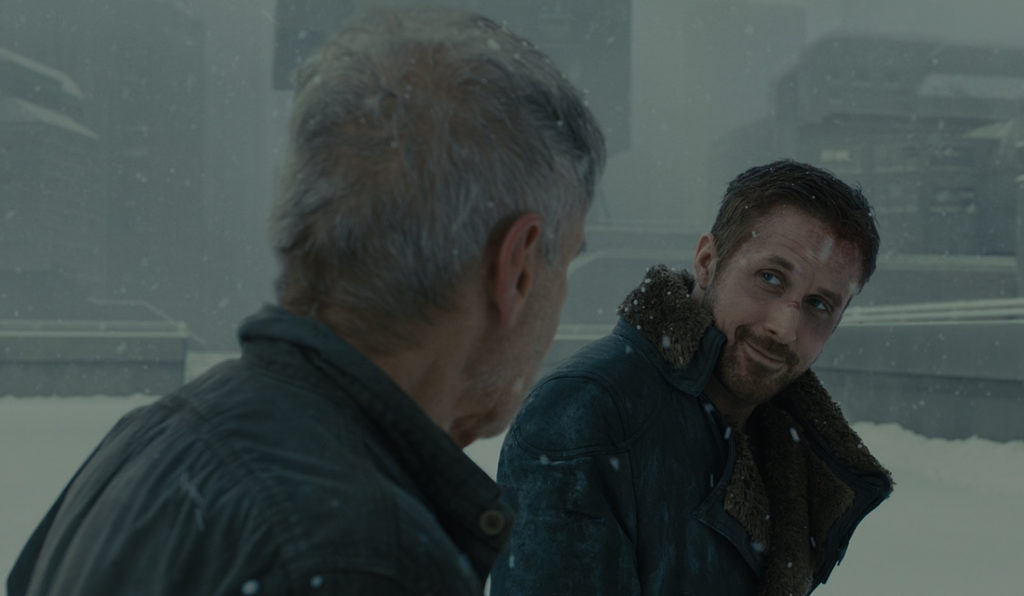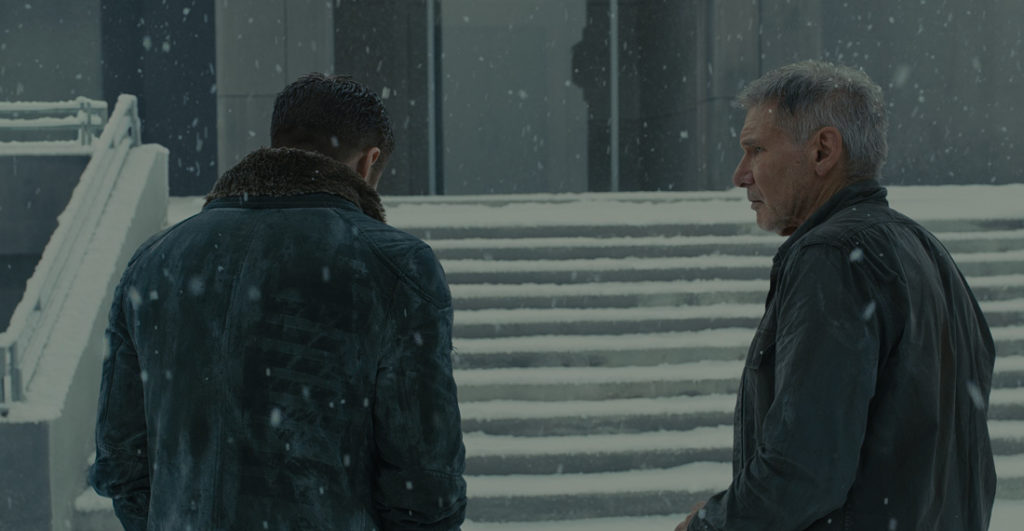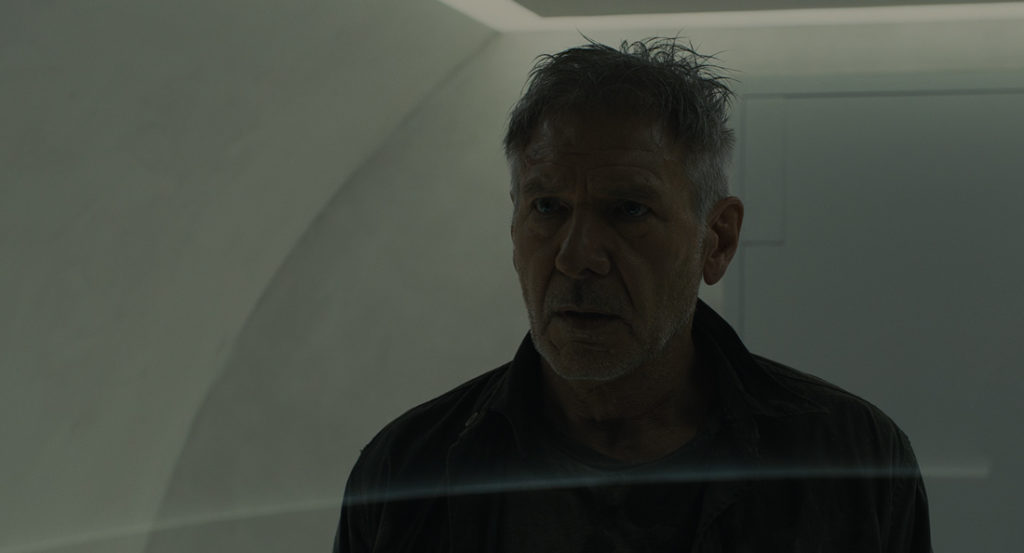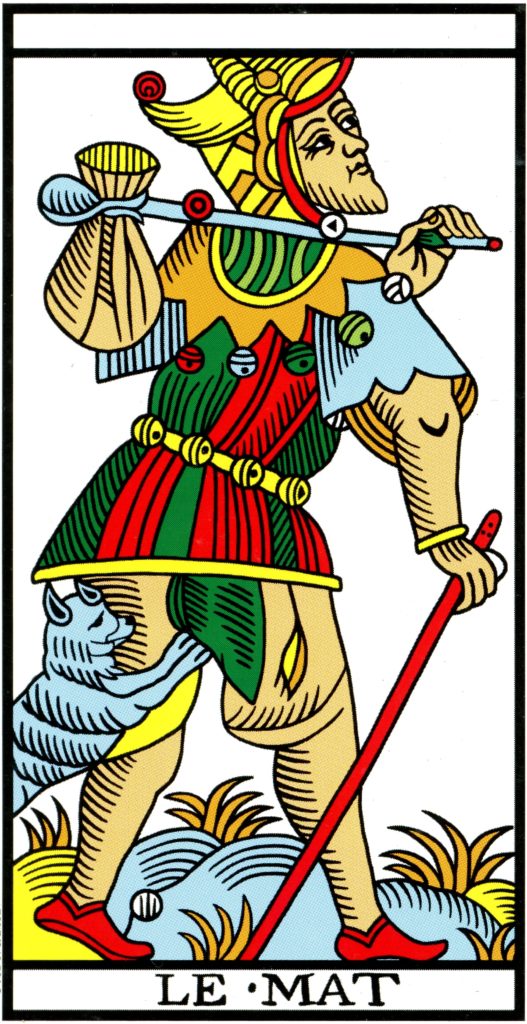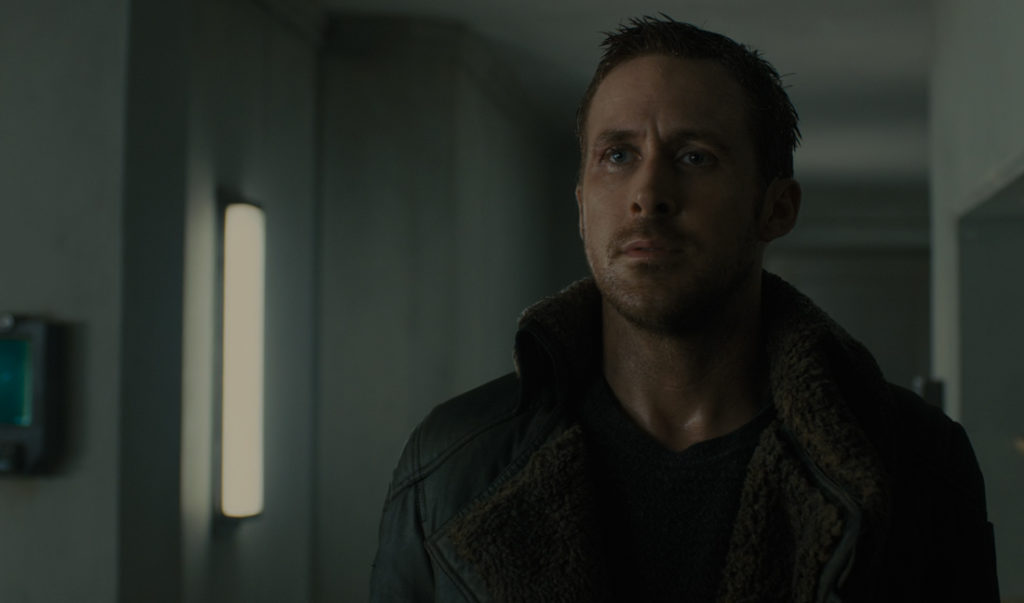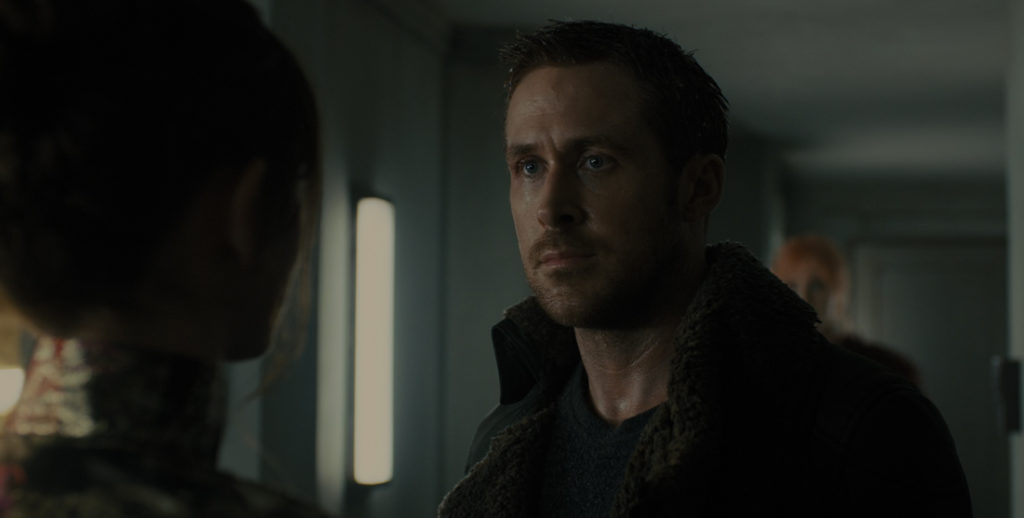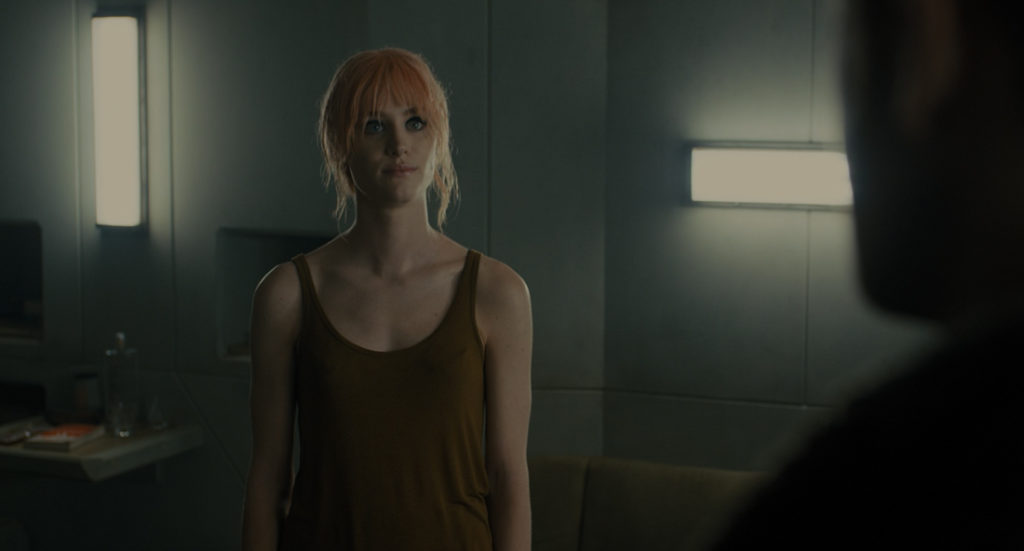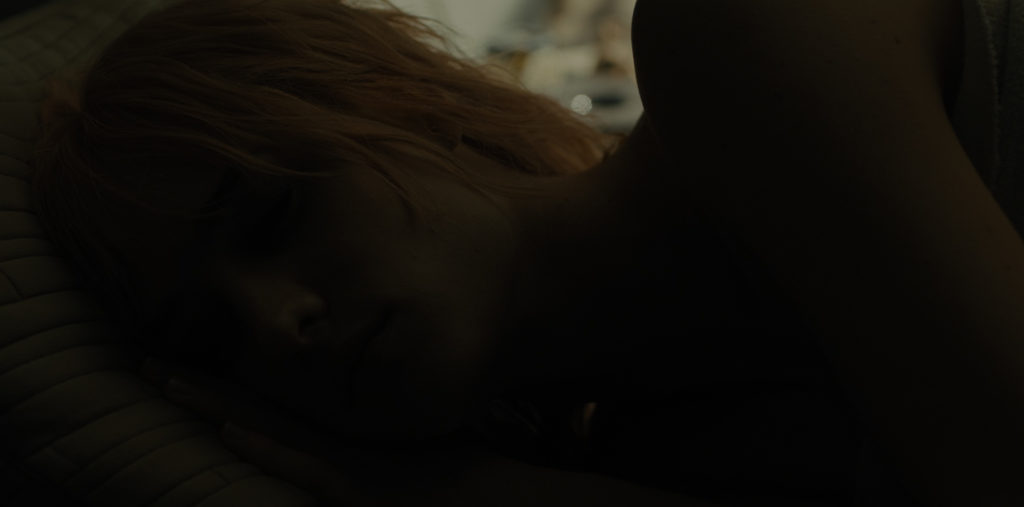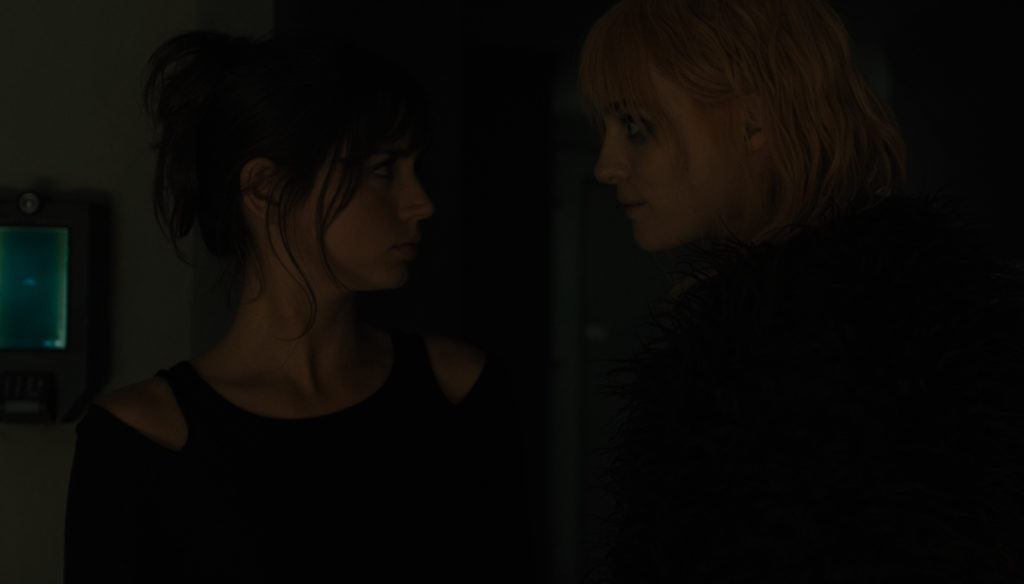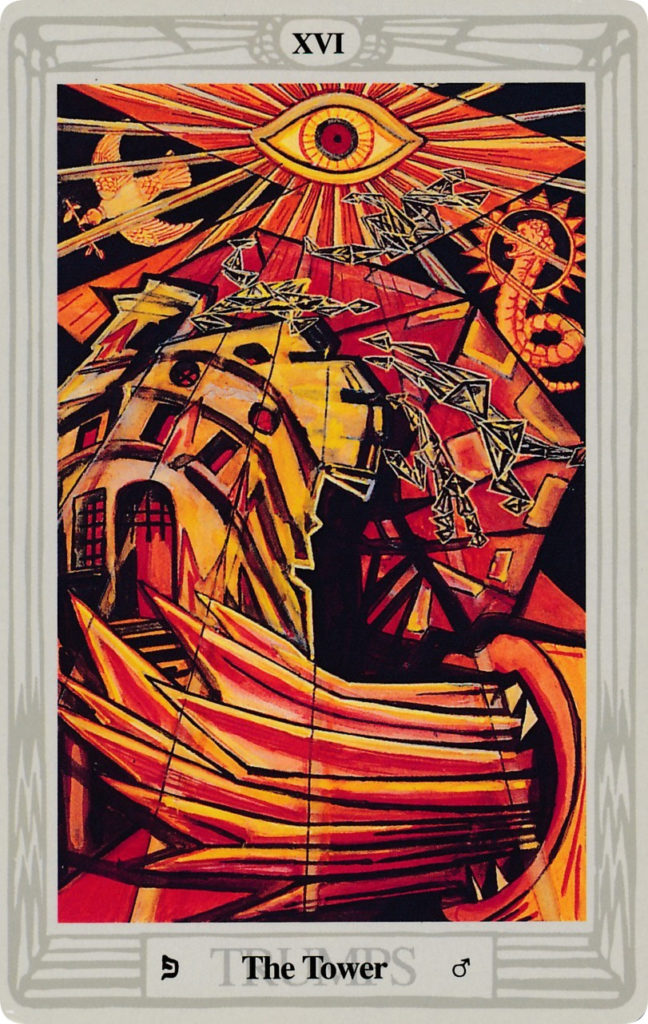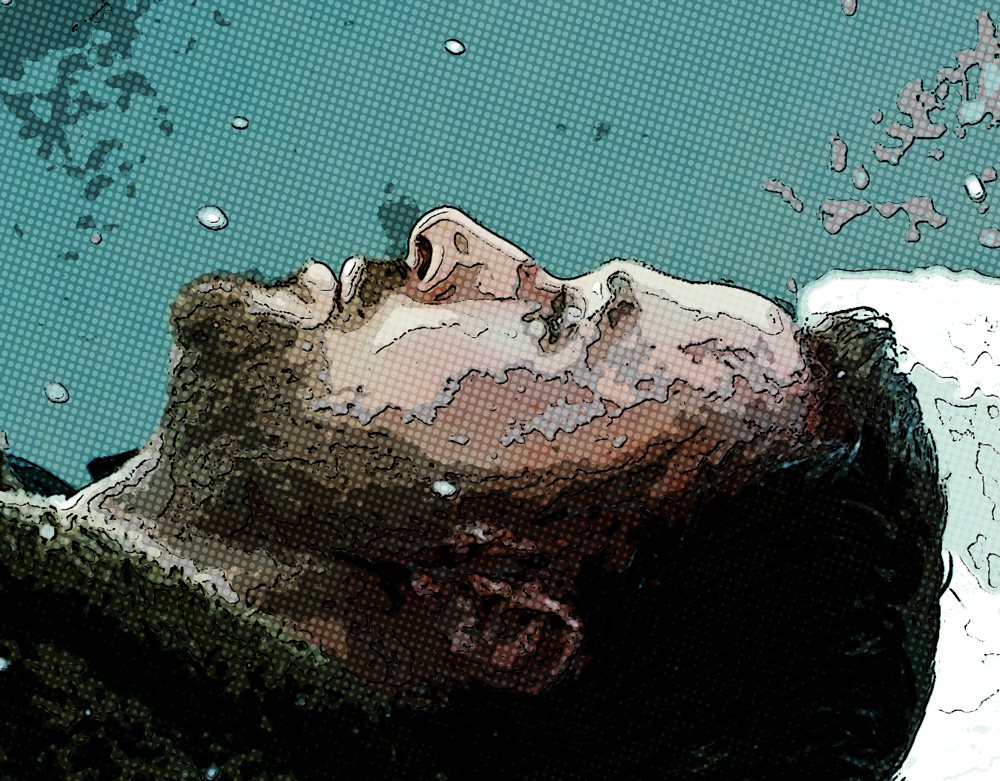
The mind can no more grasp transcendent philosophy than the eye can see music.
– Diane Fortune
Talking about “That” tathata:
How can one begin to talk about Tathata (That)? What can one say? Where does one begin? How does one describe color to a blind man or music to the deaf? It is said, the closer to the truth one gets the more insane one will sound. On top of that, I haven’t written in a long while, but I suppose I never really wrote and all I ever done was only translated what was around me. So, to begin again, this time, I listened, really listened and I found tathata I am beginning to understand some truths about this game of life, at least to me. Before I share anything, I will let Diane Fortune explain how futile it is to talk about tathata:
The esotericist, when endeavouring to formulate his philosophy for communication to others, is confronted by the fact that his knowledge of the higher forms of existence is obtained by a process other than thought; and this process only commences when thought is left behind. Consequently it is only in that region of consciousness which transcends thought that the highest form of transcendental ideas is known and understood; and it is only to those who are able to use this aspect of consciousness that he can communicate his ideas in their original form. When he wants to communicate these ideas to those who have had no experience of this mode of consciousness, he must either crystallise them into form or fail to convey any adequate impression. Mystics have used every imaginable simile in the endeavour to convey their impressions; philosophers have lost themselves in a maze of words; and all to no purpose so far as the unilluminated soul is concerned.
There is nothing I or anyone can say or describe that would be of any practical help for anyone trying to discover their own truth, but to quote Chairman Mao, “The need to shit after eating does not make eating a waste of time.” With that in mind, there is no need to beat around the bush. I will try and summarize what all tathata really means to me along with sharing some ideas about philosophy and movies with you along the way. To begin I will start with the first story that pointed me in the right direction by Bruce Lee:
A learned man once went to visit a Zen teacher to inquire about Zen. As the Zen teacher talked, the learned man frequently interrupted to express his own opinion about this or that. Finally, the Zen teacher stopped talking and began to serve tea to the learned man. He poured the cup full, then kept pouring until the cup overflowed.
“Stop,” said the learned man. “The cup is full, no more can be poured in.” “Like this cup, you are full of your own opinions,” replied the Zen teacher.
“If you do not first empty your cup, how can you taste my cup of tea?”
Here, I am just another finger pointing at the moon; another blind man leading the blind… Hence I humbly apologize for the path here is a long and winding one. I just hope you would permit me your time/patience and approach all of these following words ‘with an empty cup’ and withhold judgement until you reach the very end, perhaps in doing so be rewarded in return with what little that these words can provide…
Asankhya – Counting to Infinity:
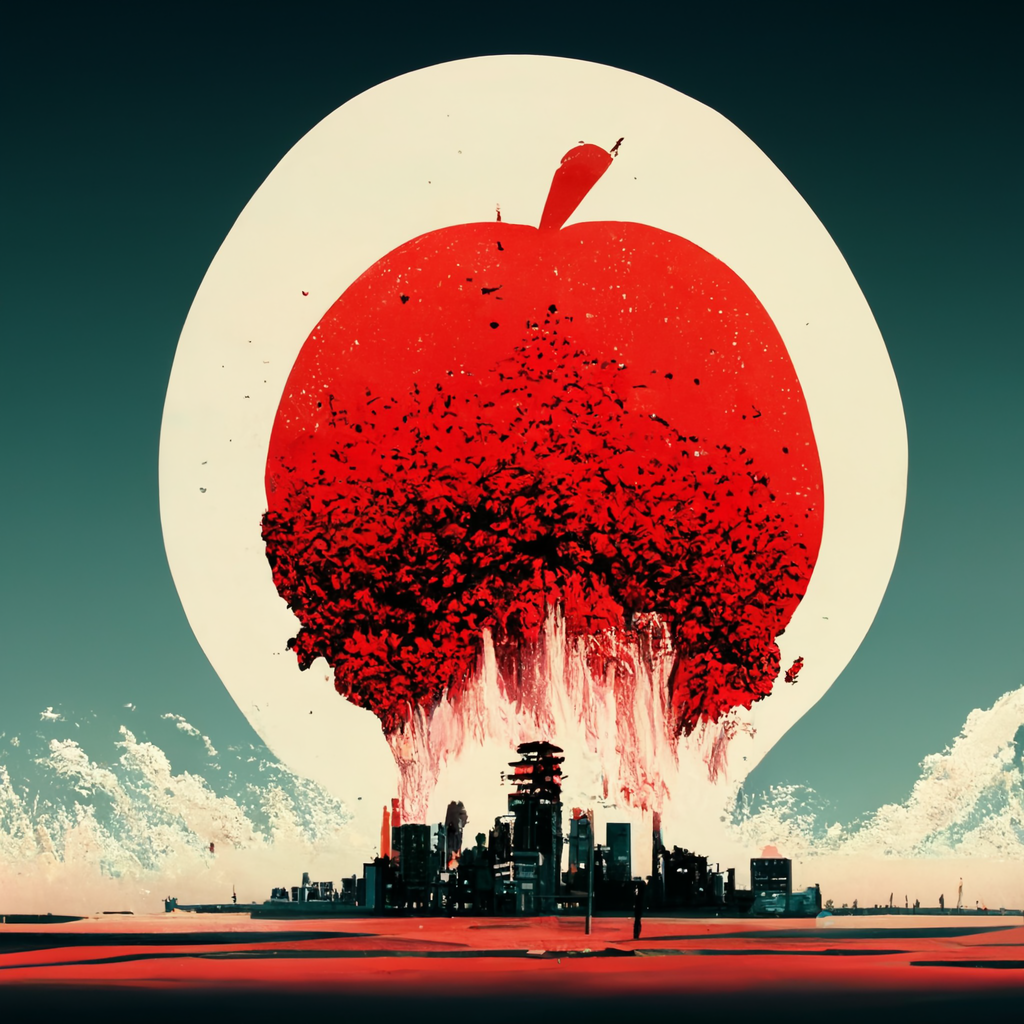
Imagine you have never tasted an apple before. In that state one can try to convey all that an apple is to you through essays, pictures, diagrams, and symbols. In the end, regardless of how elaborate and intricate the method of conveyance, what the experience of an apple is can only be obtained at the moment you bite into it. As you bite into the apple, the sticky juices fill your senses. From the textures, the crispness, to the floral scent and tart sweetness. In that one moment, you finally have a glimpse of what an apple is. A small crystal or projection of the concept of the apple which was completely indescribable, something beyond the limits of the human language; a pure moment – an experience. But even with that experience, it’s only a small glimmer of the totality of an apple. From that one experience, you begin to unravel the full idea of the apple through all its social, historical, economical and scientific modes of existence. In that one moment of taking a bite out of the apple: you are experiencing the millions of years of evolution and selective breeding that has produced the fruits we eat today. From every leaf, to the bark, to the wood, to the years upon years of collecting sunlight, and the millions of years of evolution to refine the process of photosynthesis; to the water, storm and rain cycles and the regenerative life of soils; the bees and vast networks of pollination; the wind, the air, the millions upon millions of microbes and insects that made the apple tree’s life and birth and re-birth possible. All the multi-various unaccountable networks of connections – all glimpsed in that single moment. In that instant, you are experiencing the whole of western military industrial complex, globalization and modern capitalism; the vast industries and conglomerates of agriculture, food production from industrial farming and to entities like Monsanto. From international shipping and trade channels; to supermarket chains to the oil industry which keeps everything moving; to the very form and shapes of our cities and their infrastructures and sources of energy. From one minute instance, a simple experience of an apple, your conception of its idea begins to unravel your very awareness of the entire world which has made the very experience of the apple possible. As your every unraveling consciousness of the apple continues to grow, your awareness of the apple brings your focus to the most outer limits of human thought; to the formation of the basic substances of the universe from the unknown forces of dark energy and matter; to the cooling of the earth from the beginning of our solar system; to the creation of our moon from cataclysm to shape it exactly one fourth the size of earth; to the exactly 400 times distance from the sun in which allows for the right climatic conditions for full solar/lunar eclipses, or conditions to sustain human life; to the extraterrestrial emergence of water on our planet; to the very spot and alignment of all our planets in our solar system in relation to our spot in the milky way amongst the countless numbers of galaxies in our known and unknown expanding universe as everything hurdles at space bending speeds into the vast cold darkness of creation. This very conception of the apple has expanded your awareness to all micro and macro relationships eventually leading you back to the very beginning of the experience; you experiencing what an apple is for the very first time. From this perspective, of your new expanded consciousness, you can finally see yourself like never before. Not just as your individual self, but as the sum of all the relationships that has led you to the possibility of experiencing the apple at that moment and your place amongst everything else as a connected whole. In that light, what you experience when you took a bite out of the apple is not just an apple itself but what you are experiencing is the whole of the universe as well. Likewise, every extraordinary to the most drab and mundane acts of your everyday conscious life can be seen in that same light; your every experience, every act, regardless of your awareness, contains within it the whole of the universe. You, the self, exists not as a separate individual but only as the center of all of existence in the fabric of relationships that our conscious universe consists of…
If you awaken from this illusion and you understand that black implies white, self implies other, life implies death (or shall I say death implies life?), you can feel yourself – not as a stranger in the world, not as something here on probation, not as something that has arrived here by fluke... But you can begin to feel your own existence as absolutely fundamental. I am not trying to sell you on this idea in the sense of converting you to it, I want you to play with it. I want you to think of its possibilities, I am not trying to prove it. I am just putting it forward as a possibility of life to think about. So then, let’s suppose that you were able every night to dream any dream you wanted to dream, and that you could for example have the power within one night to dream 75 years of time, or any length of time you wanted to have. And you would, naturally, as you began on this adventure of dreams, you would fulfill all your wishes. You would have every kind of pleasure during your sleep. And after several nights of 75 years of total pleasure each you would say “Well that was pretty great”. But now let’s have a surprise, let’s have a dream which isn’t under control, where something is gonna happen to me that I don’t know what it's gonna be. And you would dig that and would come out of that and you would say “Wow that was a close shave, wasn’t it?”. Then you would get more and more adventurous and you would make further- and further-out gambles what you would dream. And finally, you would dream where you are now. You would dream the dream of living the life that you are actually living today. That would be within the infinite multiplicity of choices you would have. Of playing that you weren't god, because the whole nature of the godhead, according to this idea, is to play that he is not. So in this idea then, everybody is fundamentally the ultimate reality, not god in a politically kingly sense, but god in the sense of being the self, the deep-down basic whatever there is. And you are all that, only you are pretending you are not...
Tathata is what I am trying to talk about; this example of a quantum leap of thought from just an experience of eating an apple and your self realization as the experience: the thing that is indescribable in words, an experience only known to those in history deemed to be “enlightened”. This lesson has been rearticulated in endless ways so I will save us all some time and get straight to the point: the experience of “enlightenment” that is spoken of throughout public and esoteric spiritual practices is the realization that there is no self. The self as you know it, only exists as part of the endless sum of parts that composes our universe. Your conscious is the conscious components of the divine substance which is constantly recycled to make up all the known universe as it begins and ends ad-infinity. In other words, not only does the individual you don’t exist, but the you that does exist isn’t you, but its ‘God’ itself. Again, this is another quantum leap in thought, so perhaps, a more elegant articulation of this idea would make this concept more palatable. Here is Alan Watts’ elucidation of Vedanta philosophy or the Hindu teachings of the Upanishads through a simple children’s story:
There was never a time when the world began, because it goes round and round like a circle, and there is no place on a circle where it begins. Look at my watch, which tells the time; it goes round, and so the world repeats itself again and again. But just as the hour-hand of the watch goes up to twelve and down to six, so, too, there is day and night, waking and sleeping, living and dying, summer and winter. You can’t have any one of these without the other, because you wouldn’t be able to know what black is unless you had seen it side-by-side with white, or white unless side-by-side with black.
In the same way, there are times when the world is, and times when it isn’t, for if the world went on and on without rest for ever and ever, it would get horribly tired of itself. It comes and it goes. Now you see it; now you don’t. So because it doesn’t get tired of itself, it always comes back again after it disappears. It’s like your breath: it goes in and out, in and out, and if you try to hold it in all the time you feel terrible. It’s also like the game of hide-and-seek, because it’s always fun to find new ways of hiding, and to seek for someone who doesn’t always hide in the same place.
God also likes to play hide-and-seek, but because there is nothing outside God, he has no one but himself to play with. But he gets over this difficulty by pretending that he is not himself. This is his way of hiding from himself. He pretends that he is you and I and all the people in the world, all the animals, all the plants, all the rocks, and all the stars. In this way he has strange and wonderful adventures, some of which are terrible and frightening. But these are just like bad dreams, for when he wakes up they will disappear.
Now when God plays hide and pretends that he is you and I, he does it so well that it takes him a long time to remember where and how he hid himself. But that’s the whole fun of it—just what he wanted to do. He doesn’t want to find himself too quickly, for that would spoil the game. That is why it is so difficult for you and me to find out that we are God in disguise, pretending not to be himself. But when the game has gone on long enough, all of us will wake up, stop pretending, and remember that we are all one single Self—the God who is all that there is and who lives for ever and ever.
Of course, you must remember that God isn’t shaped like a person. People have skins and there is always something outside our skins. If there weren’t, we wouldn’t know the difference between what is inside and outside our bodies.
But God has no skin and no shape because there isn’t any outside to him. [With a sufficiently intelligent child, I illustrate this with a Möbius strip—a ring of paper tape twisted once in such a way that it has only one side and one edge.] The inside and the outside of God are the same. And though I have been talking about God as ‘he’ and not ‘she,’ God isn’t a man or a woman. I didn’t say ‘it’ because we usually say ‘it’ for things that aren’t alive.
God is the Self of the world, but you can’t see God for the same reason that, without a mirror, you can’t see your own eyes, and you certainly can’t bite your own teeth or look inside your head. Your self is that cleverly hidden because it is God hiding.
You may ask why God sometimes hides in the form of horrible people, or pretends to be people who suffer great disease and pain. Remember, first, that he isn’t really doing this to anyone but himself. Remember, too, that in almost all the stories you enjoy there have to be bad people as well as good people, for the thrill of the tale is to find out how the good people will get the better of the bad. It’s the same as when we play cards. At the beginning of the game we shuffle them all into a mess, which is like the bad things in the world, but the point of the game is to put the mess into good order, and the one who does it best is the winner. Then we shuffle the cards once more and play again, and so it goes with the world.
Again, we may see this explanation articulated by Watts seen in another light. These propositions may seem too outlandish and nonsensical, but the concept that our realities are a simulated game is nothing new. In a purely materialist explanation, these ideas are a very common trope found in many science fiction stories and modern popular cultural references that allude to the idea of Simulation Theory or Simulation Hypothesis (https://en.wikipedia.org/wiki/Simulation_hypothesis). All these concepts were all very charming and entertainingly illustrated in the episode of Rick and Morty season 6 episode 2, “Rick: A Mort Well Lived”. To summarize the episode, Rick tries to save his grandson that is trapped in an advanced video game in an arcade that has been taken hostage by space terrorists; Rick hopes to extract Morty out of the game before they can threaten the arcade and possibly killing Morty in the process. In the story, the character Morty as producer Steve Levy would put it, “is split up into billions of different NPCs” inside the arcade game. Rick enters the game as a character himself, and tries to convince the billions of characters in the game (all Mortys) to organize and leave the game. Rick explains that each of their relative identities don’t exist, and that they are all part of a fractured mind of a 14-year-old boy, which is his grandson (Morty), stuck in a video game. Not wanting to ruin the experience, I highly recommend you checking out the entertaining episode yourself: https://www.namasha.com/v/ckVlvoKl/Rick_And_Morty_Season_6_Episode_2
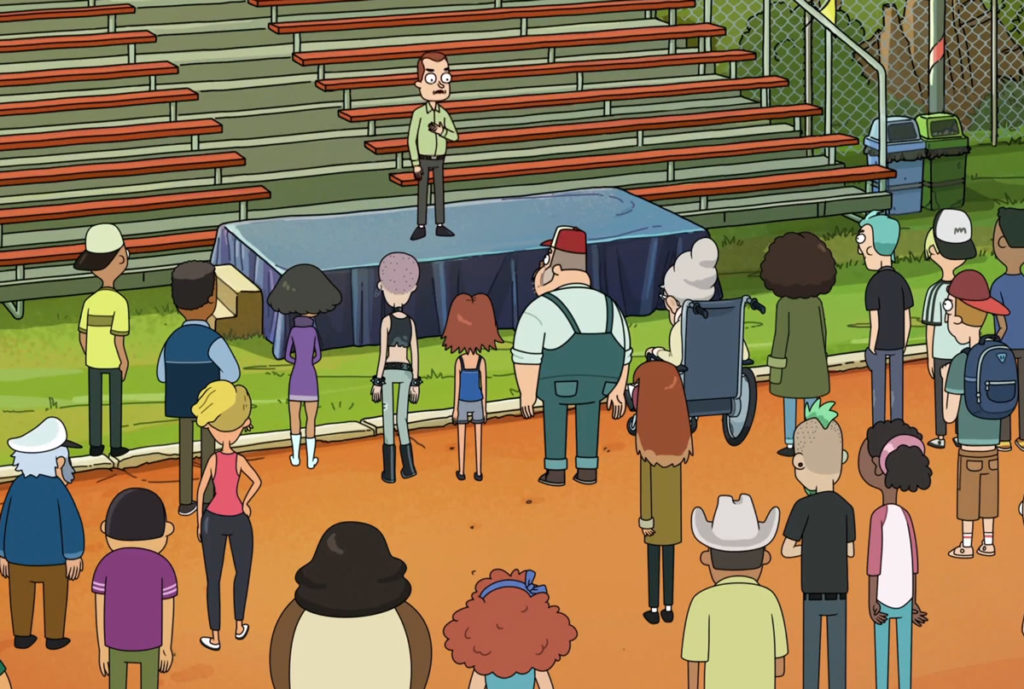

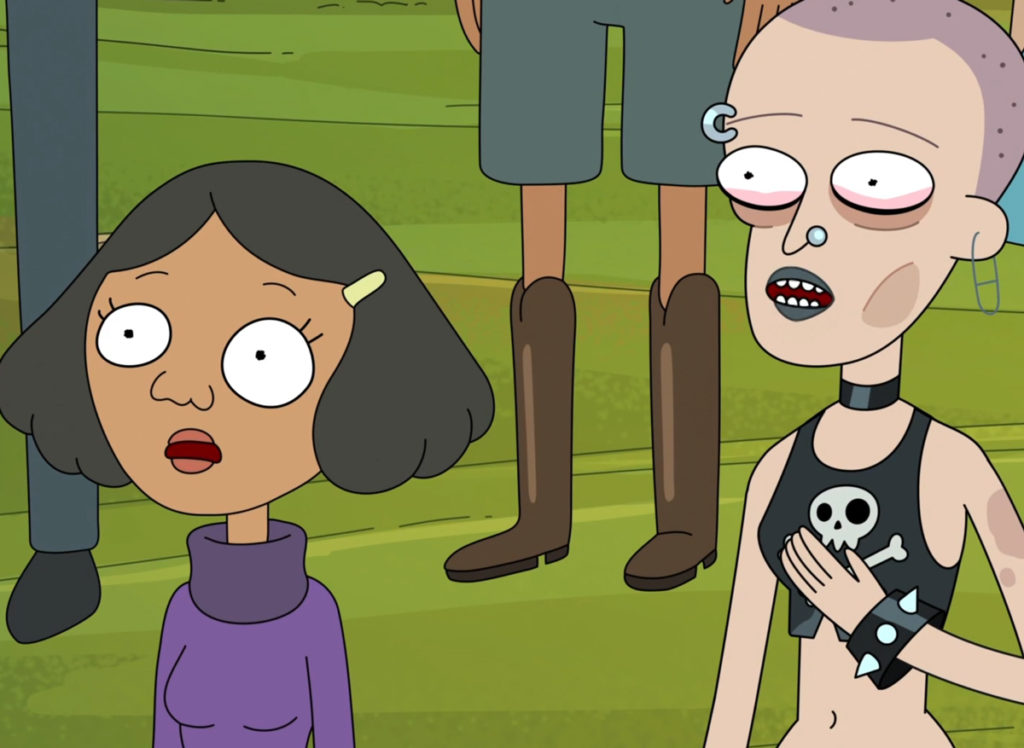
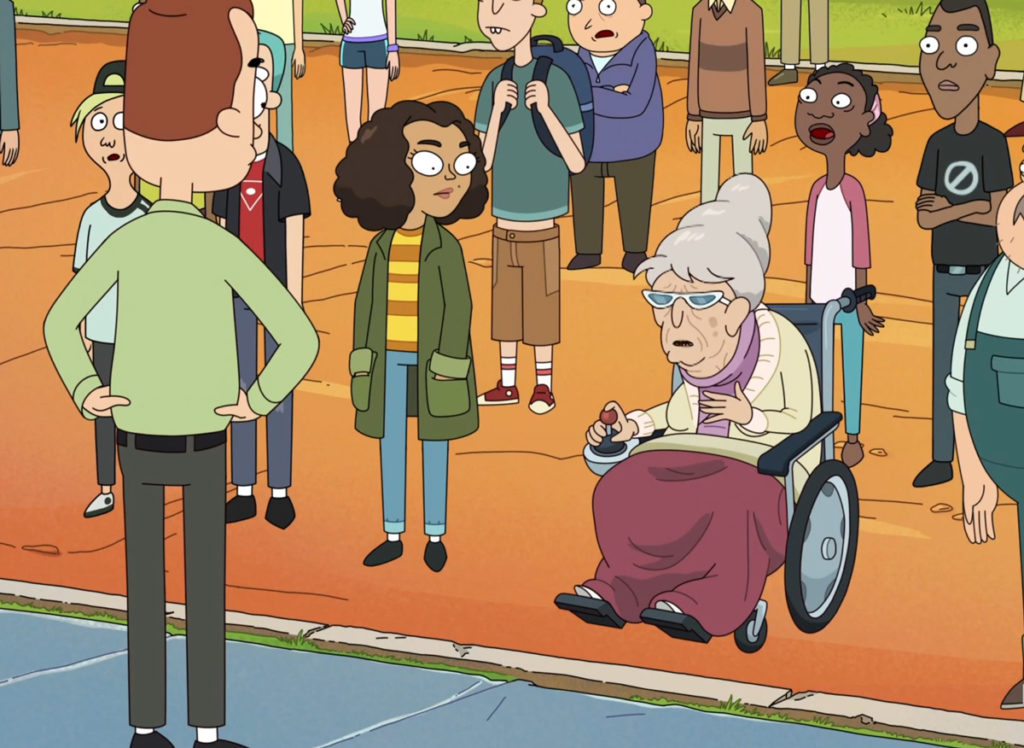

The importance of the ideas this is animated comedy highlights cannot be over stated. To quote the comic book character Lex Luthor from the Superman Franchise, “some people can read War and Peace and come away thinking it’s a simple adventure story. Others can read the ingredients on a chewing gum wrapper and unlock the secrets of the universe”. Tathata which I am trying to convey requires one to escape conventional hierarchical modes of thought. As expressed by Alejandro Jodorowsky, “The divine secret is not hidden, it is right in front of us. Whether we see it or not depends upon the attention we give to observing the details and establishing ties between them.” This outrageous cartoon brings to light two crucial aspects, the first one is the very nature of our reality. Here Watts would advise his readers to discover these truths about their reality themselves:
Open a good, standard textbook on quantum theory:
… the world cannot be analyzed correctly into distinct parts; instead, it must be regarded as an indivisible unit in which separate parts appear as valid approximations only in the classical [i.e., Newtonian] limit.… Thus, at the quantum level of accuracy, an object does not have any “intrinsic” properties (for instance, wave or particle) belonging to itself alone; instead, it shares all its properties mutually and indivisibly with the systems with which it interacts. Moreover, because a given object, such as an electron, interacts at different times with different systems that bring out different potentialities, it undergoes … continual transformation between the various forms (for instance, wave or particle form) in which it can manifest itself.
Although such fluidity and dependence of form on the environment have not been found, before the advent of quantum theory, at the level of elementary particles in physics, they are not uncommon … in fields, such as biology, which deal with complex systems. Thus, under suitable environmental conditions, a bacterium can develop into a spore stage, which is completely different in structure, and vice versa.
Then there is the other, complementary, side of the picture as presented by the eminent biophysicist Erwin Schrödinger:
It is not possible that this unity of knowledge, feeling and choice which you call your own should have sprung into being from nothingness at a given moment not so long ago; rather this knowledge, feeling and choice are essentially eternal and unchangeable and numerically one in all men, nay in all sensitive beings. But not in this sense—that you are a part, a piece, of an eternal, infinite being, an aspect or modification of it, as in Spinoza’s pantheism. For we should have the same baffling question: which part, which aspect are you? What, objectively, differentiates it from the others? No, but inconceivable as it seems to ordinary reason, you—and all other conscious beings as such—are all in all. Hence this life of yours which you are living is not merely a piece of the entire existence, but is in a certain sense the whole; only this whole is not so constituted that it can be surveyed in one single glance.
The universe implies the organism, and each single organism implies the universe—only the “single glance” of our spotlight, narrowed attention, which has been taught to confuse its glimpses with separate “things,” must somehow be opened to the full vision, which Schrödinger goes on to suggest:
Thus you can throw yourself flat on the ground, stretched out upon Mother Earth, with the certain conviction that you are one with her and she with you. You are as firmly established, as invulnerable as she, indeed a thousand times firmer and more invulnerable. As surely as she will engulf you tomorrow, so surely will she bring you forth anew to new striving and suffering. And not merely ‘some day’: now, today, every day she is bringing you forth, not once but thousands upon thousands of times, just as every day she engulfs you a thousand times over. For eternally and always there is only now, one and the same now; the present is the only thing that has no end.
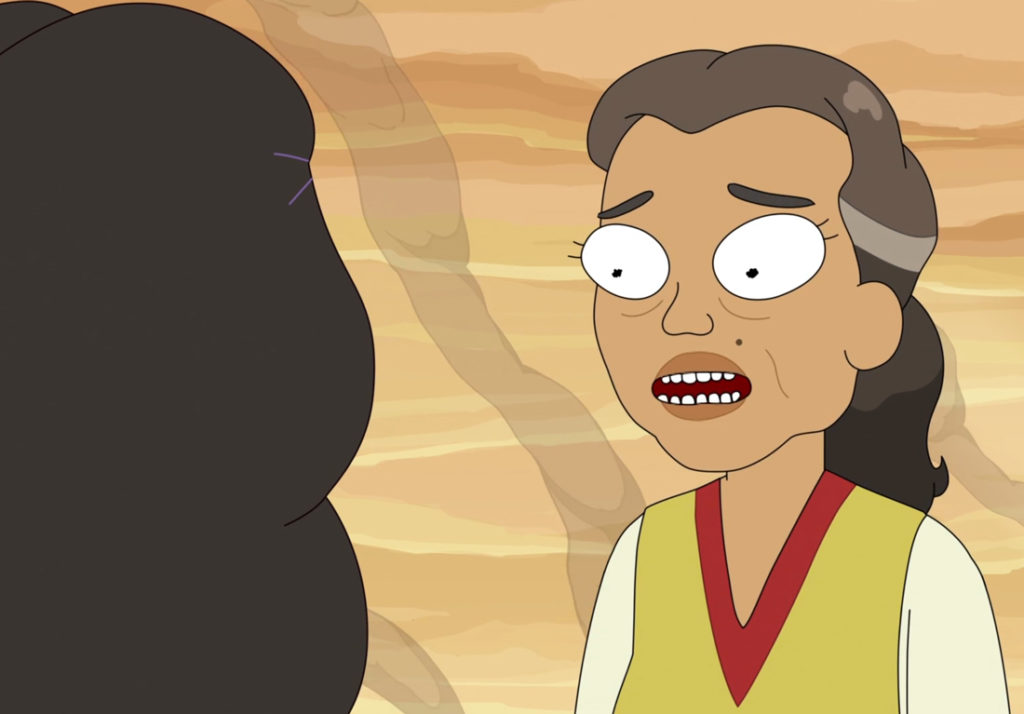
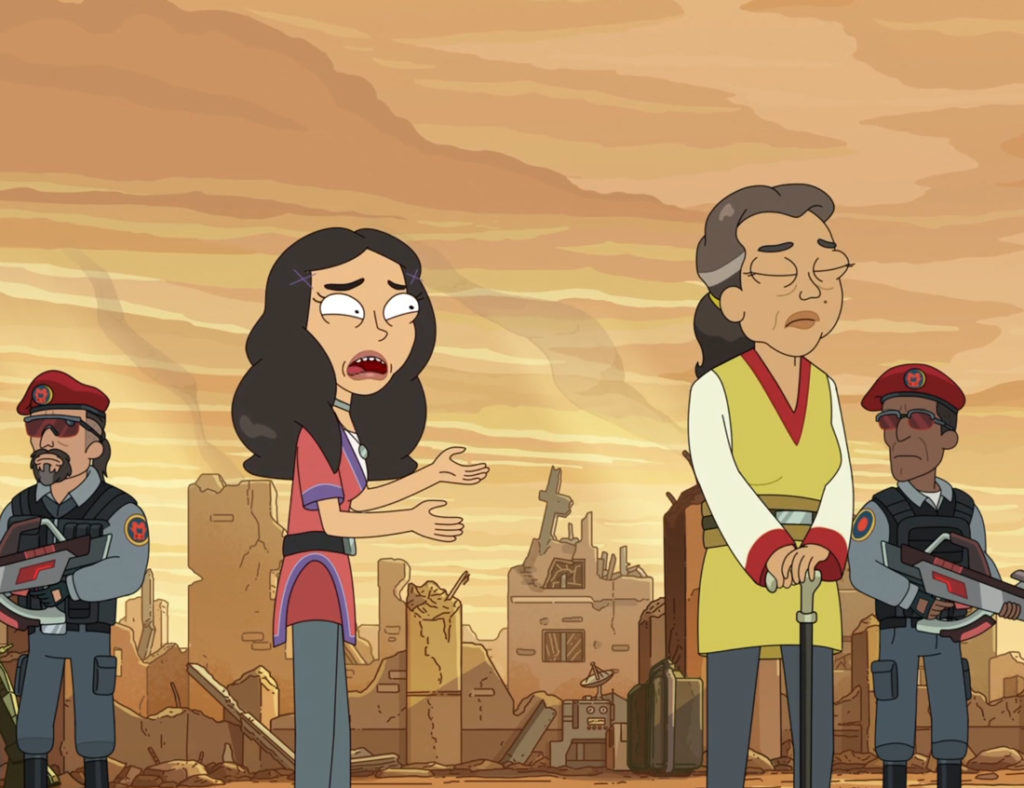
The second crucial aspect this comedic animation brought to light is that this realization on its very surface is a depressing one. Especially in the face of its proposition that the state of our known/unknown reality is “merely” a simulation and our very existence are only an extension of it. Hence the importance of comedy is what I want to emphasize here, which was perfectly captured in the episode. Even in its comedic light, it resolves its very own paradoxical propositions throughout the episode and (spoiler alert) Morty does free himself from the video game even though all the NPCs realize that they are nothing more than a 14-year-old-boy.
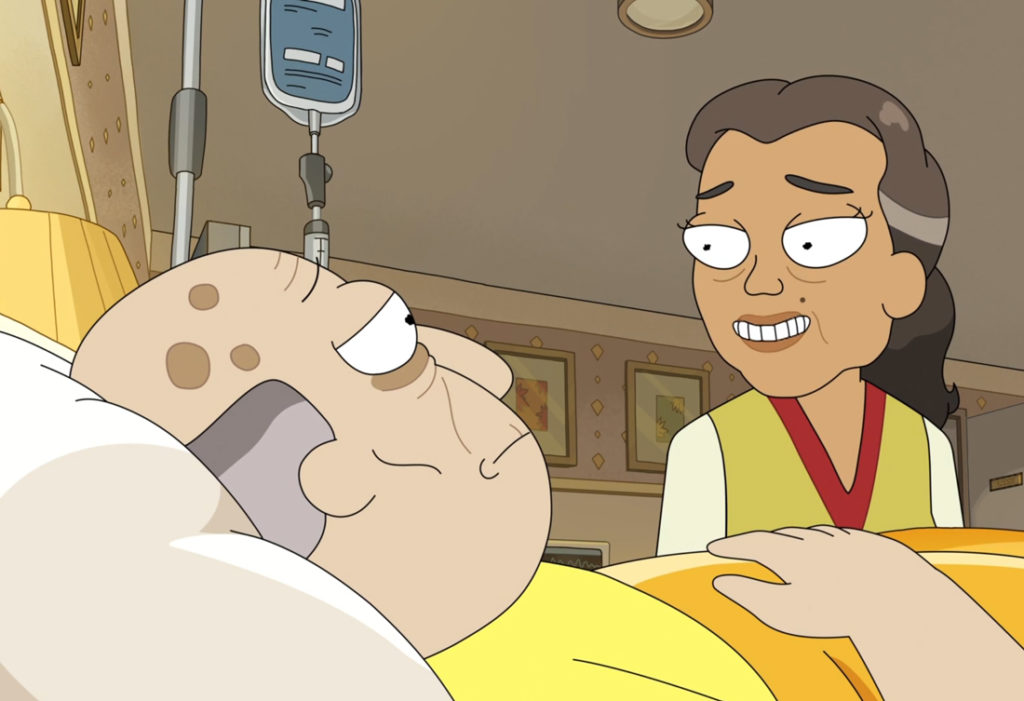


“Best Daughter Ever…
As one takes their individual paths to self-truth, it is critical to arm oneself with this sense of awareness and humor as the cosmic perspective that becomes open to those with this revelation is a stark one, like all truths, there is a cost to it. As Watts would put it:
Yet we can still awaken the sense that all this, too, is the self—a self, however, which is far beyond the image of the ego, or of the human body as limited by the skin. We then behold the Self wherever we look, and its image is the universe in its light and in its darkness, in its bodies and in its spaces. This is the new image of man, but it is still an image. For there remains—to use dualistic words—“behind,” “under,” “encompassing,” and “central” to it all the unthinkable IT, polarizing itself in the visible contrasts of waves and troughs, solids and spaces. But the odd thing is that this IT, however inconceivable, is no vapid abstraction: it is very simply and truly yourself.
In the words of a Chinese Zen master, “Nothing is left to you at this moment but to have a good laugh!” As James Broughton put it:
This is It and I am It and You are It and so is That and He is It and She is It and It is It and That is That.
True humor is, indeed, laughter at one’s Self—at the Divine Comedy, the fabulous deception, whereby one comes to imagine that a creature in existence is not also of existence, that what man is is not also what everything is. All the time we “know it in our bones” but conscious attention, distracted by details and differences, cannot see the whole for the parts.
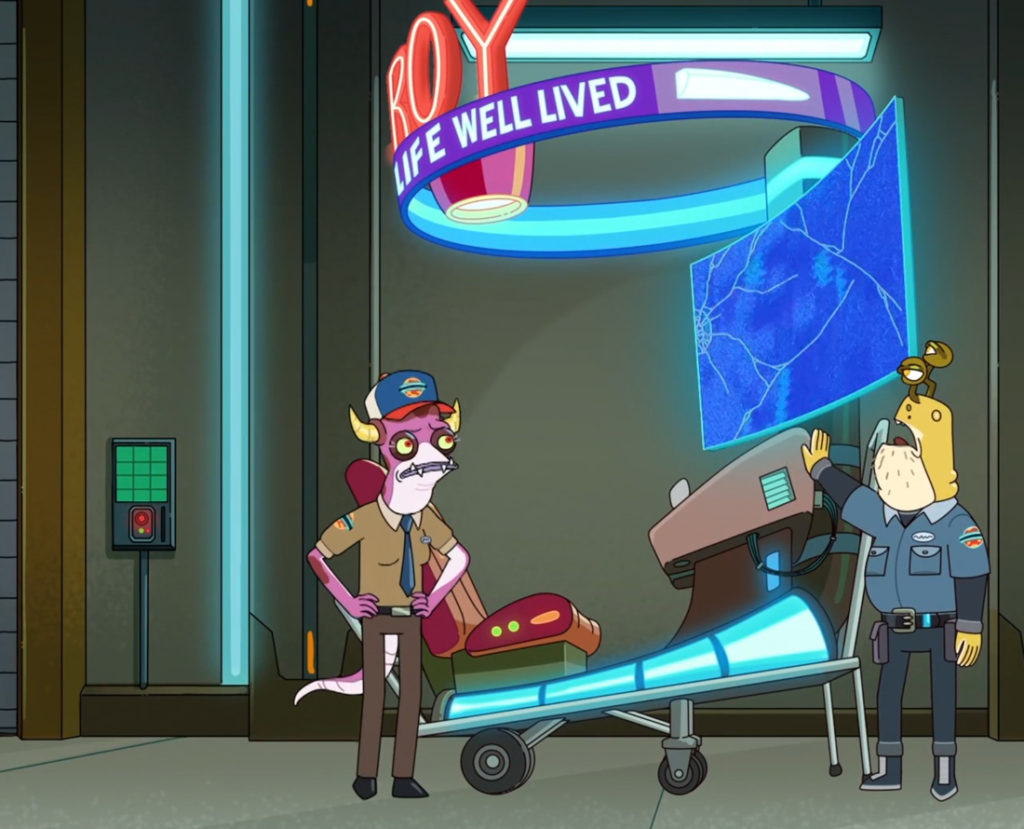
we’re just supposed to store it.
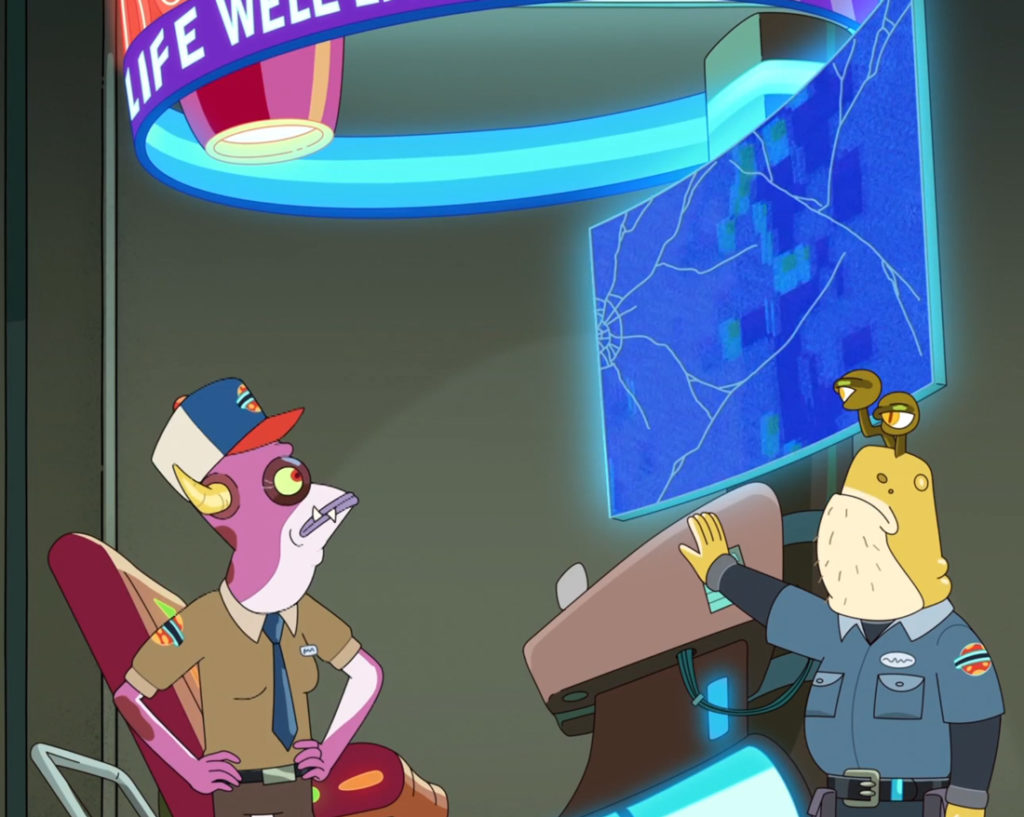
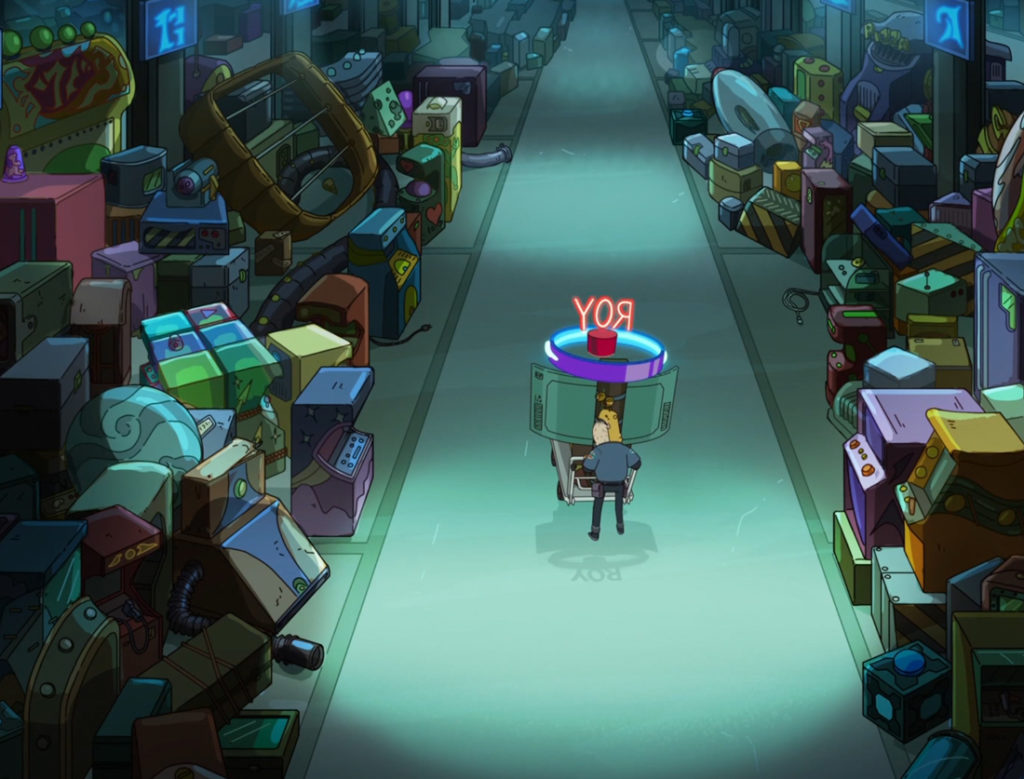
One critical thing to note on this idea that ‘you are God’ is that we are all God as well. This realization is only the first step of many that lay before you towards ‘self-truth’. Just like taking one’s first bite of an apple, it’s merely the first experience of the idea and far from its totality. Do not make the mistake of inflating one’s own ego with this realization or throw one’s life away in the delirium between the real and the Real. (Just read any typical definition of psychosis or schizophrenia…) To borrow much wiser words from the Kybalion:
But the Absolute point of view shows merely one side of the picture—the other side is the Relative one. Absolute Truth has been defined as “Things as the mind of god knows them,” while Relative Truth is “Thing as the highest reason of Man understands them.” And so while to THE ALL the Universe must be unreal and illusionary, a mere dream or result of meditation—nevertheless, to the finite minds forming a part of that Universe, and viewing it through mortal faculties, the Universe is very real indeed, and must be so considered. In recognizing the Absolute view, we must not make the mistake of ignoring or denying the facts and phenomena of the Universe as they present themselves to our mortal faculties—we are not THE ALL, remember…
Following the authority, let us avoid the half-wisdom (which is folly) which ignores the truth that: “Mastery consists not in abnormal dreams, visions, and fantastic imaginings or living, but in using the higher forces against the lower—escaping the pains of the lower planes by vibrating on the higher.” Remember always, student, that “Transmutation, not presumptuous denial, is the weapon of the Master.”…
We do not live in a world of dreams, but in an Universe which, while relative, is real so far as our lives and actions are concerned. Our business in the Universe is not to deny its existence, but to LIVE, using the Laws to rise from lower to higher—living on, doing the best that we can under the circumstances arising each day, and living, so far as is possible, to our highest ideas and ideals. The true Meaning of Life is not known to men on this plane—if, indeed, to any—but the highest authorities, and our own intuitions, teach us that we will make no mistake in living up to the best that is in us, so far as is possible, and realizing the Universal tendency in the same direction in spite of apparent evidences of the contrary. We are all on The Path—and the road leads upward ever, with frequent resting places.
Even with the realization that we are God, it was only a flash of truth, we are still back to where we started, only this time, we can begin to see ourselves in a wholly new light now ignited to us. So, what then does our revelation afford us? We are still bound by mortal laws and societal truths, yet knowing that one is God does provide some practical purpose when applied to our daily lives. One can summarize four main truths to help guide us in our expanded daily lives from those whom has walked this path before us…
“For me, the “dignitary” God, the primary actor of all sacred works, can have neither name nor human shape, nor sex nor age. He cannot be the exclusive property of any one religion. Whatever denomination or quality is attributed to him, it can never be anything but a superstitious approximation. He is impossible to define with concepts or images and inaccessible when pursued. Because he is all, it is absurd to try to give him something. The only possible solution: welcome him into yourself. But how can you do this if he is intangible and inconceivable? He is only received through the changes and transformations he brings to our lives in the form of mental clarity, amorous bliss, creative ability, health, and prosperity. If we imagine him as eternal, infinite, and all-powerful, it is only through comparison to what we think we are: finite, ephemeral, and impotent in the face of this transformation we have dubbed “death.” If everything is God and God does not die, then nothing dies. If everything is God and God is infinite, then nothing has limits. If everything is God and God is eternal, nothing has a beginning or an ending. If everything is God and God is omnipotent, nothing is impossible. Being incapable of naming or believing in Him—in That—I could still sense Him intuitively in my deepest depths; I could accept His will, the will that created the universe and its laws, and to imagine Him as an ally, no matter what happens. “I support you . . . I trust you . . .” That is all. I don’t need to say more; words are not the direct route. They can point out the way but cannot take you there. I accept being part of this incomprehensible mystery, this entity who is and is not, and who lacks all dimension and time. I accept surrendering to His designs and hoping that my existence is not a whim, a joke, an illusion, or a game, but an inexplicable necessity of His Work: to know that this impermanent impermanence forms part of what my mind imagines as the cosmic plan, to believe that by being an infinitesimal cog in an immeasurable machine I am taking part in His eternity, that this change my body calls “death” is the door I must go through to submerge myself in what my heart feels as total love, what my sexual center imagines as an endless orgasm, and what my intellect names “illuminated vacuity.” How does the Tarot present God to us? It presents Him as The Tower, the mysterious presence in which the universe dwells, and which, because we are united to it, is our body. We are the renters of a Master who feeds us, supports us, and keeps us alive for the span of time determined by His Will. We can make this safe refuge of a house into a garden or a garbage dump, a place where our creativity flourishes or a dark nook ruled by bad taste and stench; between these passive walls we can either procreate or commit suicide. The house does not have its own behavior, it is simply there, and its quality depends on how we use it. We can make it into a temple or a prison. The Tower shown us by the Tarot carries the treasure of immortality, but not as a gift. Humanity can only win it at this price. If it cannot succeed here, because of poor use of this gift, it is condemned to vanish.
Duhkha (Suffering—Frustration):
This complicated truth, is the first we introduce here as recounted by Alan Watts, in “The Way of Zen” and it goes as follows:
Birth is duhkha, decay is duhkha, sickness is duhka, death is duhkha, so also are sorrow and grief…. To be bound with things which we dislike, and to be parted from things which we like, these are also duhkha. Not to get what one desires, this is also duhkha. In a word, this body, this fivefold aggregation based on clutching (trishna), this is duhkha…
duhkha is one of the three characteristics of being, or becoming (bhava), whereof the other two are anitya, impermanence, and anatman, absence of any Self. These two terms are of basic importance. The anitya doctrine is, again, not quite the simple assertion that the world is impermanent, but rather that the more one grasps at the world, the more it changes. Reality in itself is neither permanent nor impermanent; it cannot be categorized. But when one tries to hold on to it, change is everywhere apparent, since, like one’s own shadow, the faster one pursues it, the faster it flees.
In the same way, the anatman doctrine is not quite the bald assertion that there is no real Self (atman) at the basis of our consciousness. The point is rather that there is no Self, or basic reality, which may be grasped, either by direct experience or by concepts. Apparently the Buddha felt that the doctrine of the atman in the Upanishads lent itself too easily to a fatal misinterpretation. It became an object of belief, a desideratum, a goal to be reached, something to which the mind could cling as its one final abode of safety in the flux of life. The Buddha’s view was that a Self so grasped was no longer the true Self, but only one more of the innumerable forms of maya. Thus anatman might be expressed in the form, “The true Self is non-Self,” since any attempt to conceive the Self, believe in the Self, or seek for the Self immediately thrusts it away.
It is fundamental to every school of Buddhism that there is no ego, no enduring entity which is the constant subject of our changing experiences. For the ego exists in an abstract sense alone, being an abstraction from memory, somewhat like the illusory circle of fire made by a whirling torch. We can, for example, imagine the path of a bird through the sky as a distinct line which it has taken. But this line is as abstract as a line of latitude. In concrete reality, the bird left no line, and, similarly, the past from which our ego is abstracted has entirely disappeared. Thus any attempt to cling to the ego or to make it an effective source of action is doomed to frustration.
Perhaps another way to understand and explain Duhkha would be to share one of my favorite action flicks of all time with you: the movie Crouching Tiger, Hidden Dragon was a masterpiece directed by Ang Lee in early 2000. The movie is focused on two main narratives of the lives of two polarized characters of Master Li Mu Bai (played by Chow Yun-Fat) and a wealthy lords daughter Jen (played by Zhang Ziyi) and the conflict created as their narratives begin to collide with one another. The story begins from two points, Master Li Mu Bai being a Taoist swordsman of the highest order retreats into seclusion and tries to reach the highest levels of Taoist enlightenment and fails forcing him back into civil life to resolve the karmic strands that still hold him to the societal realm (Jiang Hu). Jen, a wealthy lords’ daughter, has finally come of age and is ready to marry and fulfill her Confucius familial piety role as the daughter and wife-to-be in the typical wealthy Chinese nuclear family; a life and obligation/arrangement she is not willing to accept. These seemingly radically polarized characters meet when Li Mu Bai, in attempt to resolving his karmic past to reach enlightenment, gives up his prized Green Destiny sword and is then stolen by a thief who turns out to be Jen, as she carries out acts of rebellion in attempt to escape her own fate of marriage.
All the other characters play only as background roles to these two main struggles and offer a range or gradient to their polarized positions (aesthetic Taoist male master of violent past vs. wealthy spoiled well educated female daughter of a lord). Here you find a tale in the archetype of Jane Austin’s Pride and Prejudice reinterpreted in an extremely creative manner in the setting of nineteenth-century China near the end of the Qing dynasty. Unlike Pride and Prejudice this is not a love story, though love is a main theme to convey important ideas in the movie, but it does hinge on the pride and prejudices of each of the polarized positions of the characters. This movie’s main theme is on fate vs. freedom and each characters’ choices and sacrifices they have made in attempt to escape their own narratives or “Destinies” if you will (the object that brought their destinies together, a sword cutting through each individuals strands of fate, very symbolic). Another differing point compared to the Pride and Prejudice is that their inversion towards the other’s position (Pride to Prejudice and Prejudice to Pride) does not come about through the love affair between the two main male and female roles, but their own failed individual love lives; Master Li’s past with Yu Shu Lien, a fellow martial artist and goods trader played by Michelle Yeoh, and Jen’s love affair with the dessert bandit that robbed her, Lo, played by Chang Chen. The romance between Master Li and Yu Shu Lien fails revealing the obstacle is not in Li’s prejudice against Shu Lien’s societal/educational standing but his own pride, in not being able to let go of the death and murder of his teacher. In comparison, Jen and Los’ romance fails revealing not Jen’s pride in her social standing which stops her from having a normal life, but her own abstinence and prejudice in what freedom and an ideal carefree female life should look like.
There is a cardinal scene in the movie that summarizes the core of problem. Li Mu Bai and Yu Shu Lien are sitting in a tea hut enjoying each other’s company. In that moment both characters confront their feelings for each other:
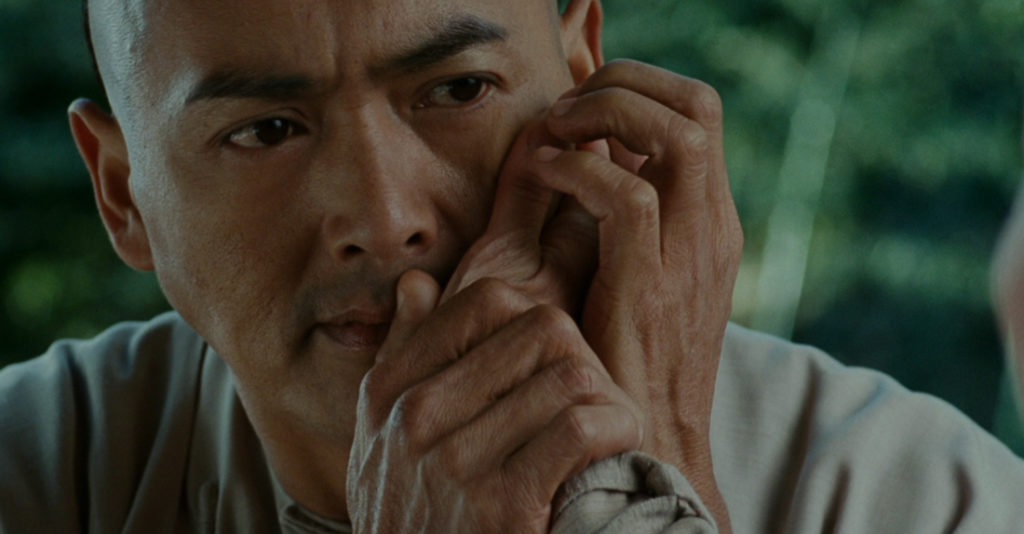
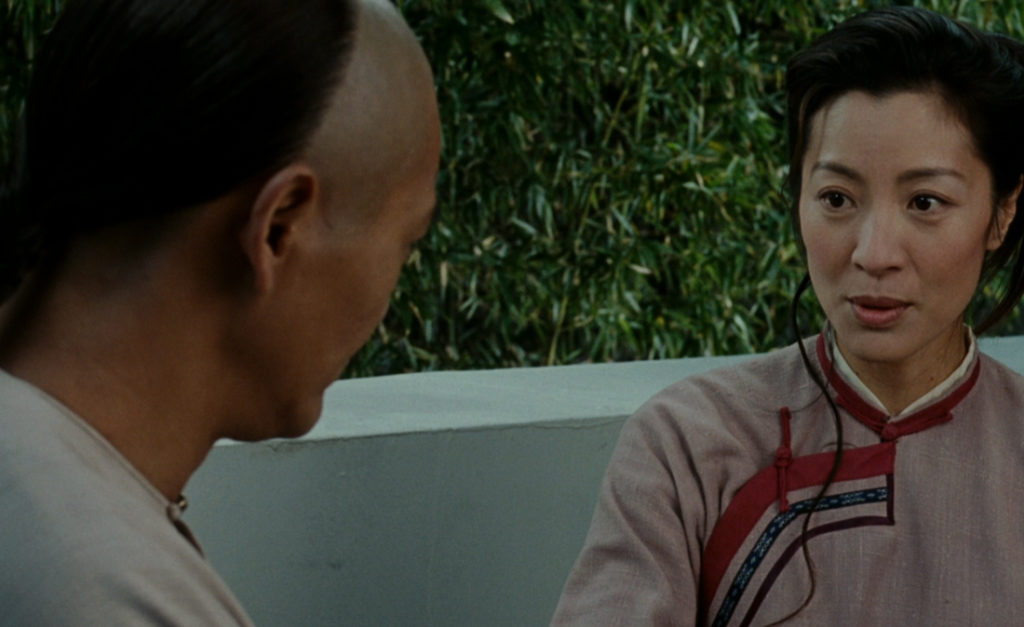
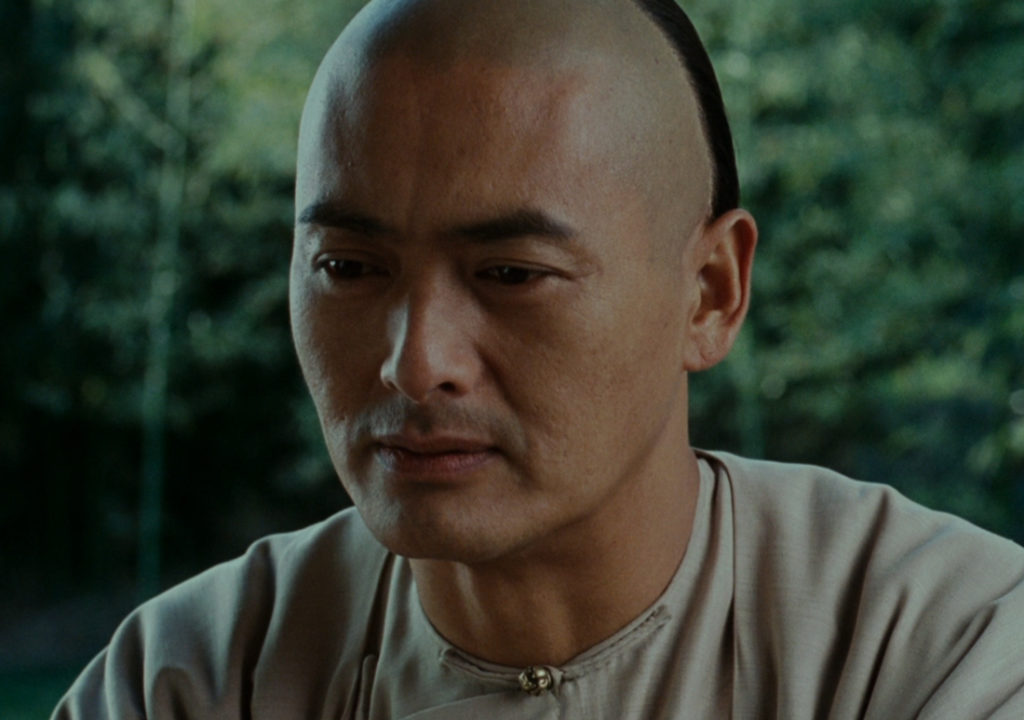
Let me illustrate with an example: Hold out your palm. Now clench hard, hold your hand into a tight fist. Look towards the closest object to you and try to grab hold of it with that hand without releasing your grip. You will find that it would be impossible. The harder you grasp the less you can hold. With a clench fist you can hold nothing, with an open palm you can hold everything; only by letting go can we hold on. Suffering/frustration is something that is unavoidable in life regardless of how hard one tries to avoid it. The characters’ lives in the movie are bound by duhkha. It doesn’t matter of one’s societal standing from man to woman, sage to royalty, it is inescapable. Here, Master Li professes his love, though genuine, he has hidden motives in his heart that would make that relationship impossible. As sincere as he was to leave the “Jiang Hu” or societal realm and give up the Green Destiny, all of that was already proven to be a lie given the fact that he failed to reach Taoist enlightenment, in reality throughout the entire movie he holds on to both things explicitly. Deep down in his heart, all he wants is to avenge his Master’s murder regardless of cost including his own life.





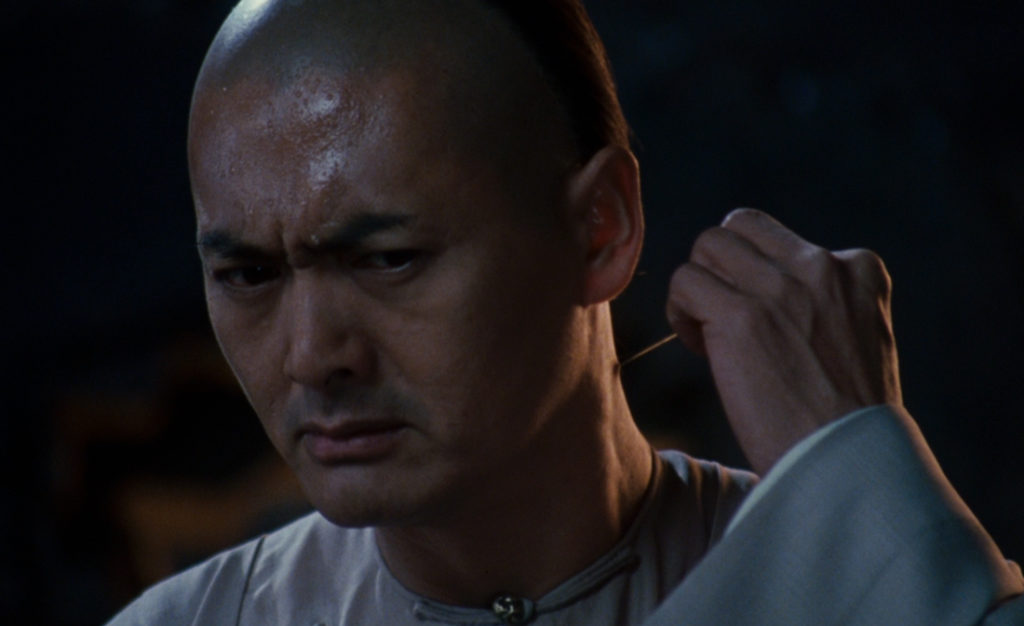
As portrayed in the final fight scene with Master Li fighting the Jade Fox (played by Pei-Pei Cheng), his Master’s murderer and main antagonist within the movie; the Jade Fox fires a stream of poison needles at Li, in the state of rage consumed by his own anger, he charges at the Jade Fox, whom is already dead from her shattered weapon, a completely unnecessary move, while at the same time being hit with one of her poison needles in the neck sealing his fate. Master Li is the pinnacle example of Wudang martial arts and a great Taoist sage. He fought Jen holding the Green Destiny and overwhelmed her without even drawing his sword; whom the Jade Fox is inferior to in fighting abilities given Jen’s betrayal in holding back esoteric knowledge from her.






Master Li’s death and failure was completely caused by his own emotions: rage and hatred in vengeance which blinded him in the fight. Master Li never intended to be with Yu Shu Lien to begin with, he came back to “Jiang Hu” because he failed to reach enlightenment and with his fate sealed but murder avenged, he finally can let go be it for the better or for worse; their romance was destined for failure.
Jen at the end achieves everything her heart desires and all drives reconciled; she is no longer obligated to her arranged marriage, all the Wudang forbidden knowledge only past down to males are open her, her forbidden lover has proposed and asked for her hand in marriage. The moment she achieves everything is the moment she losses everything. When all dukhkah is seemingly gone, that is when dukhkah has the most hold over one’s life. As signaled by the love making scene with Lo on Wudang mountain.
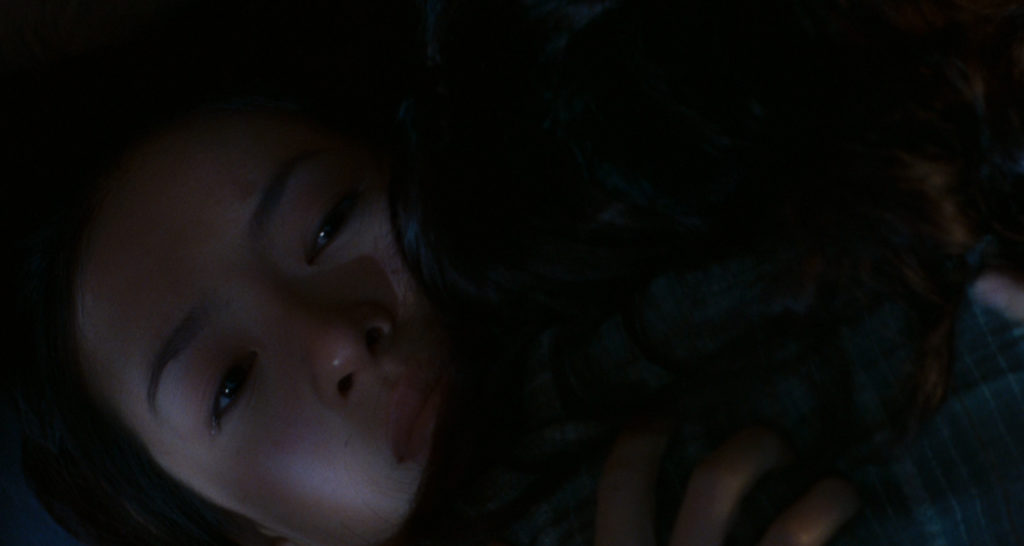
This scene serves a dual purpose, it’s a declaration of Jen’ limitlessness, even Wudang mountain’s greatest Master Li Mu Bai could not have sex on the mountain (his relationship with Shu Lien was an abstinent one), but here on a male only mountain, Jen explicitly makes love with Lo without any inhibitions nor feelings of love, a level of mastery and power that even alludes the greatest Taoist sages from Wudang. It is precisely at this moment where she no longer has any limits, she no longer feels any joy to life and everything she has accomplished becomes meaningless. In the weightlessness of being, like one thrown out into deep space; when all desires fulfilled and drives quenched, one’s life is forfeit. This lesson is repeated again at the end of the film. Jen instills this lesson of desire and longing into Lo before jumping off Wudang mountain in her desperation. In granting Lo’s wish to be with Jen forever, Lo’s very desire compelled him to make an impossible wish which can only be granted with the lost of the very thing he desired; Jen grants him his wish and is lost forever.

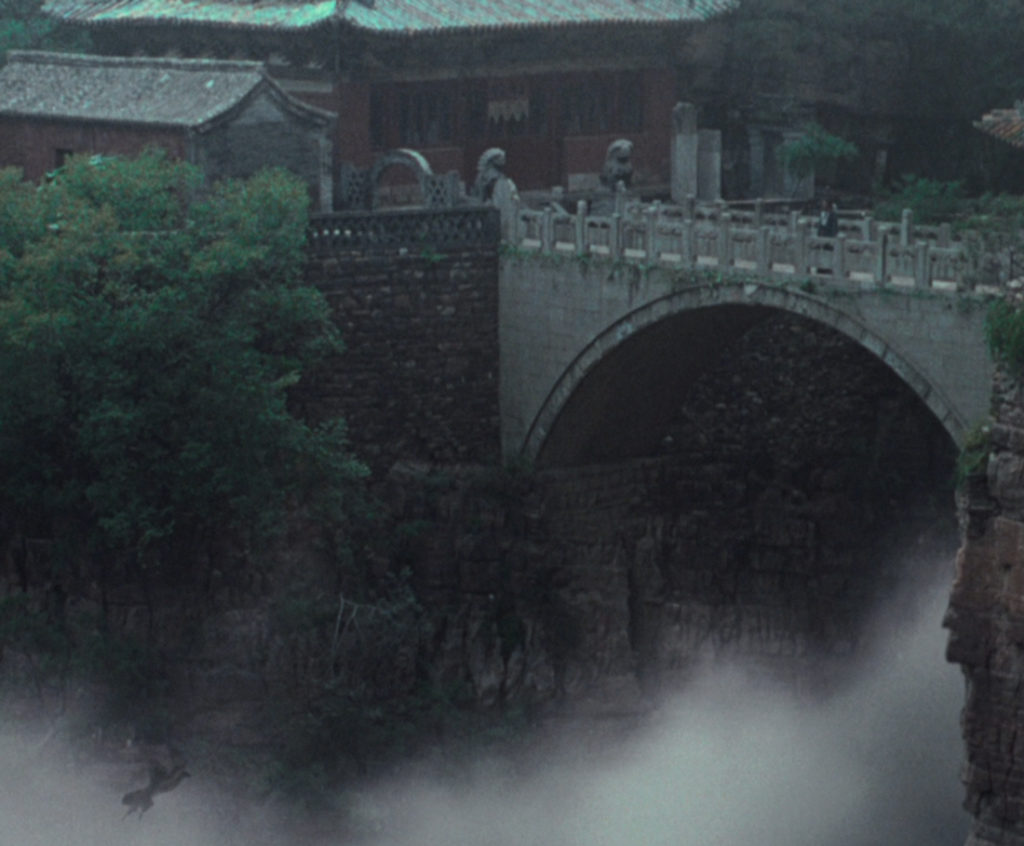
Dukhkah is something anyone living cannot live with, or without. As cliched as the saying goes: life is suffering. Dukhakh provides the canvass or the backdrop for our experience of reality, the silences between beats of music, the still frames in film for us to perceive motion, etc. The human experience is captured through each of our individual narratives bound by the very limitations of the stories that we tell ourselves as we enact it out every day. Of course, I am not refuting or denying circumstance like a person born as a child soldier in the Congo etc, the only point I am trying to make is that there isn’t a script at the point of one’s birth; people are essentially told how to live as one ages, these limitations of life are both real and at the same time self-created. These limitations be it by circumstance or self-inflicted exist as a necessity to life itself, similar to the imbalance found in electrical circuits. Electric current flows from one end to another because there is an imbalance of electrons, the moment where the system is equalized there is no current and the circuit is dead; a dead battery is a state of equilibrium. A fitting analogy to all narratives in which once balance is restored the story essentially ends. Much like the narrative to one’s life, dukhkah drives the story forward and keeps the narrative from disintegrating. As one’s life swings from moments of bliss to pain, happiness to sorrow; one’s only choice is to live within these transient limitations/transitions that define it or cast ourselves out to oblivion.
At this point, I feel it necessary to take a step back and try to interpret the idea of Dukhkah and these transcendental truths on a purely materialistic level. Especially in regards to Zizek’s ‘debate’ on Buddhism:
This is only a snippet from various more in-depth analysis which one can find throughout a collection of his books. Here I must agree to disagree with Zizek and argue that Zen Buddhism has a lot of merit when interpreted through psychoanalysis than what he is giving it credit to. One’s only approach to dealing with dukhkah is not to remove it, but to reconcile with it. In fact, I would go one step further and argue that Zen Buddhism is quintessentially a refined and perfected psychoanalytical process. The Buddhist removal of Dukhah which Zizek misinterprets in his ‘debate’ is not a separation, to quote his words, but merely a parallax one. The suffering of the human condition is all here and fully intact. There is no separation from normal life other than the disappearance of a self-identity to interpret the suffering as such, from the ‘noise’ of everyday life; everything and everyone is still here. Unlike Zizek, my source on Zen Buddhism is Alan Watts and I think that is the fundamental difference. Zizek, being fully materialist, is like a vegan trying to be a food critique, you may have an extremely sophisticated palate, but your ideology prevents you from providing a reliable practical account of the subject. Again, being a big fan of Zizek, let me respectfully try to explain…
My understanding of the emergence of the human consciousness, through Zizek’s explanations of psychoanalysis, is that its emergence was a violent one. The conditions which created this radical exteriority and interiority in the mind; the separation of the experience of exterior reality and our interior conscious selves happened through a violent rapture similar to an internal death. This “inner dying” allowed us to separate ourselves from our immediate experiences of reality. Zizek has even suggested that the emergence of capital in ancient society allowed us to have abstract thought since it separated our immediate labors from our immediate thoughts. It is from this rapture/inner death that psychoanalysis begins. In the most stereotypical sense, old Hollywood movies would show a patient visiting their shrink where the doctor would use an object to put the patient under hypnosis. In this state, the patient would spill all their darkest most withheld secrets and information, they withheld to all others including themselves, to the doctor. When the doctor has collected all the needed information and produced a sufficient psychoanalysis, they would wake the patient, tell them what is wrong with them and send them home thinking that the problem was solved. This practice did actually exist, but was soon stopped once they realized they did more damage to the patient by removing their problems than the original problems themselves. This original rapture that brought forth human consciousness acts as a void or a gap. At the center of our individual selves there is no identity to speak of. Our identities are like an outline of all our personality traits that make us individuals; our fears, desires, habits, the good, the bad, the ugly, etc. All these traits essentially make an outline where this initial void sits and that is our individual identities. When one removes a personal trait that is considered ‘bad’ you are essentially removing a part that makes-up the very fabric of the individual themselves. It is similar to a tumor, in removing it, you remove all the surround flesh as well which often times requires amputation, to remove a tumor from the arm, you lose the arm itself. Our mind then can be seen similar to a “Glass Onion”, a complex object with all its truth and complexity already revealed on the outside; the more layers you peel back, only more of the same structure gets reviled and less and less onion remains. Hence, modern psychoanalytical practices focus on helping the patient live with their problems. My understanding of psychoanalysis maybe naïve, but all that I have recounted falls inline with the basic premises of Zen Buddhism. The key here is, the center to our self-identities’ is a void; consciousness exists as a necessary inflicted wound upon the psyche, a missing piece, an imbalance. What I am proposing is merely an alternative response to the Lacanian quote that Zizek uses, “God is dead, but he doesn’t know it and maybe he never will”; to “You are God, but you don’t know it and maybe you never will” In doing so, it opens up the individual to a more radical mode of uninhibited ‘freedom’ of action much like only when there is a God is everything permissible. (https://zizek.uk/how-to-read-lacan-god-is-dead-but-he-doesnt-know-it-lacan-plays-with-bobok/)
To continue on elaborating on this specter of thought, let me continue on as I explain the rest of the truths our new awakened cosmic perspective needs to arm itself with; it will act as the frame work to support my presuppositions on Zizek’s Buddhism debate.
Trishna (clinging/grasping):
This transcendental truth follows immediately after Dukhkah, again, as explained by Alan Watts:
The Second Noble Truth relates to the cause of frustration, which is said to be Trishna, clinging or grasping, based on avidya, which is ignorance or unconsciousness. Now avidya is the formal opposite of awakening. It is the state of the mind when hypnotized or spellbound by maya, so that it mistakes the abstract world of things and events for the concrete world of reality. At a still deeper level it is lack of self-knowledge, lack of the realization that all grasping turns out to be the futile effort to grasp oneself, or rather, to make life catch hold of itself. For to one who has self-knowledge, there is no duality between himself and the external world. Avidya is “ignoring” the fact that subject and object are relational, like the two sides of a coin, so that when one pursues, the other retreats. This is why the egocentric attempt to dominate the world, to bring as much of the world as possible under the control of the ego, has only to proceed for a little while before it raises the difficulty of the ego’s controlling itself.
This is really a simple problem of what we now call cybernetics, the science of control. Mechanically and logically it is easy to see that any system approaching perfect self-control is also approaching perfect self-frustration. Such a system is a vicious circle, and has the same logical structure as a statement which states something about itself, as for example, “I am lying,” when it is implied that the statement is itself a lie. The statement circulates fatuously forever, since it is always true to the extent that it is false, and false to the extent that it is true. Expressed more concretely, I cannot throw a ball so long as I am holding on to it–so as to maintain perfect control of its movement.
Thus the desire for perfect control, of the environment and of oneself, is based on a profound mistrust of the controller. Avidya is the failure to see the basic self-contradiction of this position. From it therefore arises a futile grasping or controlling of life which is pure self-frustration, and the pattern of life which follows is the vicious circle which in Hinduism and Buddhism is called samsara, the Round of birth-and-death.
The active principle of the Round is known as karma or “conditioned action,” action, that is, arising from a motive and seeking a result-the type of action which always requires the necessity for further action. Man is involved in karma when he interferes with the world in such a way that he is compelled to go on interfering, when the solution of a problem creates still more problems to be solved, when the control of one thing creates the need to control several others. Karma is thus the fate of everyone who “tries to be God.” He lays a trap for the world in which he himself gets caught.
Many Buddhists understand the Round of birth-and-death quite literally as a process of reincarnation, wherein the karma which shapes the individual does so again and again in life after life until, through insight and awakening, it is laid to rest. But in Zen, and in other schools of the Mahayana, it is often taken in a more figurative way, as that the process of rebirth is from moment to moment, so that one is being reborn so long as one identifies himself with a continuing ego which reincarnates itself afresh at each moment of time. Thus the validity and interest of the doctrine does not require acceptance of a special theory of survival. Its importance is rather that it exemplifies the whole problem of action in vicious circles and its resolution, and in this respect Buddhist philosophy should have a special interest for students of communication theory, cybernetics, logical philosophy, and similar matters.
One can see many of these themes captured in the last movie, but as an example of this truth I want to share my account of the recent 2022 master piece by Daniel Kwan and Daniel Scheinert, Everything Everywhere All at Once as the prime example of Trishna. For those that haven’t seen this, I would pause here and say: GO, GO NOW, FIND IT and WATCH! My summary will only do this movie injustice…
The main crux of the movie hinges on a mother, Evelyn Wang (again, played by the brilliant Michelle Yeoh) and daughter, Joy Wang’s (played by Stephanie Hsu) relationship as they struggle to love each other when their family and their self-identities reaches a critical breaking point under the stresses of their past actions, be it multi-generational to the current and the imminent. This rift in their relationship creates the beginning, the middle and the end of the movie in which the film is over the moment their broken relationship is reconciled. There is no real antagonist or protagonist in this film, the main fight and the ultimate struggles are their own feelings and traumas of the characters’ themselves within their own narratives. The main struggle, Evelyn’s life, only acts as the main centripetal anchor, like a black hole, where the galaxy of multifarious bright individual narratives swirl around and play themselves out from their beginning spark to their ending light.
Right off the bat in the film the viewers are thrown into Evelyn’s crumbling life, as impossible decisions build up and her life spirals out of her control, as fervently and endlessly as she tries to put the pieces back together. Everything reaches critical mass as she assaults the IRS officer Deirdre Beaubeirdre (played by Jamie Lee Curtis) that was auditing her taxes; her life comes to an erupt break as it collides with this impossible crisis.
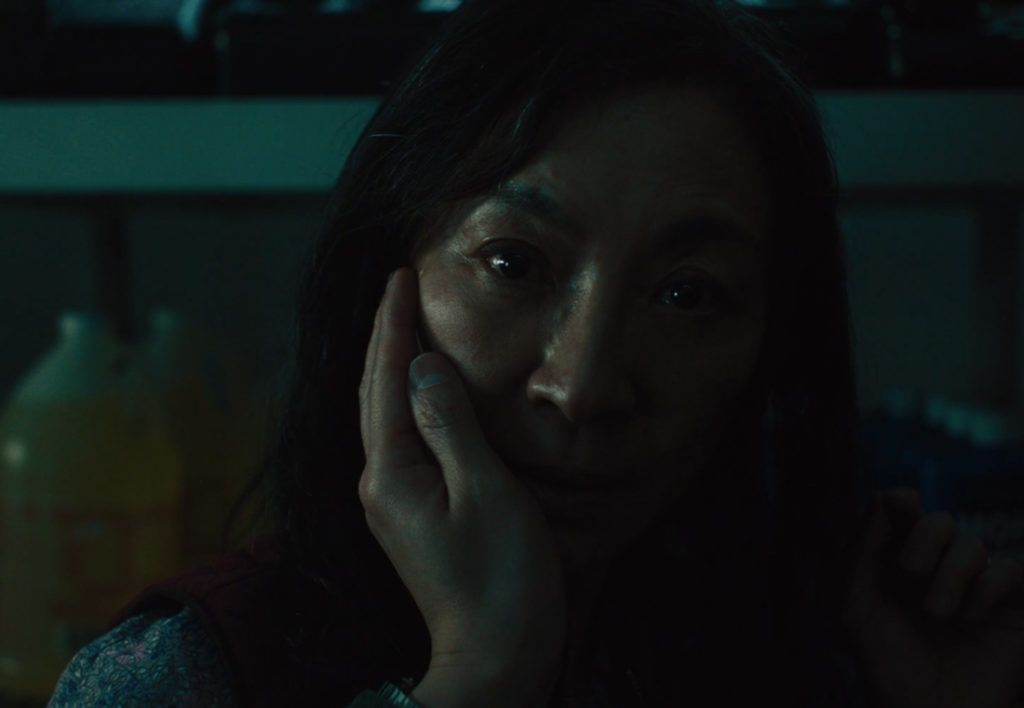
It is at this deadlock that Evelyn meets Alpha Raymond Wang (played by Ke Huy Quan) a superior multi-dimensional version of her current husband, that unlocks the access to the multi-verse to her, offering her alternative paths in circumventing the crisis. As the chaos ensues, it becomes apparent to Evelyn that all this is happening because the Alpha version of herself and her overbearing mothering pushed her own daughter, Alpha Joy, beyond the breaking point when training in multi-dimensional jumping. In forcefully unlocking the unlimited potential in Alpha Joy, she created an abomination that experiences every moment of every universe all at once; revealing the main crux of the story, the constant repetition and failure in conceiving a loving relation between mother and daughter in every attempt. In this madness Alpha Joy becomes Jobu Tupaki, this demi-god/interdimensional being which hunts down and murders her mother, Evelyn, throughout countless dimensions wherever they share a life together. After Evelyn’s eventual encounter with Jobu Tupaki in this universe, not willing to kill her own daughter whom she loves, she resolves to the stopping Jobu by becoming like her; in gaining her power, she hopes it is enough to subdue her. In order to achieve this Evelyn engages in more and more extreme verse-jumping while battling both Jobu’s followers and Alpha Gong Gong’s (Joy’s grandfather or Evelyn’s father from the Alphaverse played by James Hong) crew that believe in killing Jobu is the only way to salvation.
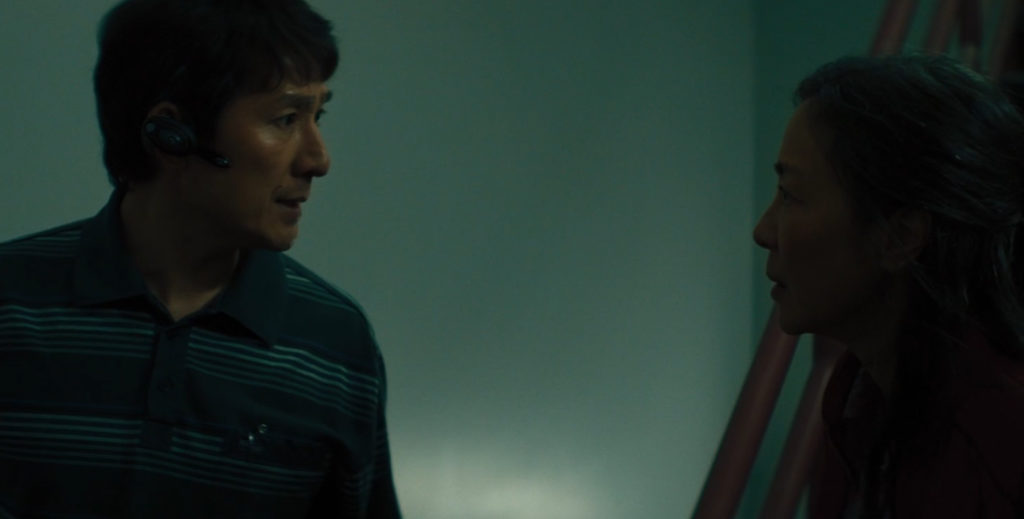
Every extreme verse-jump brings Evelyn’s mind closer to the breaking point where the experiences of all her other selves from the various dimensions begin to collapse in on itself; a state where her mind can no longer differentiate between them. The climax is reached when Evelyn finally loses her mind and collapses on the floor and dies; a scene so powerful that even the ‘fourth wall’ that separates viewers from the movie is broken placing the ending part of the movie in its own meta-narrative synthesizing all her other narratives into a single stream of experience where time and space has no meaning, including the viewers position as viewers themselves are converted to ‘experiencers’ of a singular shared mass experience.
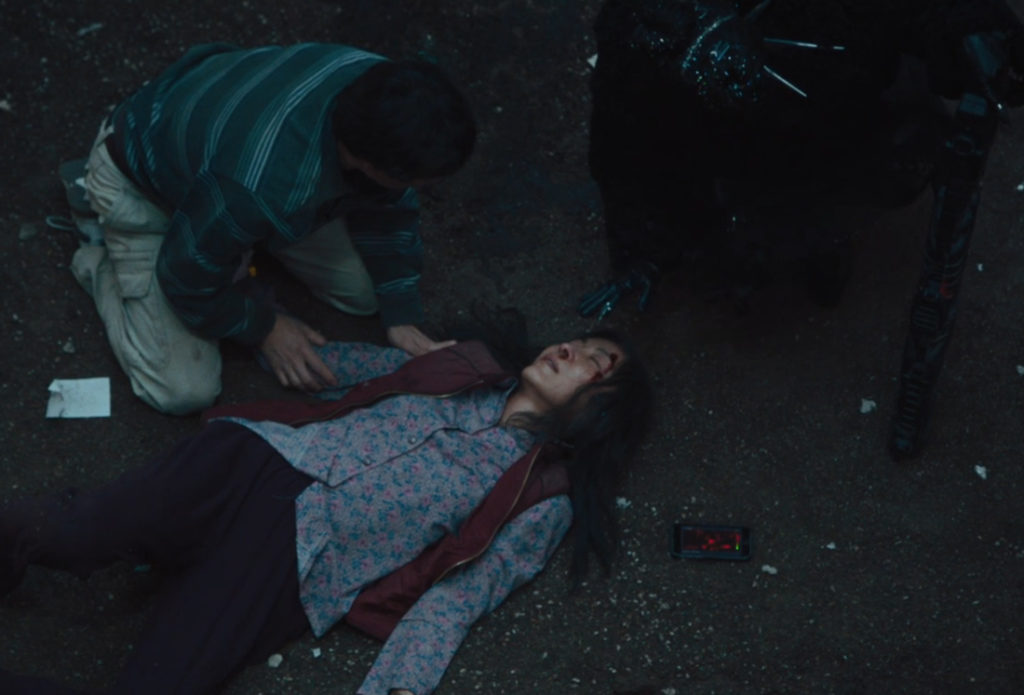
Only now is the stage set for the final confrontation. We return to a dimension that none of this happened and Evelyn had gone home to correct her taxes where she tries to talk and reason with Joy/Jobu before the Chinese New Year party. Everything that happened before is to bring the viewers to understand the two paths that were proposed at the ending of the film.



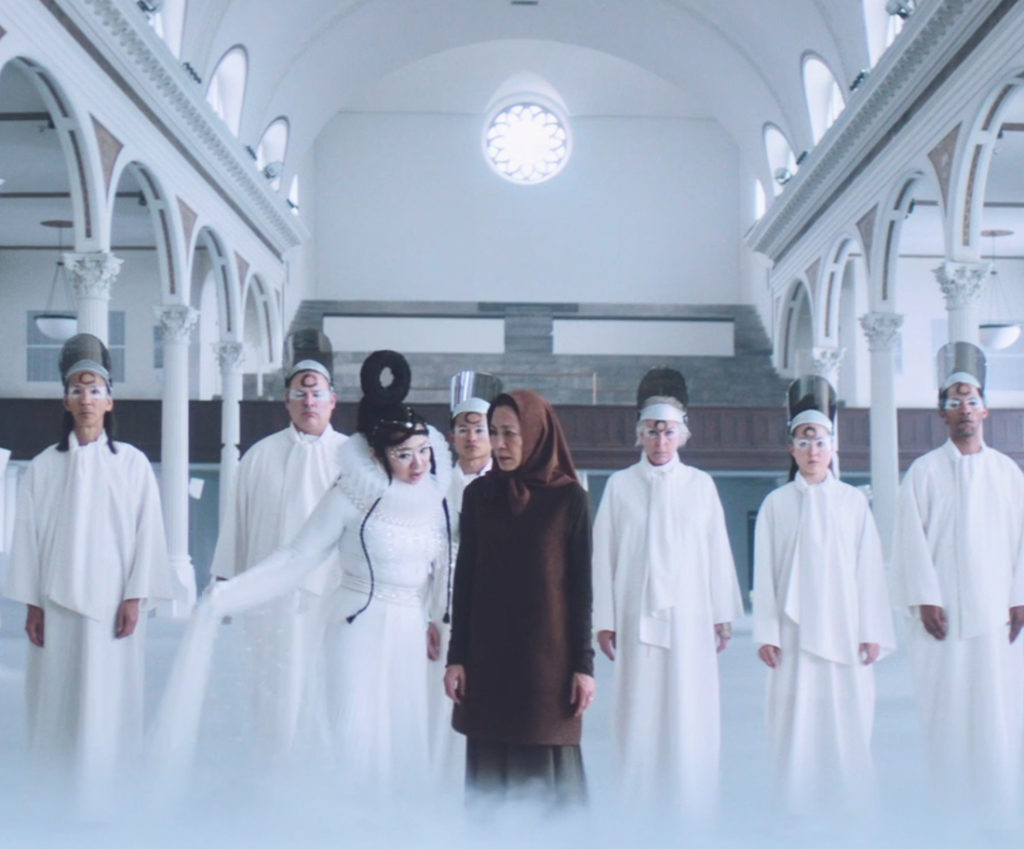

Jobu’s goal in her murderous rampage throughout the multiverse was not to kill her mother, but to find someone who can truly understand her and whom better than the very person who created her: Evelyn. Jobu’s conclusion in the face of the endless erratic madness of a universe we live in was to return back to everything (the everything bagel that she created) and cease to exist in order to escape the suffering of life (Duhkha). This also marks the folly of the superficial understandings of Enlightenment and Nirvana (the truth we will discuss next) when one sees everything, they end up seeing nothing and miss the most important things that are always right in front of them.
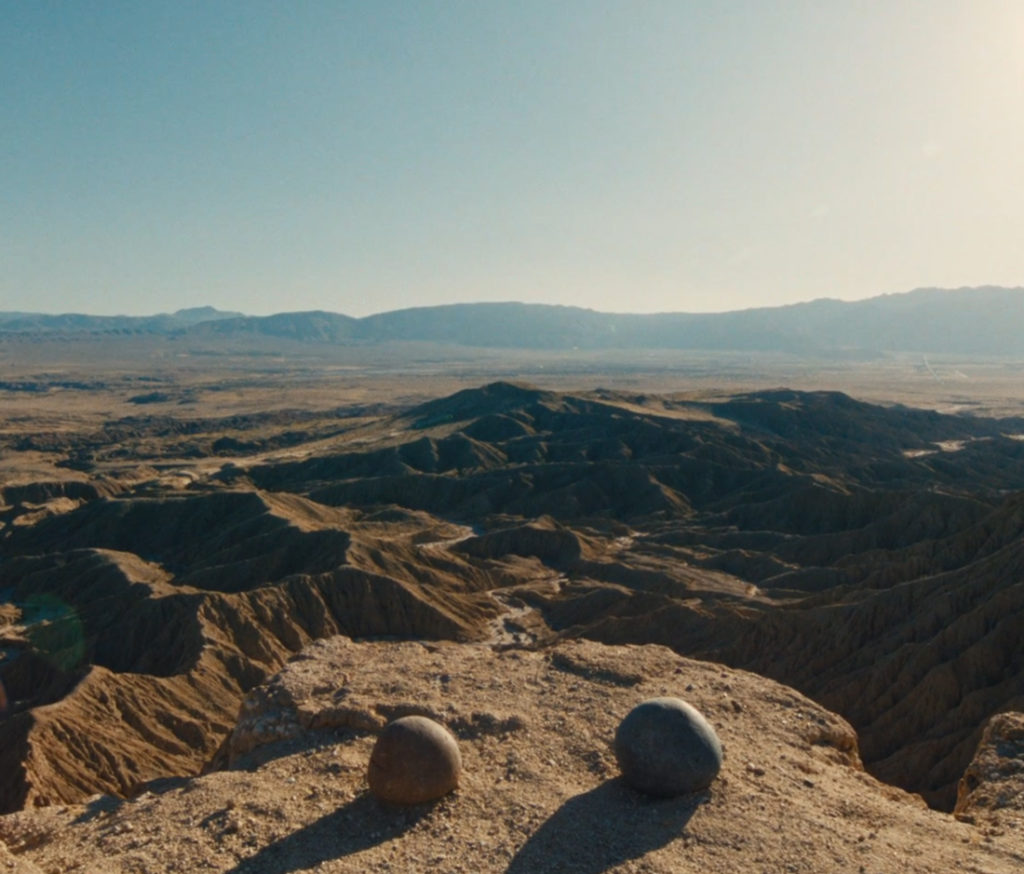
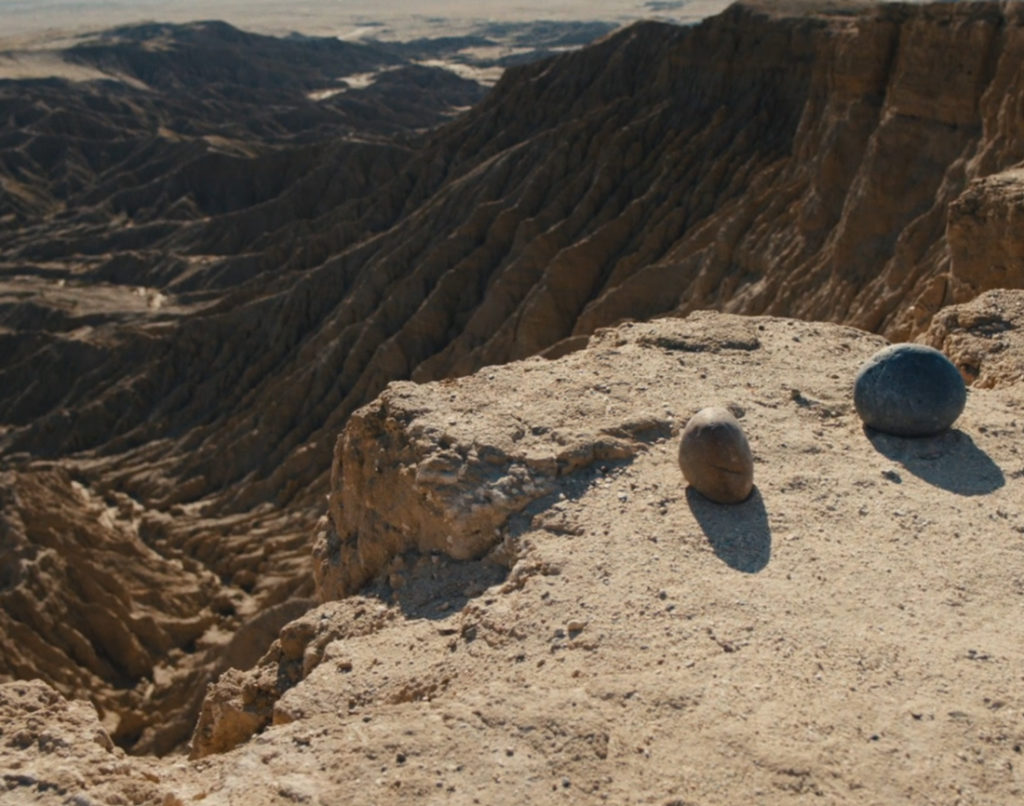
Here we can witness the full truth of Trishna in which the frustrations of the human condition stems from trying to control the flow of life. Both Jobu and Evelyn has reached a level of complete mastery and yet they barely understand each other let alone themselves. Even with all their powers that they have gained, it was still impossible for them to control the outcomes of their lives regardless of the dimension. From all the attempts to control life, it only has led them to failure, suffering and this eventual insanity in the face of futility. The experience they feel as suffering is Duhkha, and even Gods will suffer let alone mere mortals. This suffering comes at the folly of believing one can control life when the reality is that even the most microscopic myriad detail of everyday life can spin one’s narrative completely of out control.
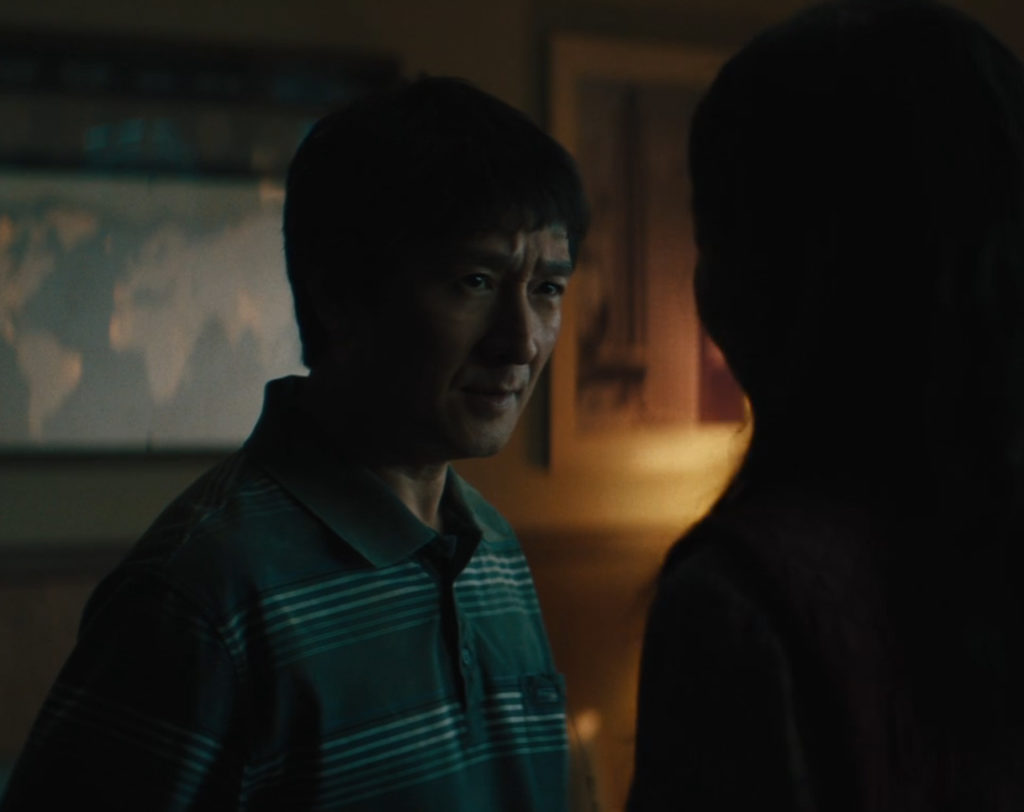
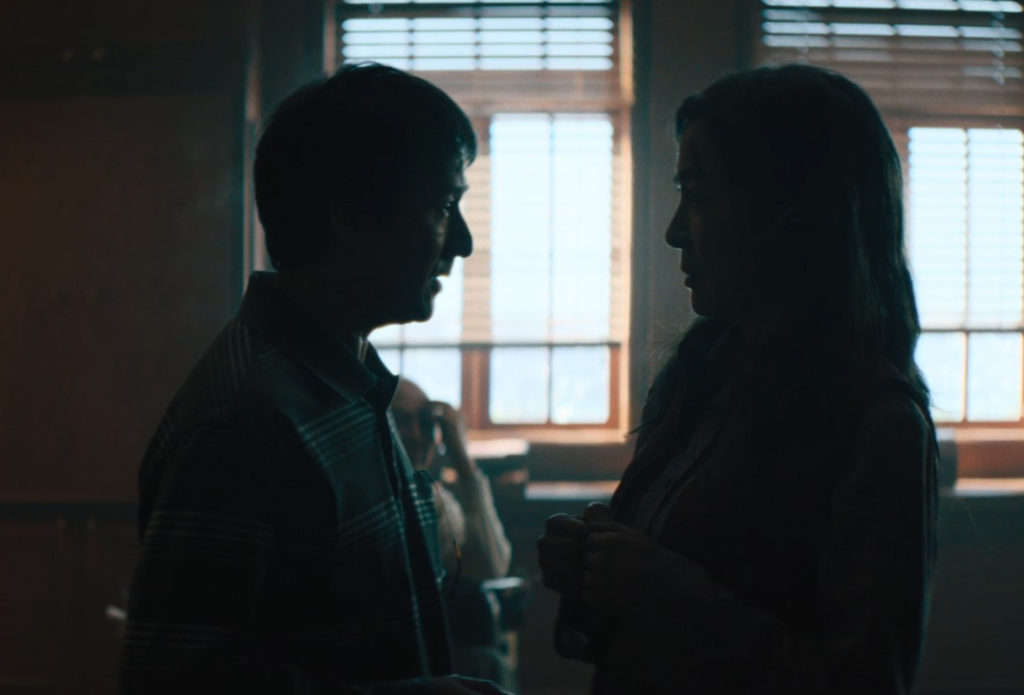
No amount of power or knowledge can get around that which must be confronted. At the attainment of ultimate knowledge what they gained was not enlightenment but it’s very inverse: delusion and derangement. In the struggle to save her daughter from annihilation, by returning back to everything (everything bagel), Evelyn finally understands all this suffering (Duhkha) was caused by her unwillingness to let go of life (Trishna). Evelyn and her many dimensional selves represent human nature’s neurosis in trying to grasp at all possible potentials thinking there are alternative ‘better’ paths and what-ifs of endless impossible expectations and obligations. Always living either in the past that doesn’t exist or a future that will never come. Always living and balancing on potentials than in the full kinetic present, always in the delusion that certainty and control is our only sound reality, that this is the only ‘Right way’. To quote Paul Auster, “We exist for ourselves, perhaps, and at times we even have a glimmer of who we are, but in the end we can never be sure, and as our lives go on, we become more and more opaque to ourselves, more and more aware of our own incoherence. No one can cross the boundary into another – for the simple reason that no one can gain access to himself.”


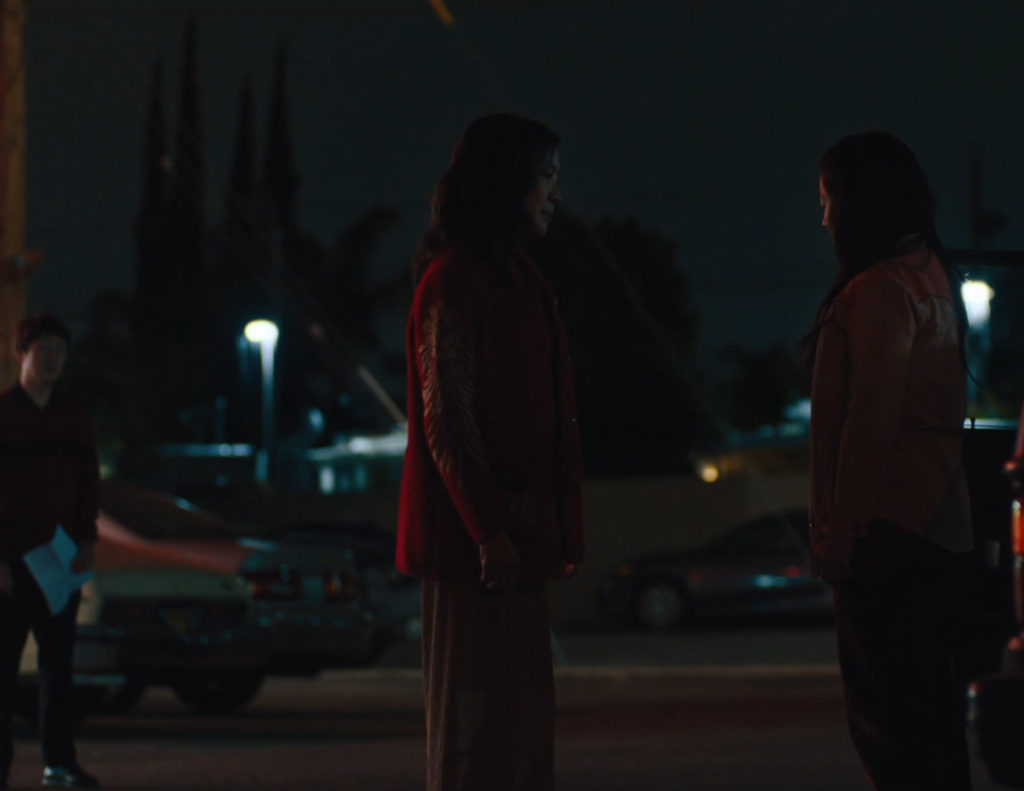
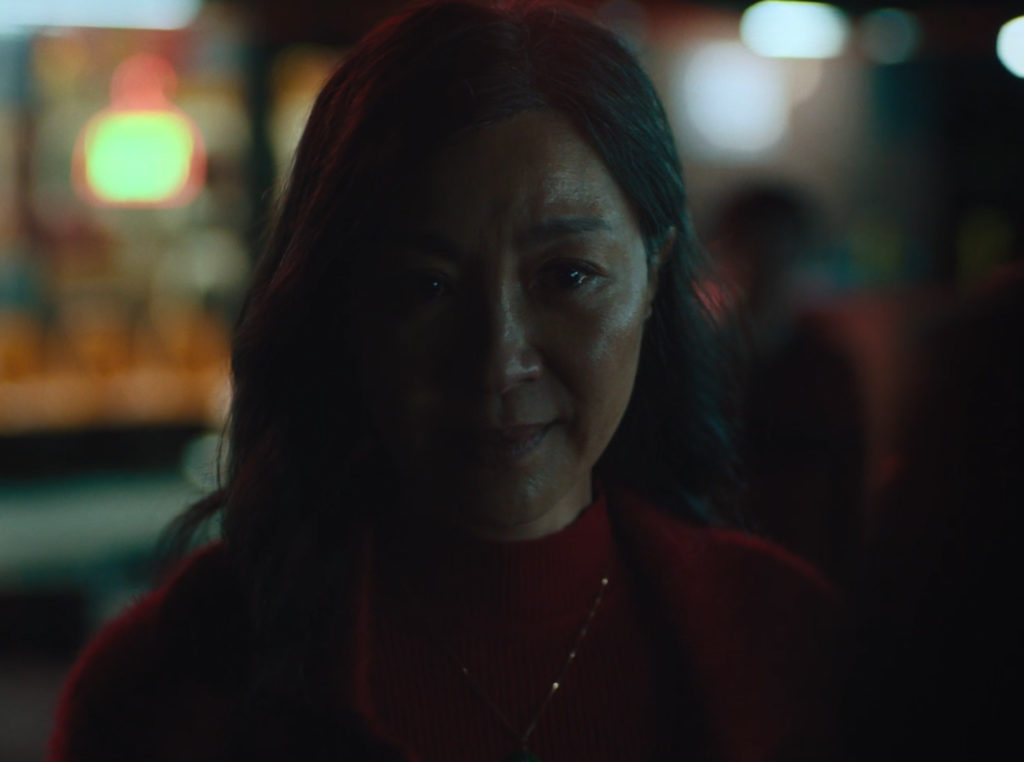
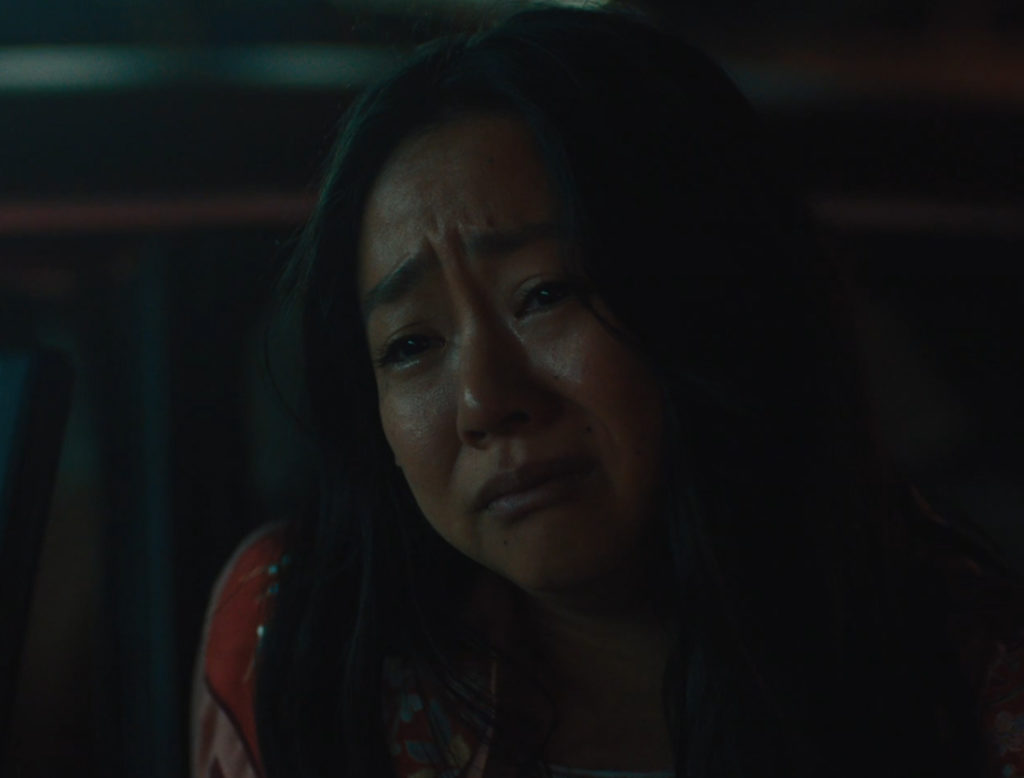
Evelyn on the other hand, regardless of the absurdity of everything, chooses to stay, and not only stay but stay with her daughter whom she loves regardless of any consequences that will befall her. At the most critical moment Evelyn awakens, the dead Evelyn wakes up and vanquishes all the characters that opposes her through reconciliation and synthesis. The great fight scenes throughout the movie represents this brute force approach in trying to control life and master it, as if domesticating a wild animal. Life though is a spiritual beast that cannot be tamed; Evelyn gives up control and gives into the absurdities of each character’s narratives, giving them no point of resistance to oppose her. Unlike the previous fight scenes, they no longer desire to fight. All her powers and knowledge are only useful in giving her the courage to face the trials and tribulations of each of her various narratives; not to control the outcomes of their fate but to live up to their own failures and full potentials. Only at this moment was Evelyn finally able to hold on to her daughter, Joy; not through grasping but by letting go, not attempting to control her but attempting to understand her.
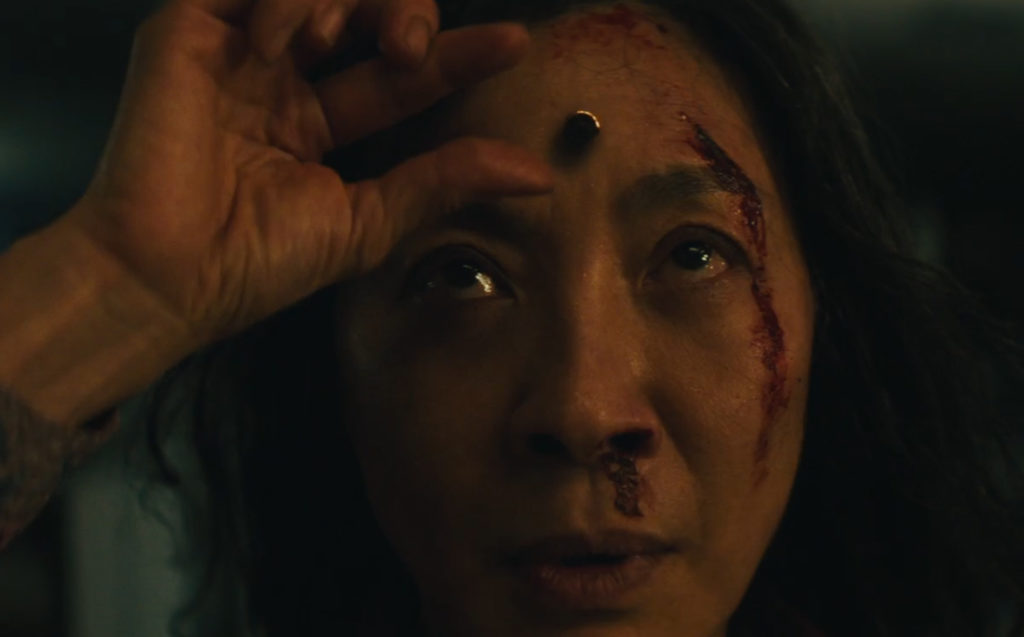




This moment of revelation experienced by Evelyn is well captured by Watts’ spiritual explanation:
The point arrives, then, when it is clearly understood that all one’s intentional acts-desires, ideals, stratagems-are in vain. In the whole universe, within and without, there is nothing whereon to lay any hold, and no one to lay any hold on anything. This has been discovered through clear awareness of everything that seemed to offer a solution or to constitute a reliable reality, through the intuitive wisdom called prajna, which sees into the relational character of everything. With the “eye of prajna” the human situation is seen for what it is–a quenching of thirst with salt water, a pursuit of goals which simply require the pursuit of other goals, a clutching of objects which the swift course of time renders as insubstantial as mist. The very one who pursues, who sees and knows and desires, the inner subject, has his existence only in relation to the ephemeral objects of his pursuit. He sees that his grasp upon the world is his strangle-hold about his own neck, the hold which is depriving him of the very life he so longs to attain. And there is no way out, no way of letting go, which he can take by effort, by a decision of the will.… But who is it that wants to get out?
What one achieves through force is not tathata I am trying to speak of, as perfectly captured by the omnipotence of both Evelyn and Joy’s characters. Even on a spiritual level, one’s pursuit towards higher levels of awakening is the very definition of trishna. Strength and knowledge can be detrimental to progress. This concept was beautifully introduced to me by my friend ABBAS the Alchemist in the example of the coconut monkey trap: (https://www.theguardian.com/lifeandstyle/2014/nov/14/how-to-avoid-monkey-trap-oliver-burkeman)
The monkey’s refusal to let go of the rice in the coconut is precisely what’s keeping him trapped is an elegant metaphor for Trishna; the cause of Duhkha lies in our own mental barriers and human inflexibility in letting go of life. Trishna extends even towards one’s pursuit of esoteric knowledge, a double edge sword that cuts both ways in understanding. This is precisely why in the beginning in trying to talk about tathata I immediately explained the ultimate truth that we are all God in an attempt help one let go of what one thinks they know. Just like Jobu Tupaki, ultimate knowledge only pushed her into insanity not enlightenment. Tathata is not something that can be learnt or acquired but it is something that must be ‘known’, since it was something we always already know but forgotten. Hence regardless of the amount of knowledge acquired, one cannot acquire something one already has. There is also the temptation that this knowledge gained will allow one to control and mitigate Duhkha but no amount of knowledge or power can help with that:
Even if one acquires the full understanding of all the workings of our universe…
Or master their bodies to be as strong as demi-gods…
Or become so spiritual powerful they can even summon beings to do their bidding like the mythical Solomon himself…
None of those things will provide any solace in the face of Duhkha since all attempts are merely an extension of Trishna itself. All attempts will only provide temporary relief at the cost of future suffering. In unraveling esoteric mysteries, one will only be rewarded with further mysteries, all merely another way of talking about tathata.












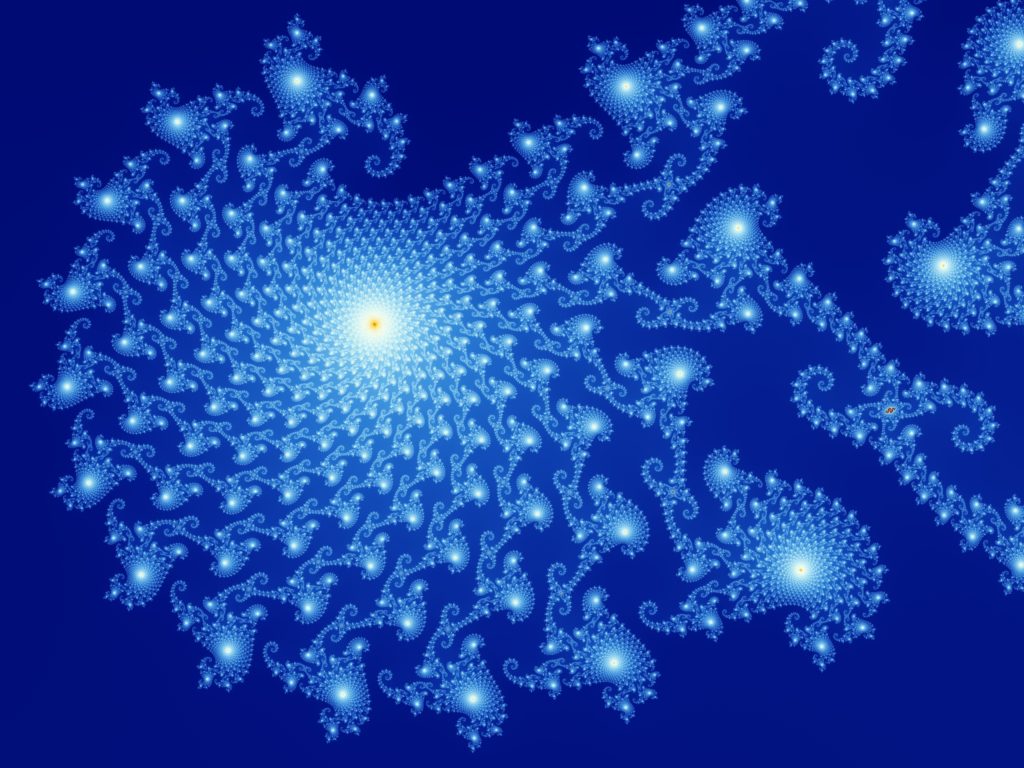
The main purpose in knowing that one is God, is to understand that all the other truths will only lead one back to the original truth. Not to say esoteric knowledge cannot make one’s life more fruitful, but the main point is, all pursuits, even esoteric knowledge, should be done out of love and not out of purpose to an end, to quote Jacques Derrida, “Every single time something is done with a purpose in view, something fundamentally different and other occurs.” As an added warning, by the Kybalion, to all students of truth: “the possession of Knowledge, unless accompanied by a manifestation and expression in Action, is like the hoarding of precious metals—a vain and foolish thing. Knowledge, like Wealth, is intended for Use. The Law of Use is Universal, and he who violates it suffers by reason of his conflict with natural forces.” Just like Evelyn’s decision to stay in a basic plain universe out of all others; she consciously filtered out all the noise and other possibilities and simply focused on what was important to her. A person that is all over the place is in reality nowhere. The great tool developed by our minds throughout evolution was to provide us the ability to tune out excess information and focus on that which require our immediate attention. The Buddha, whenever asked about the origins of our universe, it was said that his answer was silence. In that regard, the chaotic depiction of our universe by the movie reveals a rather accurate account of its very nature. Our limited conception of reality has colored our understanding of the universe with irrelevant considerations based on our own biases of morals, ethics and ideologies in regards to its operation. In truth, the universe only operates in a series of laws or principles that are only beginning to be recognized by modern sciences; where the limitations of a set of principles can only be circumvented by the limitations of another set of principles. An example of this would be the principles of gravity can be circumvented by the principles of aerodynamics etc. All existence (from the highest angel/daemon, to lowest, rocks/specks of dust) are bound by these Seven Principles: (https://en.wikipedia.org/wiki/The_Kybalion)
1. The principle of mentalism
“The All is Mind; the Universe is Mental.”
2. The principle of correspondence
“As above, so below; as below, so above.” […] This principle embodies the truth that there is always a correspondence between the laws and phenomena of the various planes of being and life.
3. The principle of vibration
“Nothing rests; everything moves; everything vibrates.”
4. The principle of polarity
“Everything is dual; everything has poles; everything has its pair of opposites; like and unlike are the same; opposites are identical in nature, but different in degree; extremes meet; all truths are but half-truths; all paradoxes may be reconciled.”
5. The principle of rhythm
“Everything flows, out and in; everything has its tides; all things rise and fall; the pendulum-swing manifests in everything; the measure of the swing to the right is the measure of the swing to the left; rhythm compensates.”
6. The principle of cause and effect
“Every cause has its effect; every effect has its cause; everything happens according to law; chance is but a name for law not recognized; there are many planes of causation, but nothing escapes the law.”
7. The principle of gender
“Gender is in everything; everything has its masculine and feminine principles; gender manifests on all planes.”
In referring to tathata these principles are unavoidable since they are the sole “rules” on how reality operates, but they also serve to illustrate a crucial point in understanding these truths. It shows how one can manage and understand both duhkha and trishna in life but it also illustrates the very forces and causes that grounds their influences and endless occurrences. A point elegantly summarized by the films ending, an epilogue showing the trials and tribulations when over. Even with ultimate knowledge and the universe unraveled, one only returns back to the beginning to apply simple solutions to simple problems; suffering does not end, for suffering is life.
The point is, even God files and pays their taxes. Evelyn’s life is put back together, everything is the same, but irrevocably different. Everything is always already here. As Jobu Tupaki would put it: “Here, all we get are a few specks of time where any of this actually makes any sense.”
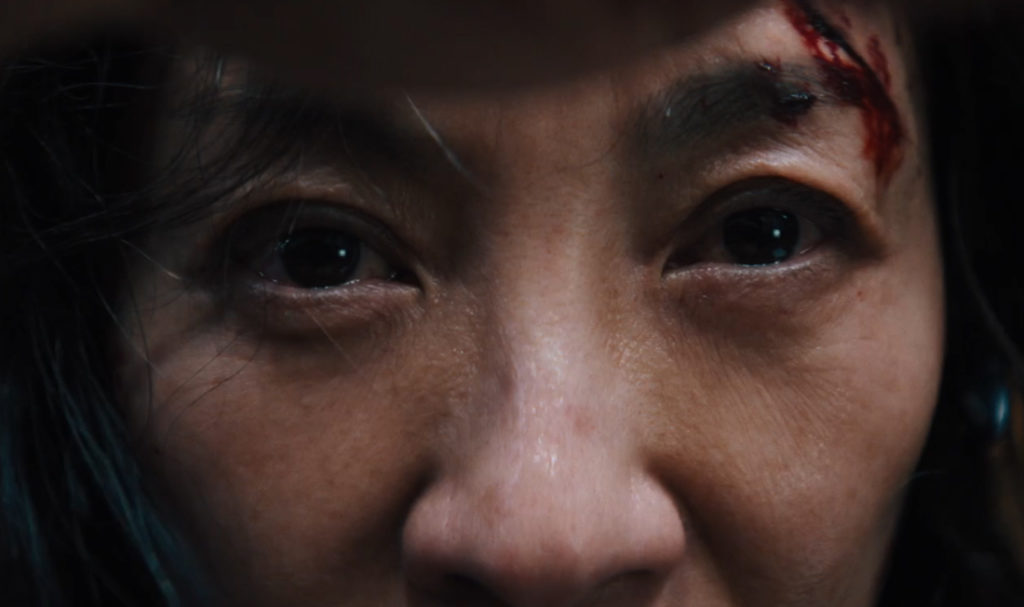
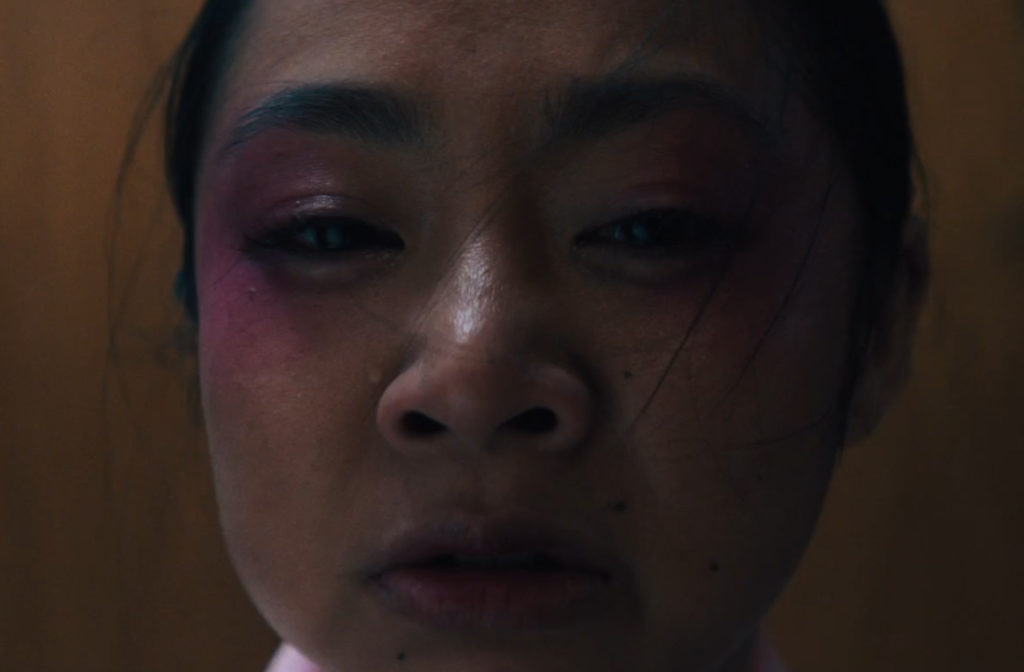
With all that said, we have sufficiently explored this truth and can move on. So at this point, let me return to Zizek’s Buddhism debate before proceeding on the next fundamental truth and look at Lacan’s quote and Zizek’s own response in more detail:
“But why doesn’t he [Lacan] tell the truth about truth.” “If [I] did tell the truth about truth, then not much truth would be left.” “We know that God is dead, this is the first truth, but what is the truth about this truth. The next step is that God himself doesn’t know that. And one may suppose that he never will know it because he has always been dead. This formula nevertheless leads us to something that we have to resolve here… that jouissance still remains forbidden as it was before, before we knew that God was dead.”The point is that truth still matters (and exists), but is most effectively approached (even desired) by way of a movement through the various truth effects—nothing changes by knowing the truth about truth.
To argue, from both a psychoanalytical and spiritual perspective, why the shortest path towards truth itself must arise first from its misperception, I will quote from one of many Zizek’s philosophical jokes:
here is a well‑known, very Hegelian joke that illustrates perfectly the way truth arises from misrecognition, i.e., the way our path towards truth coincides with the truth itself. In the beginning of this century, there were a Pole and a Jew sitting in a train, facing each other. The Pole was shifting nervously, watching the Jew all the time. Something was irritating him. Finally, being unable to restrain himself anymore, he exploded: “Tell me, how do you Jews succeed in extracting from people the last small coin and in this way accumulate all your wealth?” The Jew replied: “Okay, I will tell you, but not for nothing; first give me five zloty” (Polish money). After receiving the required amount, the Jew began: “First, YOU take a dead fish; you cut off her head and put her entrails in a glass of water. Then, around midnight, when file moon is full, you must bury this glass in a churchyard.” “And,” the Pole interrupted him greedily, “if I do all this, will I also become rich?” “Not too quickly,” replied the Jew, “this isn’t all you must do; but if you want to hear the rest, you must pay me another five zloty!” After receiving the money again, the Jew continued his story. Soon afterwards, he again demanded more money, etc., till finally the Pole exploded in fury: “You dirty rascal, do you really think that I didn’t notice what you were aiming at? There is no secret at all! You simply want to extract the last small coin from me!” The Jew answered him calmly and with resignation: “Well, now you see how we, the Jews . . .”
In this little story, all is to be interpreted, starting with the curious, inquisitive way the Pole looks at the Jew. It means that from the very beginning, the Pole is caught in a relationship of transference, i.e., that the Jew embodies for him the “subject supposed to know”‑‑to know the secret of how to extract money from people. The point of the story is of course that the Jew has not deceived the Pole: he kept his promise and taught him how to extract money from people. What is crucial here is the double movement of the outcome, i.e., the distance between the moment when the Pole breaks out in fury and the final answer of the Jew. When the Pole blurts out, “There is no secret at all! You simply want to extract the last small coin from me!” He is already telling the truth without knowing it. That is, he sees in the handling of the Jew a simple deception‑what he misses is that through this very deception, the Jew kept his word, delivered him what he was paid for (the secret of how the Jews … ). The Pole’s error is simply his perspective: he looks forward for the “secret” to be revealed somewhere at the end. He situates the narration of the Jew as a path to the final revelation of the “secret,” but the real secret is already in the narration itself, in the way the Jew, through his narration, captures the desire of the Pole, in the way the Pole is taken in by this narration and is prepared to pay for it.
The “secret” of the Jew lies then in our own (Pole’s) desire: in the fact that the Jew knows how to take our desire into account, That is why we can say that the final turn of the story, with its double scansion, corresponds to the final moment of the psychoanalytic cure, the dissolution of transference and “going through the fantasy.” When the Pole breaks out in fury, he has already stepped out of the transference, but he has yet to traverse his fantasy. This is achieved only by realizing how, through his deception, the Jew has kept his word. The fascinating “secret” which drives us to follow carefully the narration of the Jew is precisely the Lacanian object petit a, the chimerical object of fantasy, the object causing our desire and at the same time‑‑this is its paradox‑‑posed retroactively by this desire. In “going through the fantasy,” we experience how this fantasy‑object (the “secret”) only materializes, positivizes the void of our‑ desire.
Here what is desired is the truth to our reality and as the joke just illustrates: it is simply not enough to be told the truth about the nature of human consciousness. The violent quantum mental leap that provided humans with consciousness is something that was never reconciled. There are beliefs that this leap was made possible in human evolution through early human interactions with hallucinogenic organics that many have attributed to the cultures of indigenous peoples, often held in ceremonies of healing and spiritual awakenings.
It was through Zizek’s writings that the concepts of society and language was brought into question. The nature and existence of each requires the other in an irreducibly complex system: one cannot exist without the other, society without language cannot function, language without society is noise. It was as if both were simultaneously derived at the same time. What I am suggesting here is that it was from that primordial rift in our mind, the birth of human consciousness, that allowed for the quantum leaps in thought to occur to bring forth the birth of human society all at once. Like the mythical opening of Pandora’s box, the human mind acted as the perfect medium once opened and left ajar from itself, all the wonders and terrors of the world spilled out from it; art and freedom of expression to slave labor and capitalism to the machinations that brought forth the comforts of the atomic age to the powers of Indra’s arrow as the world witness the wraith of a thousand suns in a flash of an instant on the cities of Hiroshima and Nagasaki. This gaping wound at the core of human consciousness, or I should say human consciousness itself, is comparable to Karatani Kojin’s description of the zero point:
“What drives the movement of the game is not the differential system of signifiers, the 1, 2, 3, but the empty lot itself. While a player may think that she or he is relocating numbers, from another point of view it is the empty lot that is floating around and that enables this movement. To put it in the language of Lacan: while each number thinks that it is the subject, it is nothing but an effect of this floating signifier. No matter how radical this reversal may be, it must be noted that the floating signifier, or zero sign, guarantees the structurality of structure and, thus, exists merely as a proxy for God or the transcendental ego.”
Much like the missing piece to typical children puzzle games, the empty void is what allows one to rearrange our external reality to what we desire to see internally, without this void, there is no movement possible, this is the greatest distinction between humans and animals within the mind. It is precisely this initial injury that makes up the human mind which unlocked all human potential to transmute and rearrange the external reality. Here at this point one can see the extremities of Derrida’s Deconstruction and come face to face with the void of the transcendental signified leading us back to the simulation theory proposed in the beginning of our debate. We were always in the same discussion about the origins of the human consciousness. One can even refer back to Zizek’s own account of the Kabbalah and the concept of the shattered God; the void in which our consciousness’s are situated merely act as fragments of a broken mirror, each piece only acts to capture and reflect back the original source of light back onto itself. The reconciliation of the mental wound that brought forth human consciousness itself was never addressed/healed and it’s the primary reason that most people’s lives stand to benefit though psychoanalytic treatment and analysis. On a side note, I would claim Freud himself would have produced an even more radical body of work had he be willing to get psychoanalyzed himself, perhaps by a friend by the name of Jung… but I digress. Here Watt’s account of Zen Buddhism and Zizek’s debate again agrees, one enjoys the fall. This is best expressed by Zizek’s account of a joke about Jesus and Mary Magdalene:
“There is a nicely vulgar joke about Christ: the night before he was arrested and crucified, his followers start to worry: Christ was still a virgin, wouldn’t it be nice to have him experience a little bit of pleasure before he dies? So they ask Mary Magdalene to go to the tent where Christ is resting and seduce him; Mary says she would gladly do it and goes in, but five minutes later she runs out screaming, terrified and furious. The followers ask her what went wrong, and she explains: ‘I slowly undressed, spread my legs and showed Christ my pussy; he looked at it and said, “What a terrible wound! It should be healed!” and gently put his palm on it…’ So beware of people too intent on healing other people’s wounds – what if one enjoys one’s wound?”
Here the wound is EVERYTHING; our reality is the wound. Where my rebuttal to Zizek’s debate lies, I will refer back to his own words: coffee without cream is radically different than coffee without milk. I am claiming coffee without cream is superior even though the end result may be equal on a material sense; a rebutal to his comment about the state of Buddhist enlightenment as opposed to merely a chemical composition in the brain. This fundamental distinction can be made clear only after I explain the next noble truth…
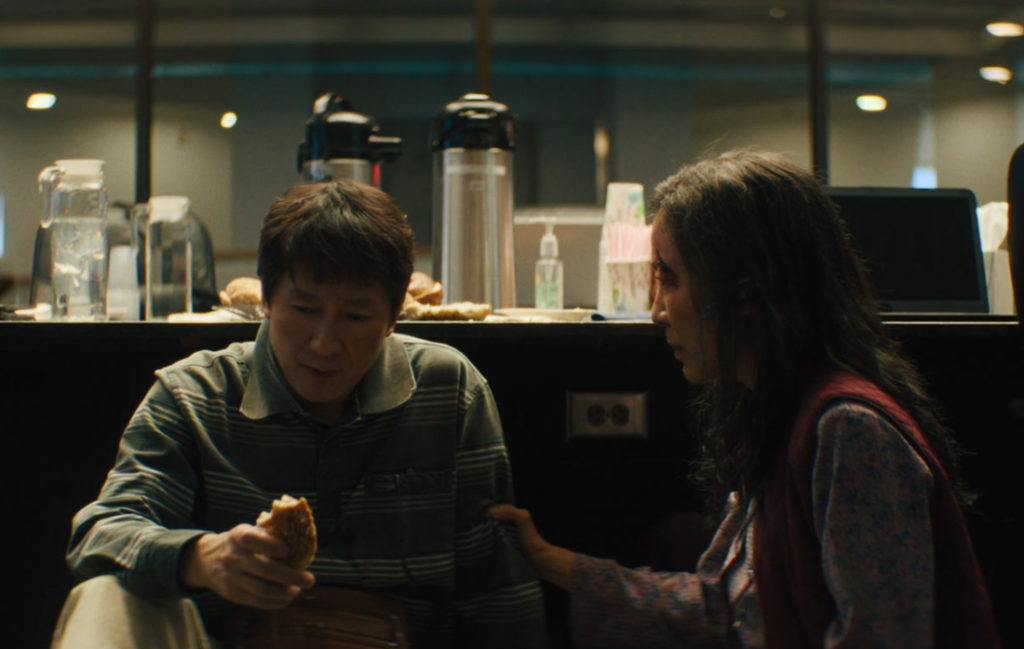
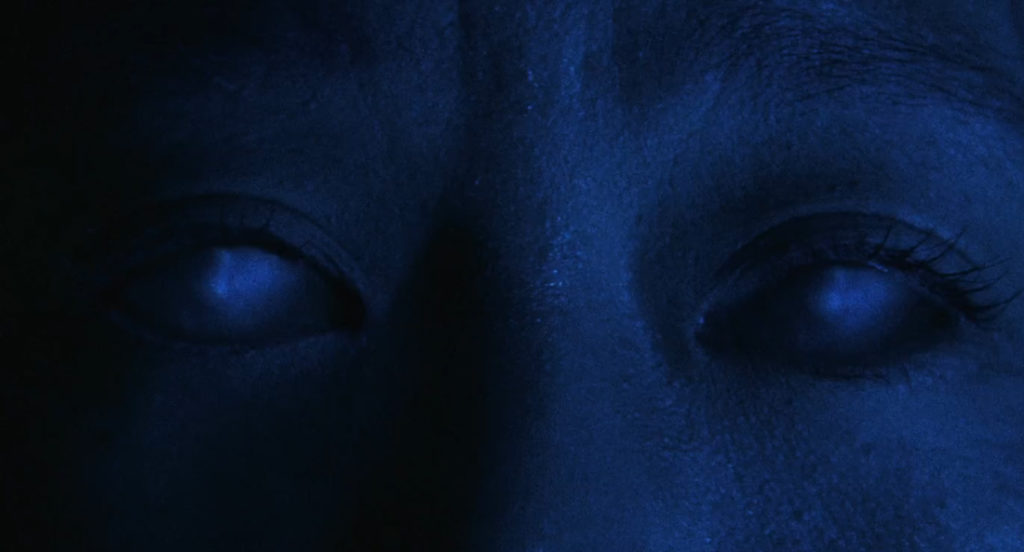
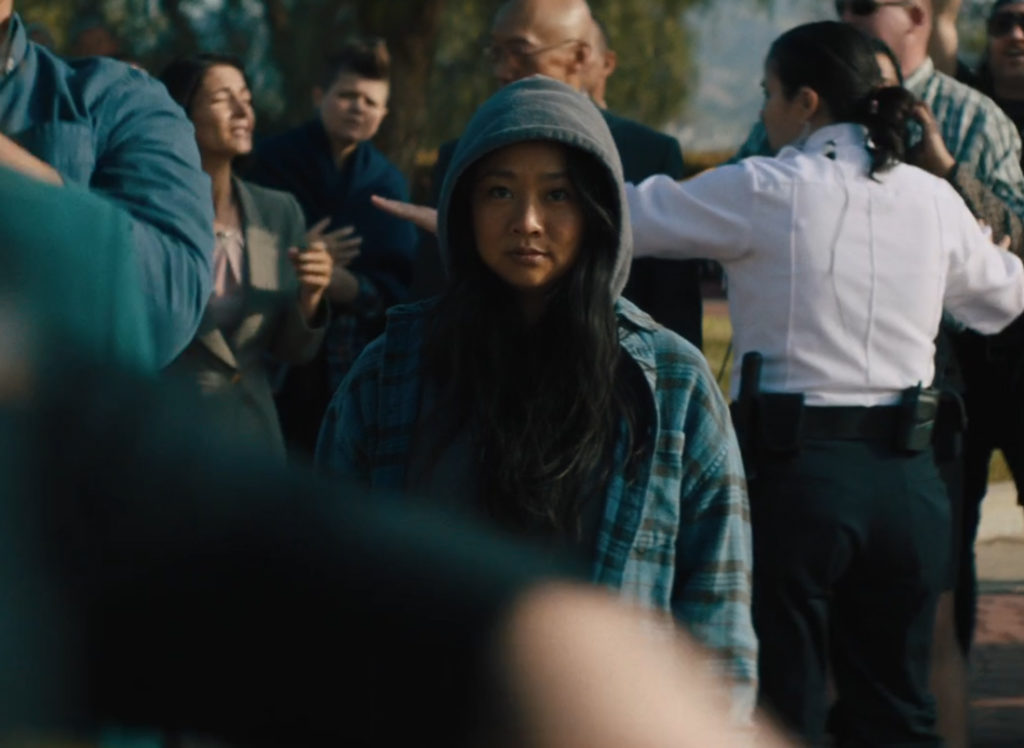
Nirvana:
There is nothing here that I can try to explain or define; a subject matter this complex simply eludes me and hence, I will again, let Watts explain:
The Third Noble Truth is concerned with the ending of self-frustration, of grasping, and of the whole viciously circular pattern of karma which generates the Round. The ending is called nirvana, a word of such dubious etymology that a simple translation is exceedingly difficult. It has been variously connected with Sanskrit roots which would make it mean the blowing out of a flame, or simply blowing out (ex- or de-spiration), or with the cessation of waves, turnings, or circlings (vritti) of the mind.
The two latter interpretations seem, on the whole, to make most sense. If nirvana is “de-spiration” it is the act of one who has seen the futility of trying to hold his breath or life (prana) indefinitely, since to hold the breath is to lose it. Thus nirvana is the equivalent of moksha, release or liberation. Seen from one side, it appears to be despair-the recognition that life utterly defeats our efforts to control it, that all human striving is no more than a vanishing hand clutching at clouds. Seen from the other side, this despair bursts into joy and creative power, on the principle that to lose one’s life is to find it- to find freedom of action unimpeded by self-frustration and the anxiety inherent in trying to save and control the Self.
If nirvana is related to the cessation (nir-) of turnings (vritti), the term is synonymous with the aim of yoga, defined in the Yogasutra as citta vritti nirodha–the cessation of turnings of the mind. These “turnings” are the thoughts whereby the mind endeavors to grasp the world and itself. Yoga is the practice of trying to stop these thoughts by thinking about them, until the utter futility of the process is felt so vividly that it simply drops away, and the mind discovers its natural and unconfused state.
It is obvious, however, that both etymologies give us the same essential meaning. Nirvana is the way of life which ensues when clutching at life has come to an end. In so far as all definition is clutching, nirvana is necessarily indefinable. It is the natural, “un-self-grasped” state of the mind; and here, of course, the mind has no specific meaning, for what is not grasped is not known in the conventional sense of knowledge. More popularly and literally understood, nirvana is the disappearance of the being from the Round of incarnations, not into a state of annihilation, but simply into a state escaping definition, and thus immeasurable and infinite.
To attain nirvana is also to attain Buddhahood, awakening. But this is not attainment in any ordinary sense, because no acquisition and no motivation are involved. It is impossible to desire nirvana, or to intend to reach it, for anything desirable or conceivable as an object of action is, by definition, not nirvana. Nirvana can only arise unintentionally, spontaneously, when the impossibility of self-grasping has been thoroughly perceived. A Buddha, therefore, is a man of no rank. He is not above, like an angel; he is not below, like a demon. He does not appear anywhere in the six divisions of the Round, and it would be mistaken to think of him as superior to the angels, for the law of the Round is that what goes up must come down, and vice versa. He has transcended all dualities whatsoever, and thus it would mean nothing to him to think of himself as a superior person or a spiritual success.
To explain a word and idea which in definition is ‘undefinable’ I refer to the Hong Kong cinema masterpiece Running on Karma (“Dai Zek Lo” 2003) by Johnnie To and Ka-Fai Wai. The fact that this movie denies to be classified in any typical genre makes it a befitting example of Nirvana. Unlike typical Hong Kong block busters, this film is serious, but it is definitely main stream and not art house or pretentious by any means. It’s neither a comedy, a romance, crime drama or an action flick but this film has all those aspects. The only claim one can make is that the film resembles the format of classic Chinese fantasy novels, specifically in this case, one about the true meaning of Buddhism much like the famous classic Journey to the West or Monkey; a famous mythopoetic recount of a Tang dynasty monk’s pilgrimage into India to bring Buddhist scriptures back to China. Running on Karma is essentially the spiritual successor in a sense, though don’t be mistaken, this film is a completely original independent piece of work. The similarity I am pointing out is that the core story of the film, and the film’s main purpose, is to act as a source of spiritual insight and extended allegory into Buddhist theology; all packaged/crafted for mass consumption by modern Hong Kong audiences of all ages. It is because of that, parallels between Monkey and Running on Karma cannot be avoided.
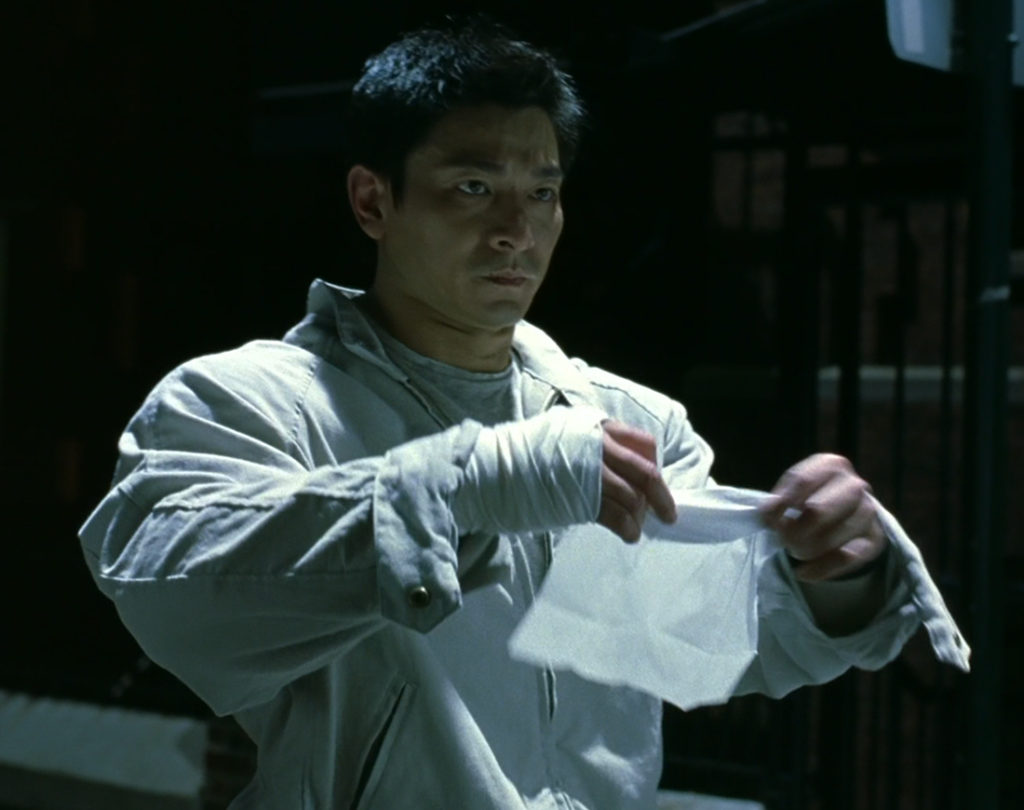







The film begins when the two main characters accidentally meet at, a Hong Kong movie classic troupe, a strip ‘club bust at an unlicensed venue’ by the police. Where Big or Dai zek lo (“big muscle guy” in Cantonese), one of the male strippers at the club played by Andy Lau, tries to escape arrest but was eventually captured by police agents whom were chasing a murderer of another case. Again, another Hong Kong movie classic troupe, the cops take out their frustration of their dead comrades from the murder case on Big since the perpetrator was able to escape. In that moment the audience formally meets Inspector Lee Fung Yee, played by Cecillia Cheung, the sting operative for the club bust whom Big was running from in the first place, comes in and ‘saves’ him from Inspector Chung, played by Eddie Cheung, the commanding officer of the murder case.
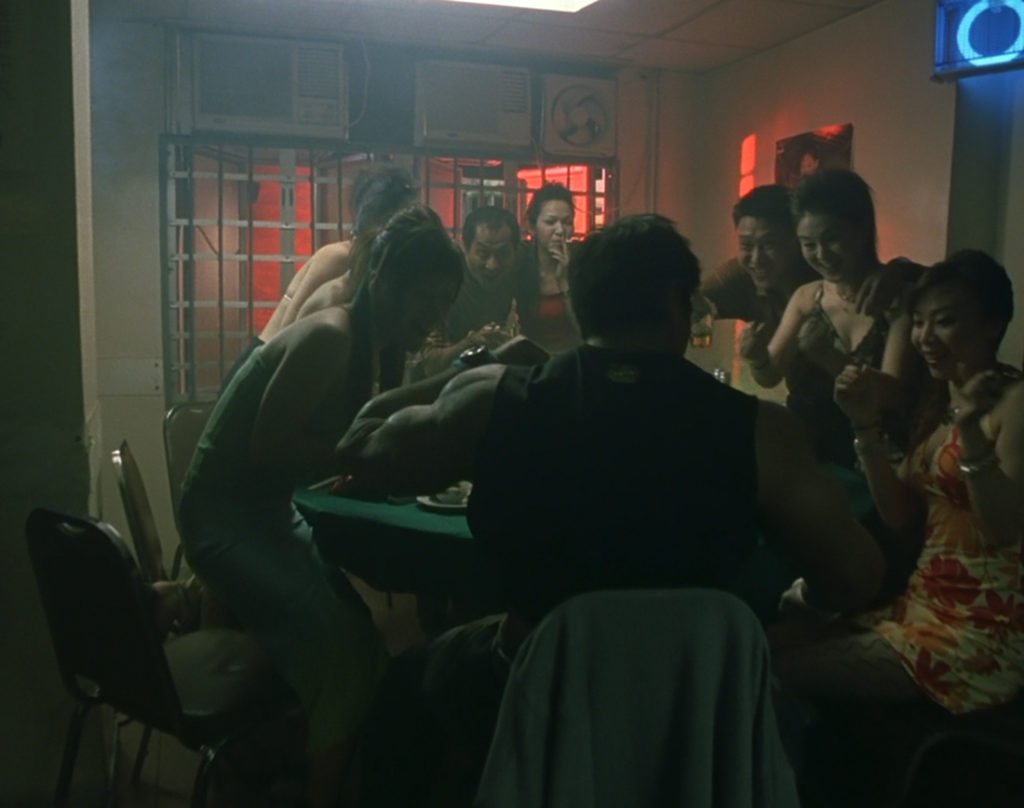









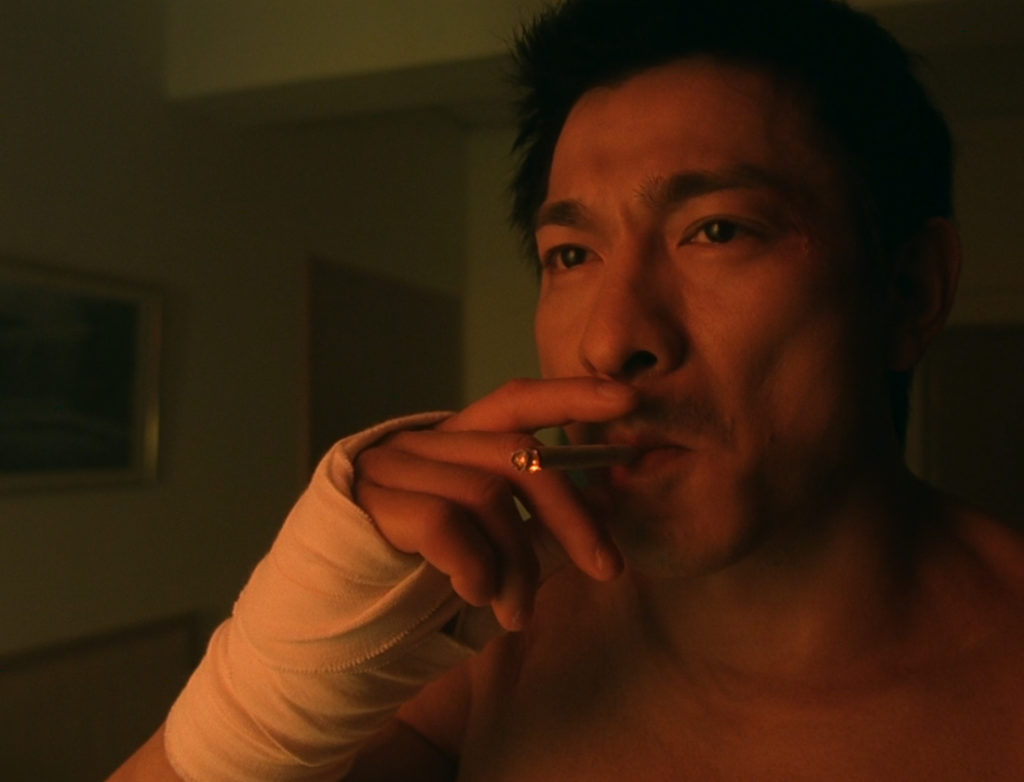
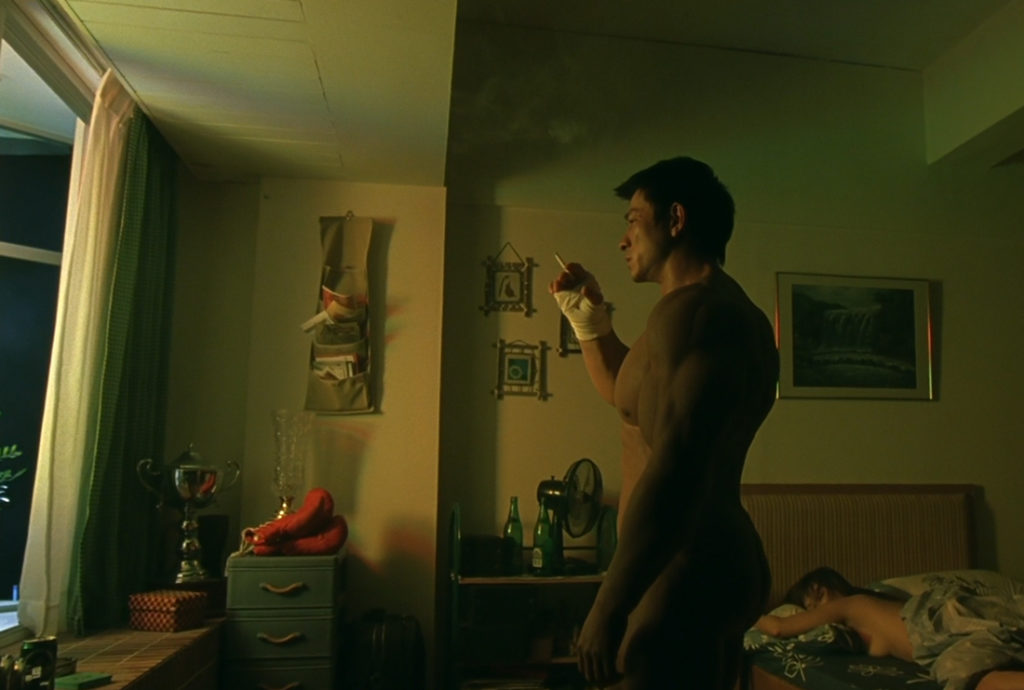
The character development in the film is rapid and the story follows a very linear beginning, middle and end format. Essentially the entire film is centered around the character Big and his interactions with his surrounding world specifically with the interactions with inspector Lee, each time they encounter does the film progress and the narrative is advanced allowing the viewer to only experience time through Big’s brief interactions with Lee be it physically or mentally.
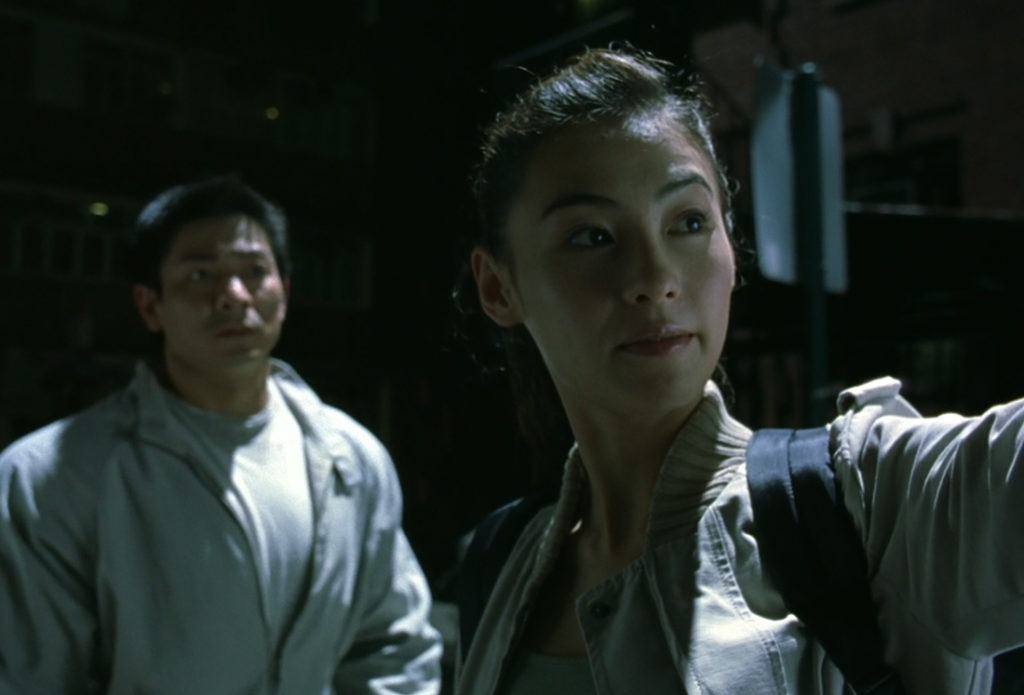
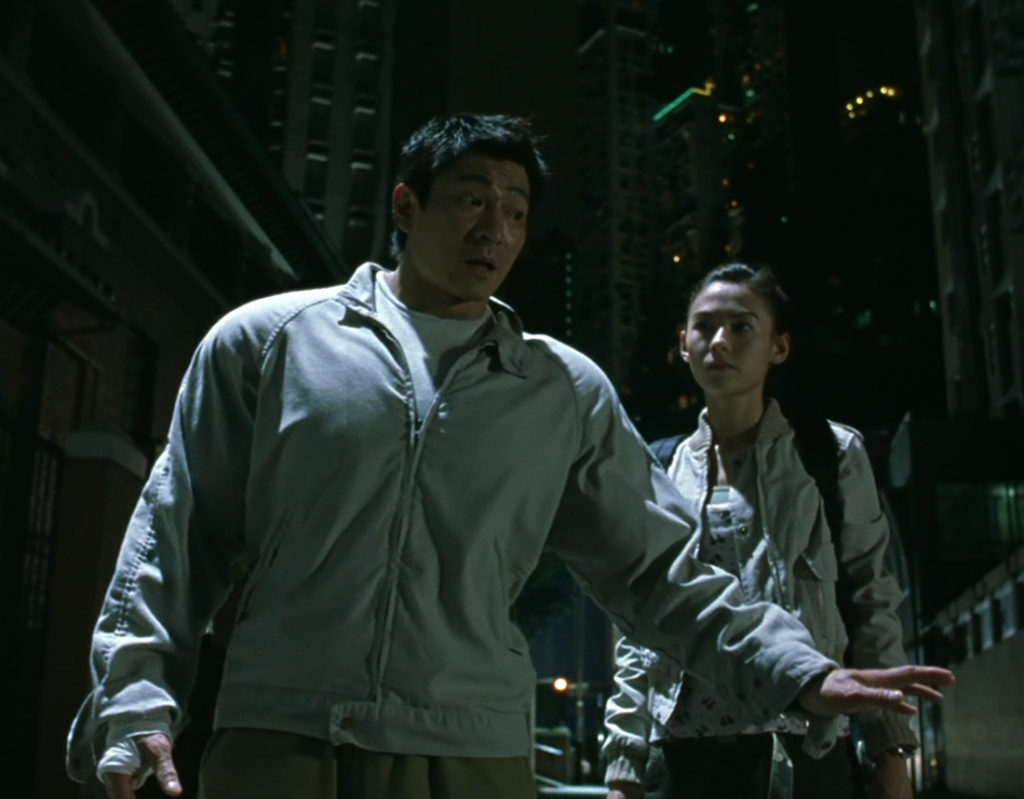
The first progression quickly introduces Big as a super human/larger than life character symbolized by the muscle suit worn by the actor, something stereo-typically derogatory and symbolically opposite to all the traits one associates with Buddhist monks or someone that holds great esoteric spiritual knowledge. That said, Big is a warrior monk of the highest orders holding both great physical and spiritual powers like the heroes within fantasy novels.
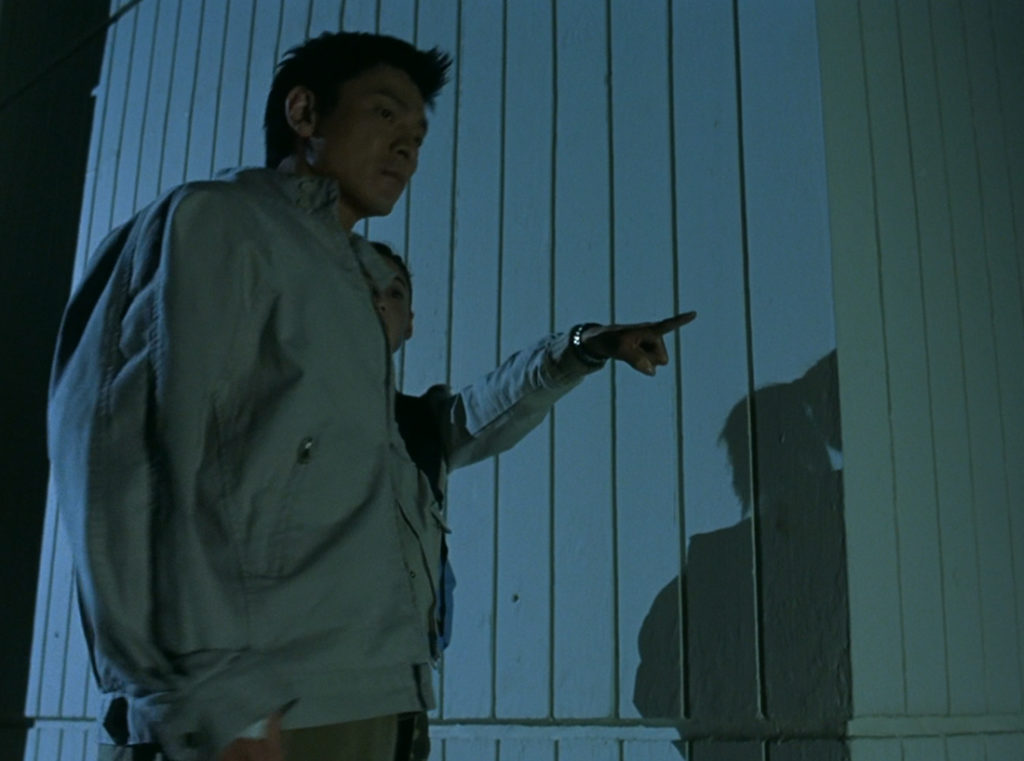
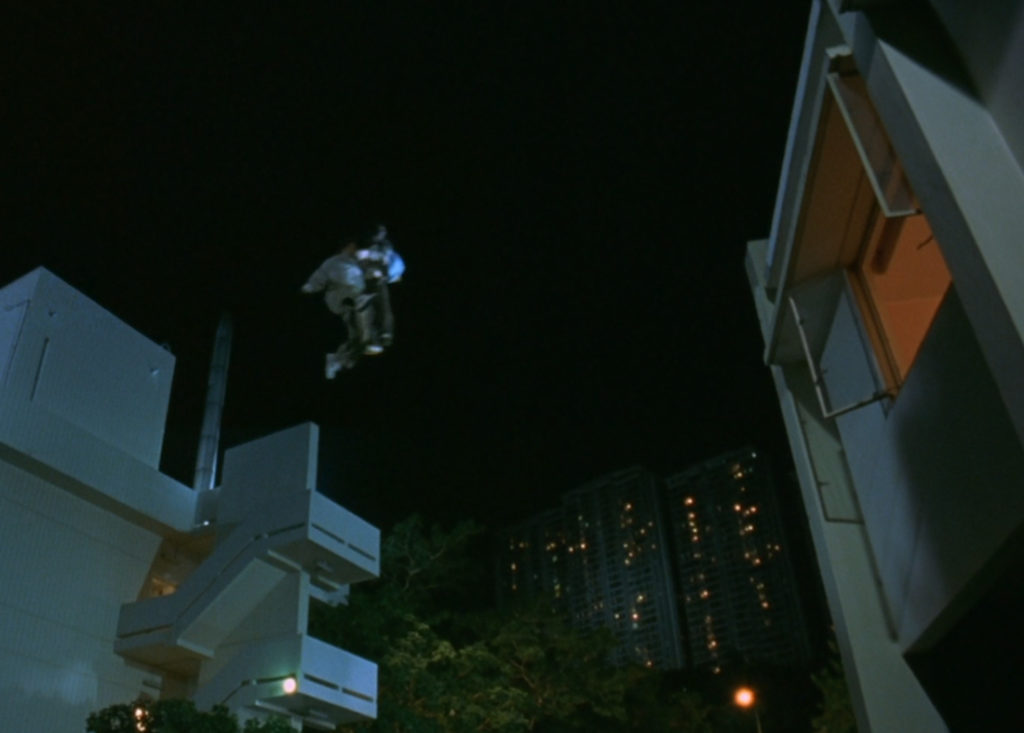
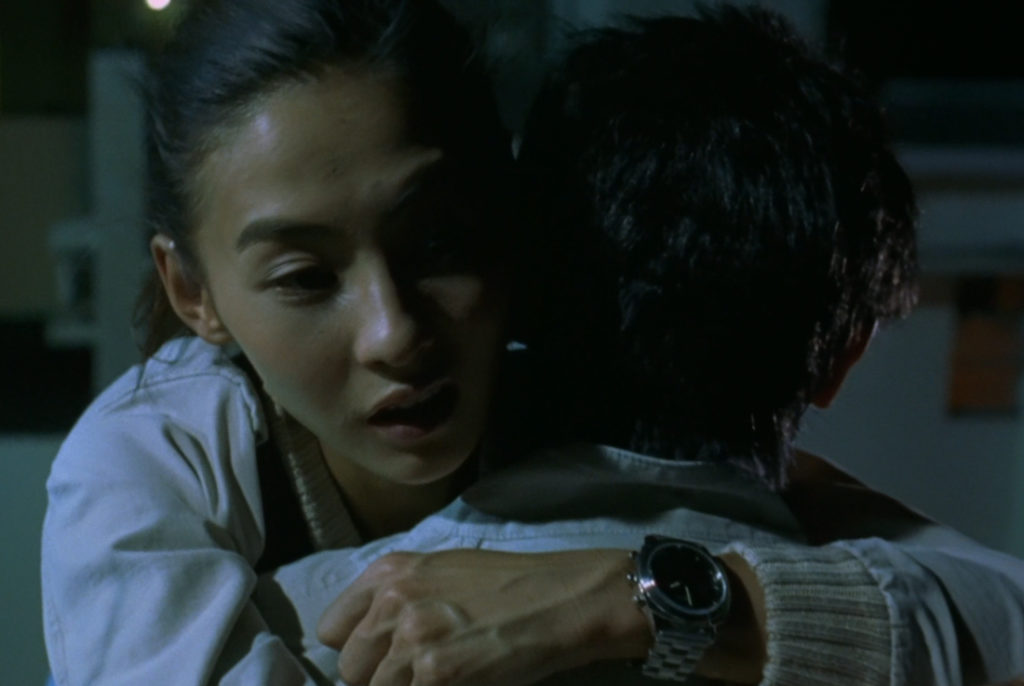
While inspector Lee is introduced to be extremely plain, stereotypical a-girl-next-door type that happens to be a cop with an overwhelming sense of virtue and kindheartedness as her only qualifications. It is explained to the audience that Big can see cause/effect or Karma of all those he interacts with. When he met inspector Lee what he saw was a Japanese solder decapitating Chinese prisoners during WWII. These images usually act as foreshadowing or signs that Big can decipher on how and when that individual will die. In his interaction with inspector Lee, Big was moved by Lee’s pureness and kindheartedness and tries to save Lee from her karmic fate and decides to assist Lee on the murder case which Lee is now embroiled in.
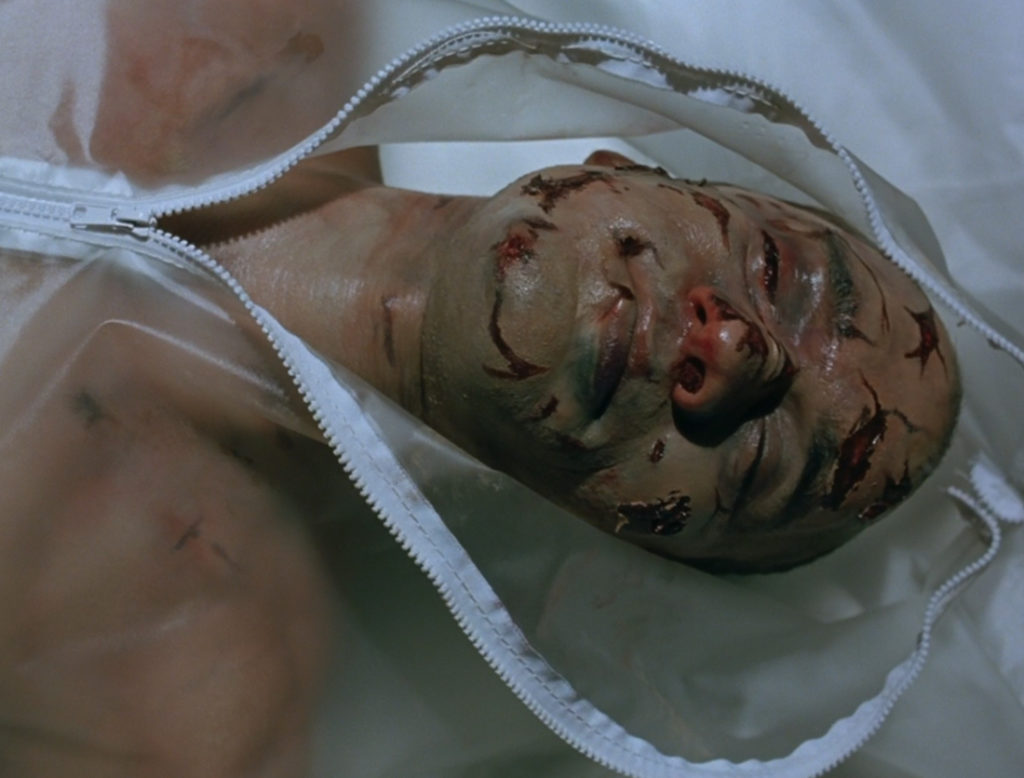
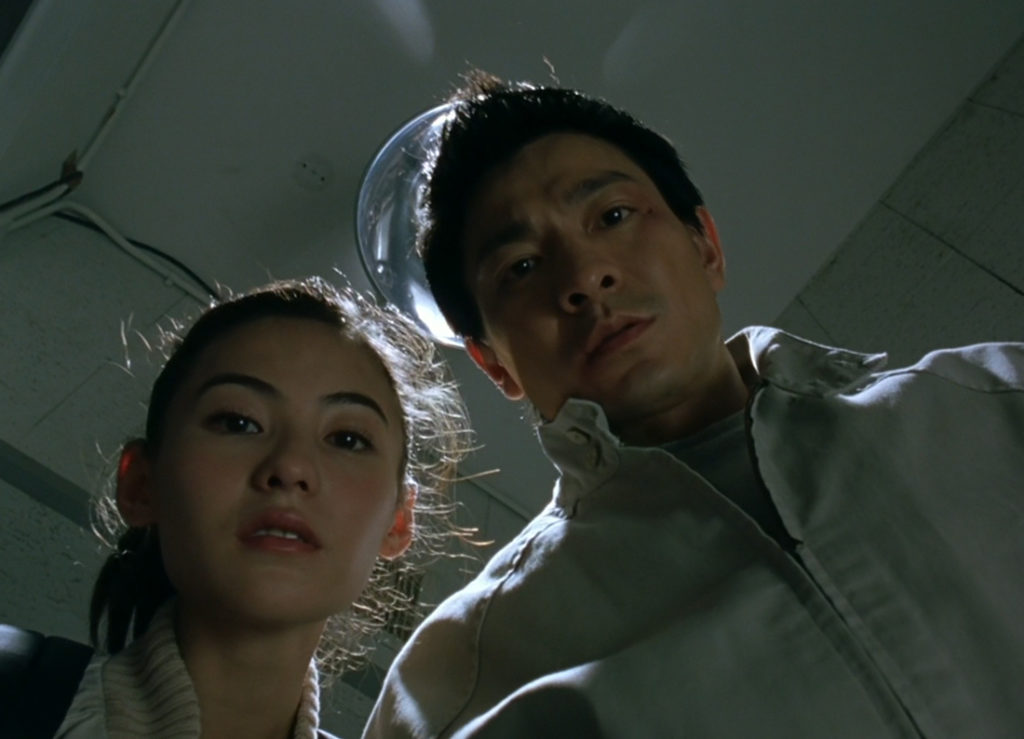












Senpai, please to don’t kill me.. I know I was wrong, I am sorry, please forgive me!

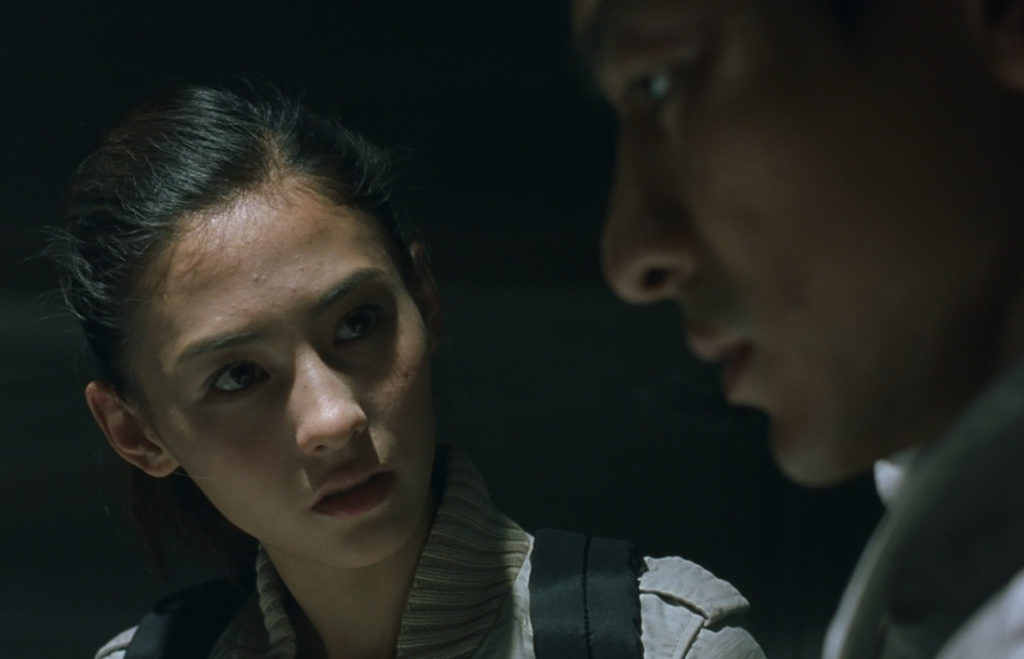
The first story arc ends with Big solving the case (with epic fantasy-like kung fu fighting scenes) and saves the girl (inspector Lee from certain death while winning her heart) and the day as well (inspector Chung’s character is redeemed from his own need for vengeance). The karmic image of the Japanese solder dissipates from Lee’s image and Big retreats into seclusion through burying himself in modern forms of consumption, girls, alcohol, parties, things that are symbolically opposite from ascetic life.
The first arc of the story explains the most basic understanding of karma to the audience. The lessons on good and evil, cause and effect as the first example to point the audience to the main question and essence of Karmic Law. Human life and all our experiences of our daily lives require all of us to take life in one form or another, to exploit, to harm, to hurt, to kill; even from the most innocent of our daily actions. How does Karmic Law then apply to that, to all of us, those whom are considered to be the “good guys”? How does one judge themselves in the first example portrayed in the movie, our basic understanding of Karma and our everyday life? How and where does one begin to reconcile the suffering/experience of life itself? The rest of the movie tries to provide the audience the glimmers of higher spiritual understanding to lead the audience to their own answers.
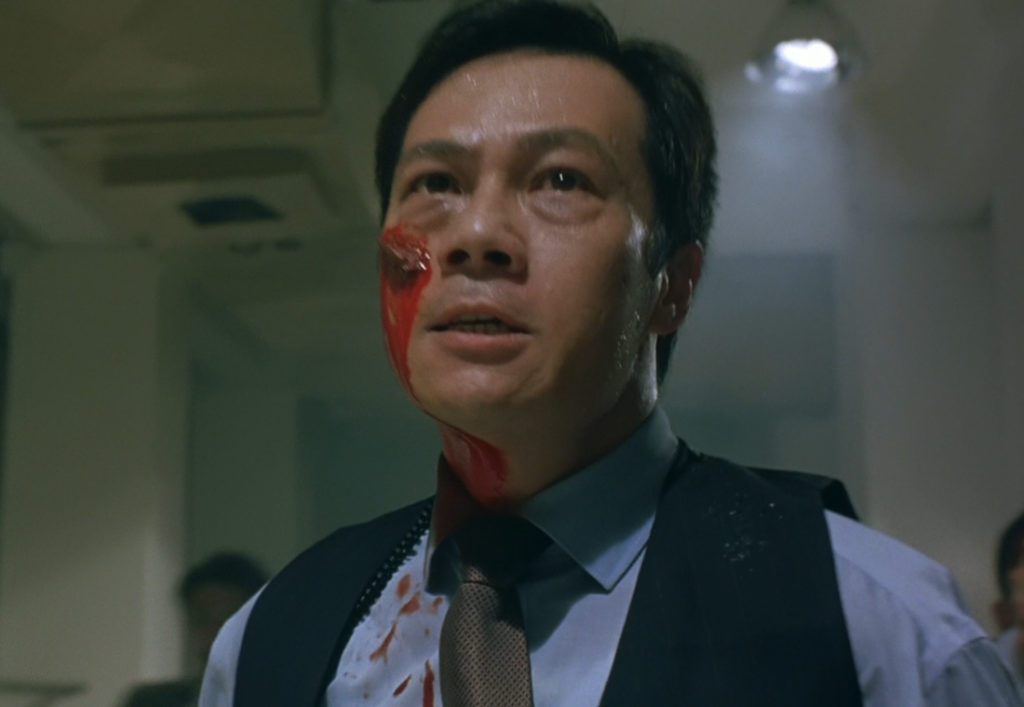





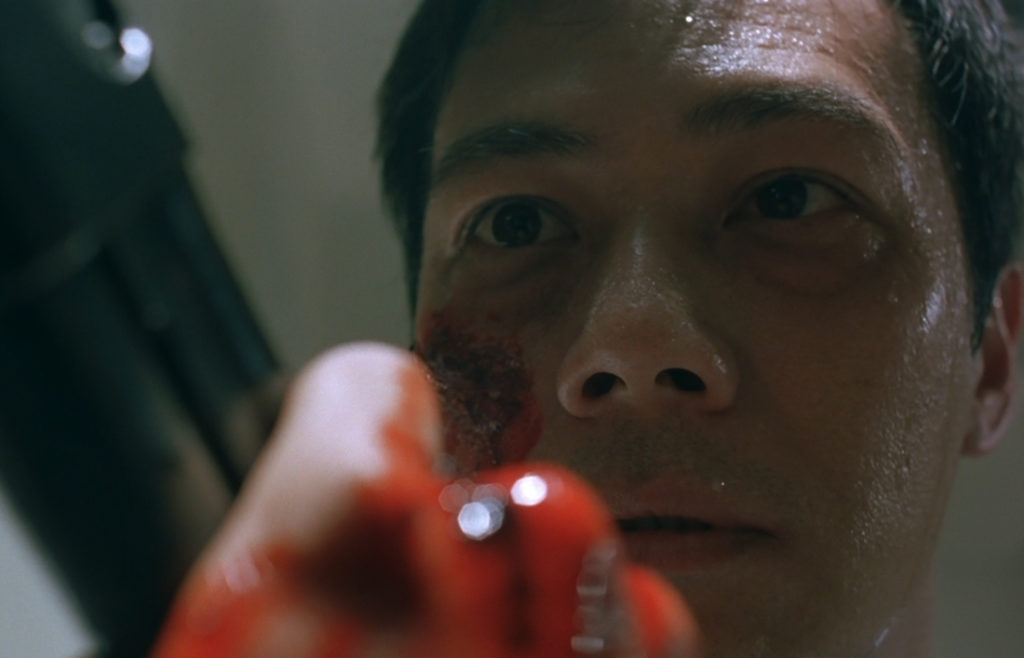



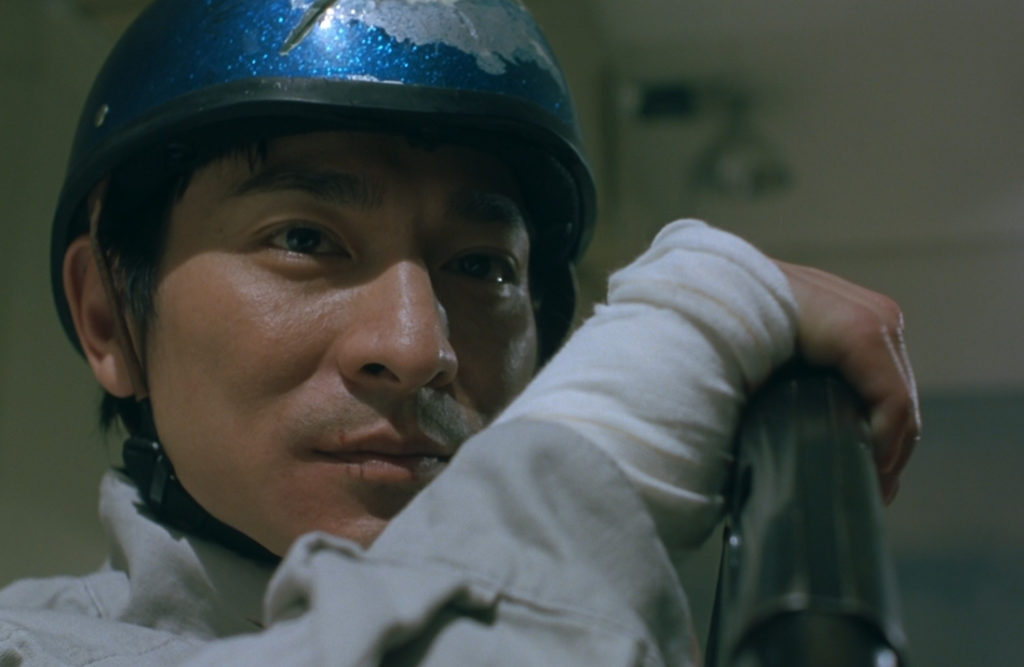
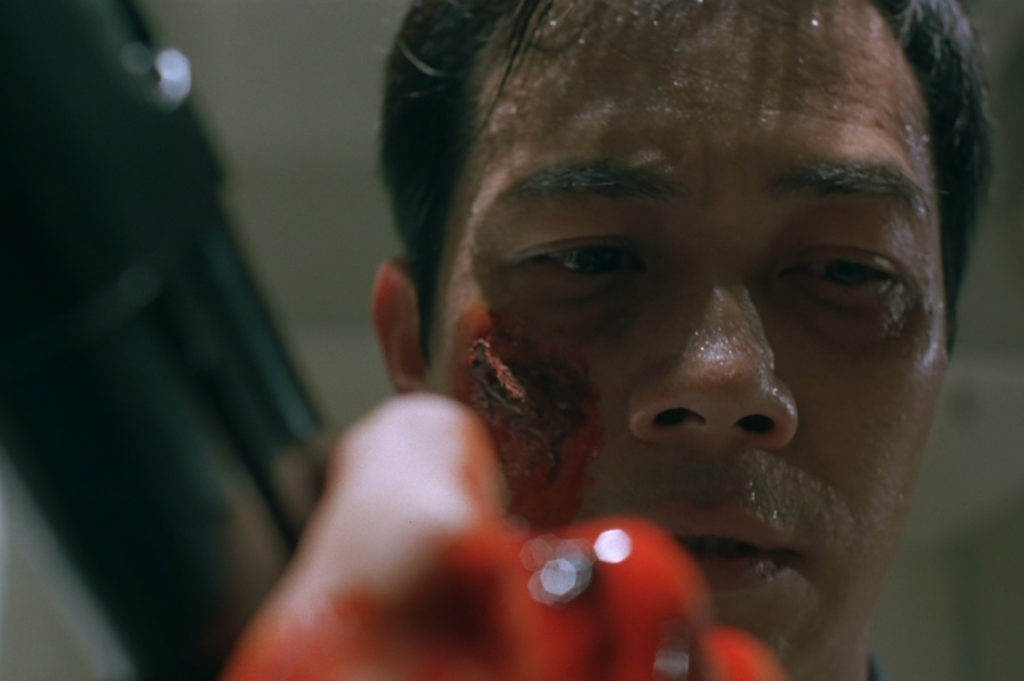
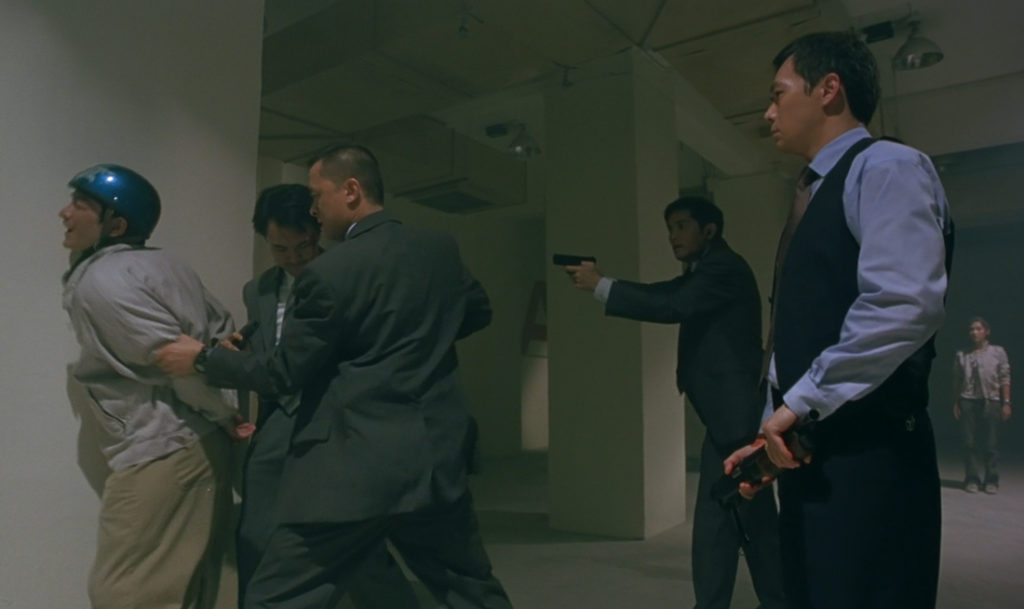
The middle or the second story arc explains that inspector Lee pines after Big now that she has fallen in love with him. As Lee tries to understand Big’s history, it turns out when Big was still a practicing monk in a remote Chinese village, he developed a close friendship with a kind hearted girl like Lee.
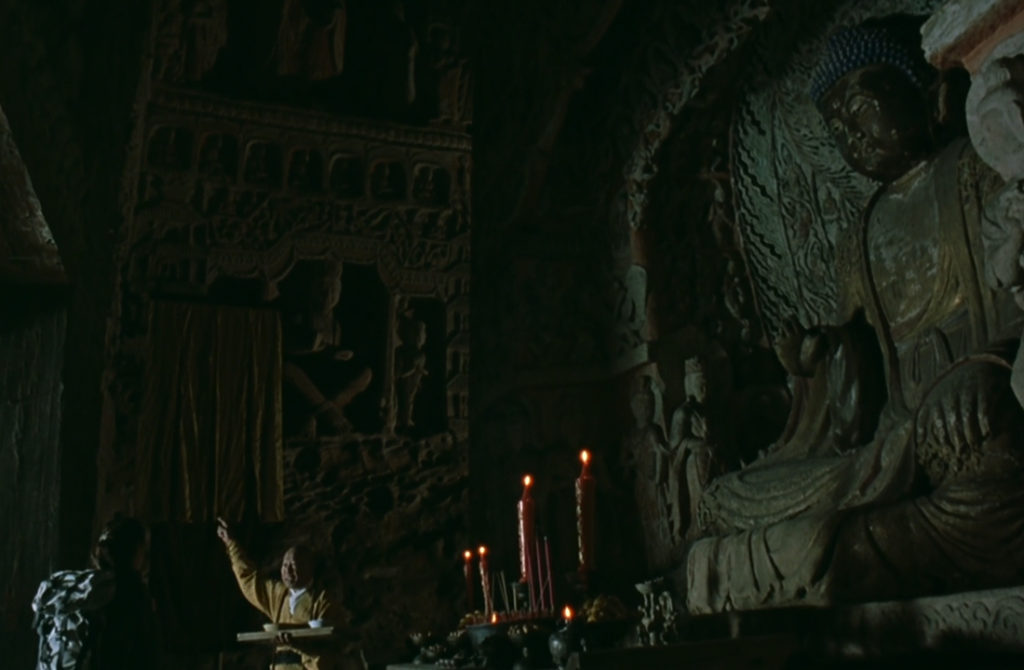

One day this girl was killed by a random stranger with the name of Sun Ko (a play on words, with a meaning similar to ‘without cause’ in Cantonese) and that Sun Ko has run off into the mountains to escape persecution. Big, being a warrior monk, runs off after him into the mountains in rage swearing vengeance on Sun Ko for killing his friend.
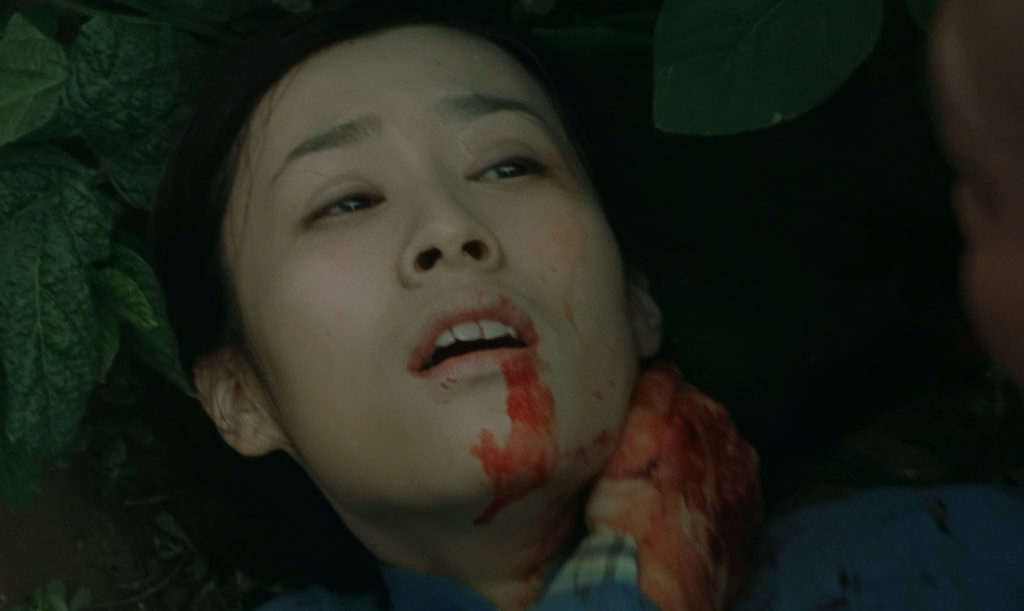
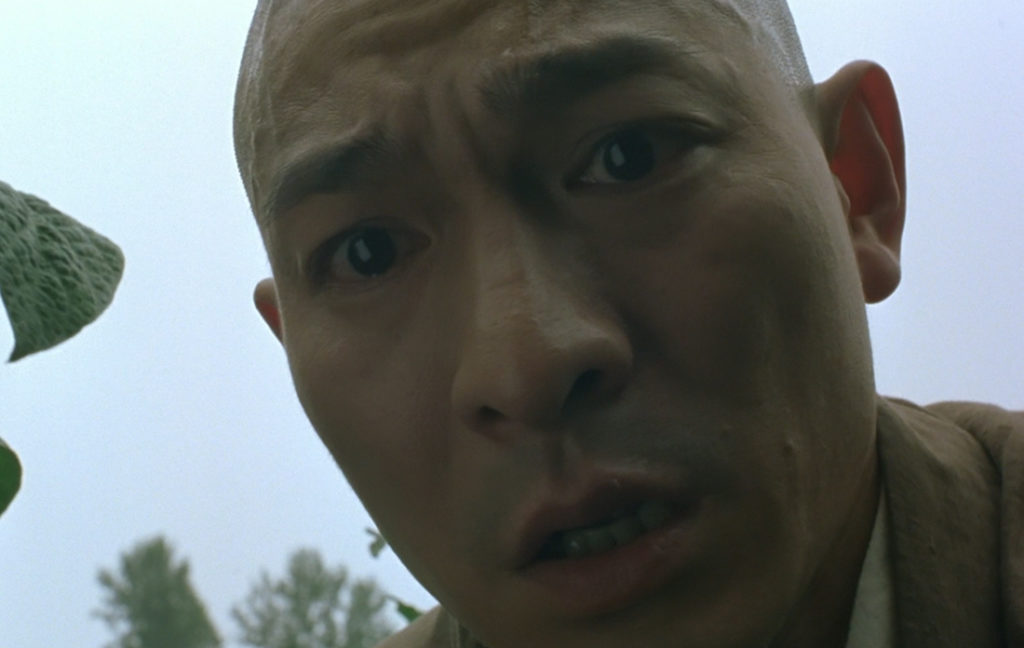
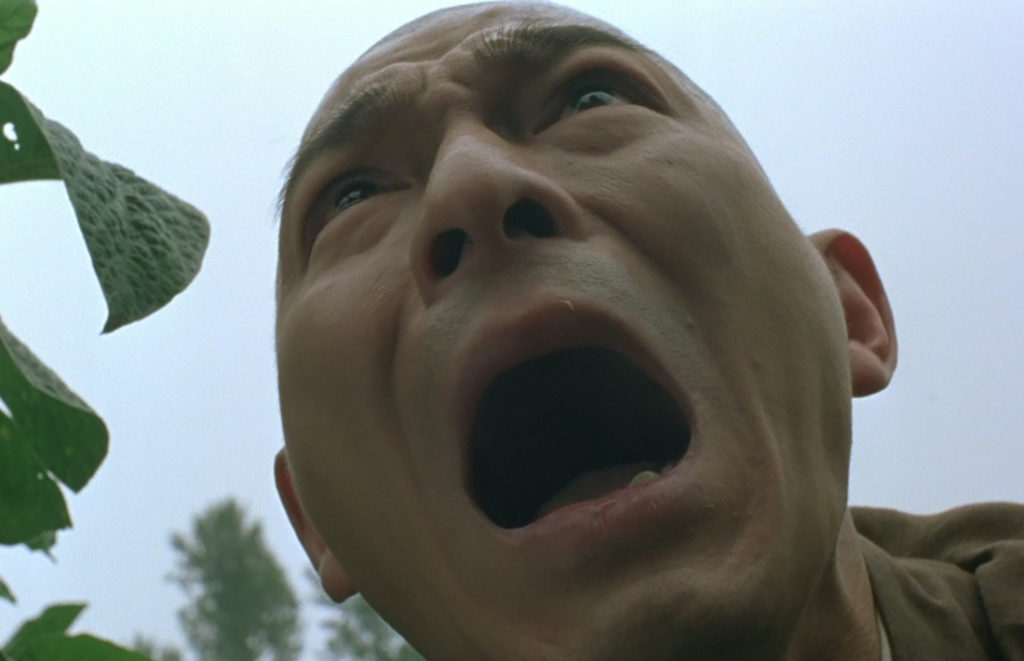
Regardless of how much Big struggled, his search was in vain and he was never able to get vengeance on Sun Ko. At that moment of frustration and blinded by anger, Big accidentally kills a small bird on a tree. In witnessing this innocent life that he just took, Big sits next to the tree and the bird and meditates for seven days in which he obtained the ability to see karma, all cause and effect, that all outcomes regardless of how they looked were fair and balanced, from this very awareness/awaking he realized could no longer practice Buddhism. It is important to note the important distinction the film makes here: Big can see karma, but he did not reach enlightenment.








Sifu Wu: Big and others went searching for him, but there was no trace of Sun Ko. Big got furious and hit the trees with his stick. And he killed innocent an sparrow. Big sat under the tree and looked at the sparrow for 7 days. Suddenly, he took off his robe and gave up being a monk.
When Big finally sees Lee again, the image of the Japanese soldier returns so again, Big steps in and saves Lee from certain death when she accidentally slips and falls off a building while trying to catch a thief. This time though the image of the Japanese soldier dissipates and then quickly returns showing Big the futility of his actions.
At the end of the second story arc, Big confesses the reason why he is always saving Lee and explains to Lee, her past karmic life as a Japanese soldier that has killed far too many people and she will die an unavoidable death in this life; Big will no longer step in to save her. Lee at first struggles to accept the logic on how that is fair since she in this life has committed no crimes but eventually surrenders to the inevitable and promises Big: she will continue to fight on and live each day to the fullest in the face of her fate.
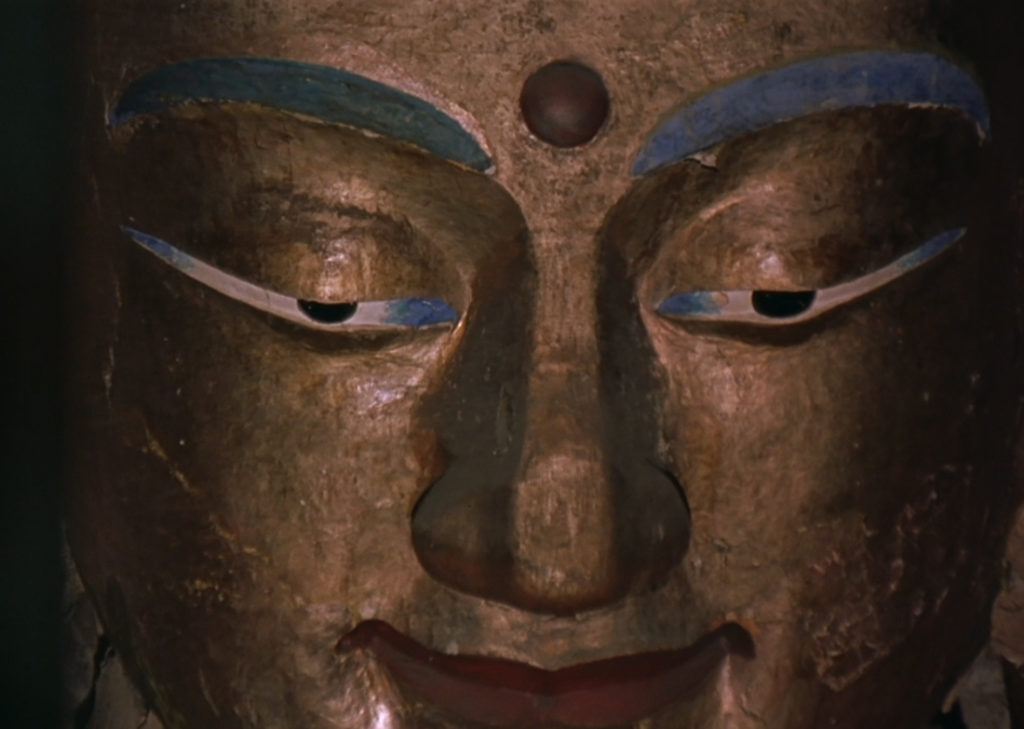
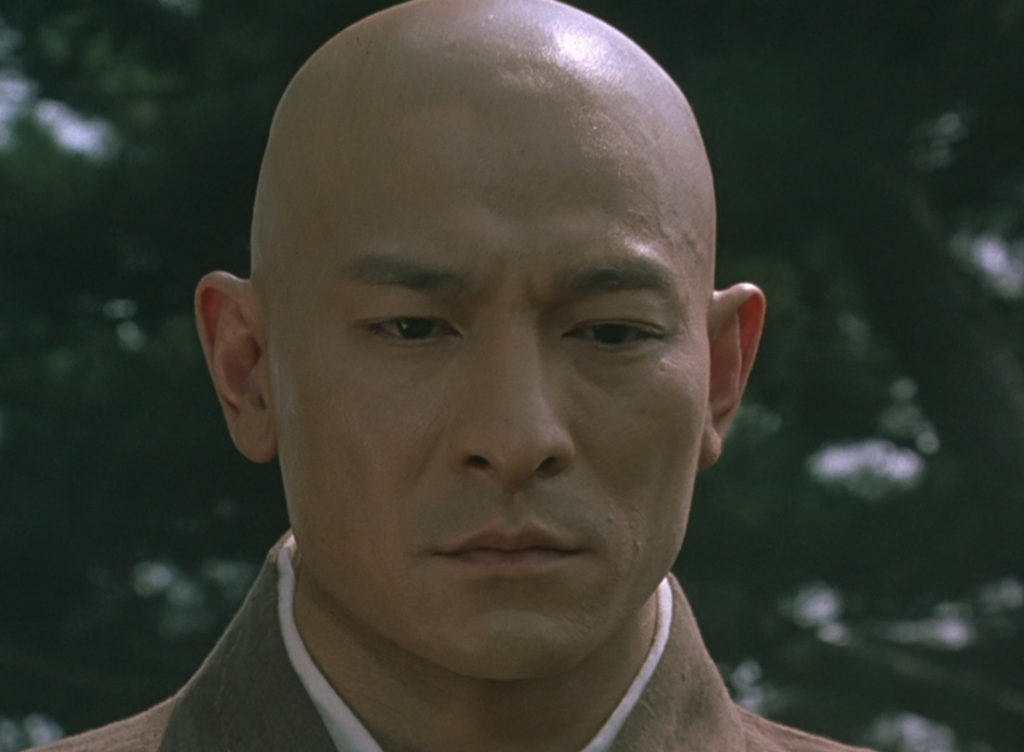
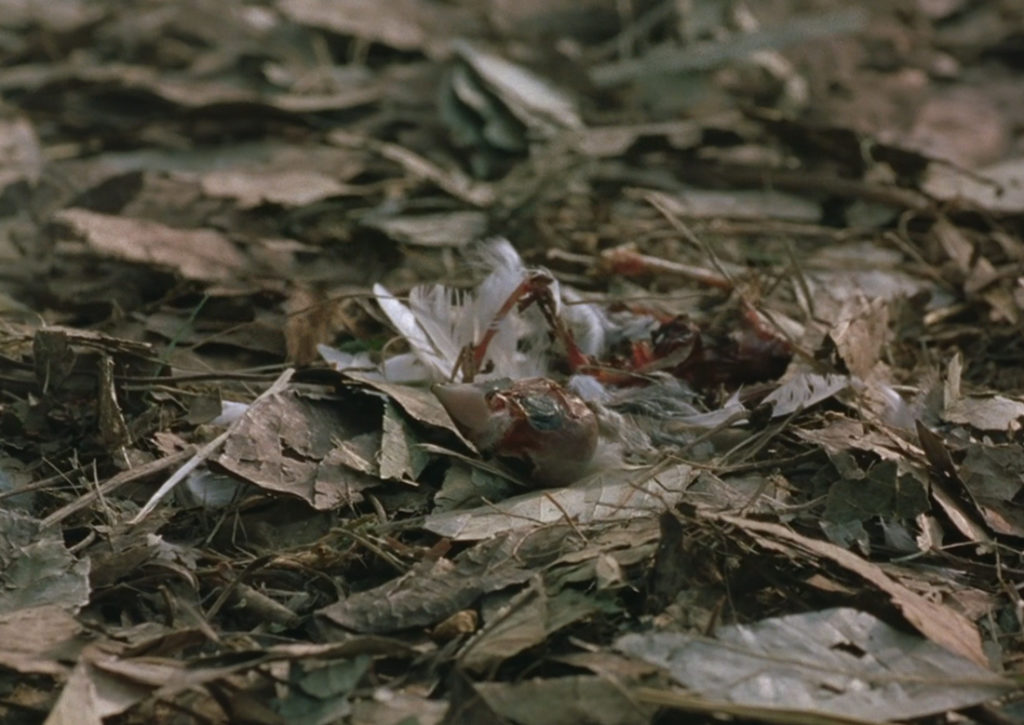
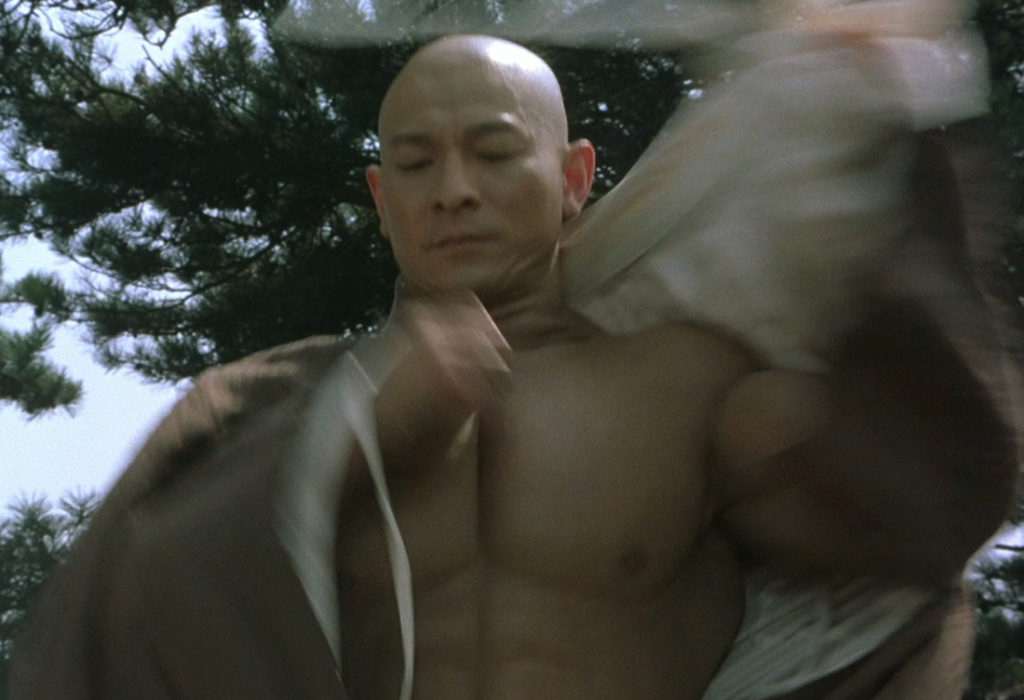
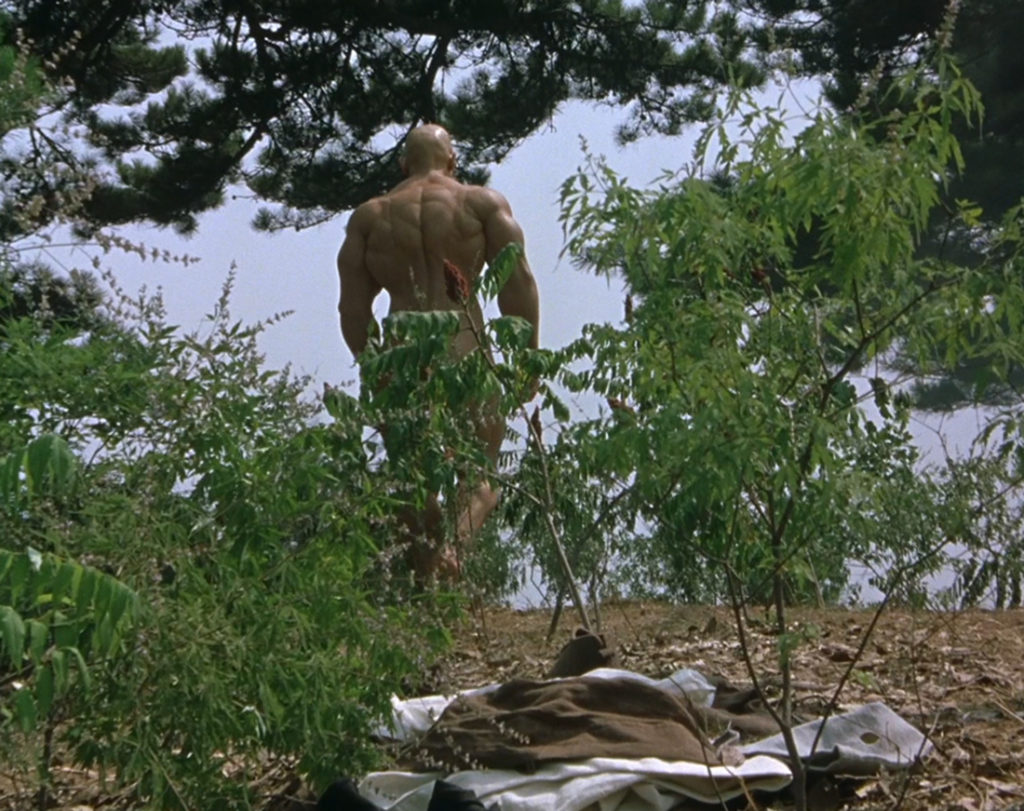
The end or the climax of the movie is narrated by Lee as the viewers witness Big desperately searching for her. Lee, seeing that no matter what she does her life will come to an ill-fated end, she decides to give Big a gift as her last act on earth; Lee hopes she would be able to find Sun Ko for Big out in the mountains if she goes and looking for him. As fate would have it, Lee does find Sun Ko and succumbs to a terrible death as her own murder and decapitation by Sun Ko is captured on the video camera that was left behind. Deja vu, Big blinded in rage swears to seek out Sun Ko in the mountains to avenge his murdered friend and runs into the mountains. Big eventually finds Lee’s missing decapitated body and head, still with the karmic image of the Japanese soldier lingering even after her death. In Big’s distress and anger at the horrific sight, he catches a glimpse of a stranger running away in the corner of his eye and chases after him into a cave.
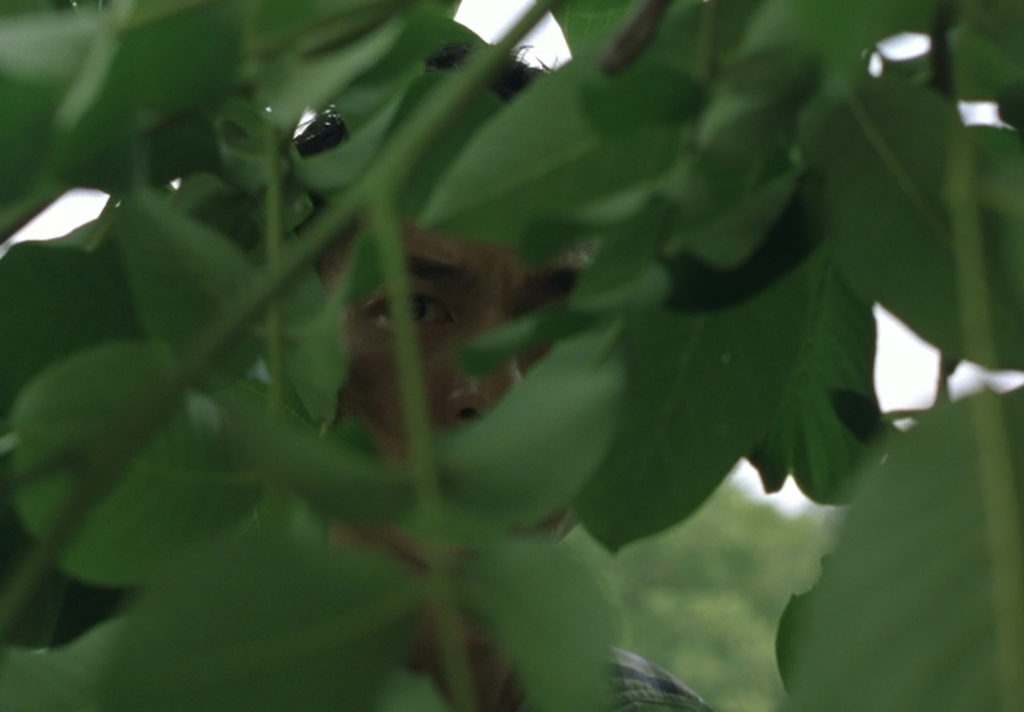
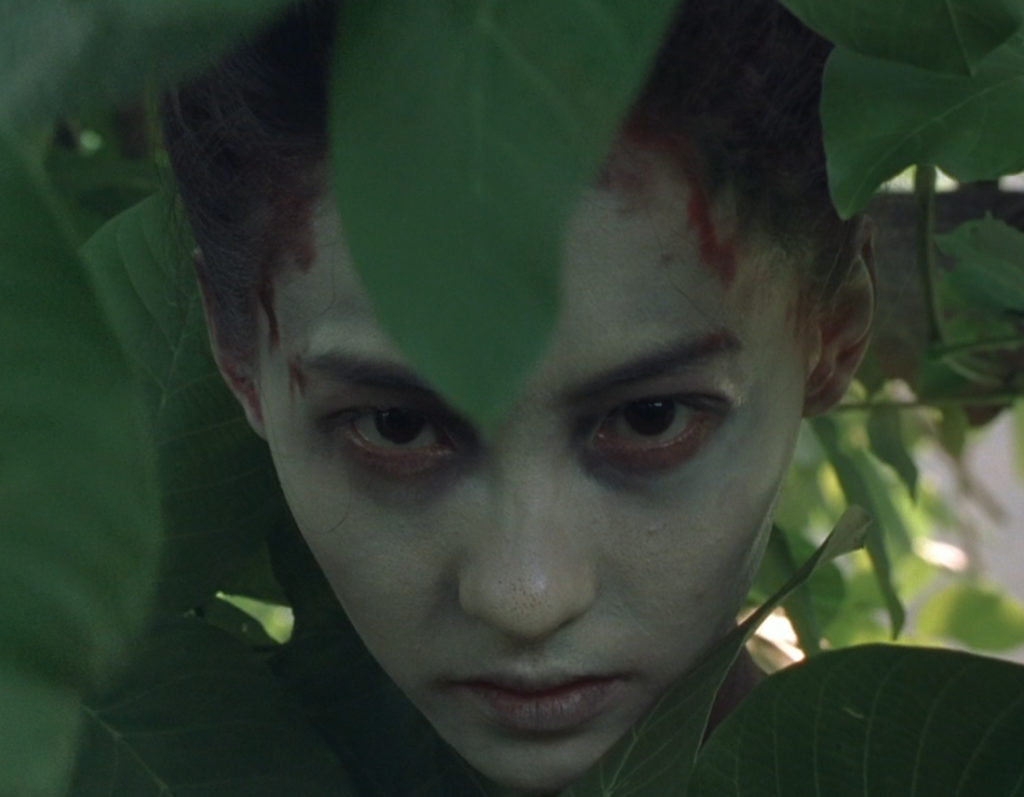
This next scene is the most important and pivotal in the entire film: when the cave opens up, Big is confronted not with Sun Ko, but an image of himself. This doppelganger of himself was the split in his own ego, the Big that never left the mountain and stayed a monk and kept searching for Sun Ko. The doppelganger that could see karma and dealt out justice to all that deserved death. The doppelganger questions Big, why does he feel any remorse for someone like inspector Lee when he clearly saw what she did in her past life? Why did he feel any pain or remorse for Jade or even the bird, when he can clearly see their deaths were fair and just according to their karmic pasts?
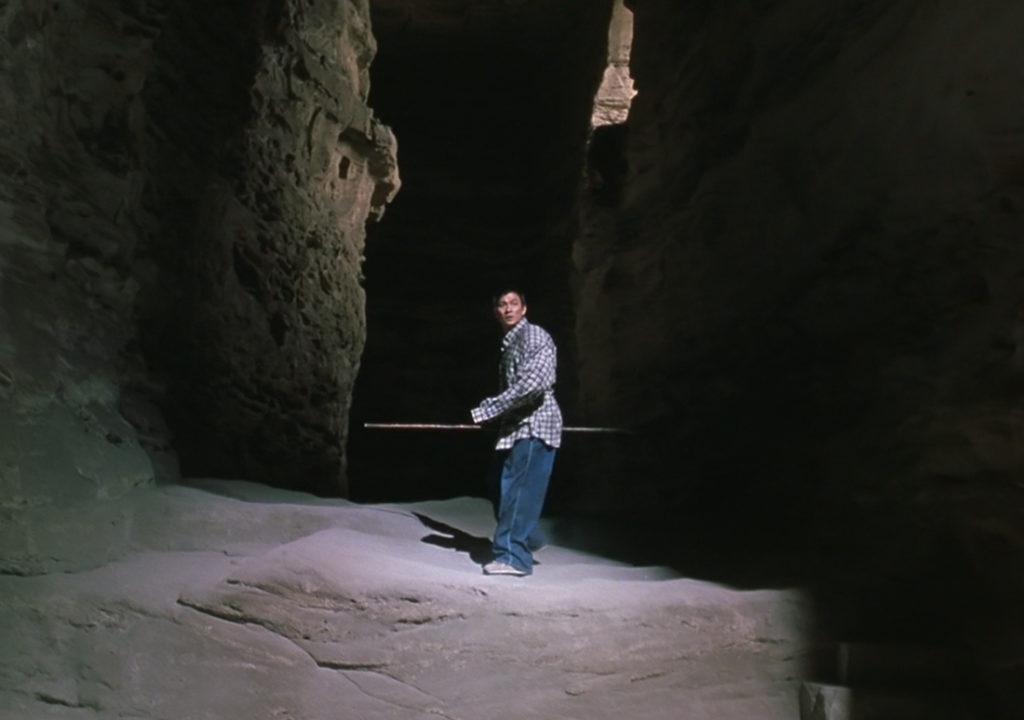
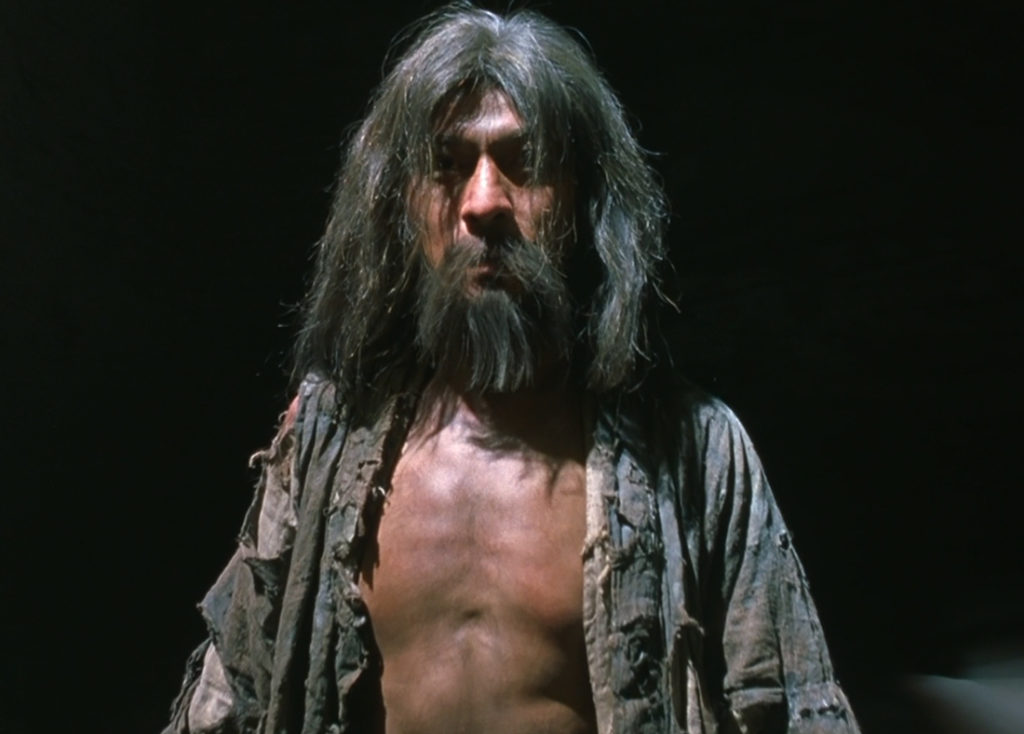

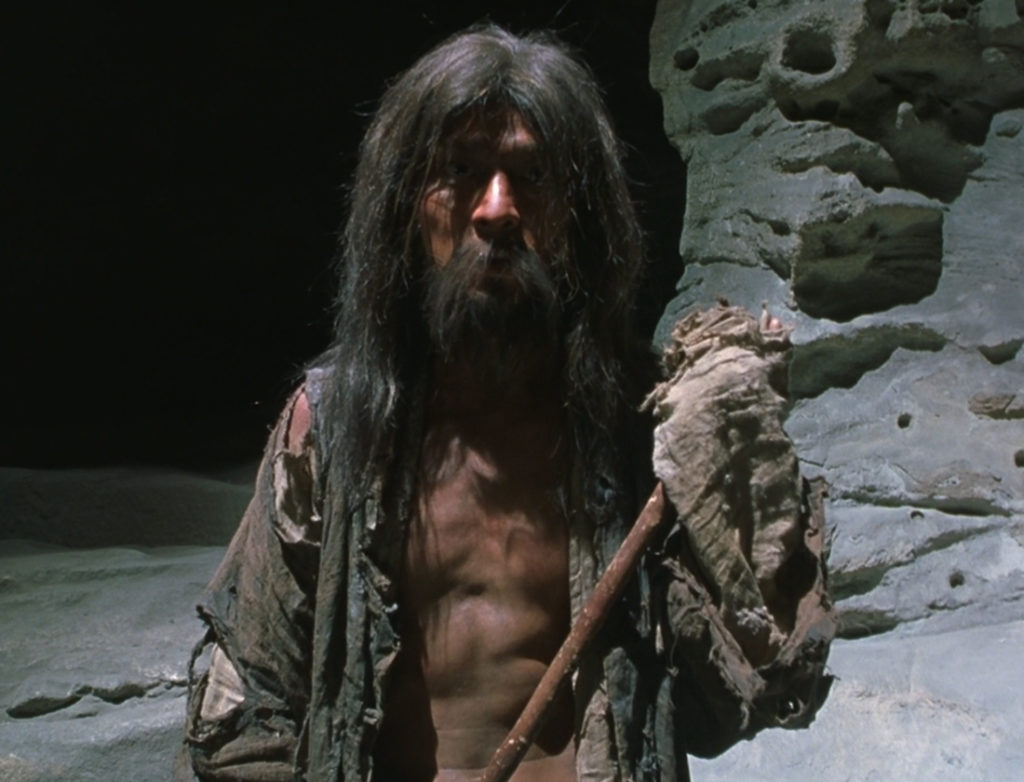




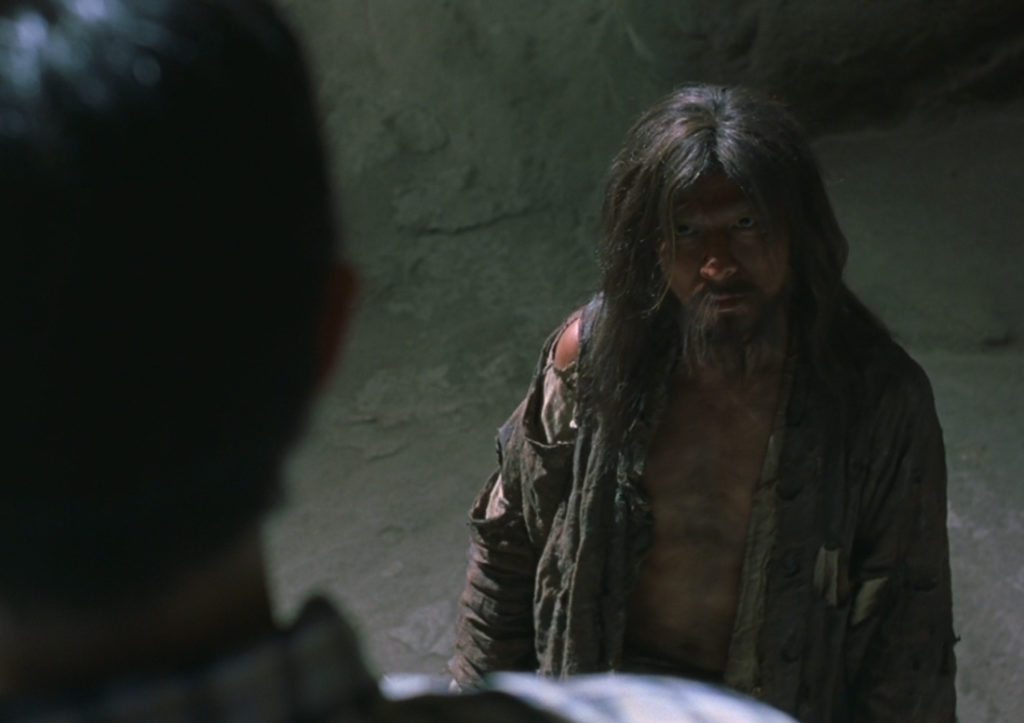
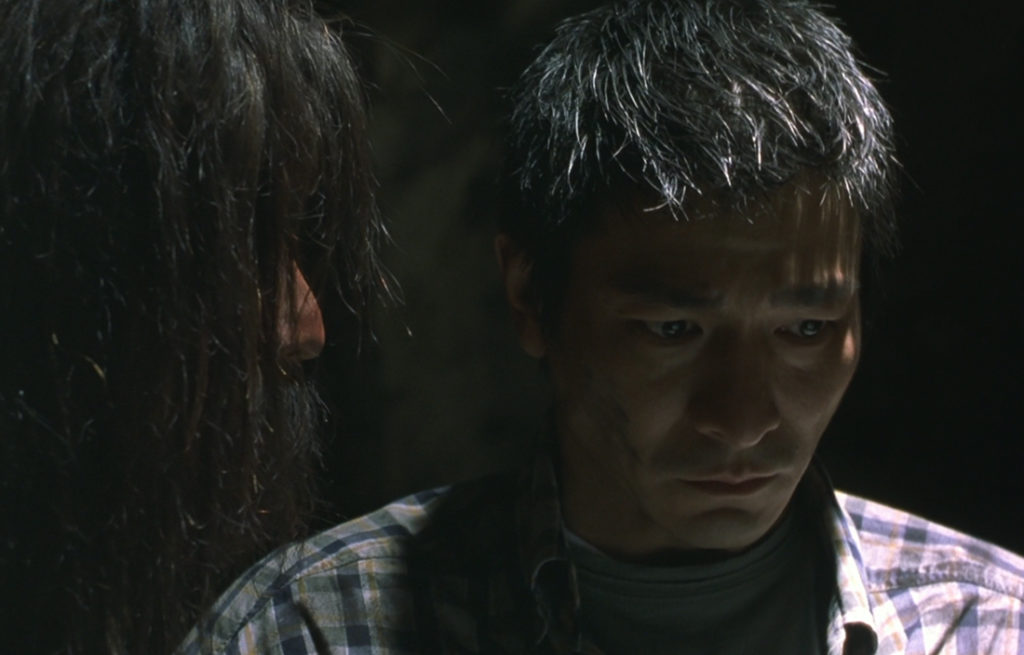
In the provocation Big and the doppelganger engaged in combat, but no matter the amount of force Big applied they fought on equal footing. Till eventually Big gets the upper hand and as he was just about to apply the finishing blow the doppelganger and Big locked eyes and, in that moment, Big reached full understanding (enlightenment) and let’s go and stops resisting; the scene of the finishing blow was repeated by the doppelganger and they both ended up siting in meditation facing each other with the doppelganger dissipating.
The movie ends with Big returning to the ascetic life in the mountains. When Big no longer seeks out Sun Ko, he finally meets him and embraces him. After bringing Sun Ko back to village, Big grabs a smoke off a policemen and adorns his new monk clothing and walks-off as if nothing has happened. The only real weakness to the movie is the final scene as Big walks off, we see an image of inspector Lee making a wish that all murders will end, while Big walks off smoking his cigarette as the final fading image into the credits. This snippet is understandable, since this was a movie made for mass consumption, in removing any complications and complexities of the ending scene that could potentially cause discomfort, the director simply slips the audience a direct answer: if there is one thing to learn from this movie, it is to practice non-violence, the end. A necessary blemish on the work of art; in a Hong Kong blockbuster where the romantic drama within the movie is unresolved and leads to the death of the main love interest is rare and unheard of in comparison to the general stereotypical “feel-good” movies in the blockbuster status.
It is not hard to see the parallels between the story of Monkey and Runing on Karma where Big essentially acts as Monkey protecting the Tripitaka/Tang Sanzang character that resembles inspector Lee on her quest to Buddhist enlightenment/the resolving of her Karma. The mythical enemies that inspector Lee encounters on her police duties alludes to this fantasy/supernatural element also found in the story of Monkey as the trials/enemy characters they encounter as they journey west. Here though the directors made a clear distinction, this is a spiritual successor and a completely original work; no symbolic references are made to the Journey to the West. All the typical Hong Kong movie troupes that audiences are familiar with are only used as tools to deliver an authentic Buddhist message. Even the formatting of the movie into discontinuous glimpses of memories and interactions speaks to the unique Buddhist perception of the impermanence of time; that there is no past and no future only now. The ending provides one of the most succinct examples of enlightenment shown in any film to date; the struggle in understanding cause and effect/karma and the struggle within the self as one confronts one’s ego. Here, we see the character Big triumph over his own ego and achieve what Watts describe as ‘nonduality of mind’:
This nonduality of the mind, in which it is no longer divided against itself, is samadhi, and because of the disappearance of that fruitless threshing around of the mind to grasp itself, samadhi is a state of profound peace. This is not the stillness of total inactivity, for, once the mind returns to its natural state, samadhi persists at all times, in “walking, standing, sitting, and lying.” But, from the earliest times, Buddhism has especially emphasized the practice of recollectedness and contemplation while sitting. Most images of the Buddha show him in the posture of sitting meditation, in the particular attitude known as padmasana, the posture of the lotus, with the legs crossed and the feet resting, soles upward, upon the thighs.
Sitting meditation is not, as is often supposed, a spiritual “exercise,” a practice followed for some ulterior object. From a Buddhist standpoint, it is simply the proper way to sit, and it seems perfectly natural to remain sitting so long as there is nothing else to be done, and so long as one is not consumed with nervous agitation. To the restless temperament of the West, sitting meditation may seem to be an unpleasant discipline, because we do not seem to be able to sit “just to sit” without qualms of conscience, without feeling that we ought to be doing something more important to justify our existence. To propitiate this restless conscience, sitting meditation must therefore be regarded as an exercise, a discipline with an ulterior motive. Yet at that: very point it ceases to be meditation (dhyana) in the Buddhist sense, for where there is purpose, where there is seeking and grasping for results, there is no dhyana.
This word dhyana (Pali, jhana) is the original Sanskrit form of the Chinese ch’an and the Japanese zen, and thus its meaning is of central importance for an understanding of Zen Buddhism. “Meditation” in the common sense of “thinking things over” or “musing” is a most misleading translation. But such alternatives as “trance” or “absorption” are even worse, since they suggest states of hypnotic fascination. The best solution seems to be to leave dhyana untranslated and add it to the English language as we have added Nirvana and Tao.
As used in Buddhism, the term dhyana comprises both recollectedness (smriti) and samadhi, and can best be described as the state of unified or one-pointed awareness. On the one hand, it is one-pointed in the sense of being focused on the present, since to clear awareness there is neither past nor future, but just this one moment (ekaksana) which Western mystics have called the Eternal Now. On the other hand, it is one-pointed in the sense of being a state of consciousness without differentiation of the knower, the knowing, and the known.
A Tathagata (i.e., a Buddha) is a seer of what is to be seen, but he is not mindful (na mannati, or does not conceive) of the seen, the unseen, the seeable, or the seer. So too with the heard, the sensed, and the known: he does not think of them in these categories.
The difficulty of appreciating what dhyana means is that the structure of our language does not permit us to use a transitive verb without a subject and a predicate. When there is “knowing,” grammatical convention requires that there must be someone who knows and something which is known. We are so accustomed to this convention in speaking and thinking that we fail to recognize that it is simply a convention, and that it does not necessarily correspond to the actual experience of knowing. Thus when we say, “A light flashed,” it is somewhat easier to see through the grammatical convention and to realize that the flashing is the light. But dhyana as the mental state of the liberated or awakened man is naturally free from the confusion of conventional entities with reality. Our intellectual discomfort in trying to conceive knowing without a distinct “someone” who knows and a distinct “something” which is known, is like the discomfort of arriving at a formal dinner in pajamas. The error is conventional, not existential.
Once again, therefore, we see how convention, how the maya of measurement and description, populates the world with those ghosts which we call entities and things. So hypnotic, so persuasive is the power of convention that we begin to feel these ghosts as realities, and make of them our loves, our ideals, our prized possessions. But the anxiety-laden problem of what will happen to me when I die is, after all, like asking what happens to my fist when I open my hand, or where my lap goes when I stand up. Perhaps, then, we are now able to understand the celebrated summary of the Buddha’s doctrine given in the Visuddhimagga:
Suffering alone exists, none who suffer; The deed there is, but no doer thereof; Nirvana is, but no one seeking it; The Path there is, but none who travel it.
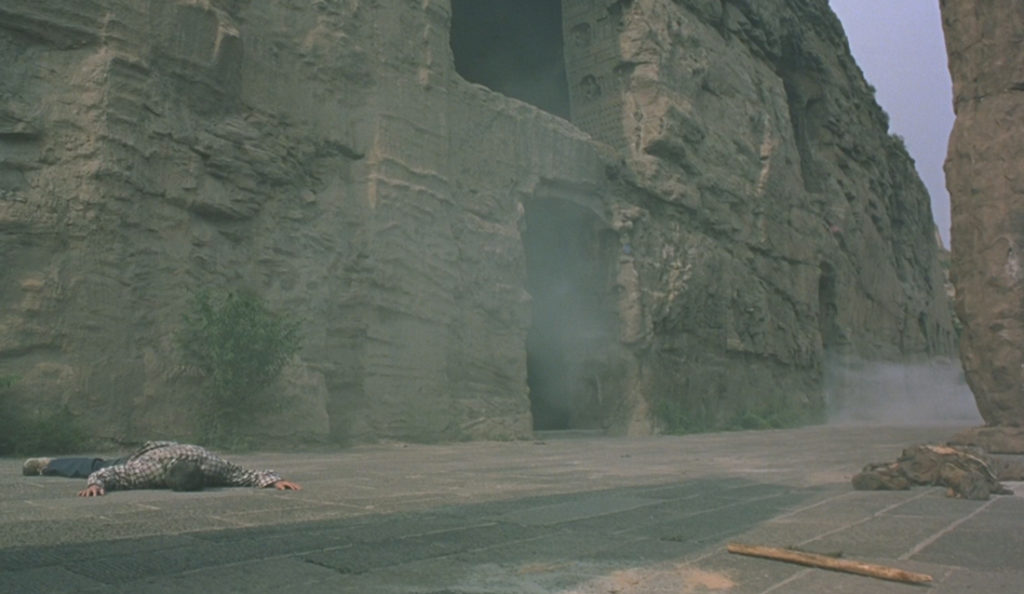
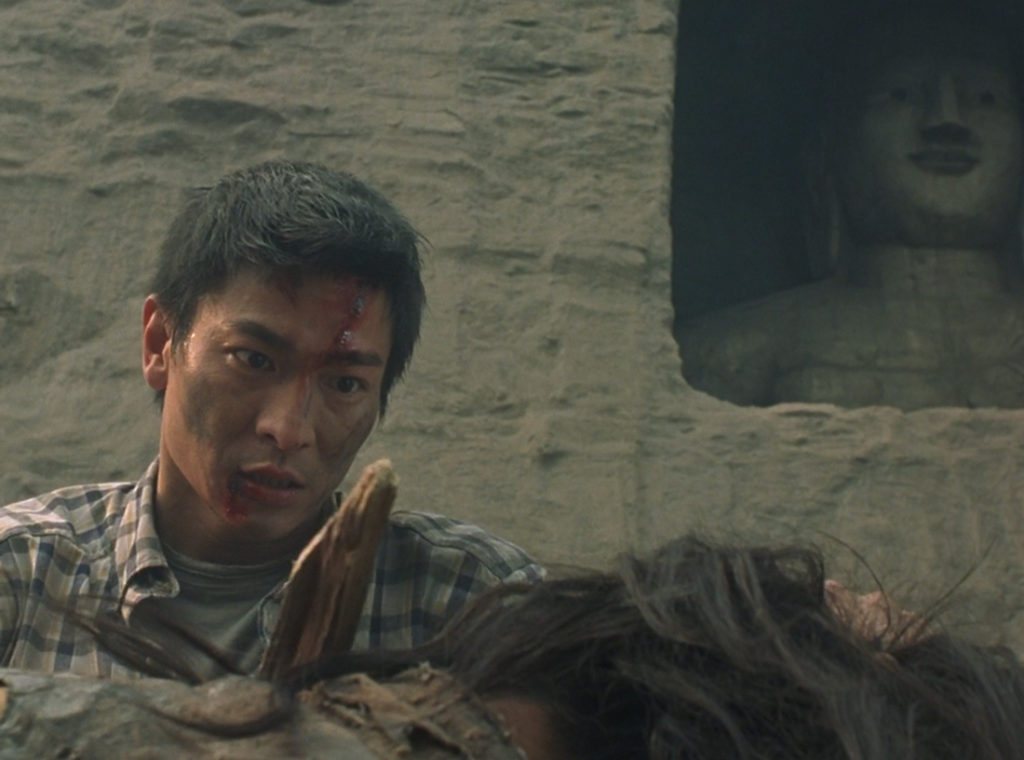



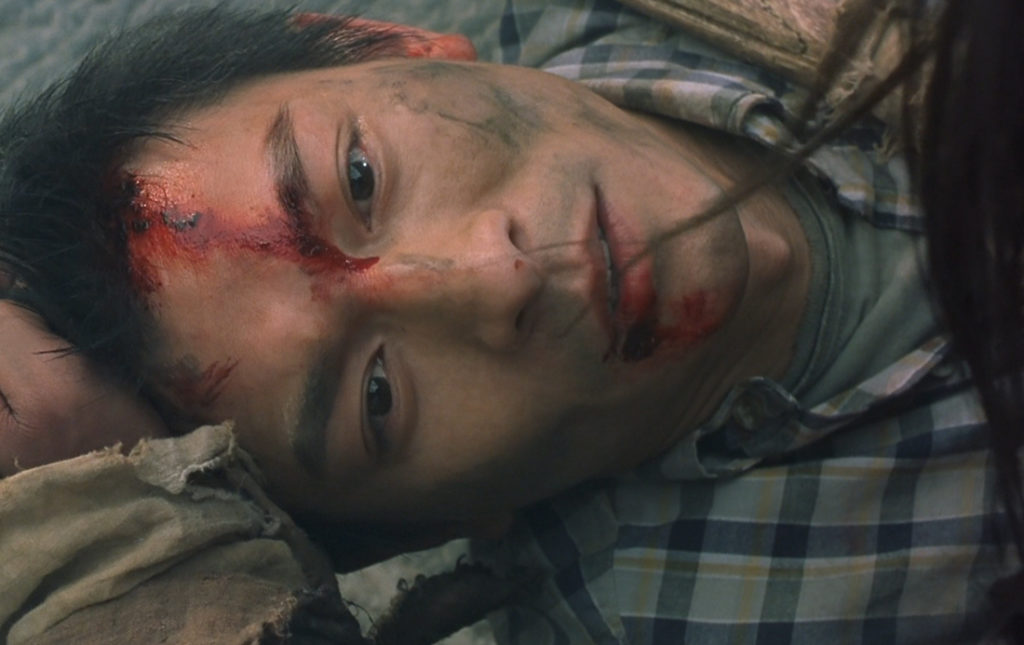

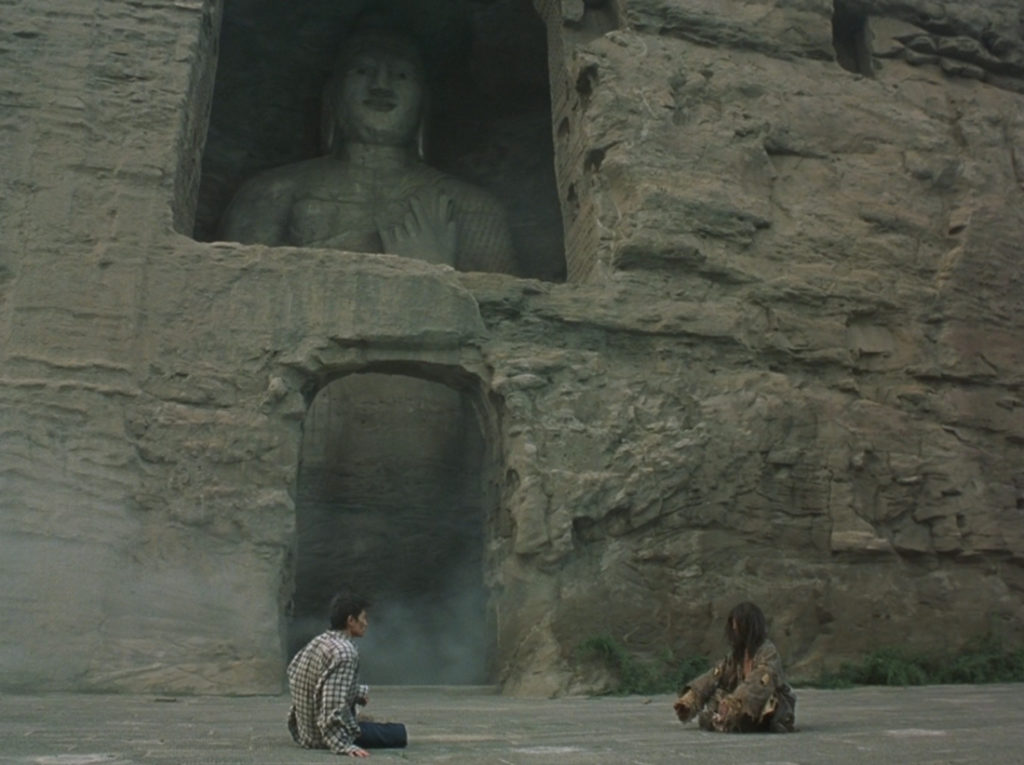

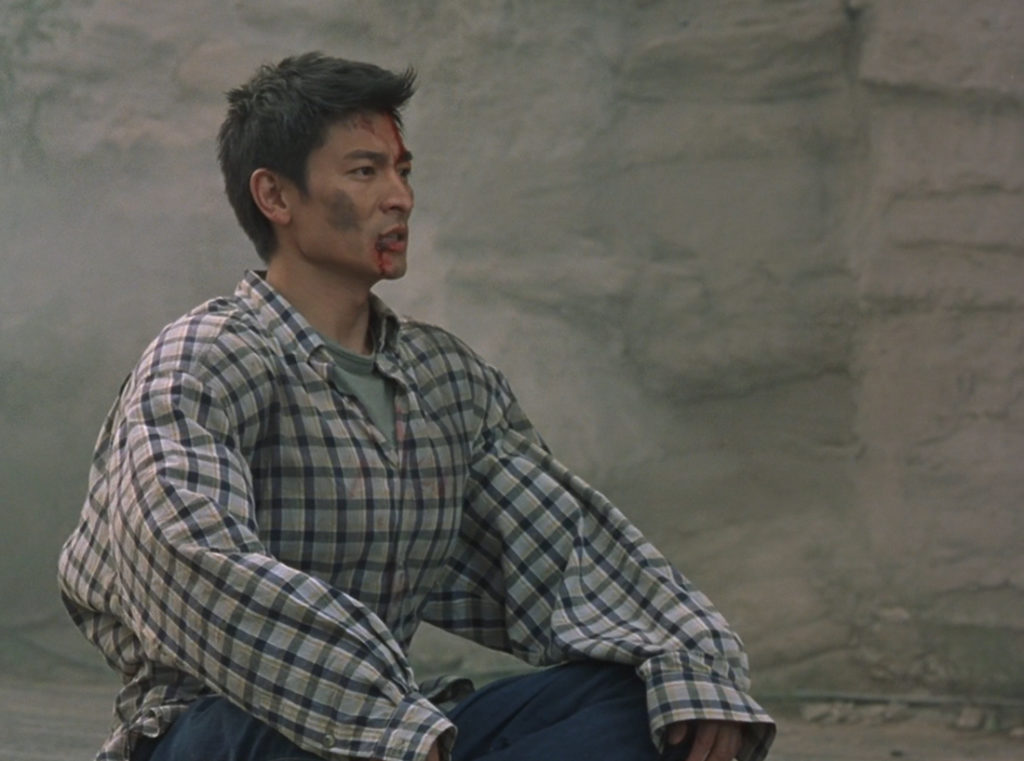
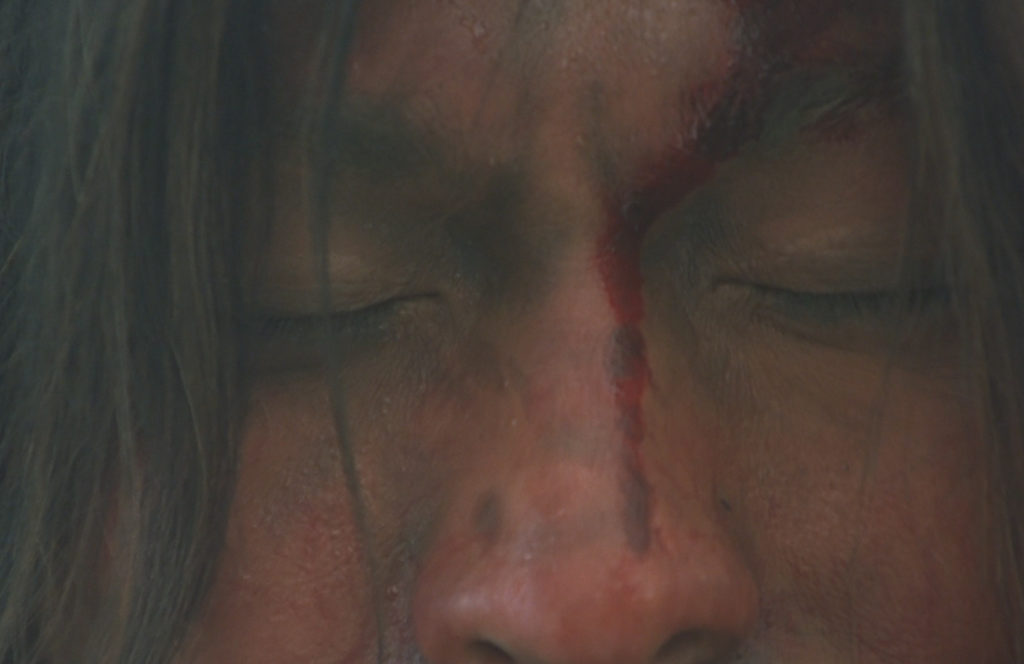
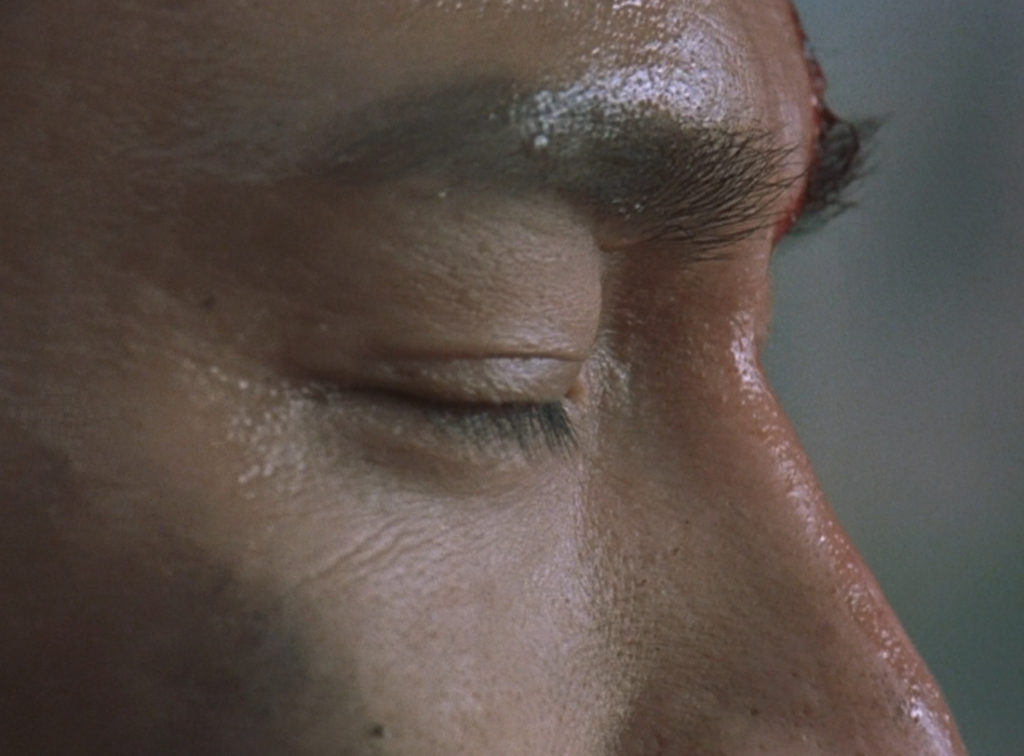
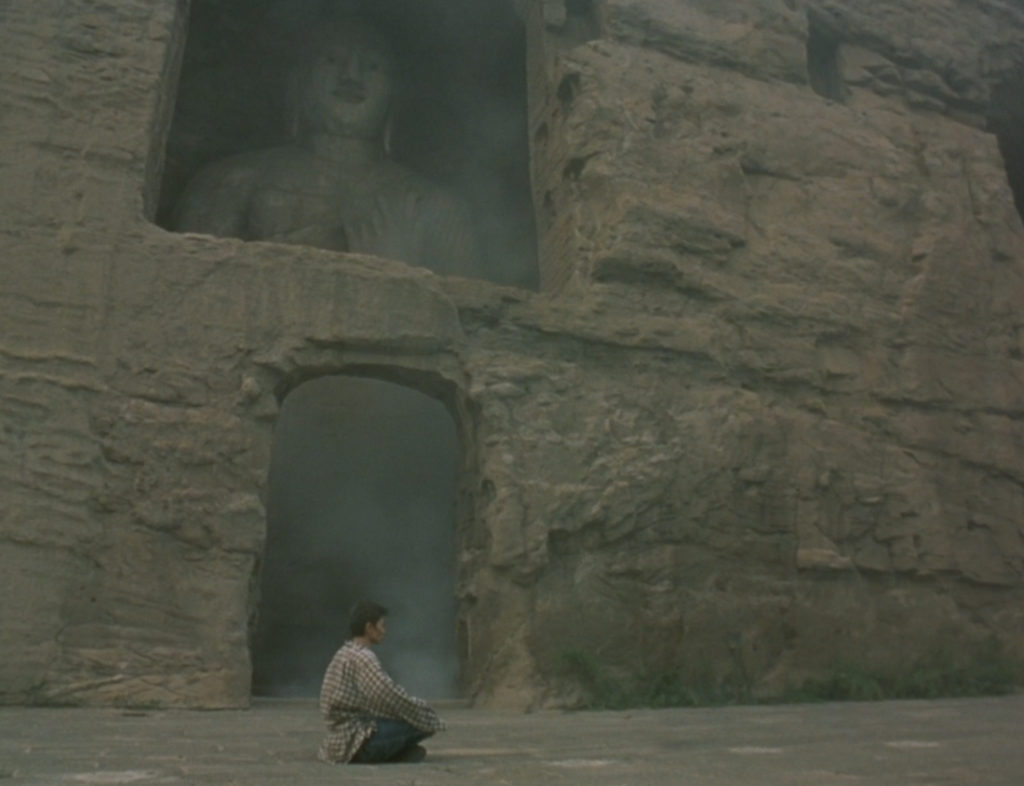
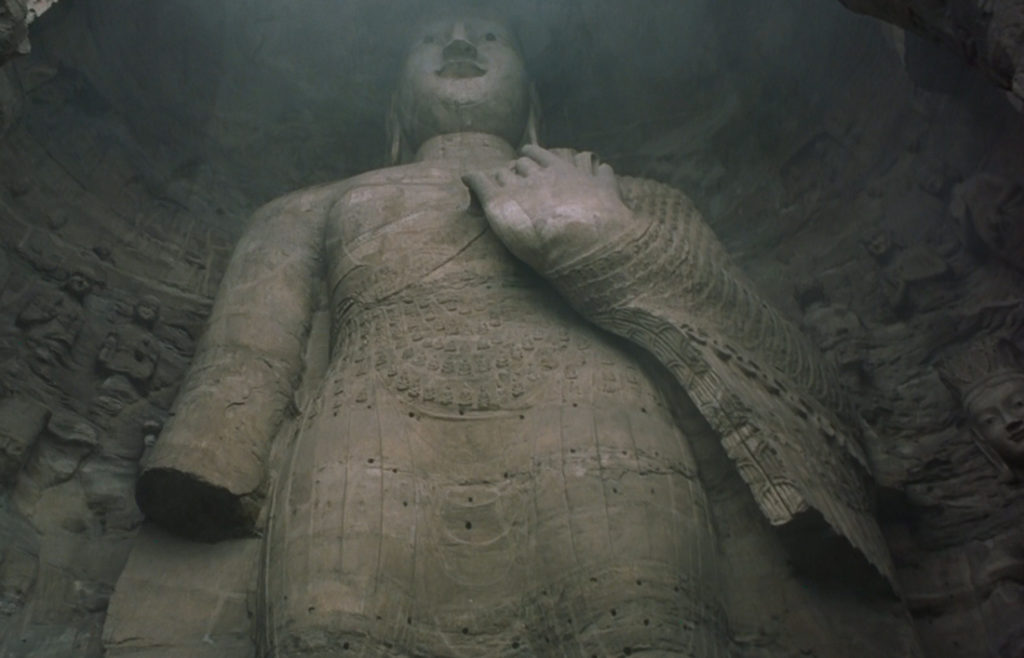
The moment that Big proclaims he ‘understands’ tathata was what he means. In the scene of the repetition of the finishing blow captures for the audience the moment when one no longer resists against one self. The character Big no longer fights for in that moment he realized he have been only fighting against himself this entire time throughout the film, an ego that doesn’t exist in the first place. The position of the searer and the seen, the one that places judgment is the same one that tries to save, the one that sees good in the world is also the one that sees all that is terrible. This entire time Big has only been engaged in a tug-o-war against himself, his own ego, like the right hand pulling against the left; a realization that both hands belong to the same person. The muscle suit that Big wears is the manifestation, the split in one’s own mind, the construction of the idea of a permanent self, but just like those muscles, they aren’t real and never existed; an image and projection of one’s ego. This notion is fully captured in the film as we see Andy Lau the actor at various moments of the movie exists as the character Big with and without the muscle suit. The moment he saw karma and resists against himself, Big wears the suit, the moment he realizes that there is no one there to see the karma, the suit disappears and he returns to being a monk like nothing happened; enlightenment. This shift represents both the materialized manifestation of how Big conceives and constructs himself/ego and a visual aid for the audience to see this constructed ego itself. The enlightenment that the audience witnessed is not a simple shallow story troupe, but an authentic one in which the character Big returns back to the village as if nothing happened. The reality that is deemed normal was already the extraordinary exception, the breakthrough into the unknown of extraordinary awareness brings reality back to normalcy; a contrast to one’s already phantasmic experience of everyday life. The only visual cues are the other background characters’ response to Big; as he returns to the village they view him with the highest possible regards, but to Big himself, he is merely nothing, did nothing, and goes on to do more nothing. A state of nonduality in which there is no good or bad to be achieved, symbolized by Big smoking the cigarette, signifying the position of moral ambiguity; life and death doesn’t exit, only those that are dying are living and only those that live can die. Heaven and hell, Samsara and Nirvana, the constant cycle of reincarnation are not something out there, somewhere outside of the narrative or in only a story. It’s all here, now, as a constant state of affairs integral to the human experience of reality itself. In order to break this down and elaborate this quantum leap of thought, I will need to collapse the meta with the physical and explain these ideas both in its spiritual and its everyday material significance simultaneously. To start, one needs to examine the main shift in Buddhism that brought forth the Mahayana vehicle and examine Zizek’s debate points and his opposition to it. For this, again, I will rely on Watts’ expertise to explain:
Various indications suggest that one of the earliest notions of the Mahayana was the conception of the Bodhisattva, not simply as a potential Buddha, but as one who by renouncing nirvana was at a higher spiritual level than one who attained it and so withdrew from the world of birth-and-death. In the Pali Canon the disciples of the Buddha who attain nirvana are termed Arhans or “worthy ones,” but in the Mahayana texts the ideal of the Arhan is accounted almost selfish. It is fit only for the sravaka, the “hearer” of the doctrine who has progressed only so far as to get a theoretical understanding. The Bodhisattva, however, is one who realizes that there is a profound contradiction in a nirvana attained by himself and for himself. From the popular standpoint, the Bodhisattva became a focus of devotion (bhakti), a savior of the world who had vowed not to enter the final nirvana until all other sentient beings had likewise attained it. For their sakes he consented to be born again and again into the Round of samsara, until, in the course of innumerable ages, even the grass and the dust had attained Buddhahood.
But from a deeper standpoint it became obvious that the idea of the Bodhisattva is implicit in the logic of Buddhism, that it flows naturally from the principle of not-grasping and from the doctrine of the unreality of the ego. For if nirvana is the state in which the attempt to grasp reality has wholly ceased, through the realization of its impossibility, it will obviously be absurd to think of nirvana itself as something to be grasped or attained. If, furthermore, the ego is merely a convention, it is nonsense to think of nirvana as a state to be attained by some being. As is said in the Vajracchedika:
All Bodhisattva-heroes should cultivate their minds to think: all sentient beings of whatever class … are caused by me to attain the boundless liberation of nirvana. Yet when vast, innumerable, and immeasurable numbers of beings have thus been liberated, in truth no being has been liberated! Why is this, Subhuti? It is because no Bodhisattva who is truly a Bodhisattva holds to the idea of an ego, a personality, a being, or a separate individual.
The corollary of this position is that if there is no nirvana which can be attained, and if, in reality, there are no individual entities, it will follow that our bondage in the Round is merely apparent, and that in fact we are already in nirvana–so that to seek nirvana is the folly of looking for what one has never lost. Naturally, then, the Bodhisattva makes no motion to depart from the Round of samsara, as if nirvana were somewhere else, for to do so would imply that nirvana is something that needs to be attained and that samsara is an actual reality. In the words of the Lankavatara Sutra:
Those who, afraid of the sufferings arising from the discrimination of birth-and-death (samsara), seek for Nirvana, do not know that birth-and-death and Nirvana are not to be separated from one another; and, seeing that all things subject to discrimination have no reality, (they) imagine that Nirvana consists in the future annihilation of the senses and their fields.
To strive, then, to blot out the conventional world of things and events is to admit that it exists in reality. Hence the Mahayanist principie that “what has never arisen does not have to be annihilated.”
These are not the idle speculations and sophistries of a system of subjective idealism or nihilism. They are answers to a practical problem which may be expressed thus: “If my grasping of life involves me in a vicious circle, how am I to learn not to grasp? How can I try to let go when trying is precisely not letting go?” Stated in another way, to try not to grasp is the same thing as to grasp, since its motivation is the same–my urgent desire to save myself from a difficulty. I cannot get rid of this desire, since it is one and the same desire as the desire to get rid of it! This is the familiar, everyday problem of the psychological “double-bind,” of creating the problem by trying to solve it, of worrying because one worries, and of being afraid of fear.
Mahayana philosophy proposes a drastic but effective answer which is the theme of a class of literature called Prajna–paramita, or “wisdom for crossing to the other shore,” a literature closely associated with the work of Nagarjuna (c. A.D. 200), who ranks with Shankara as one of the greatest minds of India. Stated baldly, the answer is that all grasping, even for nirvana, is futile–for there is nothing to be grasped. This is Nagarjuna’s celebrated Sunyavada, his “Doctrine of the Void,” otherwise known as the Madhyamika, the “middle way,” because it refutes all metaphysical propositions by demonstrating their relativity. From the standpoint of academic philosophy, the Prajna-paramita and the doctrine of Nagarjuna are no doubt some form of nihilism or “absolute relativism.” But this is not Nagarjuna’s standpoint. The dialectic with which he demolishes every conception of reality is merely a device for breaking the vicious circle of grasping, and the terminus of his philosophy is not the abject despair of nihilism but the natural and uncontrived bliss (ananda) of liberation.
The Sunyavada takes its name from the term sunya, void, or sunyata, voidness, with which Nagarjuna described the nature of reality, or rather, of the conceptions of reality which the human mind can form. Conceptions here include not only metaphysical views but also ideals, religious beliefs, ultimate hopes and ambitions of every kind–everything which the mind of man seeks and grasps for his physical or spiritual security. Not only does the Sunyavada demolish the beliefs which one consciously adopts; it also seeks out the hidden and unconscious premises of thought and action, and submits them to the same treatment until the very depths of the mind are reduced to a total silence. Even the idea of sunya is itself to be voided.
It cannot be called void or not void, Or both or neither; But in order to point it out, It is called “the Void.”
Stcherbatsky is certainly right in thinking that the Sunyavada is best called a doctrine of relativity. For Nagarjuna’s method is simply to show that all things are without “self-nature” (svabhava) or independent reality since they exist only in relation to other things. Nothing in the universe can stand by itself-no thing, no fact, no being, no event–and for this reason it is absurd to single anything out as the ideal to be grasped. For what is singled out exists only in relation to its own opposite, since what is is defined by what is not, pleasure is defined by pain, life is defined by death, and motion is defined by stillness. Obviously, the mind can form no idea of what “to be” means without the contrast of “not to be,” since the ideas of being and non-being are abstractions from such simple experiences as that there is a penny in the right hand and no penny in the left.
From one point of view, the same relativity exists between nirvana and samsara, bodhi (awakening) and klesa (defilement). That is to say, the search for nirvana implies the existence and the problem of samsara, and the quest for awakening implies that one is in the state of defilement with delusion. To put it in another way: as soon as nirvana is made an object of desire, it becomes an element of samsara. The real nirvana cannot be desired because it cannot be conceived. Thus the Lankavatara Sutra says:
Again, Mahamati, what is meant by non-duality? It means that light and shade, long and short, black and white, are relative terms, Mahamati, and not independent of each other; as Nirvana and Samsara are, all things are not-two. There is no Nirvana except where is Samsara; there is no Samsara except where is Nirvana; for the condition of existence is not of a mutually exclusive character. Therefore it is said that all things are non-dual as are Nirvana and Samsara.
But the equation “Nirvana is samsara” is true in another sense as well–namely, that what appears to us to be samsara is really nirvana, and that what appears to be the world of form (rupa) is really the void (sunya). Hence the famous saying:
Form is not different from emptiness; emptiness is not different from form. Form is precisely emptiness; emptiness is precisely form.
Once again, this is not to say that awakening will cause the world of form to vanish without trace, for nirvana is not to be sought as “the future annihilation of the senses and their fields.” The sutra is saying that form is void just as it is, in all its prickly uniqueness.
The point of this equation is not to assert a metaphysical proposition but to assist the process of awakening. For awakening will not come to pass when one is trying to escape or change the everyday world of form, or to get away from the particular experience in which one finds oneself at this moment. Every such attempt is a manifestation of grasping. Even the grasping itself is not to be changed by force, for bodhi [awakening] is the five offenses, and the five offenses are bodhi.… If anyone regards bodhi as something to be attained, to be cultivated by discipline, he is guilty of the pride of self.
Some of these passages may suggest that the Bodhisattva may just as well be an easygoing, worldly fellow, who-because samsara is nirvana anyhow-can go on living just as he pleases. He may be thoroughly deluded, but since even delusion is bodhi there would be no point in trying to change it. There is often a deceptive resemblance between opposite extremes. Lunatics frequently resemble saints, and the unaffected modesty of the sage often lets him seem to be a very ordinary person. Yet there is no easy way of pointing out the difference, of saying what it is that the ordinary, worldly fellow does or does not do which makes him different from a Bodhisattva, or vice versa. The entire mystery of Zen lies in this problem, and we shall return to it at the proper time. It is enough to say here that the so-called “ordinary person” is only apparently natural, or perhaps that his real naturalness feels unnatural to him. In practice it is simply impossible to decide, intentionally, to stop seeking for nirvana and to lead an ordinary life, for as soon as one’s “ordinary” life is intentional it is not natural.
It is for this reason that the insistence of the Mahayana texts on the unattainability of nirvana and bodhi is not something to be accepted theoretically, as a mere philosophical opinion. One has to know “in one’s bones” that there is nothing to be grasped.
Thereupon the thought came to some of the Gods in that assembly: What the fairies talk and murmur, that we understand though mumbled. What Subhuti has just told us, that we do not understand!
Subhuti read their thoughts and said: There is nothing to understand, there is nothing to understand. For nothing in particular has been indicated, nothing in particular has been explained.… No one will grasp this perfection of wisdom as here explained. For no Dharma (doctrine) at all has been indicated, lit up, or communicated. So there will be no one who can grasp it.
This transition of thought in Buddhism proposed by the Mahayana vehicle can be compared similarly to the transition of thought that Einstein went through when he transitioned from special relativity to general relativity: in that the exceptional state of matter and the disturbances of the fabric of space/time are not special instances but are the general experience of all of reality itself. There is a beautiful universality of this proposition in which salvation is not something out there, but it is and always already here for everyone; from corporate fat cats to spiritual ascetics, there is only an even playing field where one’s access to higher spiritual awareness are the same. All one has to do is live life as full as to their hearts content fully knowing and courageously facing all the beauty and folly of the human experience. There is no fall, there is no damnation or salvation here, judgment here lies solely on ones’ own conscience; their guilts, fears, regrets, failures, loves, goals and victories. What the human experience is for everyone is all that there truly is – to embrace it is the enlightenment that everyone has been searching for; it is ALL our individual LIVES. A full embodiment of Aleister Crowley’s mantras, “Love is the Law/Love under Will! – Do what though wilt!” You are THOU and all there is is LOVE. A freedom in living a life of expectations; to no one but one’s love for life, one is held accountable for all the pain one suffers and all the good one enjoys.



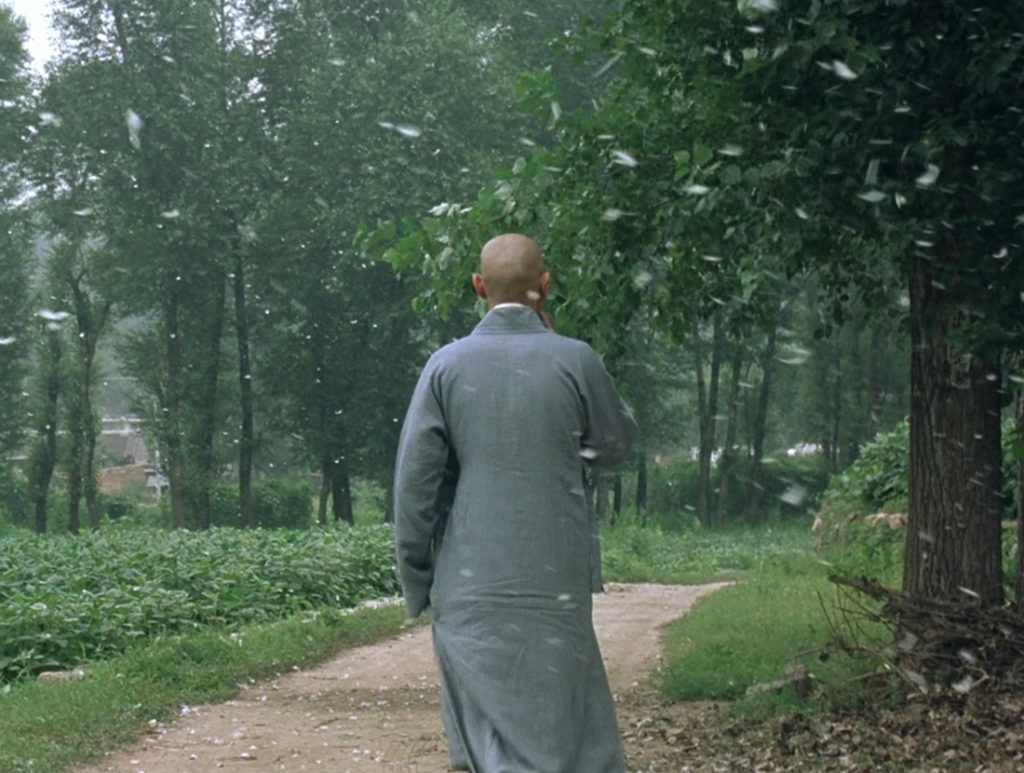
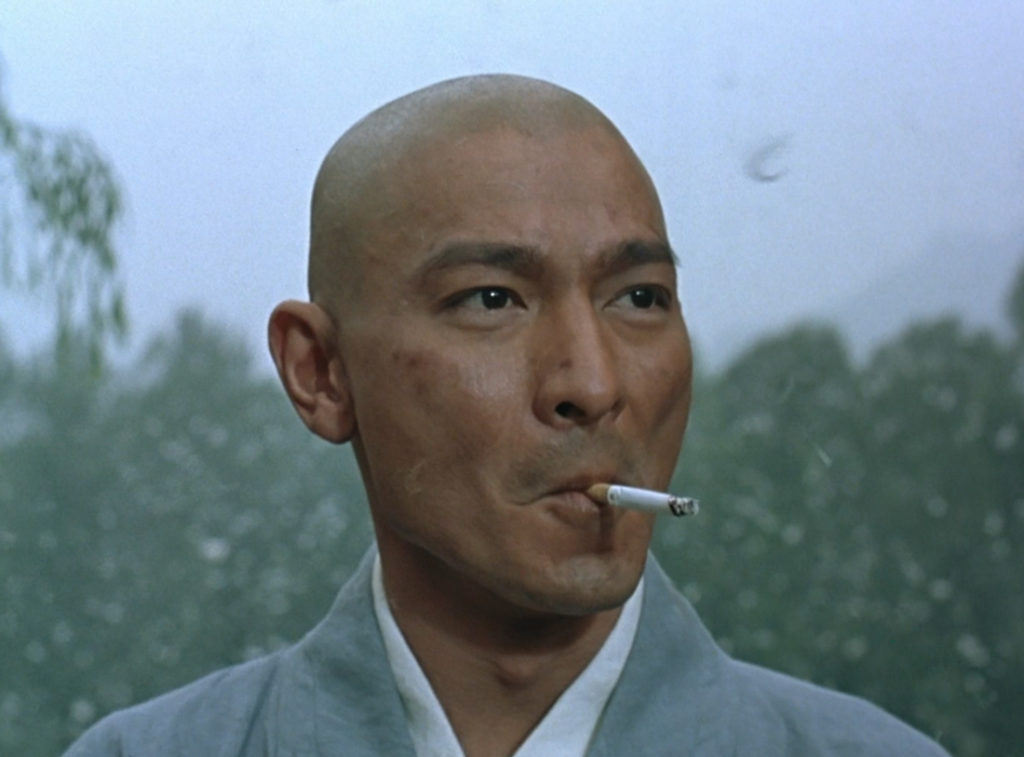
This is the coffee without cream I am trying to point out in Zizek’s comments on Buddhism. Every point or idea that is read here will simply be writing poetry on the shore, it will all be washed away by the tides of life be it tears of elation or of loss. The liberation of one’s life is still one’s own realization in which no word or lesson can achieve other than perhaps provide brief moments of encouragement to live one’s life without inhibitions. There is no end, no final lesson: for the experience of one’s life is the final unfolding mystery; the meaning of life meant for any person can only be experienced in its (life’s) unfolding. This is the superior psychoanalytical method I am referring to (however naïve this proposition is to the professionals), in which religion is not a scapegoat for our everyday problems, but acts as a sort of ‘transcendental’ analysis that tries to address the existential crisis that lies at the core of the human consciousness that materialist psychoanalytical treatment has not yet been able to achieve for their patients. Even Zizek has to acknowledge the profound physical changes on a chemical level of the brain for those that are deemed “enlightened”, it’s not syntactical. I will draw on Zizek’s own interpretation of Wagner’s Parsifal here: the wound that ails king Amfortas is the wound that ails all with a self-consciousness, a wound that can’t be healed. Only the spear that dealt the wound can heal it and only through self-renunciation can one find the path to the Holy Grail; these are Buddhist ideas that Wager himself was said to be familiar with. Here the return of the spear back into the wound is the returning to one’s own inner void that makes one conscious. The lessons taught by higher spiritual teachings returns one back to the void and absolves the boundaries of personal traits/limitations that make up one’s identity and (it acts as the symbolic spear that) re-ruptures/reinserts itself. In being left with nothing, the scaffolding that emerges to hold up one’s identity comes from the void itself.



Lee: Thank you. Big: Here, have another, this is fresh. Lee: Is the Japanese soldier still around? Big: Yum, delicious... Lee: Don't worry, I am okay, I just want to know more.
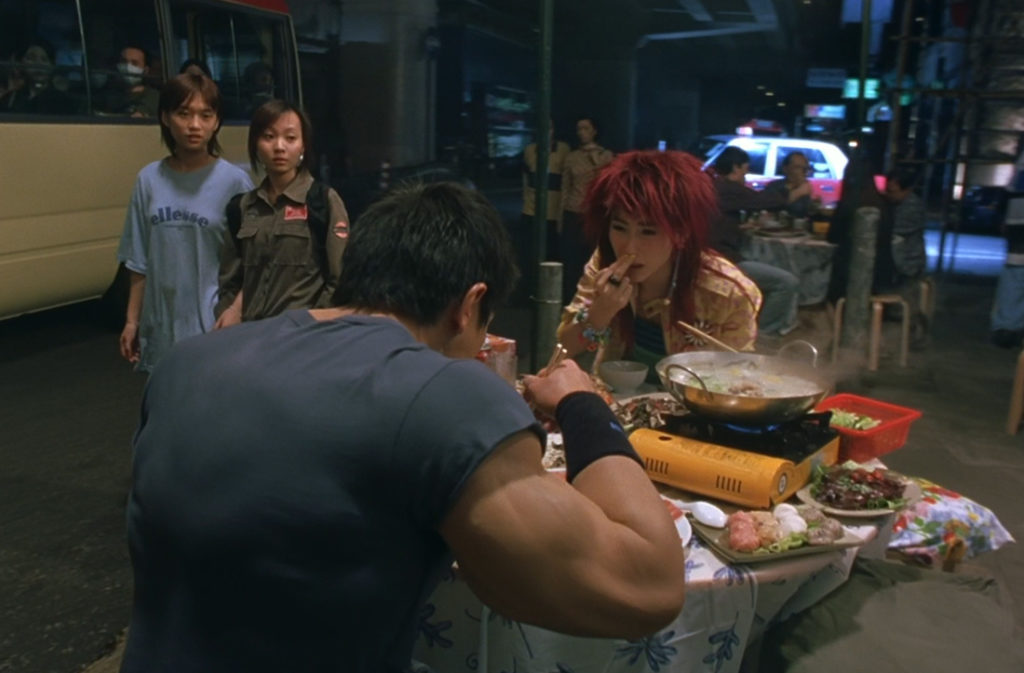
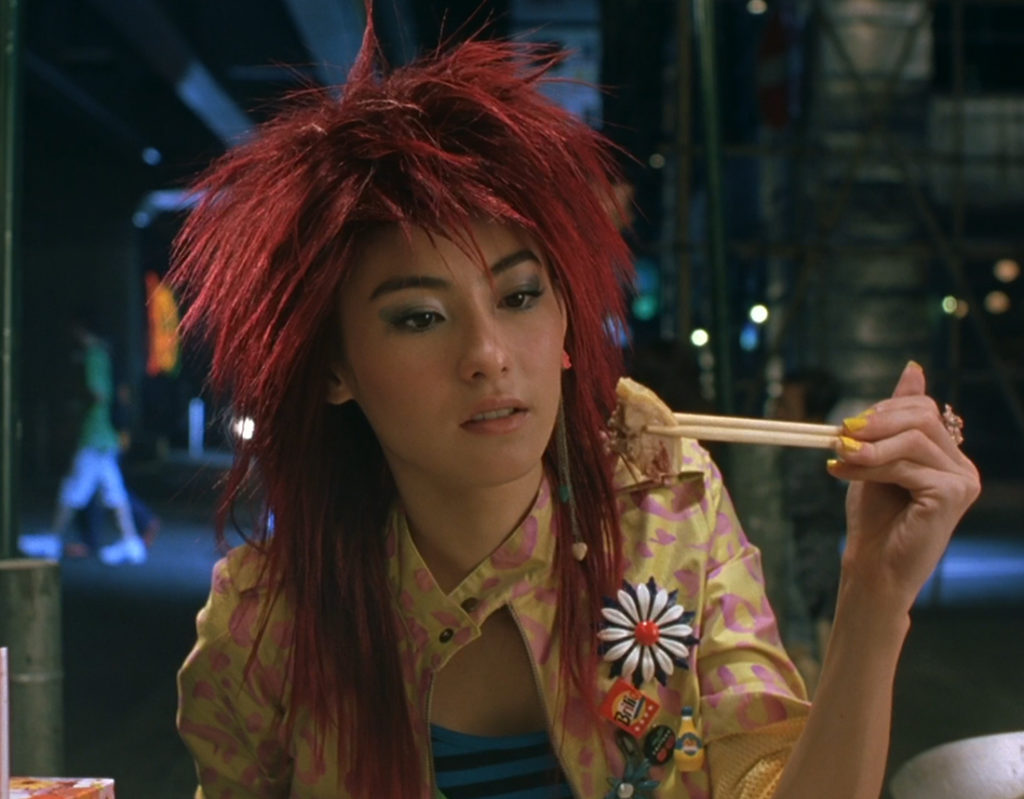
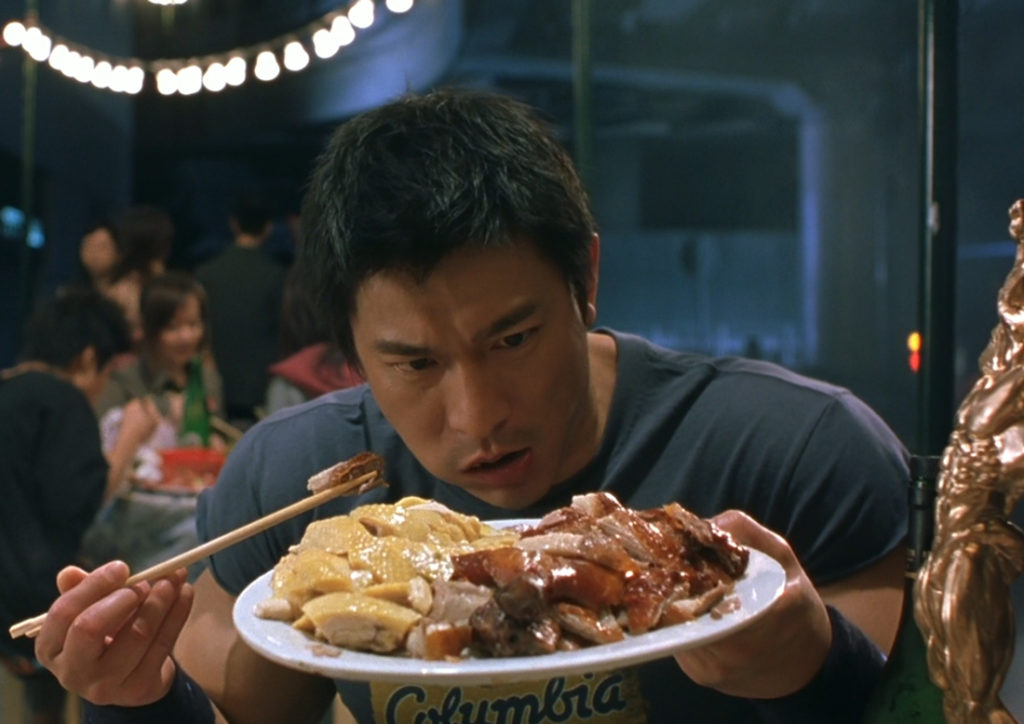

Again, to quote Zizek’s own words, like a Hegelian synthesis, the nothing itself, in the state of being nothing becomes the thing-in-itself (Das Tung). To explain, let me refer to a chocolate bar story that Zizek is familiar with. There was a time where the cost of chocolate bars and the amount of chocolate were equivalent. In the greed of the chocolate companies, they started to increase the sizes of the bars in order to charge more for their product. Of course, as they increased the sizes in accordance to their greed the bars got too ridiculously large and they were forced to reduce the size and the cost back closer to their originals eventually. This time though, instead of returning the bars to their equivalent costs, these companies kept a bit of the extra profits in the price. Seeing this potential opportunity to make more money, chocolate companies repeated this scheme multiple times and now whenever one buys a chocolate bar there is a whole chunk of ‘free’ money not associated with the chocolate bar that goes directly to the companies themselves not in the exchange for the chocolate bar itself. Here I draw one’s attention to the North American Nestle chocolate bar “Aero” where the company was able to sell less chocolate and keep the prices the same by pumping air directly into the chocolate itself. This brilliant gesture resembles the Hegelian synthesis in which one doesn’t simply get less chocolate and some nothing (air), the nothing (air) is directly incorporated into the product itself where one’s experience of this extra element of nothing (air) redefines one’s experience of the chocolate itself: just like their slogan “have you felt the bubbles melt”. It is neither chocolate or nothing, but a completely new third experience where this nothing (air) is the product experience one purchases; the nothing (the feeling of melting chocolate bubbles) becomes the thing-in-itself, one experiences both (chocolate/nothing) in a new third phenomenon (chocolate+).
The opportunity higher spiritual teachings eludes to is the dropping of all edifice/pretenses that makes up one’s conscious identity and one simply returns/realizes that we are actually nothing/void (God) and through this liberation of letting go of ones’ past conceptions of self can one potentially experience life on a different level; like one that has learnt to surf when one is in the middle of the ocean and can now ride and enjoy the waves of life instead of being tossed mercilessly. This is what I argue as a sense of ultimate freedom, to quote Lacan/Zizek, God is dead only because you are God, you must determine what is permissible. It is said that most people’s conception of their own self consciousnesses is little more than the actual feeling of a slight muscle tension of the body. It is also said these chemical changes in the brain at the conception of enlightenment turns what may seem like nihilistic philosophical ideas into one of elation in which the world and the self feels lighter. The end product may seem the same, but the experience is fundamentally different on the point of its negation.
How does the Tarot present God to us? It presents Him as The Tower, the mysterious presence in which the universe dwells, and which, because we are united to it, is our body. We are the renters of a Master who feeds us, supports us, and keeps us alive for the span of time determined by His Will. We can make this safe refuge of a house into a garden or a garbage dump, a place where our creativity flourishes or a dark nook ruled by bad taste and stench; between these passive walls we can either procreate or commit suicide. The house does not have its own behavior, it is simply there, and its quality depends on how we use it. We can make it into a temple or a prison. The Tower shown us by the Tarot carries the treasure of immortality, but not as a gift. Humanity can only win it at this price. If it cannot succeed here, because of poor use of this gift, it is condemned to vanish.
Only at this moment can we finally begin to talk about all tathata. In the face of the paradox where nirvana is unreachable yet it is always already here; what can one do in tathata situation is similar to the paradoxical answer given by the Tao Te Ching where when one does nothing so nothing is left undone. Nirvana then is something tathtata is achieved, as explained by Watts, in the moment,
when this consciousness of the inescapable trap in which we are at once the trapper and the trapped reaches a breaking point. One might almost say that it “matures” or “ripens,” and suddenly there is what the Lankavatara Sutra calls a “turning about in the deepest seat of consciousness.” In this moment all sense of constraint drops away, and the cocoon which the silkworm spun around himself opens to let him go forth winged as a moth. The peculiar anxiety which Kierkegaard has rightly seen to lie at the very roots of the ordinary man’s soul is no longer there. Contrivances, ideals, ambitions, and self-propitiations are no longer necessary, since it is now possible to live spontaneously without trying to be spontaneous. Indeed, there is no alternative, since it is now seen that there never was any self to bring the self under its control.
Reduced to the bare essentials, such is the inner process which the Sunyavada is trying to set in motion with its philosophy of total negation. Thus the greater part of Nagarjuna’s work was a carefully logical and systematic refutation of every philosophical position to be found in the India of his time. Granting that its object is an inner experience, Western students have always had difficulty in understanding how such a purely negative point of view could have any creative consequences. It must therefore be repeated that the negations apply, not to reality itself, but to our ideas of reality. The positive and creative content of the Sunyavada is not in the philosophy itself, but in the new vision of reality which is revealed when its work is done, and Nagarjuna does not spoil this vision by trying to describe it.
The Mahayana does, however, have another term for reality which is perhaps rather more indicative than sunya, the void. This is the word tathata, which we may translate as “suchness,” “thusness,” or “thatness.” Similarly, the Buddhas are called Tathagatas–they who go, or come, “thus.” The Sanskrit word tat (our “that”) is probably based on a child’s first efforts at speech, when it points at something and says, “Ta” or “Da.” Fathers flatter themselves by imagining that the child is calling them by name–“Dada” or “Daddy.” But perhaps the child is just expressing its recognition of the world, and saying “That!” When we say just “That” or “Thus,” we are pointing to the realm of nonverbal experience, to reality as we perceive it directly, for we are trying to indicate what we see or feel rather than what we think or say. Tathata therefore indicates the world just as it is, unscreened and undivided by the symbols and definitions of thought. It points to the concrete and actual as distinct from the abstract and conceptual. A Buddha is a Tathagata, a “thus-goer,” because he is awakened to this primary, nonconceptual world which no words can convey, and does not confuse it with such ideas as being or non-being, good or bad, past or future, here or there, moving or still, permanent or impermanent. As the Bodhisattva Manjusri speaks of the Tathagata in the Saptasatika:
Suchness (tathata) neither becomes nor ceases to become; thus do I see the Tathagata. Suchness does not stand at any point or place; thus do I see the Tathagata. Suchness is neither past, future, nor present; thus do I see the Tathagata. Suchness does not arise from the dual or the non-dual; thus do I see the Tathagata. Suchness is neither impure nor pure; thus do I see the Tathagata. Suchness neither arises nor comes to an end; thus do I see the Tathagata.
Because tathata is the true state of a Buddha and of all beings whatsoever, it is also referred to as our true or original nature, and thus our “Buddha nature.” One of the cardinal doctrines of the Mahayana is that all beings are endowed with Buddha nature, and so have the possibility of becoming Buddhas. Because of the identity of Buddha nature and tathata, the term “Buddha” is frequently used of reality itself and not just of the awakened man. It so comes about that in the Mahayana a Buddha is often seen as a personification of reality, forming the basis of those popular cults in which the Buddhas seem to be worshiped as gods. I say “seem to be” because even Mahayana Buddhism has no real equivalent of Judaeo-Christian theism, with its strict identification of God with the moral principle. Furthermore, the various Buddhas who are so venerated–Amitabha, Vairocana, Amitayus, Ratnasambhava, etc.–are always personifications of one’s own true nature.
Here, too, lies the basis of the Buddhism of faith, of the Sukhavati or Pure Land school, in which it is held that all efforts to become a Buddha are merely the false pride of the ego. All that is necessary is to repeat the formula namo-amitabhaya (literally, “the Name of Amitabha” or “Hail, Amitabha”) in the faith that this alone is sufficient to bring about one’s rebirth in the Pure Land over which Amitabha presides. In this Pure Land all the obstacles which stand in the way of becoming a Buddha in this world are removed, so that rebirth in the Pure Land is virtually equivalent to becoming a Buddha. The repetition of the Name is held to be effective because, in ages past, Amitabha vowed that he would not enter into supreme Buddhahood unless rebirth in the Pure Land were assured for all beings who invoked his name. Because he subsequently entered the state of Buddhahood, the vow is effectively fulfilled.
Even Nagarjuna was in sympathy with this doctrine, for it is obviously a popular and more graphic way of saying that since one’s own true nature is already the Buddha nature, one does not have to do anything to make it so. On the contrary, to seek to become Buddha is to deny that one is already Buddha–and this is the sole basis upon which Buddhahood can be realized! In short, to become a Buddha it is only necessary to have the faith that one is a Buddha already. Shinran, the great Japanese exponent of the Pure Land, went even so far as to say that it was only necessary to repeat the Name, for he saw that the attempt to make an act of faith was too artificial, and led one to doubt one’s own faith.
Pure Land Buddhism is clearly an outgrowth of the Bodhisattva doctrine that the proper work of the liberated man is the liberation of all other beings by upaya or “skillful means.” By prajna or intuitive wisdom he sees into the nature of reality, and this in turn awakens karuna or compassion for all who are still in the bonds of ignorance. At its deepest level karuna means something rather more than compassion for the ignorance of others. For we saw that the Bodhisattva’s return into the world of samsara was based on the principle that samsara is in fact nirvana, and that “the void is precisely form.” If prajna is to see that “form is void,” karuna is to see that “the void is form.” It is therefore an “affirmation” of the everyday world in its natural “suchness,” and this is one of the features of the Mahayana most strongly emphasized in Zen. Indeed, it makes nonsense of the idea that Buddhism is always a philosophy of world-denial, in which the uniqueness of forms has no importance. It was because of karuna that Mahayana Buddhism became the principal inspiration of Chinese art in the Sung and Yüan dynasties, an art which stressed natural forms rather than religious symbols. For by karuna it is seen that the dissolution of forms into the void is in no way different from the particular characteristics of the forms themselves. The life of things is only conventionally separable from their death; in reality the dying is the living.
The perception that each single form, just as it is, is the void and that, further, the uniqueness of each form arises from the fact that it exists in relation to every other form is the basis of the Dharmadhatu (“Dharma realm”) doctrine of the enormous Avatamsaka Sutra. This voluminous work is probably the final culmination of Indian Mahayana, and one of its central images is a vast network of gems or crystals, like a spider’s web at dawn, in which each gem reflects all the others. This net of gems is the Dharmadhatu, the universe, the realm of innumerable dharmas or “thing-events.”
Tahata is what this entire exploration is about. The simultaneous engagement of theory and action through praxis is the final truth we will must engage in with our new found knowledge of the god-self consciousness…
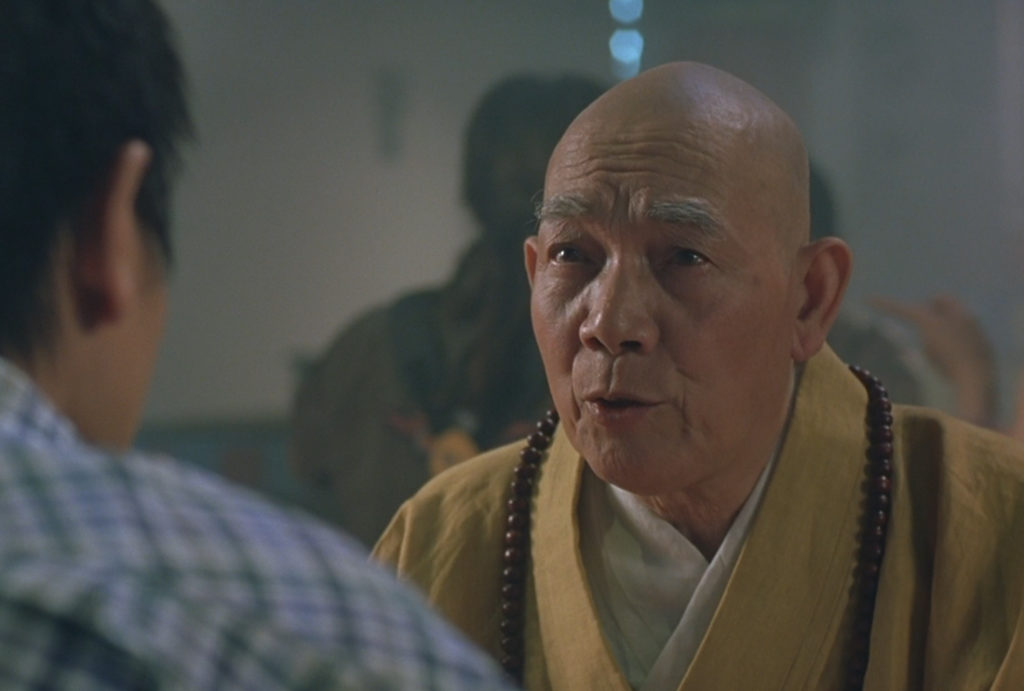
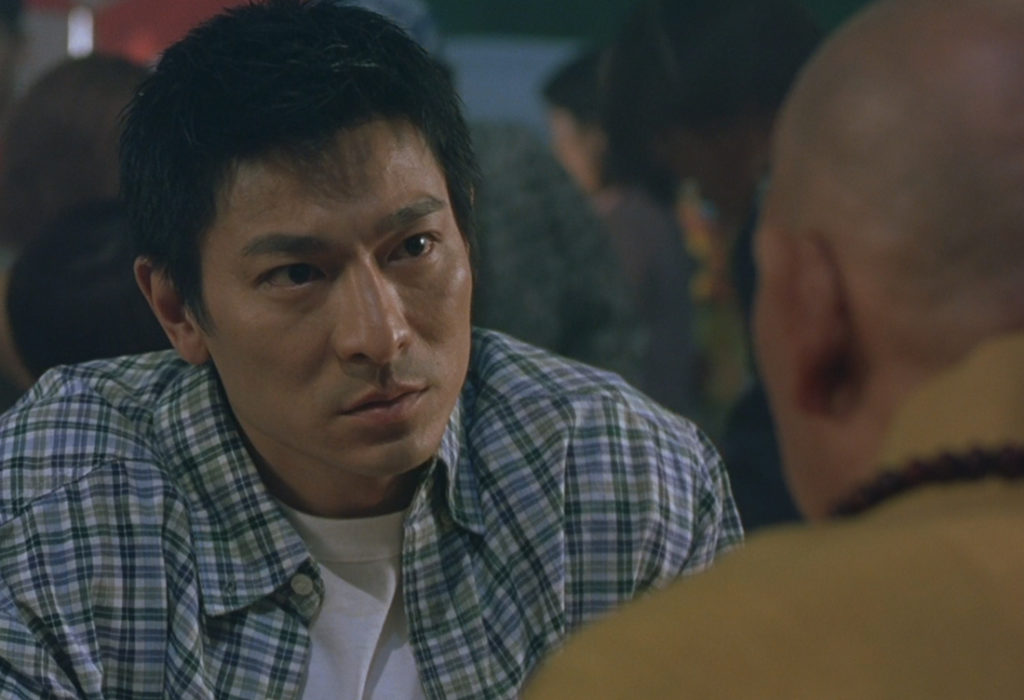
Süveyda (a mark on one’s soul):
Before I continue on to the final truth, I want to address the elephant in the room, I will take this small departure and address good and evil in our current paradigm especially in regards to non-duality. The moral ambiguous element of Buddhism that Zizek points to is spot on; do not be mistaken, there is danger here. Hence, it supports my argument about the experience of enlightenment cannot simply be a chemically induced phenomenon, but must be achieved by the experience on stumbling into one’s own truth. It cannot be pulled out (similar to the process of hypnosis) of the patient; the damage is irreversible. Aside from that, the danger as Zizek alludes to is the idea itself where enlightenment is a state of mind that one can simply practice. There is a reason why esoteric religious texts are written the way they are and why it is said that the path to esoteric knowledge is for those in their fifties to pursue. This requirement of accidental/spontaneous inner eruption for attainment keeps the numbers of individuals that have acquired it always to a limited number. I would argue here for good cause. Can one imagine a world where there are multiple Hitlers and Gandhis all at once in the same historical moment; it would rip the world asunder.
The sharp blade of knowledge must be dulled by the blunt weight of wisdom. In these definitions of enlightened individuals, they operate at levels of non-inhibition as if one’s mind is left ajar, a consciousness unhinged when compared to the societal level at large. It gives one the ability to achieve the greatest and the worst in human memory like all those loved and despised in history. Watts himself touched upon this subject matter in regards to the ethical standpoint of Zen praxis that I feel addresses Zizek’s point head on:
To the Taoist mentality, the aimless, empty life does not suggest anything depressing. On the contrary, it suggests the freedom of clouds and mountain streams, wandering nowhere, of flowers in impenetrable canyons, beautiful for no one to see, and of the ocean surf forever washing the sand, to no end.
Furthermore, the Zen experience is more of a conclusion than a premise. It is never to be used as the first step in a line of ethical or metaphysical reasoning, since conclusions draw to it rather than from it. Like the Beatific Vision of Christianity, it is a “which than which there is no whicher”–the true end of man–not a thing to be used for some other end. Philosophers do not easily recognize that there is a point where thinking-like boiling an egg-must come to a stop. To try to formulate the Zen experience as a proposition–“everything is the Tao”–and then to analyze it and draw conclusions from it is to miss it completely. Like the Crucifixion, it is “to the Jews [the moralists] a stum-blingblock and to the Greeks [the logicians] foolishness.” To say that “everything is the Tao” almost gets the point, but just at the moment of getting it, the words crumble into nonsense. For we are here at a limit at which words break down because they always imply a meaning beyond themselves–and here there is no meaning beyond.
Zen does not make the mistake of using the experience “all things are of one Suchness” as the premise for an ethic of universal brotherhood. On the contrary, Yüan-wu says:
If you are a real man, you may by all means drive off with the farmer’s ox, or grab the food from a starving man.
This is only to say that Zen lies beyond the ethical standpoint, whose sanctions must be found, not in reality itself, but in the mutual agreement of human beings. When we attempt to universalize or absolutize it, the ethical standpoint makes it impossible to exist, for we cannot live for a day without destroying the life of some other creature.
If Zen is regarded as having the same function as a religion in the West, we shall naturally want to find some logical connection between its central experience and the improvement of human relations. But this is actually putting the cart before the horse. The point is rather that some such experience or way of life as this is the object of improved human relations. In the culture of the Far East the problems of human relations are the sphere of Confucianism rather than Zen, but since the Sung dynasty (959–1278) Zen has consistently fostered Confucianism and was the main source of the introduction of its principles into Japan. It saw their importance for creating the type of cultural matrix in which Zen could flourish without coming into conflict with social order, because the Confucian ethic is admittedly human and relative, not divine and absolute.
Although profoundly “inconsequential,” the Zen experience has consequences in the sense that it may be applied in any direction, to any conceivable human activity, and that wherever it is so applied it lends an unmistakable quality to the work. The characteristic notes of the spontaneous life are mo chih ch’u m or “going ahead without hesitation,” wu-wei, which may here be understood as purposelessness, and wu-shih, lack of affectation or simplicity.
While the Zen experience does not imply any specific course of action, since it has no purpose, no motivation, it turns unhesitatingly to anything that presents itself to be done. Mo chih ch’u is the mind functioning without blocks, without “wobbling” between alternatives, and much of Zen training consists in confronting the student with dilemmas which he is expected to handle without stopping to deliberate and “choose.” The response to the situation must follow with the immediacy of sound issuing from the hands when they are clapped, or sparks from a flint when struck. The student unaccustomed to this type of response will at first be confused, but as he gains faith in his “original” or spontaneous mind he will not only respond with ease, but the responses themselves will acquire a startling appropriateness. This is something like the professional comedian’s gift of unprepared wit which is equal to any situation.
Here I argue people have understood this practice and reached “enlightenment” regardless of the name, people know their own truths as proven through their actions. People like Hitler and Gandhi both operate on the same spectrum and are both capable of great violence without inhibition. One should ask the question what if Hitler went to see a psychoanalysist?
Another way of thinking about non-duality is that it does not preclude the concept of asymmetry, where the tail and the head of a cat belongs to the same animal. Here I will refer to Jean Baudrillard’s Impossible Exchange take on evil which illuminates this:
“This is the iceberg hypothesis: Good is just the part of Evil showing above the water, Evil the submerged part of the Good (one-tenth/nine-tenths!). There is no break between them, just a water-line. Otherwise, they are secretly formed of a single substance, of a single mass which, on occasion, flips over. Good becomes Evil, and Evil shows up on the surface. And when heat metls the iceberg, everything goes back to the liquid mass of the neither-Good-nor-Evil. To take account only of the part of the phenomenon above the water-line (Good) is to run the risk of a lethal collision with the dark, submerged part of reality (Evil), which is infinitely more massive. The adventure of the Titanic provides an illustration of this (no one ever discovered what became of the iceberg, the ‘living’ incarnation of Evil). Good and Evil transfuse even in the depths of the human soul, and make a secret compromise there. Saul Bellow:
You say that in all of nature only man hesitates to cause pain… But reluctance to cause pain coupled with the necessity to devour… a peculiar human trick is the result, which consists in admitting and denying evils at the same time. To have a human life and also an inhuman life. In fact, to have everything, to combine all elements with immense ingenuity and greed. To bite, to swallow. At the same time to pity your food. To have sentiment. At the same time to behave brutally. It has been suggested (and why not!) that reluctance to cause pain is actually an extreme form, a delicious form of sensuality, and that we increase the luxuries of pain by the injection of a moral pathos…. Nevertheless there are moral realities… as surely it is necessary today to entertain the very worst possibilities openly. In fact we had no choices to that. (Herzog)
We do not have a choice between Good and Evil, since they are merely the transfusion or transfiguration of each other, in the literal sense in which each takes on the figure or form of the other according to a curvature of the moral universe identical to the curvature of non-Euclidean physical space. The irresistible tendency of Good to produce negative counter-effects is equalized only by the secret inclination of Evil ultimately to produce Good. The two compete for contradictory efficacy on a more or less long-term basis. Another reason why the choice is impossible is that Evil is not in any sense the opposite of Good, and seeing the one as the mirror-image of the other is an optical illusion. Only Good posits itself as such; Evil does not posit itself at all. Like the Nothing, of which it is the analogon, it is perfect because it is opposed to nothing. Good and Evil, like masculine and feminine, are asymmetric: they are not the mirrors, nor the complements, nor the opposites of each other. The relation between them might, rather, be described as ironic. One of the terms scoffs at the other and at its own positing. In all essentials, they are not comparable. This is where the weakness of all analysis in terms of ‘difference’ lies. Asymmetric terms do no leave room for a ‘difference’. Evil is more than different, since it does not measure itself against the Good, and thus leaves us no choice.
A way had to be found out of this impossibility of defining Evil and positing it as such. That way out was found in the confusion of Evil, on the one hand, with evils in the sense of unfortunate occurrences—misfortune—on the other. Misfortune (poverty, violence, accidents, death) becomes the transcription into the real of the spiritual instance of Evil. The failure to confront it as ‘dominant reality’ in all its ambivalence, in its (happy or unhappy) fatedness, the inability to envisage Evil, leaves us grappling with misfortune as an alternative solution.
Misfortune is simpler. You can tackle it with charity and virtue, with knowledge or compassion. It is a tangible object with you can share. In misfortune, the victims are the victims; whereas in the sphere of Evil, it is much more difficult to distinguish them from the victimizers. And, above all, misfortune allows you, in fighting it, to give a concrete sense to Good and to doing Good (which itself lacks definition). In the face of misfortune, Good can at last materialize and how its paces—which it cannot do against Evil, which always sidles up on it wearing a mask.
Yet Evil, too, has a great deal of difficulty showing its paces. When it wants to manifest itself as such—trough violence, crime, perversion and transgression—when it wants to square up to Good, it falls into the same trap and the same moral illusion. What a desperate superstition was Sade’s, and how superstitious are all those undertakings which take Evil as their principle of action. It is virtually impossible to do Evil for its own sake. (Being unable to spread Evil, you can always spread misfortune—but the same optical illusion occurs here as when you ‘spread happiness’.) In the short term, you can have the illusion of choosing between Good and Evil, with reasonable hope of success. But this applies only to a millimetric space of time in which a moral judgement can be expressed. The continuation of the action, the point where it gets embroiled in complications, fizzles out or even negates itself, are beyond us. Time itself enwraps each action in the sign of its end. This is how it returns into the random play of the world, a movement interspersed with brief flashes of rationality”
There is a higher standpoint here for one to understand on good and evil that is above our immediate subjective morality; that is in essence, the role of karma in our universe and the purpose of evil in our reality. This realization of good and evil can only be understood when one confronts their own self and witnesses the subjective and objective experience of reality are one and the same. Here one finds the state of non-duality that higher spiritualty is eluding to as captured by the words of Watts:
It would seem, then, that to get rid of the subjective distinction between “me” and “my experience”–through seeing that my idea of myself is not myself–is to discover the actual relationship between myself and the “outside” world. The individual, on the one hand, and the world, on the other, are simply the abstract limits or terms of a concrete reality which is “between” them, as the concrete coin is “between” the abstract, Euclidean surfaces of its two sides. Similarly, the reality of all “inseparable opposites”–life and death, good and evil, pleasure and pain, gain and loss–is that “between” for which we have no words.
The democratic nature of our reality that Buddhism simply reveals, is just the method to end karmic chains without judgment. Heaven and hell are both our experience here on earth and judgment is back on our own shoulders. Evil lies in the eye of the beholder much like Dante’s Inferno where his hell is fully here on earth, where the detailed machinations of hell are Dante’s own sin for falling in love with someone whom will never be able to return it in life. This too holds true to Karma in which our Karmic chains only exists in the eyes of the beholder where one’s action comes from purpose. Buddhist teachings only sheds light to the answer that the universe provides through its own self propositions where the self-realization of God annuls good and evil, white and black, hot and cold, the dualities or idiosyncrasies/contradictions of the game are also annulled (If God is all powerful, can it create a rock so heavy it can’t lift? – yes and yes, if you are God). When one sees the game so clearly one is expected to have respect for the opposing teams engaged in the game preventing the war from descending into the realms of pure massacre. When you are God, the questions of God and Evil no longer holds conflict when all the terrible horrors that exist on earth can simply be justified as God inflicting pain upon itself, but precisely because God feels pain, to paraphrase Zizek’s own words, only a suffering God can bring salvation, to quote here again from the words of a materialist:
that of a suffering God: not a triumphalist God who always wins at the end, although “his ways are mysterious,” since he secretly pulls all the strings; not a God who exerts cold justice, since he is by definition always right; but a God who – like the suffering Christ on the Cross – is agonized, assumes the burden of suffering, in solidarity with the human misery. It was already Schelling who wrote: “God is a life, not merely a being. But all life has a fate and is subject to suffering and becoming. /…/ Without the concept of a humanly suffering God /…/ all of history remains incomprehensible.” Why? Because God’s suffering implies that He is involved in history, affected by it, not just a transcendent Master pulling the strings from above: God’s suffering means that human history is not just a theater of shadows, but the place of the real struggle, the struggle in which the Absolute itself is involved and its fate is decided.
When we suffer, we don’t suffer alone; it is in all our infinitesimal myriad narratives does one find the divine struggle itself.
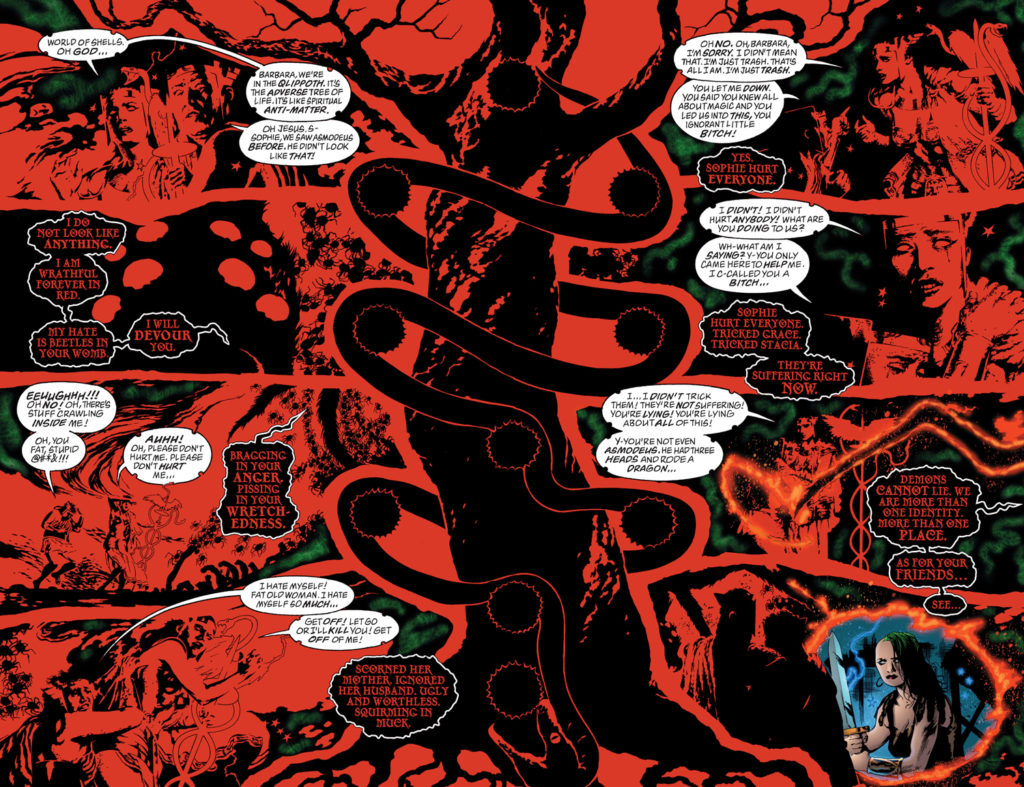
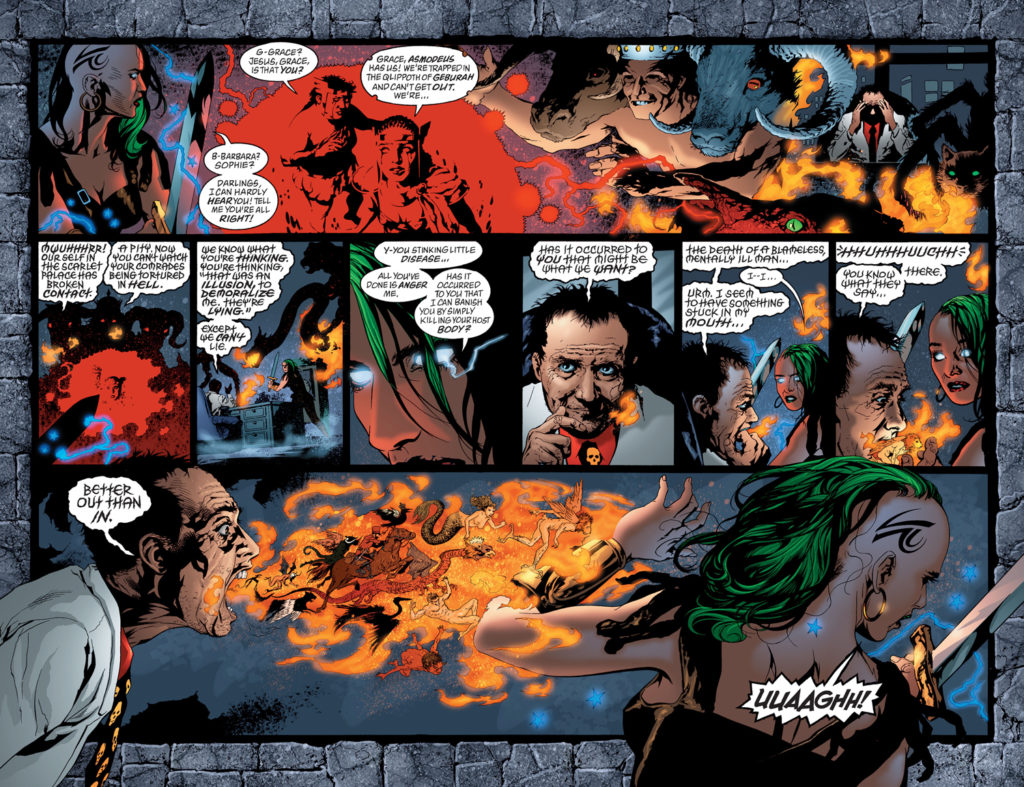
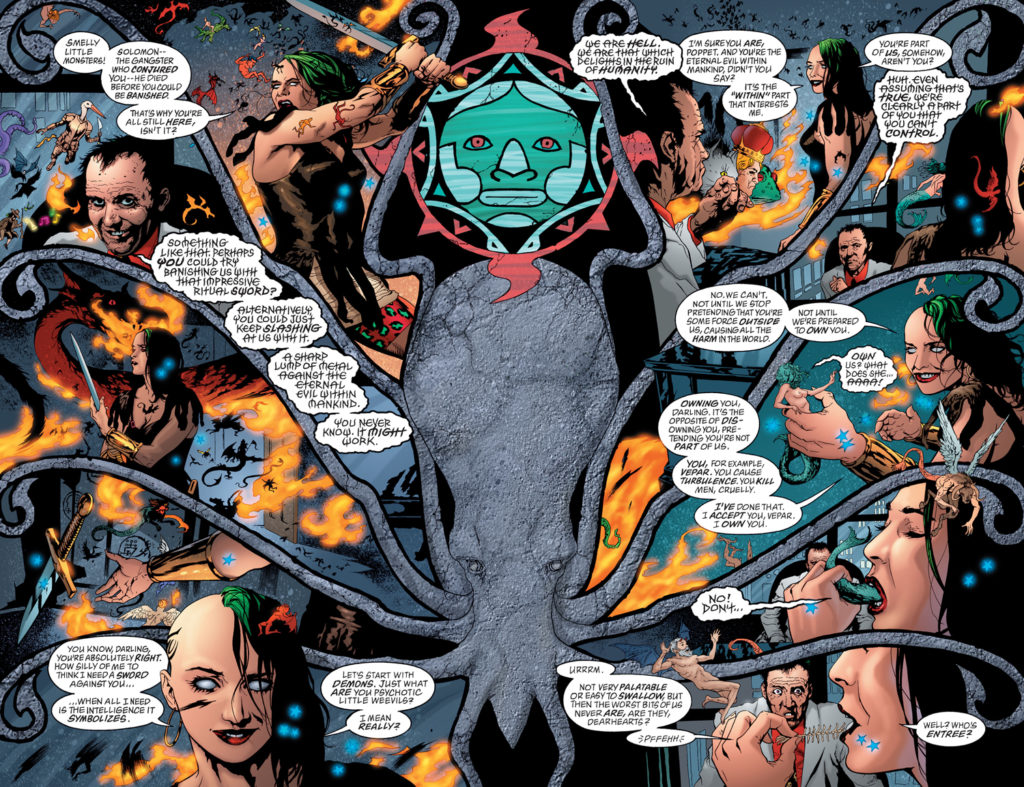
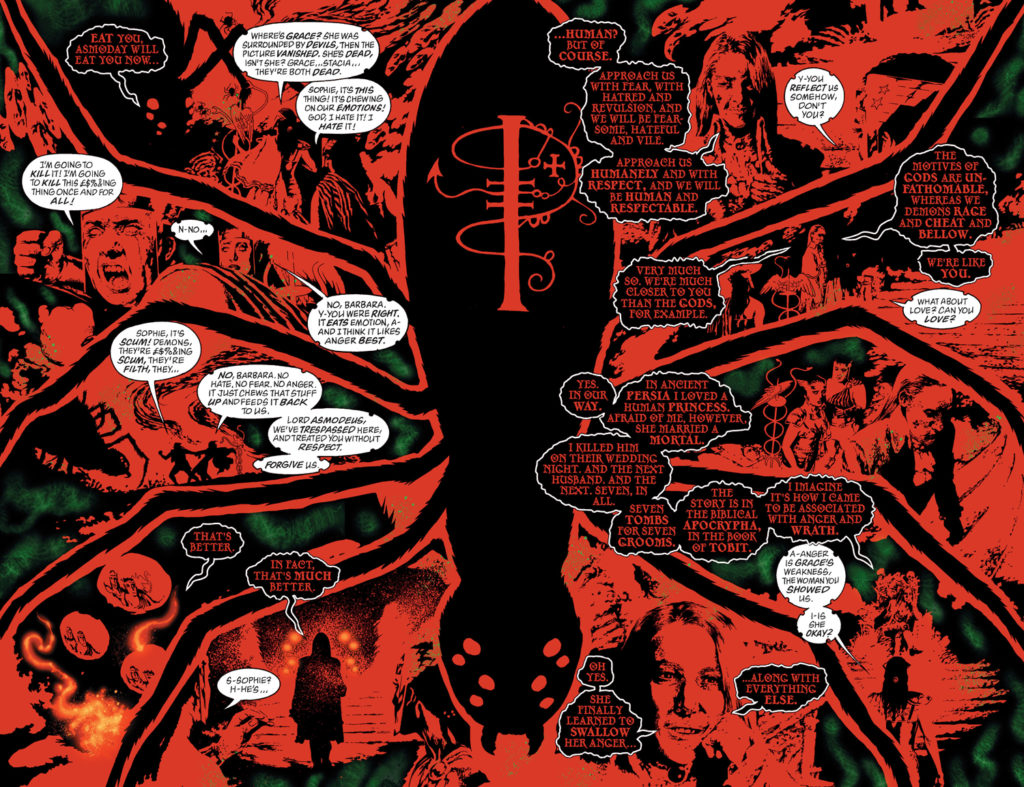
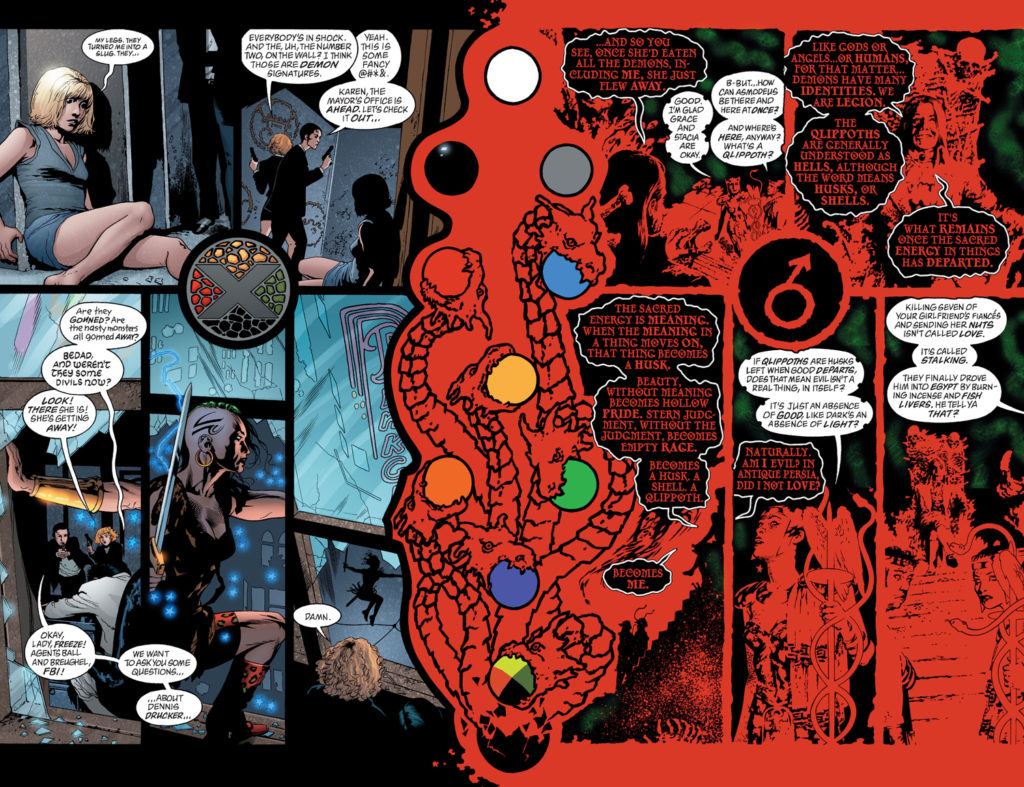
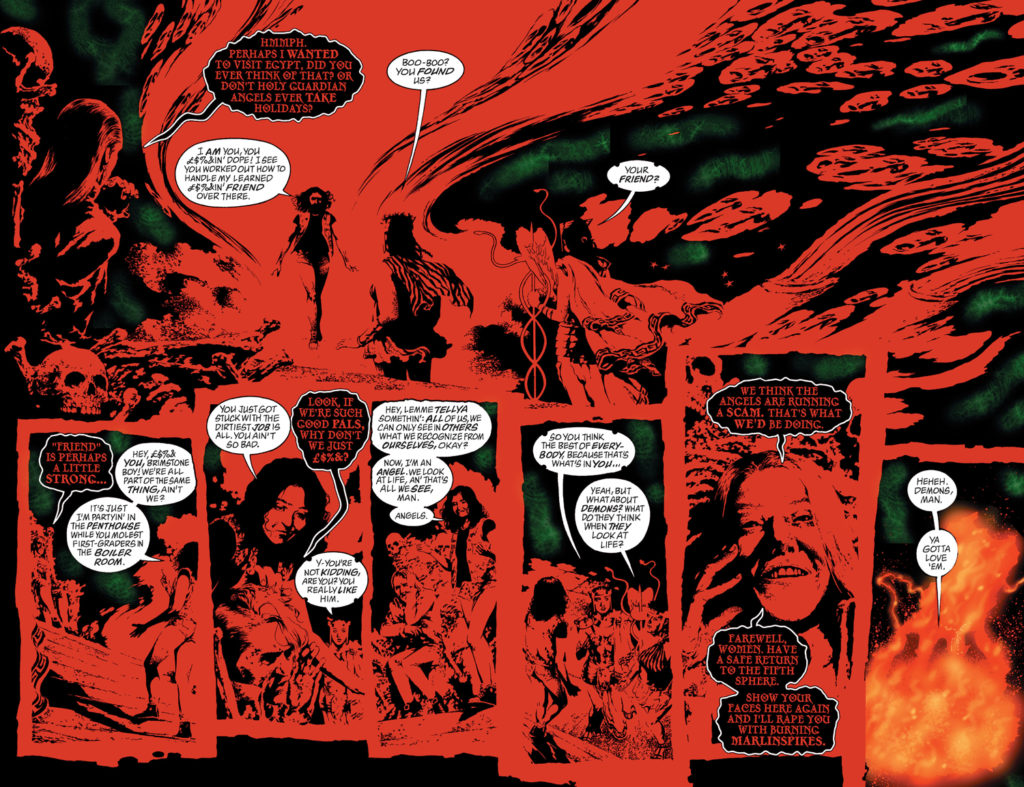
Dharma:
This is the final truth to our exploration here. I would argue, this is the most misunderstood truth within spirituality. How does one reconcile higher spirituality with regular daily life? Especially in regards to the revelations of the God-self, what does all that mean in the face of one’s real/Real daily struggles. Again, I differ to Watt’s immense guidance and knowledge in this matter:
The Fourth Noble Truth describes the Eightfold Path of the Buddha’s Dharma, that is, the method or doctrine whereby self-frustration is brought to an end. Each section of the path has a name preceded by the word samyak (Pali, samma), which has the meaning of “perfect” or “complete.” The first two sections have to do with thought; the following four have to do with action; and the final two have to do with contemplation or awareness. We therefore have:
- 1 Samyag-drishti, or complete view.
- 2 Samyak-samkalpa, or complete understanding.
- 3 Samyag-vak, or complete (i.e., truthful) speech.
- 4 Samyak-karmanta, or complete action.
- 5 Samyagajiva, or complete vocation.
- 6 Samyag-vyayama, or complete application.
- 7 Samyak-smriti, or complete recollectedness.
- 8 Samyak-samadhi, or complete contemplation.
Without discussing these sections in detail, it may simply be said that the first two are concerned with a proper understanding of the doctrine and of the human situation. In some ways the first section, “complete view,” contains all the others, since the method of Buddhism is above all the practice of clear awareness, of seeing the world yathabhutam–just as it is. Such awareness is a lively attention to one’s direct experience, to the world as immediately sensed, so as not to be misled by names and labels. Samyak-samadhi, the last section of the path, is the perfection of the first, signifying pure experience, pure awareness, wherein there is no longer the dualism of the knower and the known.
The sections dealing with action are often misunderstood because they have a deceptive similarity to a “system of morals.” Buddhism does not share the Western view that there is a moral law, enjoined by God or by nature, which it is man’s duty to obey. The Buddha’s precepts of conduct–abstinence from taking life, taking what is not given, exploitation of the passions, lying, and intoxication–are voluntarily assumed rules of expediency, the intent of which is to remove the hindrances to clarity of awareness. Failure to observe the precepts produces “bad karma,” not because karma is a law or moral retribution, but because all motivated and purposeful actions, whether conventionally good or bad, are karma in so far as they are directed to the grasping of life. Generally speaking, the conventionally “bad” actions are rather more grasping than the “good.” But the higher stages of Buddhist practice are as much concerned with disentanglement from “good karma” as from “bad.” Thus complete action is ultimately free, uncontrived, or spontaneous action, in exactly the same sense as the Taoist wu-wei.
Smriti, recollectedness, and samadhi, contemplation, constitute the section dealing with the life of meditation, the inner, mental practice of the Buddha’s way. Complete recollectedness is a constant awareness or watching of one’s sensations, feelings, and thoughts–without purpose or comment. It is a total clarity and presence of mind, actively passive, wherein events come and go like reflections in a mirror: nothing is reflected except what is.
In walking, standing, sitting, or lying down he understands that he is so doing, so that, however his body is engaged, he understands it just as it is.… In setting out or returning, in looking before or around, in bending or stretching his arm, … he acts with clear awareness.
Through such awareness it is seen that the separation of the thinker from the thought, the knower from the known, the subject from the object, is purely abstract. There is not the mind on the one hand and its experiences on the other: there is just a process of experiencing in which there is nothing to be grasped, as an object, and no one, as a subject, to grasp it. Seen thus, the process of experiencing ceases to clutch at itself. Thought follows thought without interruption, that is, without any need to divide itself from itself, so as to become its own object.
“Where there is an object, there thought arises.” Is then the thought one thing, and the object another? No, what is the object, just that is the thought. If the object were one thing, and the thought another, then there would be a double state of thought. So the object itself is just thought. Can then thought review thought? No, thought cannot review thought. As the blade of a sword cannot cut itself, as a finger-tip cannot touch itself, so a thought cannot see itself.
By being human, one is apriori enlightened regardless if one realizes it or not for it comes as part of the human consciousness; all one needs to do is simply remember this original state. Hence, again the danger of enlightenment lies in the fact that it is a state of mind that can be accessed by anyone regardless of their moral/ethical alignments; lest we forget the most sacred Buddhist symbol is also the same symbol that haunts our modern history. Though fought with peril, one must understand why this is so. In the previous film example, the character Big ends the chain of karma by no longer adhering to it. If a murderer engages in murder, one is confronted with an endless chain of karma for both the murder and his past that brought them to murder and the victim whose endless chain of karma that has gotten them killed. Both will then project another endless chain of karma towards a future in an endless loop Ad infinitum… On a karmic level, who is wrong and who is right? They are simply both wrong and both right. In this sense, the only way to stop the endless karmic loop is to stop trying to produce an outcome based on karma/cause and effect. Again, the character Big reaches enlightenment the moment he stops resisting and realizes that truth. Here, I will refer back to Zizek’s interpretation of the ending scene of Wagner’s Götterdämmerung (Twilight of the Gods); the gods witness’s their own demise as they silently look upon the audience, the time of gods have past, we are our own gods now and must bear the burden of our own responsibilities.

The principles of our universe operate in equal enmity in which for every thesis there will be its antithesis, push and pull, black and white; one acts simply as the spiritual automaton and can ever only act on what one believes in; like a vector described in Newton’s laws. The often-forgotten fact about the story about the Buddha himself, Siddartha Gautama, was that Siddartha was a prince to the most powerful emperor of his time. Siddartha didn’t pursue spirituality until his late thirties and up to that point in life he was spoiled mercilessly by his father in trying to dissuade him from the spiritual path; it was said at any given moment Siddartha was surrounded by 100,000 naked dancing women, and the often depiction of his large ear lobes are from the result of the weight of all the gold he wore in his youth. Here, I simply want to point out one has to give the devil his due; Siddartha was able to reach enlightenment in his life time only through the total sum of his life experiences from the greatest of excesses to the most abstinent. Here you can see, the principles of polarity at work: if the emperor simply sent Siddhartha to grow up in the poorest village in his domain, Siddhartha would most likely become the world conqueror like the emperor wanted. Similarly, like the infamous story of Oedipus Rex, had his father not sent him away and simply spoiled him mercilessly, Oedipus would have never been able to defeat the Sphinx. It is as Watt’s states:
It would seem, then, that to get rid of the subjective distinction between “me” and “my experience”–through seeing that my idea of myself is not myself–is to discover the actual relationship between myself and the “outside” world. The individual, on the one hand, and the world, on the other, are simply the abstract limits or terms of a concrete reality which is “between” them, as the concrete coin is “between” the abstract, Euclidean surfaces of its two sides. Similarly, the reality of all “inseparable opposites”–life and death, good and evil, pleasure and pain, gain and loss–is that “between” for which we have no words…
As Watts further explains:
The Lankavatara Sutra states that there are both gradual and sudden (yugapat) ways of awakening, the former by purification of the tainted outflows or projections (ashrava) of the mind, and the latter by paravritti–an instantaneous “turning about” within the depths of consciousness whereby dualistic views are cast off. It is likened to a mirror immediately reflecting whatever forms and images appear before it.1 There is, too, a clear connection between the idea of immediate awakening and the teaching of the Vajracchedika, or “Diamond Cutter Sutra,” on the fact that to attain awakening is not to attain anything. In other words, if nirvana is actually here and now so that to seek it is to lose it, a realization through progressive stages is hardly appropriate. One would have to see into it in the present moment, directly.
Although its origins are probably later than those of Zen in China, there is also a tradition of this kind in Tantric Buddhism, and there is nothing to indicate that there was a reverse influence from Chinese Zen. Parallels to Zen sayings may be seen in a tenth-century Tantric work by Saraha:
If it [the Truth] is already manifest, what’s the use of meditation? And if it is hidden, one is just measuring darkness. Mantras and tantras, meditation and concentration, They are all a cause of self-deception. Do not defile in contemplation thought that is pure in its own nature, But abide in the bliss of yourself and cease those torments. Whatever you see, that is it, In front, behind, in all the ten directions. Even today let your master make an end of delusion! The nature of the sky is originally clear, But by gazing and gazing the sight becomes obscured.
Tibetan Buddhism likewise comprises a tradition of the Short Path, considered as a swift and steep ascent to nirvana for those who have the necessary courage, though a doctrine more suggestive of the Zen emphasis on immediacy and naturalness is found in the “Six Precepts” of Tilopa:
No thought, no reflection, no analysis, No cultivation, no intention; Let it settle itself.
The opening words of the oldest Zen poem say that
The perfect Way [Tao] is without difficulty, Save that it avoids picking and choosing. Only when you stop liking and disliking Will all be clearly understood. A split hair’s difference, And heaven and earth are set apart! If you want to get the plain truth, Be not concerned with right and wrong. The conflict between right and wrong Is the sickness of the mind.
The point is not to make an effort to silence the feelings and cultivate bland indifference. It is to see through the universal illusion that what is pleasant or good may be wrested from what is painful or evil. It was a first principle in Taoism that
When everyone recognizes beauty as beautiful, there is already ugliness; When everyone recognizes goodness as good, there is already evil. “To be” and “not to be” arise mutually; Difficult and easy are mutually realized; Long and short are mutually contrasted; High and low are mutually posited; … Before and after are in mutual sequence.
To see this is to see that good without evil is like up without down, and that to make an ideal of pursuing the good is like trying to get rid of the left by turning constantly to the right. One is therefore compelled to go round in circles.
The way Siddhartha points to is exactly tathata, a middle way, or in Tao, no way; every path you take conscious or unconscious is merely an extension of the Tao. The path towards esoteric work is to not work at all. When one engages in action with a purpose to achieve something, one gets trapped by karma even if it is for noble causes. The fate and end results are the same, the inescapable net of Mara; like the psychoanalytical saying, when reality becomes too much people escape into their dreams, but as their dreams becomes too real people escape and drown themselves in reality to escape their dreams. This includes any work on the spiritual and mental level when one engages life with an objective; to drown oneself in the need to be enlightened/awakened one ends up escaping deeper into another dream. Remember enlightenment was always already apriori, one simply does not have a choice to engage in life or in spiritual work other than to do tathata, and simply be here, now, and LOOK as Watt’s explains:
This, however, is not an experiment to be held in reserve, as a trick, for moments of crisis. It is a way of life. It means being aware, alert, and sensitive to the present moment always, in all actions and relations whatsoever, beginning at this instant. This, in turn, depends upon seeing that you have really no choice but to be aware—because you cannot separate yourself from the present and you cannot define it. You can, indeed, refuse to admit this, but only at the cost of the immense and futile effort of spending your whole life resisting the inevitable.
Once this is understood, it is really absurd to say that there is a choice or an alternative between these two ways of life, between resisting the stream in fruitless panic, and having one’s eyes opened to a new world, transformed, and ever new with wonder. The key is understanding. To ask how to do this, what is the technique or method, what are the steps and rules, is to miss the point utterly. Methods are for creating things which do not yet exist. We are concerned here with understanding something which is—the present moment. This is not a psychological or spiritual discipline for self-improvement. It is simply being aware of this present experience, and realizing that you can neither define it nor divide yourself from it. There is no rule but “Look!”
One can think of this scientifically in Heisenberg’s uncertainty principle; you are limited to only one set of information at any given time, either the location of the particle or its speed, not both. In trying to quantify the phenomenon you are forced into a duality in which you have to sacrifice half of all available information, in order to avoid this duality, one has to forfeit its quantification. Like change, the human experience is not an observable phenomenon, one only notice change after the fact, in its aftermath, the change itself is undetectable in its unraveling. Only through this mind set of engaging the present moment. To see the world without the extremes of duality are the only things that one can really do. As Watt’s further elaborates:
This is not a philosophy of not looking where one is going; it is a philosophy of not making where one is going so much more important than where one is that there will be no point in going.
The life of Zen begins, therefore, in a disillusion with the pursuit of goals which do not really exist–the good without the bad, the gratification of a self which is no more than an idea, and the morrow which never comes. For all these things are a deception of symbols pretending to be realities, and to seek after them is like walking straight into a wall upon which some painter has, by the convention of perspective, suggested an open passage. In short, Zen begins at the point where there is nothing further to seek, nothing to be gained. Zen is most emphatically not to be regarded as a system of self-improvement, or a way of becoming a Buddha. In the words of Lin-chi, “If a man seeks the Buddha, that man loses the Buddha.”
For all ideas of self-improvement and of becoming or getting something in the future relate solely to our abstract image of ourselves. To follow them is to give ever more reality to that image. On the other hand, our true, nonconceptual self is already the Buddha, and needs no improvement. In the course of time it may grow, but one does not blame an egg for not being a chicken; still less does one criticize a pig for having a shorter neck than a giraffe. A Zenrin poem says:
In the landscape of spring there is neither high nor low; The flowering branches grow naturally, some long, some short.
When Ts’ui-wei was asked about the meaning of Buddhism, he answered: “Wait until there is no one around, and I will tell you.” Some time later the monk approached him again, saying: “There is nobody here now. Please answer me.” Ts’ui-wei led him out into the garden and went over to the bamboo grove, saying nothing. Still the monk did not understand, so at last Ts’ui-wei said: “Here is a tall bamboo; there is a short one!” Or, as another Zenrin verse puts it:
A long thing is the long Body of Buddha; A short thing is the short Body of Buddha.
What is therefore to be gained from Zen is called wu-shih (Japanese, buji) or “nothing special,” for as the Buddha says in the Vajracchedika:
I obtained not the least thing from unexcelled, complete awakening, and for this very reason it is called “unexcelled, complete awakening.”
The expression wu-shih also has the sense of the perfectly natural and unaffected, in which there is no “fuss” or “business.” The attainment of satori is often suggested by the old Chinese poem:
Mount Lu in misty rain; the River Che at high tide. When I had not been there, no rest from the pain of longing! I went there and returned.… It was nothing special: Mount Lu in misty rain; the River Che at high tide.
According to the famous saying of Ch’ing-yüan:
Before I had studied Zen for thirty years, I saw mountains as mountains, and waters as waters. When I arrived at a more intimate knowledge, I came to the point where I saw that mountains are not mountains, and waters are not waters. But now that I have got its very substance I am at rest. For it’s just that I see mountains once again as mountains, and waters once again as waters.
The difficulty of Zen is, of course, to shift one’s attention from the abstract to the concrete, from the symbolic self to one’s true nature. So long as we merely talk about it, so long as we turn over ideas in our minds about “symbol” and “reality,” or keep repeating, “I am not my idea of myself,” this is still mere abstractíon. Zen created the method (upaya) of “direct pointing” in order to escape from this vicious circle, in order to thrust the real immediately to our notice. When reading a difficult book it is of no help to think, “I should concentrate,” for one thinks about concentration instead of what the book has to say. Likewise, in studying or practicing Zen it is of no help to think about Zen. To remain caught up in ideas and words about Zen is, as the old masters say, to “stink of Zen.”
For this reason the masters talk about Zen as little as possible, and throw its concrete reality straight at us. This reality is the “suchness” (tathata) of our natural, nonverbal world. If we see this just as it is, there is nothing good, nothing bad, nothing inherently long or short, nothing subjective and nothing objective. There is no symbolic self to be forgotten, and no need for any idea of a concrete reality to be remembered.
Frank Metterton: "It genuinely is quite beautiful. Bare, apt the heavy heart. At the center of the four directions, the four elements is a blood red rose. Although, I suspect you're not really the Rosicrucian type. You're more the three rocks and a tray of sand sort, I'd have thought. Zen Buddhism. Trees falling unobserved and amputees applauding. I mean, it's a bit peculiar isn't it?" Fletcher Dennis: "I am the Zen archer. I'm sworn to the elimination of all falsehood. All illusion." Frank Metterton: "Oh, dear. Oh dear, we can't have that. And I'd so hoped that you and I were going to get on and be pals."
One can find a brilliant example of dharma masterfully depicted by Denis Villeneuve’s master piece Blade Runner 2049 (2017). Villeneuve really showed his fearlessness in the sci-fi genre by not only directing a movie that pays homage to the original masterpiece Blade Runner (1982) by Ridley Scott (an extremely tall feat), but it also contributes and exceeds it in both originality and story. If the original movie explores the idea of human mortality and life through death then the new one explores death and mortality through life. The main shift in the plots from the old to the new can be seen as an inversion; where the replicants instead of seeking their creator in an attempt to conquer death and find meaning, the replicants now accepts their meaningless lives and try to find meaning in their deaths and conquering meaninglessness by finding new life. The whole story revolves around the main character K or Joe played by Ryan Gosling who is a new generation of Blade Runner that hunts down and kills/retires replicants. In order to take down these physically superior metahumans, Blade Runners are also replicants themselves. The main crux or struggle in the movie can be seen to be similar to that of Disney’s Pinocchio but on acid, where K’s struggle to find meaning in his life, fully acknowledging his own artificiality, is his struggle to become a real boy. The key that is fully represented in this example can be said to be the psychoanalytical difference between real and the Real or in other words, there is a fundamental difference in knowing the reality to one’s self and truly Knowing the self.



Joi: Mere data makes a man. A and C and T and G. The alphabet of you. All from four symbols. I'm only two: One and zero.
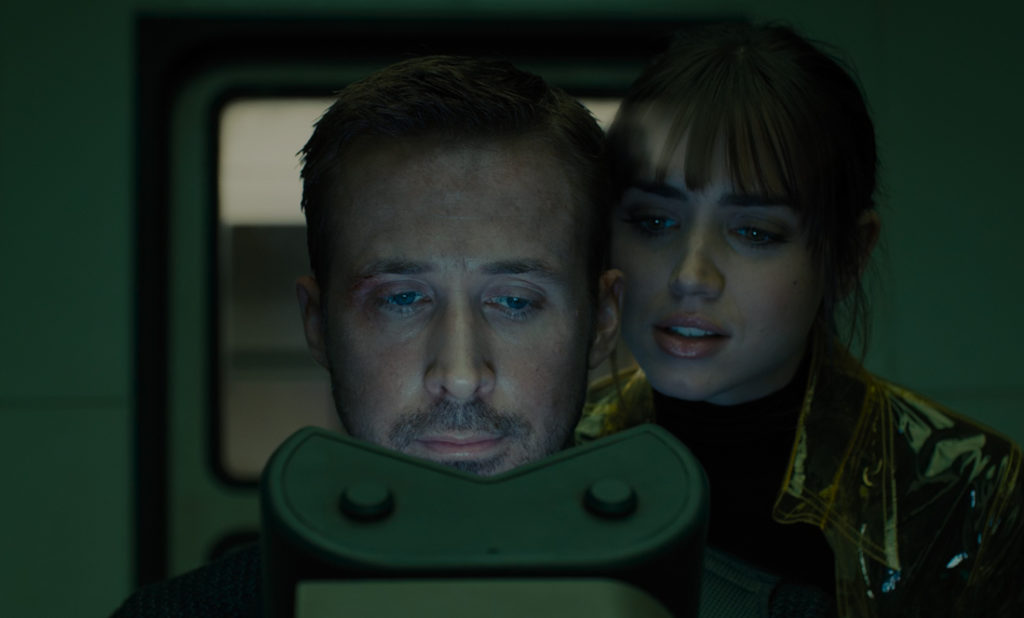
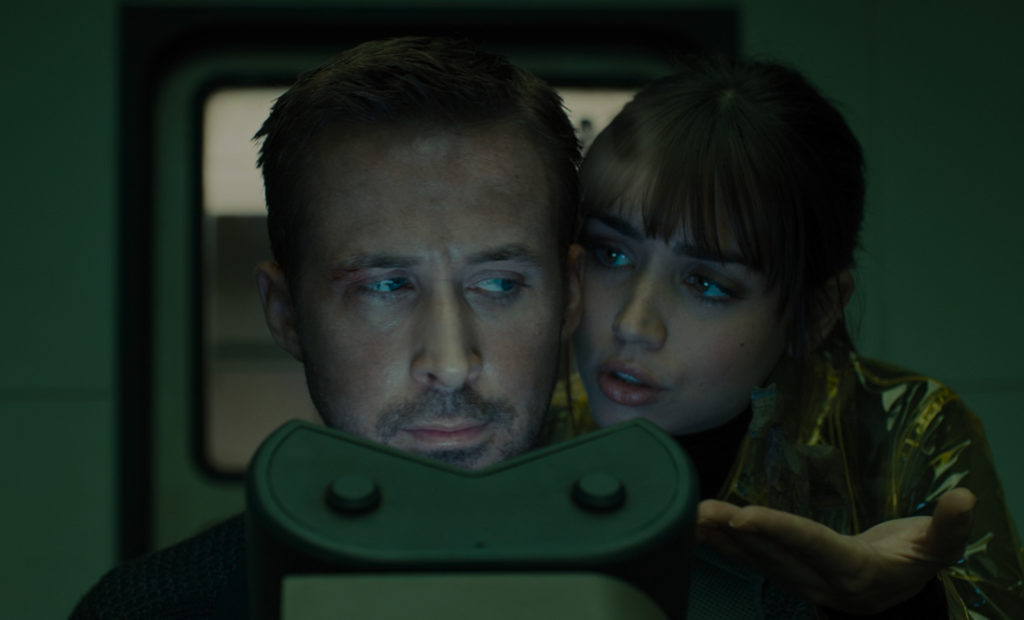
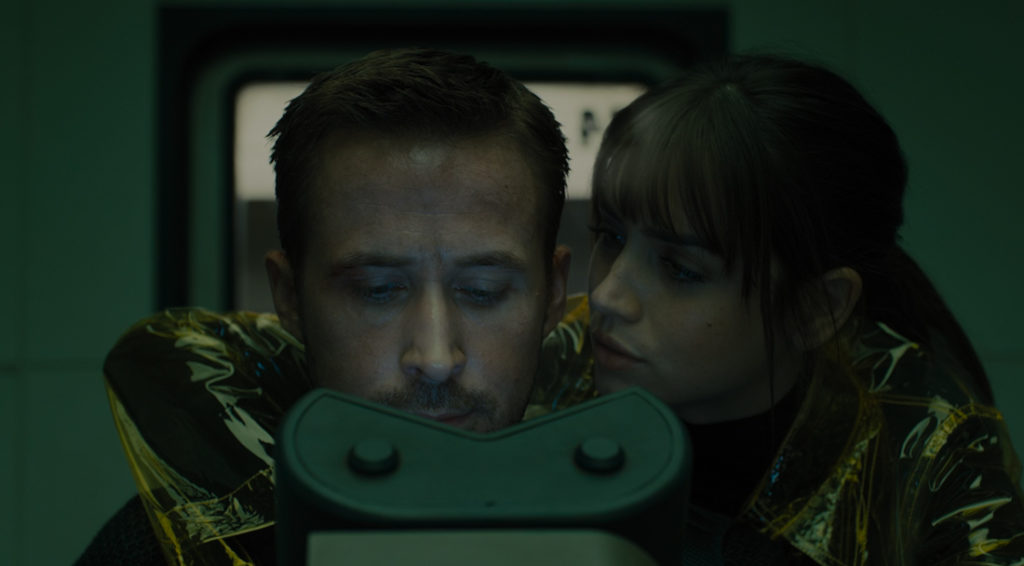
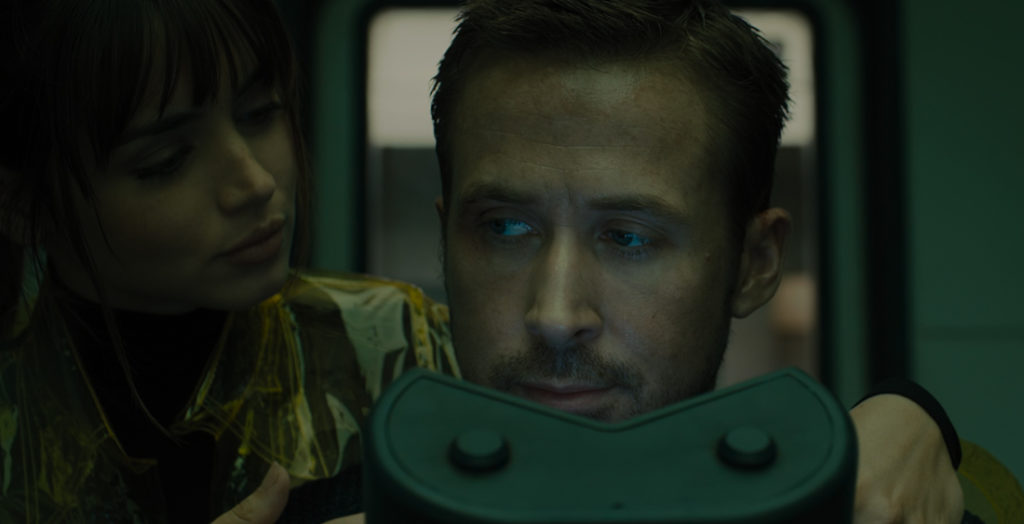
Just like the first film, the movie begins with the all-seeing eye (a point which I will later explore/clarify) as K wakes up and begins his usual work of retiring replicants. This time however, K stumbles upon a buried set of bones during his mission of a deceased women who died during child birth. The issue, or miracle, here is that on further inspection this set of bones belong to a fellow replicant where child birth is an impossibility (similar here to the metaphor for the idea of an immaculate conception). At this point, K’s present life, if you can call it that, nose dives into a death spiral of uncontrollable conflicts as vying forces all push him towards finding the mysterious story behind this miraculous child and the child itself to serve their own ideological/self-interests (As a metaphor or as an inversion of the first film —the sequel is a search for Christ, the search for the son and not the father/creator; the one whom conquered death). The first party of interest introduced to the audience are governmental; the police department itself represented by Lieutenant Joshi (played by Robin Wright) who orders K to find the child/miracle and eliminate it in an attempt to maintain greater social order and peace, a cover-up to pacify the masses.
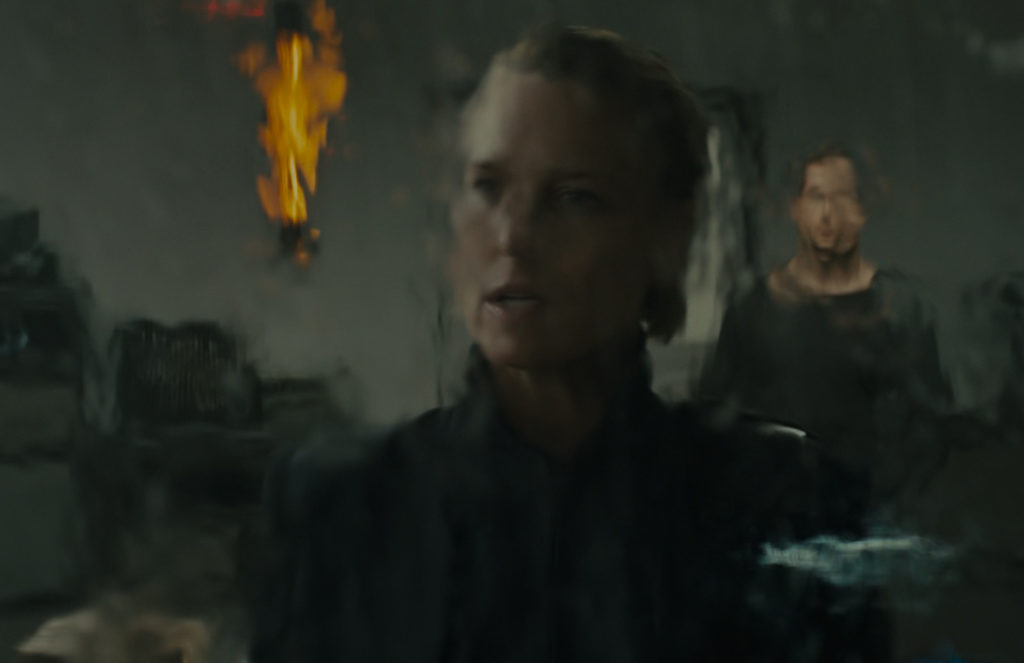

As K pursues his detective work, the audience is introduced to the second party of interest, science; an extension of Tyrell from the original film, the Wallace Corporation that is behind the manufacturing of replicants represented by Niander Wallace (sublimely played by Jared Leto). Like in the first film, the creator of replicants/head of the corporation are illustrated as god-like characters with an omnipotence that gives them a moral/ethical ambiguous standpoint. This corporate ‘god’ embodied by the character Wallace, does not act on his own, but acts and manipulates the events within the story through his ‘angels’ here represented by the replicant Luv (played by Sylvia Hoeks). Luv, in the background manipulates and assists K in finding the child in order to capture it to unlock the secrets of replicant reproduction (to control/own the secrets in the miracle of the creation of life) that has eluded the company and their vast scientific/commercial apparatuses.




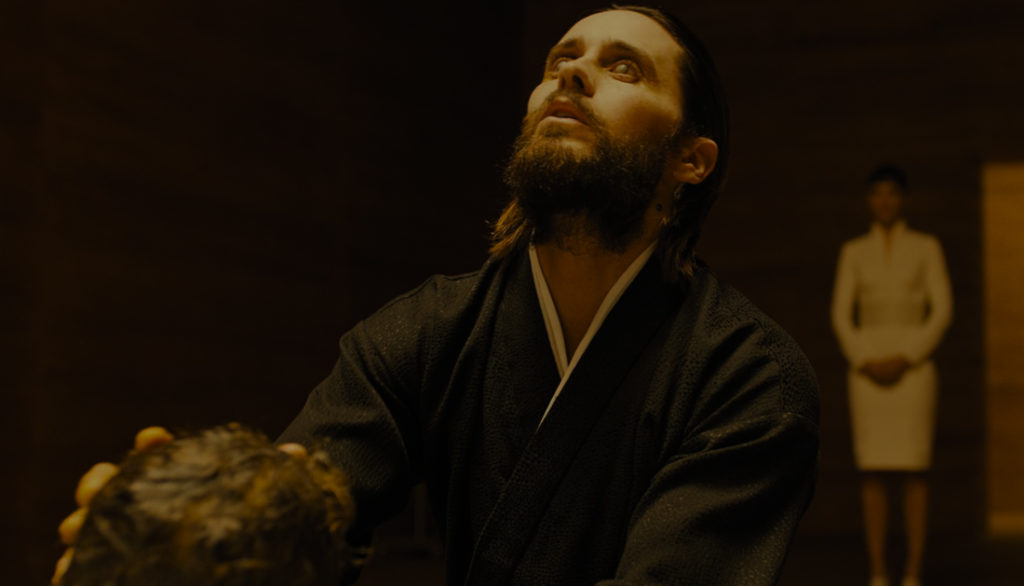
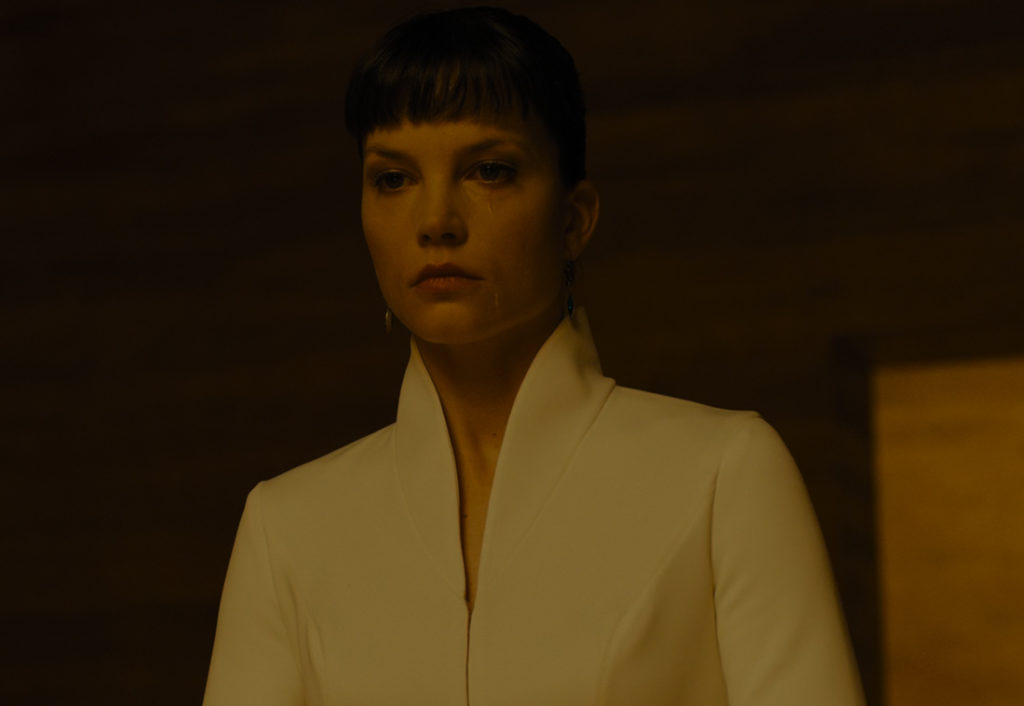






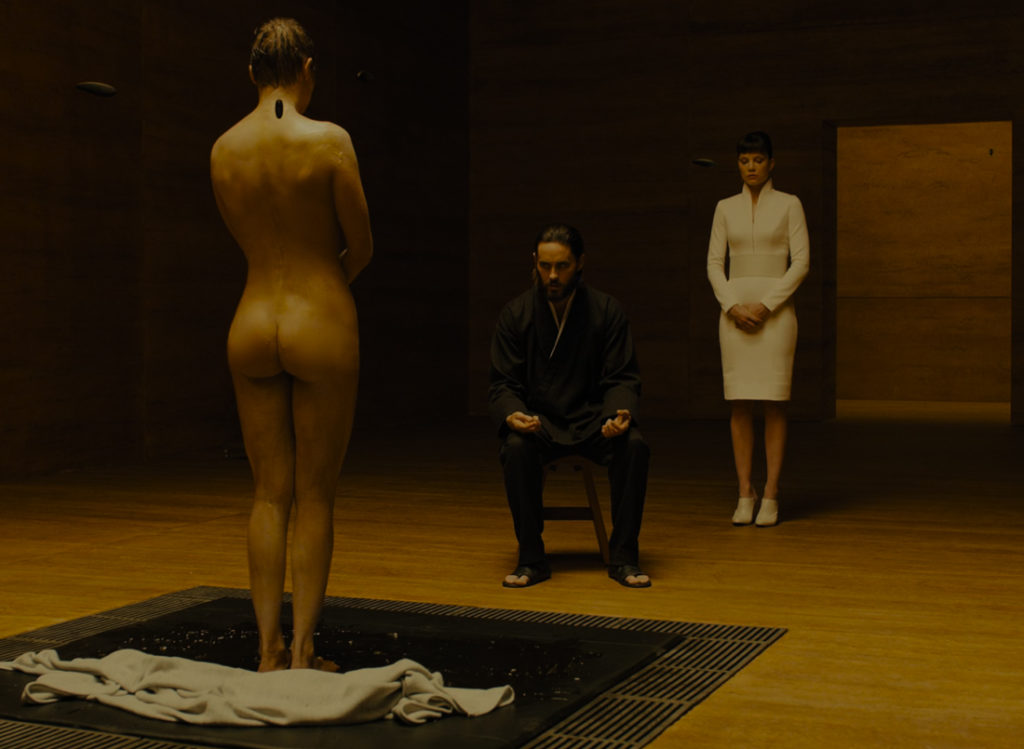
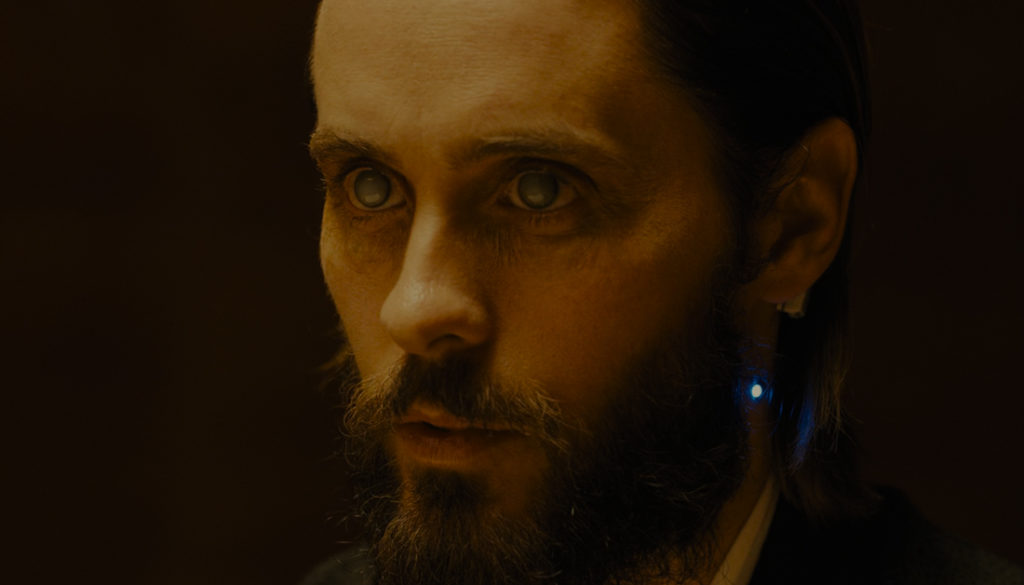





Wallace: And this, the seat that we must change for heaven. I cannot breed them. So help me, I have tried. We need more Replicants than can ever be assembled. Millions, so we can be trillions more. We could storm Eden and retake her.
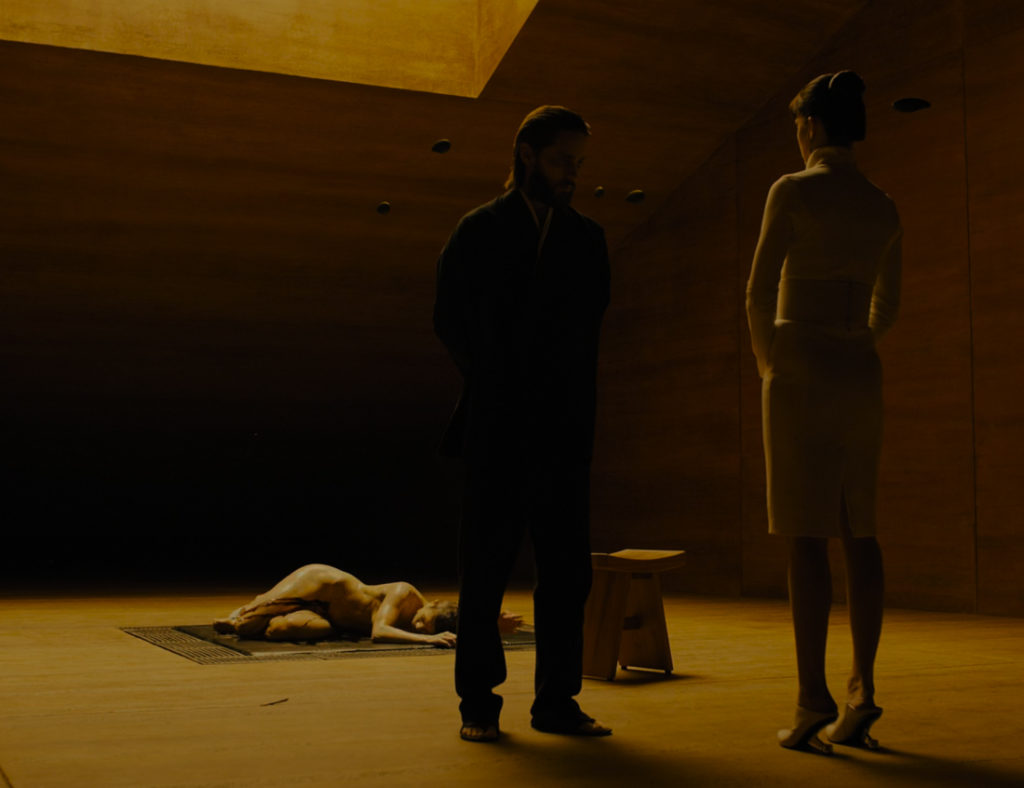
As K struggles to piece together all the information to plan out his next move of investigation, the audience is then briefly introduced to the third interested party, religion; a shadowy mysterious organization of replicants and replicant supporters whom view this birth as a miracle that will spark/lead them to their eventual freedom and liberation to/for existence and the next evolution of the human race, represented by the human sex worker Mariette (played by Mackenzie Davis – perhaps a metaphor for Marry Magdalene and or as a ‘Marionette’/puppet a point I will also later explore…) as an extension to their leader (unknown to the audience at this time, but acts as an antithesis to Wallace/god’s omniscient).



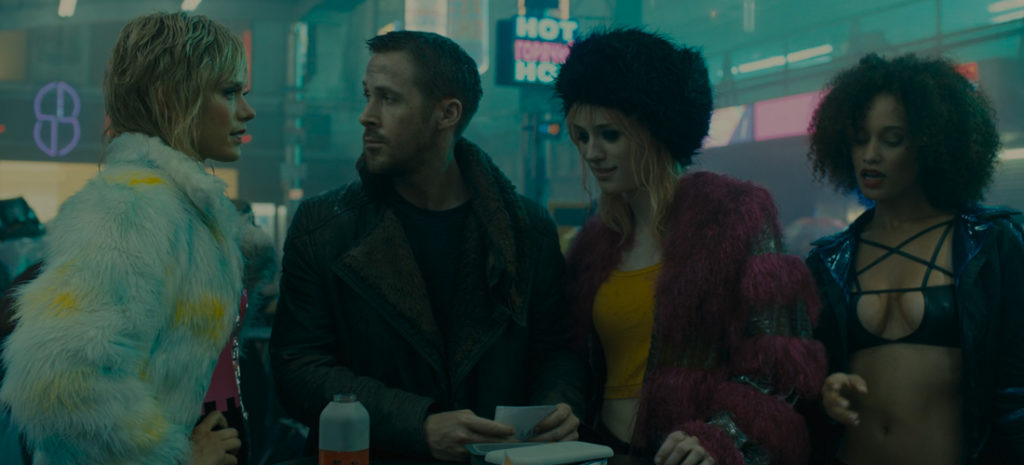

In the middle of all this, the protagonist K being a replicant simply has no character to speak of. Unlike the first film, replicants have fully accepted their ‘soulless’ nature and they are merely tools that have no higher purpose. In order to represent a hollow character, the movie relies on an additional semi-character to show how K, someone without an internal identity, feels/interprets the story/narrative of the events that unfold before him to progress the story. The fifth interested party is himself/not-himself materialized and physically represented to the audience by his holographic girl friend Joi (brilliantly played by Ana de Armas) that captures K’s emotional responses and fills in all the ‘human’ aspects of his character that K as a replicant ‘technically’ does not have.




Joi: Would you read to me? It'll make you feel better. K: You hate that book. Joi: I don't wanna read either. Let's dance.
















This lack of an internal identity is what makes this K character the perfect example of Dharma for us to witness. Unlike the first film, replicants are fully aware of what they are. They fully imbody their own lack in themselves, much like the term ‘skin-bag’ that refers to replicants often used throughout the film. One can even say K is the epitome of the traditional ascetic in the modern age and because of this, he represents the fundamental example or errors in one’s search for truth/enlightenment/knowledge: He fully understands the artificiality of the world around him. Death and mortality to K is simply a natural phenomenon for a tool like himself. Neither does he try to extend his life or define his purpose. Material wealth and earthly pleasures mean little to nothing to him. He knows his memories are simply implants and it does not bother him. His thoughts are kept pure, instant and now with no hint of emotional turmoil.
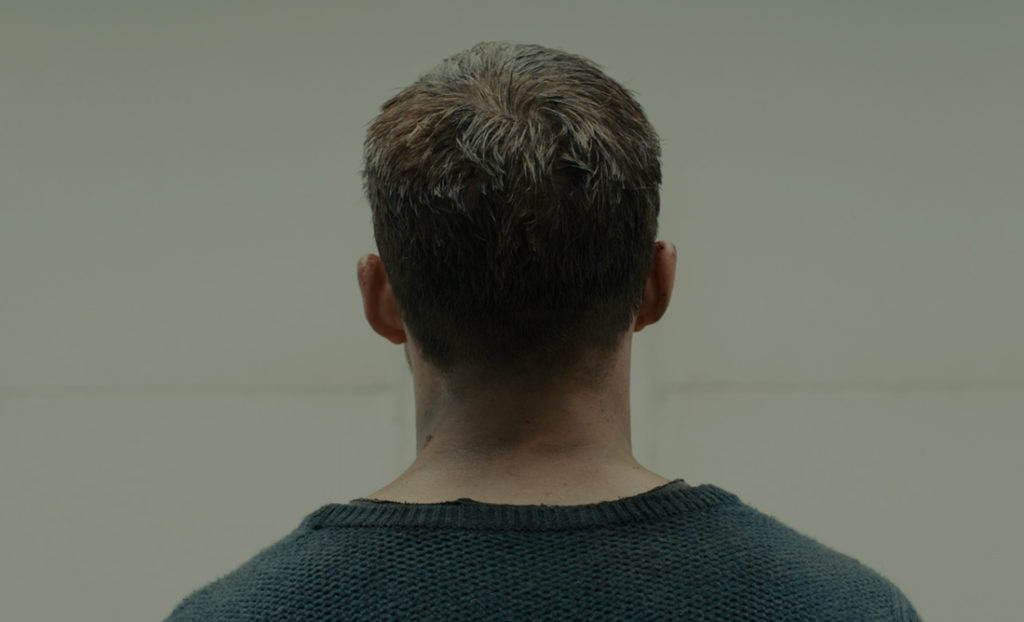
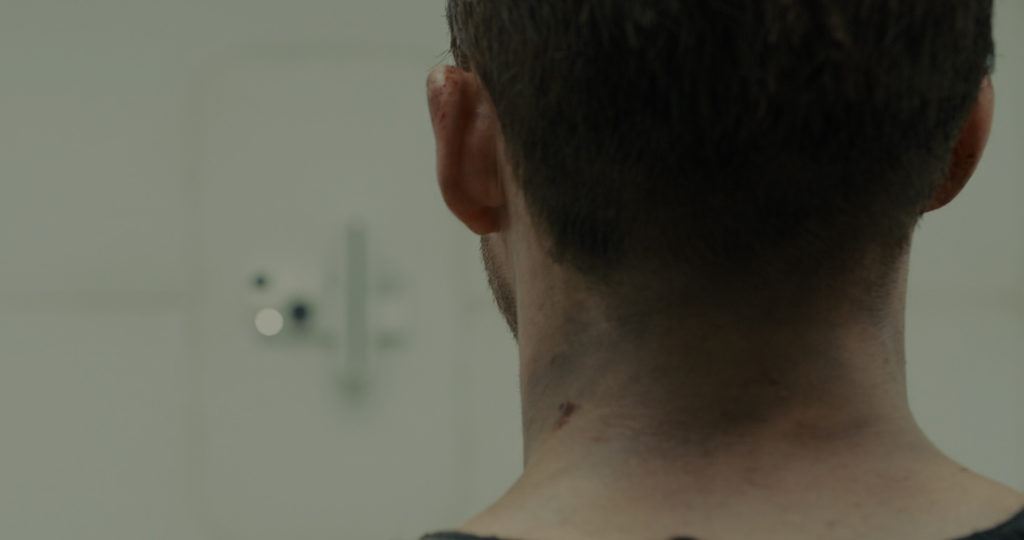
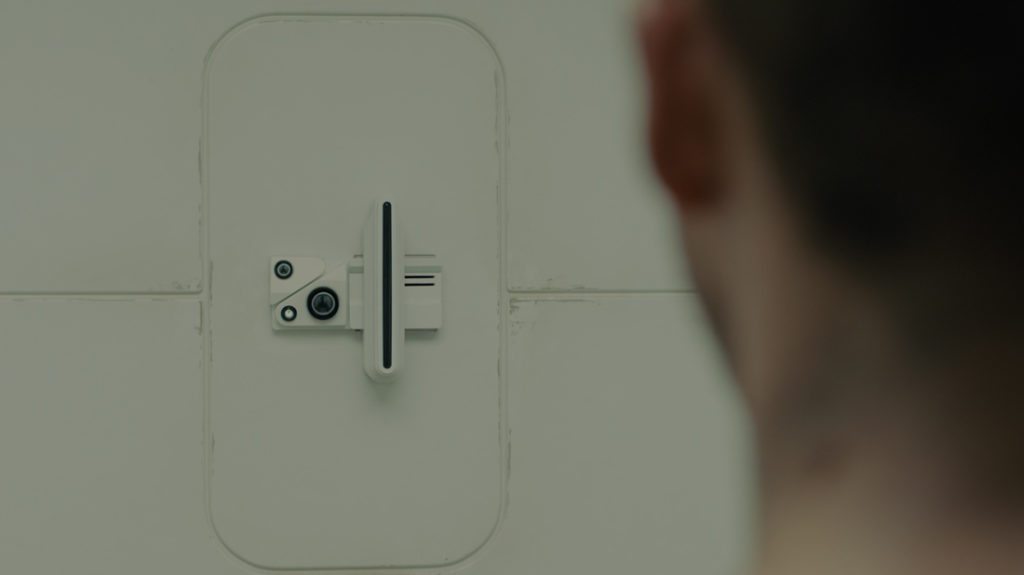
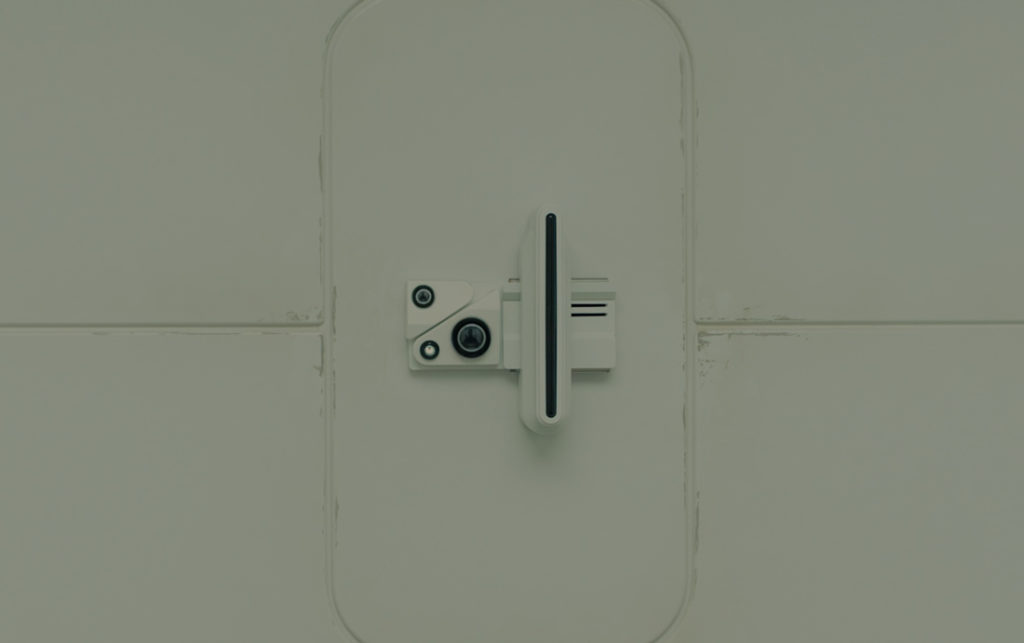
K does not rely on a concept of heaven or hell to judge the morality of his actions. K is simply HERE in the precent and yet, as the audience can witness, K’s struggles are real and it provides no additional view or new reality in which for him to surface to/from (enlightenment). The primary thing K puts any effort in is his love for Joi; a personification for the audience to witness K’s inner world/personality and also the mental frame work for K as a character himself to witness himself in reality—the comfort Joi provides/represents is both a gift and a curse. The clarity of mind that K represents is the usual typical fertile ground for all students of the esoteric path, but here, I argue is the first hurdle to Dharmic understanding, the stereotypical self-cultivation is the hurdle to cultivation in and of itself. To borrow a story from Watts:
Hui-neng’s position was that a man with an empty consciousness was no better than “a block of wood or a lump of stone.” He insisted that the whole idea of purifying the mind was irrelevant and confusing, because “our own nature is fundamentally clear and pure.” In other words, there is no analogy between consciousness or mind and a mirror that can be wiped. The true mind is “no-mind” (wu-hsin), which is to say that it is not to be regarded as an object of thought or action, as if it were a thing to be grasped and controlled. The attempt to work on one’s own mind is a vicious circle. To try to purify it is to be contaminated with purity. Obviously this is the Taoist philosophy of naturalness, according to which a person is not genuinely free, detached, or pure when his state is the result of an artificial discipline. He is just imitating purity, just “faking” clear awareness. Hence the unpleasant self-righteousness of those who are deliberately and methodically religious.
Hui-neng’s teaching is that instead of trying to purify or empty the mind, one must simply let go of the mind–because the mind is nothing to be grasped. Letting go of the mind is also equivalent to letting go of the series of thoughts and impressions (nien) which come and go “in” the mind, neither repressing them, holding them, nor interfering with them.
Thoughts come and go of themselves, for through the use of wisdom there is no blockage. This is the samadhi of prajna, and natural liberation. Such is the practice of “no-thought” [wu-nien]. But if you do not think of anything at all, and immediately command thoughts to cease, this is to be tied in a knot by a method, and is called an obtuse view.
Of the usual view of meditation practice he said:
To concentrate on the mind and to contemplate it until it is still is a disease and not dhyana. To restrain the body by sitting up for a long time–of what benefit is this towards the Dharma?
Even though we know there is nothing to pacify we powerlessly cling to structures that understandingly gives us a sense of security and a point in which to judge ‘progress’ towards a ‘goal’. But that previous sentence fully captures the paradox: progress, goals, enlightenment—there is nothing to gain when one truly realizes they are nothing. A situation where any direct attempt at cultivation will only lead to its opposite result and any direct path will simply be inauthentic: a perpetual state of frustration since there is no path to proceed. It is precisely here that K acts as the penultimate example, the last thing K wasn’t willing to give up was Joi: the personification of this inner witness not limited to the movie, but a relatable metaphor for the audiences’ inner worlds themselves and the witness’s they create for their very own identities. To approach Dharma and spiritual praxis I point to a fundamental lesson that Watts explains:
You want to be happy, to forget yourself, and yet the more you try to forget yourself, the more you remember the self you want to forget. You want to escape from pain, but the more you struggle to escape, the more you inflame the agony. You are afraid and want to be brave, but the effort to be brave is fear trying to run away from itself. You want peace of mind, but the attempt to pacify it is like trying to calm the waves with a flat-iron.
We are all familiar with this kind of vicious circle in the form of worry. We know that worrying is futile, but we go on doing it because calling it futile does not stop it. We worry because we feel unsafe, and want to be safe. Yet it is perfectly useless to say that we should not want to be safe. Calling a desire bad names doesn’t get rid of it. What we have to discover is that there is no safety, that seeking it is painful, and that when we imagine that we have found it, we don’t like it. In other words, if we can really understand what we are looking for—that safety is isolation, and what we do to ourselves when we look for it—we shall see that we do not want it at all. No one has to tell you that you should not hold your breath for ten minutes. You know that you can’t do it, and that the attempt is most uncomfortable.
The principal thing is to understand that there is no safety or security. One of the worst vicious circles is the problem of the alcoholic. In very many cases he knows quite clearly that he is destroying himself, that, for him, liquor is poison, that he actually hates being drunk, and even dislikes the taste of liquor. And yet he drinks. For, dislike it as he may, the experience of not drinking is worse. It gives him the “horrors,” for he stands face to face with the unveiled, basic insecurity of the world.
Herein lies the crux of the matter. To stand face to face with insecurity is still not to understand it. To understand it, you must not face it but be it. It is like the Persian story of the sage who came to the door of Heaven and knocked. From within the voice of God asked, “Who is there” and the sage answered, “It is I.” “In this House,” replied the voice, “there is no room for thee and me.” So the sage went away, and spent many years pondering over this answer in deep meditation. Returning a second time, the voice asked the same question, and again the sage answered, “It is I.” The door remained closed. After some years he returned for the third time, and, at his knocking, the voice once more demanded, “Who is there?” And the sage cried, “It is thyself!” The door was opened.
To understand that there is no security is far more than to agree with the theory that all things change, more even than to observe the transitoriness of life. The notion of security is based on the feeling that there is something within us which is permanent, something which endures through all the days and changes of life. We are struggling to make sure of the permanence, continuity, and safety of this enduring core, this center and soul of our being which we call “I.” For this we think to be the real man—the thinker of our thoughts, the feeler of our feelings, and the knower of our knowledge. We do not actually understand that there is no security until we realize that this “I” does not exist.
Understanding comes through awareness. Can we, then, approach our experience—our sensations, feelings, and thoughts—quite simply, as if we had never known them before, and, without prejudice, look at what is going on? You may ask, “Which experiences, which sensations and feelings, shall we look at?” I will answer, “Which ones can you look at?” The answer is that you must look at the ones you have now.
That is surely rather obvious. But very obvious things are often overlooked. If a feeling is not present, you are not aware of it. There is no experience but present experience. What you know, what you are actually aware of, is just what is happening at this moment, and no more.
But what about memories? Surely by remembering I can also know what is past? Very well, remember something. Remember the incident of seeing a friend walking down the street. What are you aware of? You are not actually watching the veritable event of your friend walking down the street. You can’t go up and shake hands with him, or get an answer to a question you forgot to ask him at the past time you are remembering. In other words, you are not looking at the actual past at all. You are looking at a present trace of the past.
It is like seeing the tracks of a bird on the sand. I see the present tracks. I do not, at the same time, see the bird making those tracks an hour before. The bird has flown, and I am not aware of him. From the tracks I infer that a bird was there. From memories you infer that there have been past events. But you are not aware of any past events. You know the past only in the present and as part of the present.
We are seeing, then, that our experience is altogether momentary. From one point of view, each moment is so elusive and so brief that we cannot even think about it before it has gone. From another point of view, this moment is always here, since we know no other moment than the present moment. It is always dying, always becoming past more rapidly than imagination can conceive. Yet at the same time it is always being born, always new, emerging just as rapidly from that complete unknown which we call the future. Thinking about it almost makes you breathless.
To say that experience is momentary is really to say that experience and the present moment are the same thing. To say that this moment is always dying, or becoming past, and always being born, or coming out of the unknown, is to say the same thing of experience. The experience you have just had has vanished irretrievably, and all that remains of it is a sort of wake or track in the present, which we call memory. While you can make a guess as to what experience is coming next, in actual fact you do not know. Anything might happen. But the experience which is going on now is, as it were, a newborn infant which vanishes before it can even begin to get older.
While you are watching this present experience, are you aware of someone watching it? Can you find, in addition to the experience itself, an experiencer? Can you, at the same time, read this sentence and think about yourself reading it? You will find that, to think about yourself reading it, you must for a brief second stop reading. The first experience is reading. The second experience is the thought, “I am reading.” Can you find any thinker, who is thinking the thought, I am reading?” In other words, when present experience is the thought, “I am reading,” can you think about yourself thinking this thought?
Once again, you must stop thinking just, “I am reading.” You pass to a third experience, which is the thought, “I am thinking that I am reading.” Do not let the rapidity with which these thoughts can change deceive you into the feeling that you think them all at once.
But what has happened? Never at any time were you able to separate yourself from your present thought, or your present experience. The first present experience was reading. When you tried to think about yourself reading, the experience changed, and the next present experience was the thought “I am reading.” You could not separate yourself from this experience without passing on to another. It was “ring around the rosy.” When you were thinking, “I am reading this sentence” you were not reading it. In other words, in each present experience you were only aware of that experience. You were never aware of being aware. You were never able to separate the thinker from the thought, the knower from the known. All you ever found was a new thought, a new experience.
To be aware, then, is to be aware of thoughts, feelings, sensations, desires, and all other forms of experience. Never at any time are you aware of anything which is not experience, not a thought or feeling, but instead an experiencer, thinker, or feeler. If this is so, what makes us think that any such thing exists?
We might say, for example, that the “I” who is the thinker is this physical body and brain. But this body is in no way separate from its thoughts and sensations. When you have a sensation, say, of touch, that sensation is part of your body. While that sensation is going on, you cannot move the body away from it any more than you can walk away from a headache or from your own feet. So long as it is present, that sensation is your body and is you. You can remove the body from an uncomfortable chair, but you cannot move it from the sensation of a chair.
The notion of a separate thinker, of an “I” distinct from the experience, comes from memory and from the rapidity with which thought changes. It is like whirling a burning stick to give the illusion of a continuous circle of fire. If you imagine that memory is a direct knowledge of the past rather than a present experience, you get the illusion of knowing the past and the present at the same time. This suggests that there is something in you distinct from both the past and the present experiences. You reason, “I know this present experience, and it is different from that past experience. If I can compare the two, and notice that experience has changed, I must be something constant and apart.”
But, as a matter of fact, you cannot compare this present experience with a past experience. You can only compare it with a memory of the past, which is a part of the present experience. When you see clearly that memory is a form of present experience, it will be obvious that trying to separate yourself from this experience is as impossible as trying to make your teeth bite themselves. There is simply experience. There is not something or someone experiencing experience! You do not feel feelings, think thoughts, or sense sensations any more than you hear hearing, see sight, or smell smelling. “I feel fine” means that a fine feeling is present. It does not mean that there is one thing called an “I” and another separate thing called a feeling, so that when you bring them together this “I” feels the fine feeling. There are no feelings but present feelings, and whatever feeling is present is “I.” No one ever found an “I” apart from some present experience, or some experience apart from an “I”—which is only to say that the two are the same thing.
As a mere philosophical argument this is a waste of time. We are not trying to have an “intellectual discussion.” We are being aware of the fact that any separate “I” who thinks thoughts and experiences experience is an illusion. To understand this is to realize that life is entirely momentary, that there is neither permanence nor security, and that there is no “I” which can be protected.
There is a Chinese story of one who came to a great sage, saying, “I have no peace of mind. Please pacify my mind.” The sage answered, “Bring out your mind (your ‘I’) before me, and I will pacify it.” “These many years,” he replied, “I have sought my mind, but I cannot find it.” “There,” concluded the sage, “it is pacified!”
The real reason why human life can be so utterly exasperating and frustrating is not because there are facts called death, pain, fear, or hunger. The madness of the thing is that when such facts are present, we circle, buzz, writhe, and whirl, trying to get the “I” out of the experience. We pretend that we are amoebas, and try to protect ourselves from life by splitting in two. Sanity, wholeness, and integration lie in the realization that we are not divided, that man and his present experience are one, and that no separate “I” or mind can be found.
While the notion that I am separate from my experience remains, there is confusion and turmoil. Because of this, there is neither awareness nor understanding of experience, and thus no real possibility of assimilating it. To understand this moment I must not try to be divided from it; I must be aware of it with my whole being. This, like refraining from holding my breath for ten minutes, is not something I should do. In reality, it is the only thing I can do. Everything else is the insanity of attempting the impossible.
To understand music, you must listen to it. But so long as you are thinking, “I am listening to this music,” you are not listening. To understand joy or fear, you must be wholly and undividedly aware of it. So long as you are calling it names and saying, “I am happy,” or “I am afraid,” you are not being aware of it. Fear, pain, sorrow, and boredom must remain problems if we do not understand them, but understanding requires a single and undivided mind. This, surely, is the meaning of that strange saying, “If thine eye be single, thy whole body shall be full of light.”
There were these two men sharing a railway carriage… They didn’t know each other. They just happened to be travelling together. One of the men had, resting on his lap, a cardboard box, with holes punched in the top. After some time spent contemlating what might be inside his travelling companion’s box, the other man at last could not contain his curiosity… He said, “excuse me, but I couldn’t help noticing your box. Does it by chance contain some variety of animal?” The other man though obviously surprised by this impertient intrusion from a stranger, smiled politely as he answered… He said, “you’re absolutely right. There is indeed a crature kept inside this box… and furthermore, I may reveal, the animal in question is a mongoose.” “A mongoose? Sir, I must confess I had expected it to be perhaps a cat, or rabbit, not a creature so exotic and outlandish. The animal you mention so excites my curiosity that I must beg you, sir, to tell me more. Where are you bound with such a specimen, if I may be so bold?” The other man, who sat with the perforated box on his lap, shrugged wearily as he replied. “Well,” he said, “it’s something of a personal matter, as it concerns a family tragedy… However, since I’m confident I may rely on your discretion, I suppose I don’t mind sharing my unfortunate account with you.” “You see,” the man went on, “this sorry tale concerns my lder brother… He’s always been what I suppose you might refer to as the black sheep of the family…He has for many years indulged himself in a predictable and common place array of vices, of which the worst is his fondness for strong spirits… His drinking has progressed until he is now in teh final melancholy stages of delirium tremens… My brother now sees serpents everywhere, which is the reason I am talking him this mongoose, that he may be ride of them.” “Excuse me,” the other man interjected, looking puzzled, “but, these snakes your brother sees… aren’t they imaginary snakes?” “Indeed,” his fellow traveller replied. “But this…” And here he gestured meaningfully to the perforated box set on his lap… “Is an imaginary mongoose.”
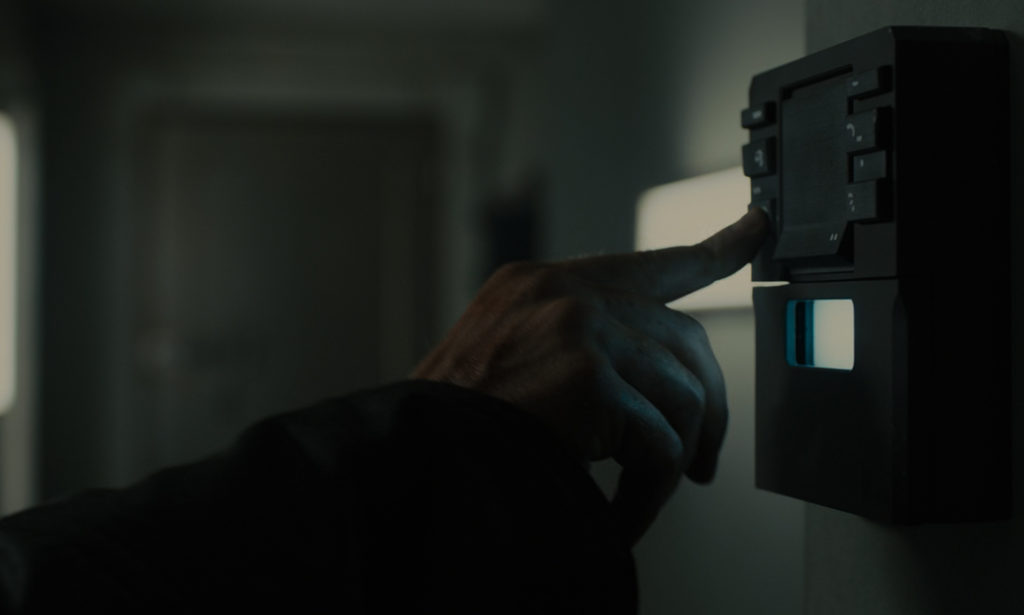



"99.9 percent detoxified water."
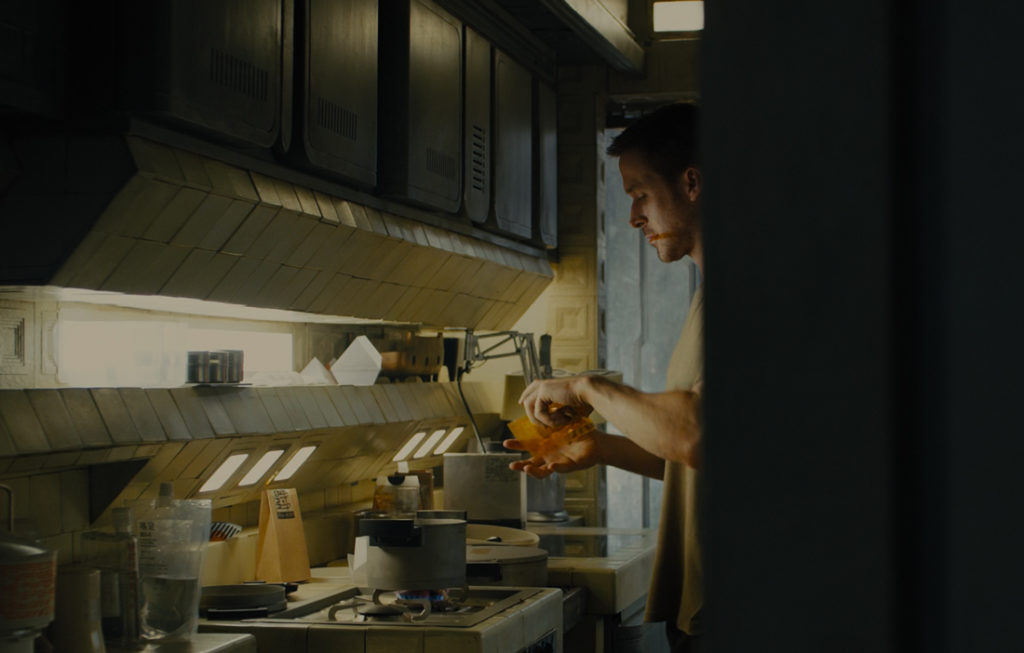



Joi: I'm trying a new recipe. I just need a bit more practice. K: Don't fuss. Joi: I should have marinated it longer. I hope it isn't dry. Did you know this song was released in 1966 on Reprise Records? It was number one on the charts. It won't be much longer. Just putting on the finishing touches.
The movie fully illustrates this lesson, as K continues his pursuit ushered forth by uncontrollable interests, K stumbles upon the possibility that the very miracle that he is searching for is himself after visiting the orphanage that the miracle allegedly grew up in. He realized the memories he had, that he knows are implanted and fake, are actually real as he finds the wooden horse toy which he treasured as a child in real life in a location where he has only been for the very first time. In the inconclusive evidence of K’s search, it is indicated that in attempts to cover-up the whereabouts of the miracle, the parents scrambled the birth records alluding to the possibility that the miracle could be a girl or a boy; a boy in this case could mean the possibility for K to become a ‘real’ boy. To confirm this possibility K confronts the maker of memories/dreams, Dr. Ana Stelline (played by Carla Juri), even though K knows his memories/dreams are real, he has to hear it told to him; more importantly he wants to know that these memories and dreams are actually his ‘own’:



K: They say you're the best memory-maker there is. Ana: Well, then, they're kind. I love birthday parties. K: You work for Wallace? Ana: Subcontract. I'm one of his suppliers. He offered to buy me out, but I take my freedom where I can find it.
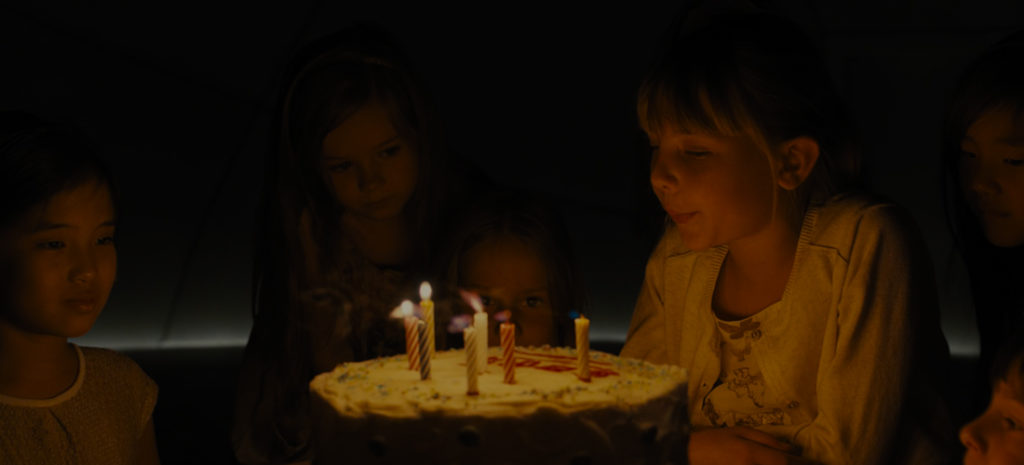
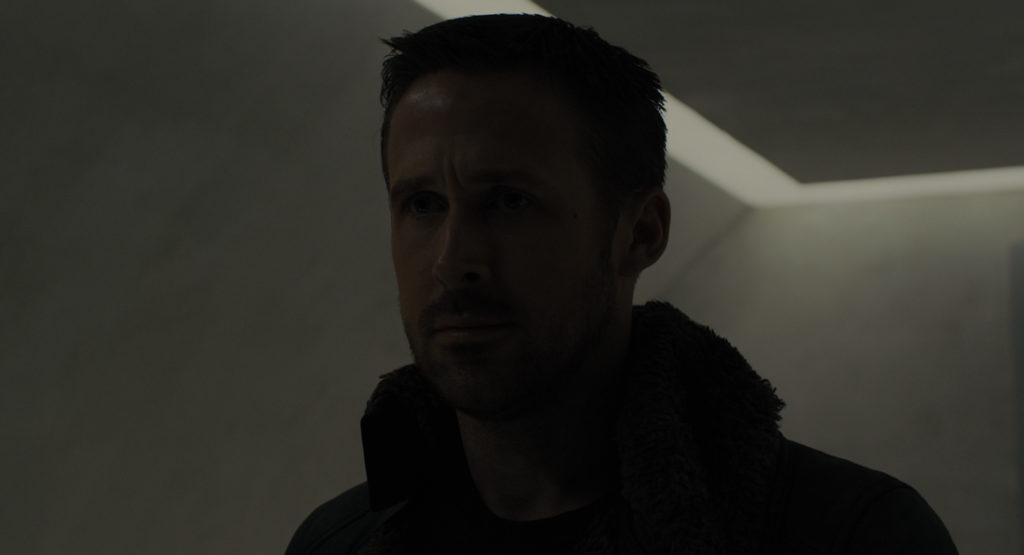
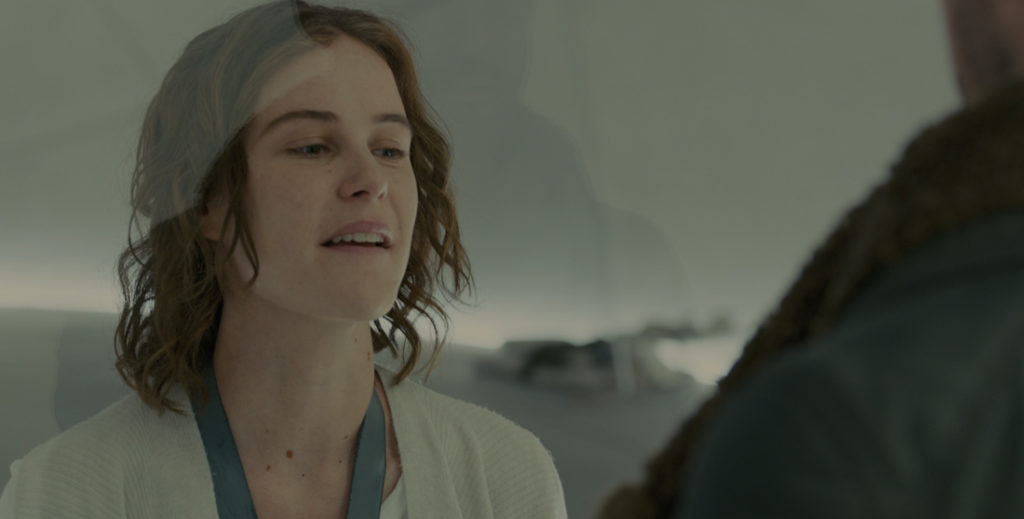



Ana: They all think it's about more detail. But that's not how memory works. We recall with our feelings. Anything real should be a mess. I can show you. Sit. Now, think about the memory you want me to see. Not even that hard. Just picture it. Let it play.
With the mother of the miracle dead, the only other lead is the father who turns out to be the original Bladerunner (from the first movie), Rick Deckard (played, epic as always, by Harrison Ford) as K seeks Deckard out in the derelict wasteland where he hides, a place that resembles a future version of Las Vegas that was hit with a dirty bomb of sorts. In the violent confusion of K’s initial encounter with Deckard, K learns that in Deckard’s attempt to protect Rachel, the mother (played by Sean Young in the original movie), he never actually met his own child. In order to guard them, Deckard banished himself into obscurity and wiped all traces of both their whereabouts; Deckard knows nothing of the miracle other than the fact that it exists and out of love—sacrifices were made by everyone so the child can live. In K’s empty plea, the situation comes to an explosive climax as Luv under the orders of Wallace Corp. abducts Deckard for questioning. It turns out, even though they stole the remains of Rachel’s body, it was not enough for their scientist to find the key to replicant reproduction (immaculate conception/miracle of life); they hope through Deckard they can find the miracle/child itself and unlock the scientific mystery that has alluded them through its dissection. In their confrontation and failed escape, K was left for dead, and Joi, whom has been shadowing K and has been providing the audience a continued scope of K’s personal thoughts/feelings, dies/gets destroyed in front of K, leaving him with nothing but only the whispers of her lingering love.





"It's quarter to three" "there's no one in the place" "except you and me..." "So, set 'em up, Joe" " I got a little story" "you'otta know..."



"We're drinkin', my friend" "to the end" " of a brief episode" "Make it one for my baby..." "and one more for the road..."
















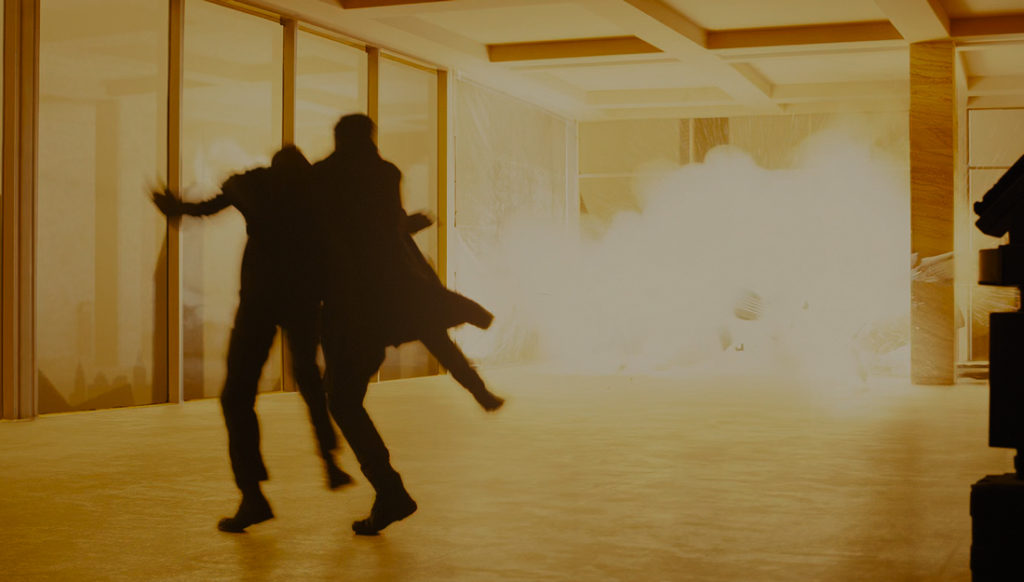





















Joi: I love...
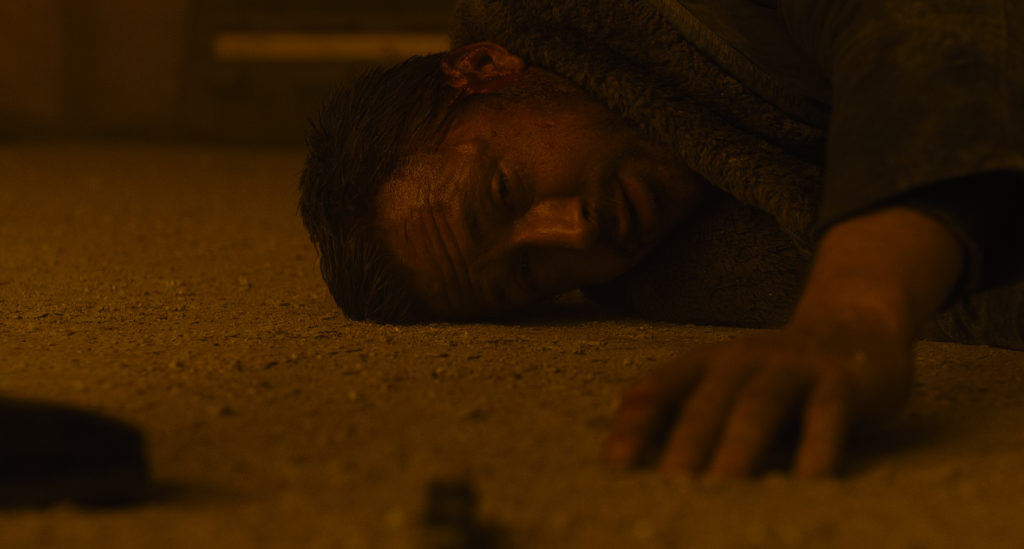
As sad as this scene was, it marked the moment where K is truly alone with himself both externally and internally. There is a rapture within his internal world in which K is forced to process himself in reality in ‘real-time’. Joi represents how K experiences emotional reality of the external world for one of vacuity, one assumes that this way of thinking only exists for a replicant/something artificial/unreal, but as explained previously, that vacuity is the human/real experience itself and because of this Joi shows the audience how they themselves experience/feel their own external reality on a daily basis fully articulated on screen as we, the audience, project shadows of our own identities to witness our own daily experiences as explained by Watts:
There are, then, two ways of understanding an experience. The first is to compare it with the memories of other experiences, and so to name and define it. This is to interpret it in accordance with the dead and the past. The second is to be aware of it as it is, as when, in the intensity of joy, we forget past and future, let the present be all, and thus do not even stop to think, “I am happy.”
Both ways of understanding have their uses. But they correspond to the difference between knowing a thing by words and knowing it immediately. A menu is very useful, but it is no substitute for the dinner. A guidebook is an admirable tool, but it is hardly to be compared with the country it describes.
The point, then, is that when we try to understand the present by comparing it with memories, we do not understand it as deeply as when we are aware of it without comparison. This, however, is usually the way in which we approach unpleasant experiences. Instead of being aware of them as they are, we try to deal with without comparison. This, however, is usually the way in which we approach unpleasant experiences. Instead of being aware of them as they are, we try to deal with them in terms of the past. The frightened or lonely person begins at once to think, “I’m afraid,” or, “I’m so lonely.”
This is, of course, an attempt to avoid the experience. We don’t want to be aware of this present. But as we cannot get out of the present, our only escape is into memories. Here we feel on safe ground, for the past is the fixed and the known—but also, of course, the dead. Thus to try to get out of, say, fear we endeavor at once to be separate from it and to “fix” it by interpreting it in terms of memory, in terms of what is already fixed and known. In other words, we try to adapt ourselves to the mysterious present by comparing it with the (remembered) past, by naming and “identifying” it.
This would be all very well if you were trying to get away from something from which you can get away. It is a useful process for knowing when to come in out of the rain. But it does not tell you how to live with things from which you cannot get away, which are already part of yourself. Your body does not eliminate poisons by knowing their names. To try to control fear or depression or boredom by calling them names is to resort to superstition of trust in curses and invocations.
It is so easy to see why this does not work. Obviously, we try to know, name, and define fear in order to make it “objective,” that is, separate from “I.” But why are we trying to be separate from fear? Because we are afraid. In other words, fear is trying to separate itself from fear, as if one could fight fire with fire.
And this is not all. The more we accustom ourselves to understanding the present in terms of memory, the unknown by the known, the living by the dead, the more desiccated and embalmed, the more joyless and frustrated life becomes. So protected from life, man becomes a sort of mollusc encrusted in a hard shell of “tradition,” so that when at last reality breaks through, as it must, the tide of pent-up fear runs wild.
If, on the other hand, you are aware of fear, you realize that, because this feeling is now yourself, escape is impossible. You see that calling it “fear” tells you little or nothing about it, for the comparison and the naming is based, not on past experience, but on memory. You have then no choice but to be aware of it with your whole being as an entirely new experience. Indeed, every experience is in this sense new, and at every moment of our lives we are in the midst of the new and the unknown. At this point you receive the experience without resisting it or naming it, and the whole sense of conflict between “I” and the present reality vanishes.
For most of us this conflict is ever gnawing within us because our lives are one long effort to resist the unknown, the real present in which we live, which is the unknown in the midst of coming into being. Living thus, we never really learn to live with it. At every moment we are cautious, hesitant, and on the defensive. And all to no avail, for life thrusts us into the unknown willy-nilly, and resistance is as futile and exasperating as trying to swim against a roaring torrent.
The art of living in this “predicament” is neither careless drifting on the one hand nor fearful clinging to the past and the known on the other. It consists in being completely sensitive to each moment, in regarding it as utterly new and unique, in having the mind open and wholly receptive.This is not a philosophical theory but an experiment. One has to make the experiment to understand that it brings into play altogether new powers of adaptation to life, of literally absorbing pain and insecurity. It is as hard to describe how this absorption works as to explain the beating of one’s heart or the formation of genes. The “open” mind does this as most of us breathe: without being able to explain it at all. The principle of the thing is clearly something like judo, the gentle (ju) way (do) of mastering an opposing force by giving in to it.
Don’t misinterpret what I am trying to point at. The romantic relationship between Joi and K is true transcendental love. The thing I am trying to draw your attention to is that the character K without Joi, a projected self-witness, is the only moment in the film does the character K truly ‘feel’ and it is precisely at that moment K is fully human, a being living in the infinite moments of the present. Tahata is the true definition of ‘being present’ that every faux or cliched practice espouses but on a much more straightforward and meaningful level. The union within the self in which we no longer project a self-witness, either as a self defense mechanism or simply because one has not noticed it or realized another way of experiencing reality; it is here where Dharma and praxis starts:
Even in our most apparently self-conscious moments, the “self” of which we are conscious is always some particular feeling or sensation—of muscular tensions, of warmth or cold, of pain or irritation, of breath or of pulsing blood. There is never a sensation of what senses sensations, just as there is no meaning or possibility in the notion of smelling one’s nose or kissing one’s own lips.
In times of happiness and pleasure, we are usually ready enough to be aware of the moment, and to let the experience be all. In such moments we “forget ourselves,” and the mind makes no attempt to divide itself from itself, to be separate from experience. But with the arrival of pain, whether physical or emotional, whether actual or anticipated, the split begins and the circle goes round and round.
As soon as it becomes clear that “I” cannot possibly escape from the reality of the present, since “I” is nothing other than what I know now, this inner turmoil must stop. No possibility remains but to be aware of pain, fear, boredom, or grief in the same complete way that one is aware of pleasure. The human organism has the most wonderful powers of adaptation to both physical and psychological pain. But these can only come into full play when the pain is not being constantly restimulated by this inner effort to get away from it, to separate the “I” from the feeling. The effort creates a state of tension in which the pain thrives. But when the tension ceases, mind and body begin to absorb the pain as water reacts to a blow or cut.
This weight is likewise a function of the mind, and appears in the much-misunderstood phenomenon of laziness. Significantly enough, nervous and frustrated people are always busy, even in being idle, such idleness being the “laziness” of fear, not of rest. But the mind-body is a system which conserves and accumulates energy. While doing this it is properly lazy. When the energy is stored, it is just as happy to move, and yet to move skillfully—along the line of least resistance. Thus it is not only necessity, but also laziness, which is the mother of invention. One may observe the unhurried, “heavy” movements of a skillful laborer at some hard task, and even in going against gravity the good mountaineer uses gravity, taking slow, heavy strides. He seems to tack up the slope, like a sailboat against the wind.
In the light of these principles, how does the mind absorb suffering? It discovers that resistance and escape—the “I” process—is a false move. The pain is inescapable, and resistance as a defense only makes it worse; the whole system is jarred by the shock. Seeing the impossibility of this course, it must act according to its nature—remain stable and absorb.
To remain stable is to refrain from trying to separate yourself from a pain because you know that you cannot. Running away from fear is fear, fighting pain is pain, trying to be brave is being scared. If the mind is in pain, the mind is pain. The thinker has no other form than his thought. There is no escape. But so long as you are not aware of the inseparability of thinker and thought, you will try to escape.
From this follows, quite naturally, absorption. It is no effort; the mind does it by itself. Seeing that there is no escape from the pain, the mind yields to it, absorbs it, and becomes conscious of just pain without any “I” feeling it or resisting it. It experiences pain in the same complete, unselfconscious way in which it experiences pleasure. Pain is the nature of this present moment, and I can only live in this moment.
Sometimes, when resistance ceases, the pain simply goes away or dwindles to an easily tolerable ache. At other times it remains, but the absence of any resistance brings about a way of feeling pain so unfamiliar as to be hard to describe. The pain is no longer problematic. I feel it, but there is no urge to get rid of it, for I have discovered that pain and the effort to be separate from it are the same thing. Wanting to get out of pain is the pain; it is not the “reaction” of an “I” distinct from the pain. When you discover this, the desire to escape “merges” into the pain itself and vanishes.
In the ensuing scenes that lead up to the movies climax and ending, the audience is given another example of on-screen enlightenment. After the tragic encounter that destroys Joi, K does not die and finally awakens to encounter with the aforementioned third interested party, the leader of the replicant resistance Freysa (played by Hiam Abbass), whom Mariette works for, where Freysa provides K with all the missing information in his search. Freysa saved K in order to convince him to join them in the resistance against Wallace Corp. and general society as a whole. Freysa, witnessed the miracle birth herself (notice here she only has one eye and from the audience’s perspective it is the right or Freysa’s left; the all seeing eye in the beginning is in the position of the left, the place where she can’t see) and the child was a girl. K is just another nameless tool like the rest of the replicant’s, but she suggests that in aiding them, it will provide him an opportunity to be, “more human than humans” if/when their revolution succeeds, since now they are no longer slaves but masters of their own destinies with the miracle of reproduction (they hold the miracle of life/the key to immortality). It is at this interlude that the audience witnesses the most pivotal moment of this film and also the moment of K’s enlightenment and full awakening as a human being.



JOI: Hello, handsome.


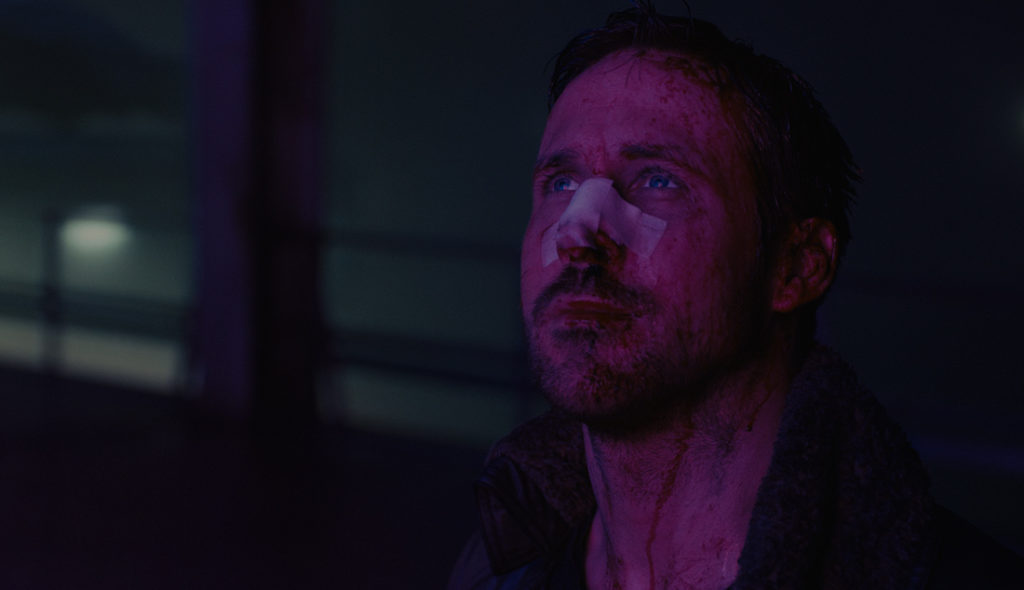

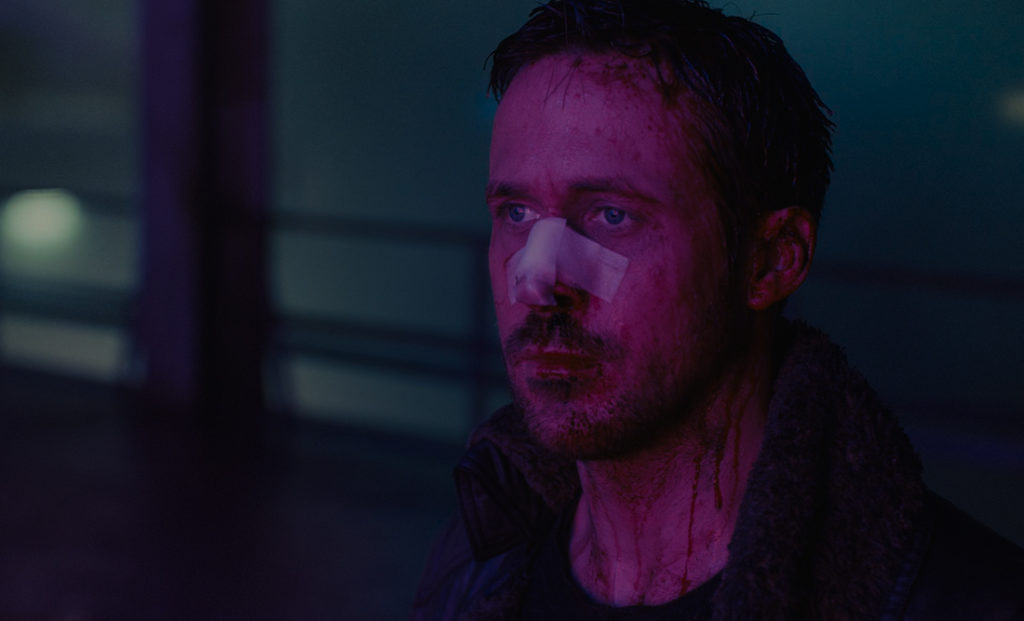
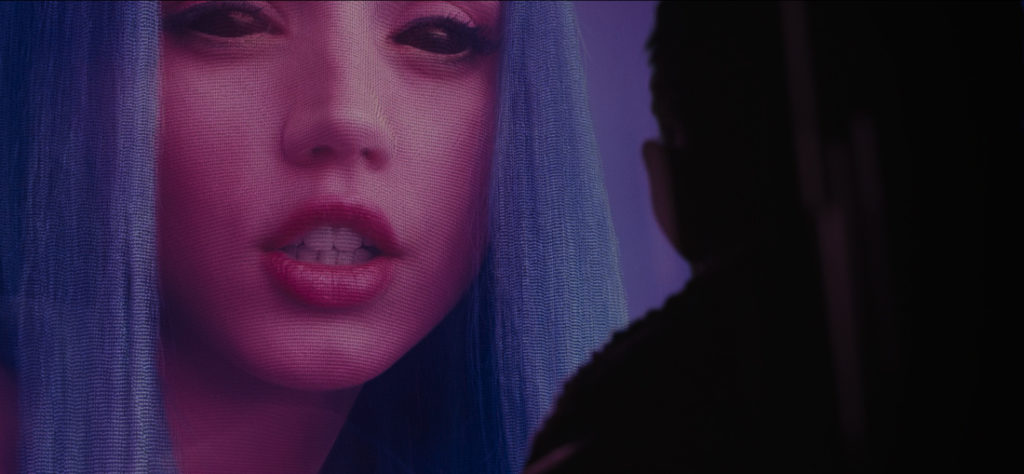
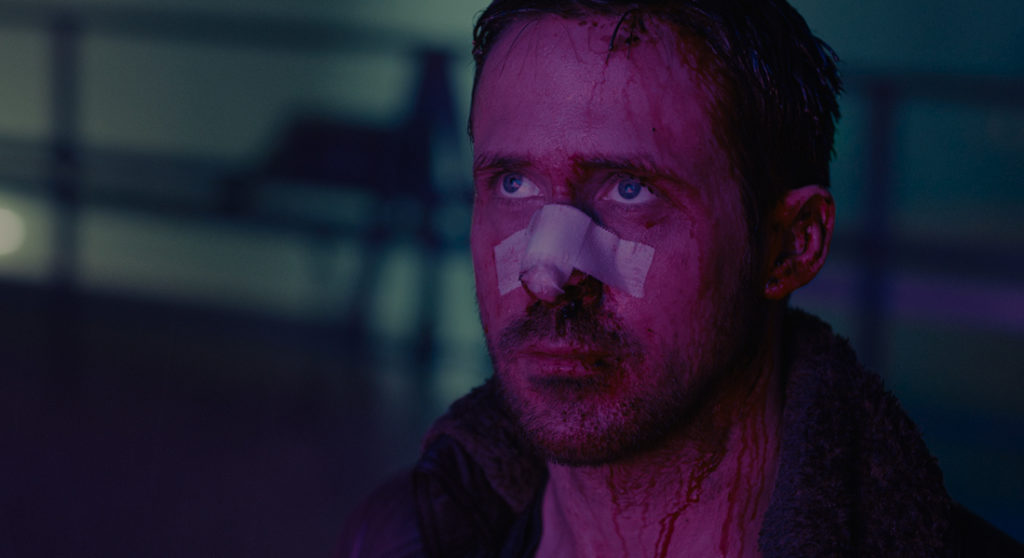
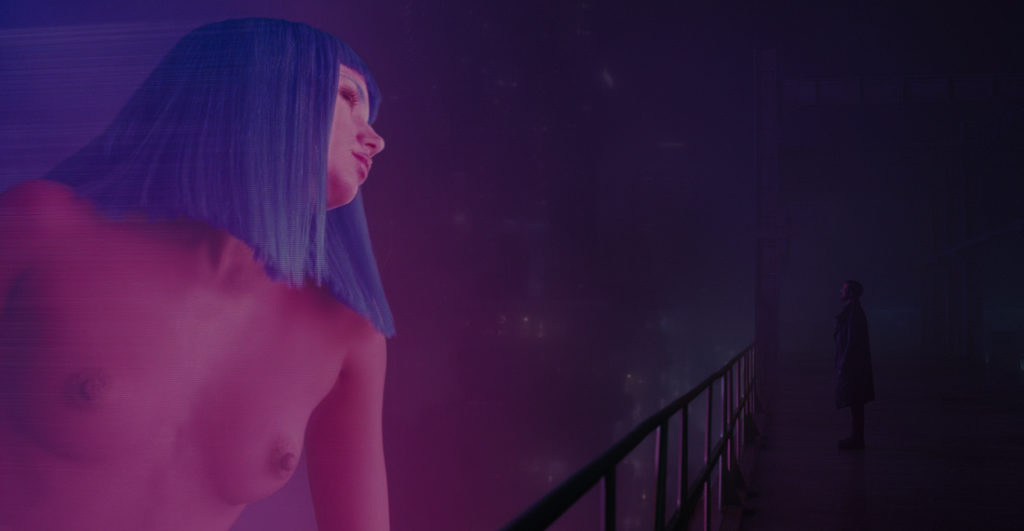
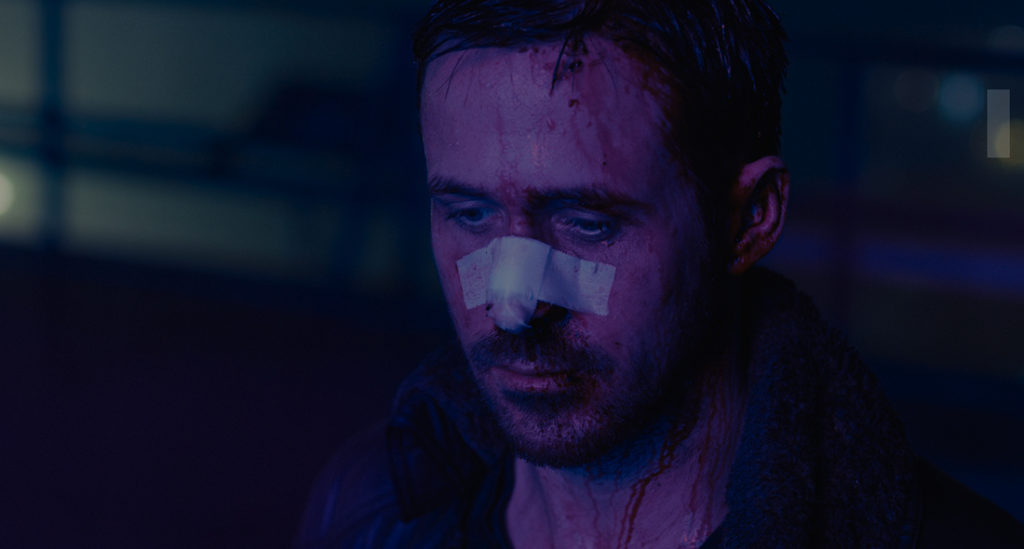
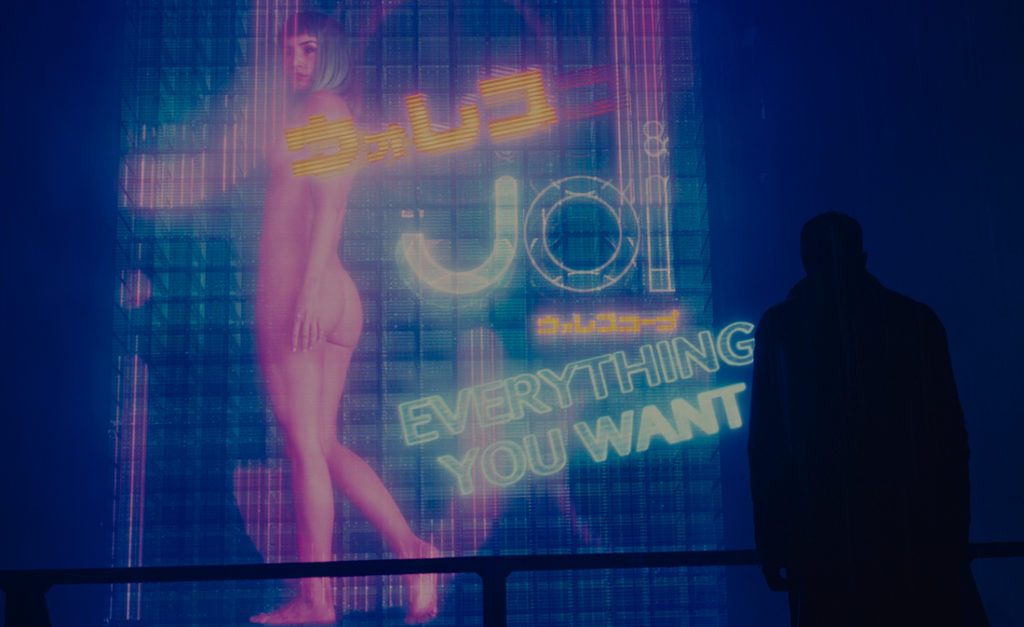



Dying for the right cause is the most human thing we can do. Because you've never seen a miracle.
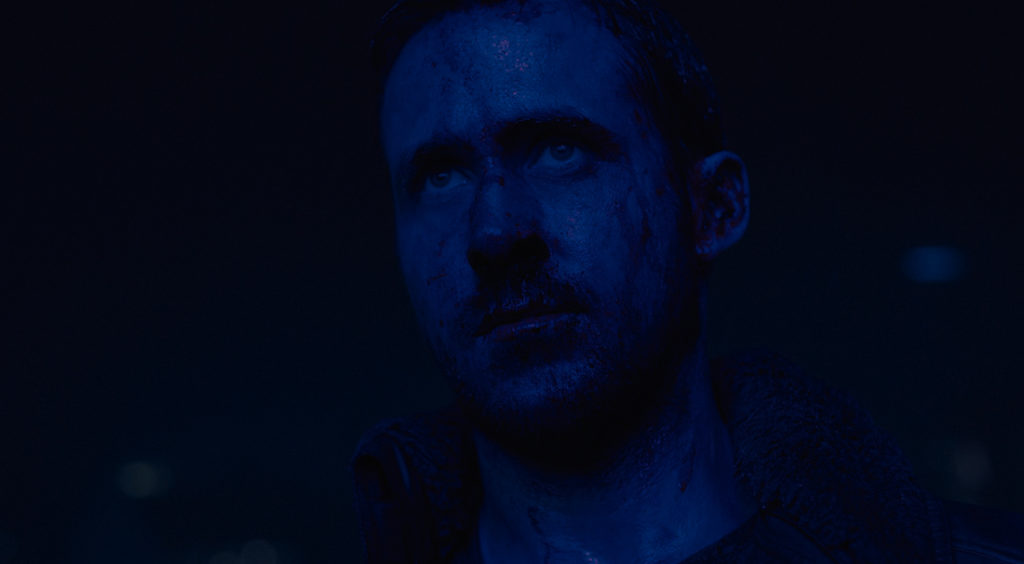
I will repeat again, it is one thing to be told the truth and another thing entirely to truly know it in one’s bones. The moment of enlightenment experienced and described by many spiritual practices mentioned at the beginning of this essay, in the self-realization of the simulation of our reality and that the void at the center of human consciousness is God, is portrayed to the audience in the pivotal scene in which K is confronted alone by the very aspect of his internal loss of a supposed self-identity, now projected back to him as a large multi-storey version of Joi. K realizes he is just another Joe, or more precisely we are all Joe as well. Be it human or replicant, we are all just another Joe, or in the first example, we are all Morty and we are all grandsons. Only at this moment does K realizes the main obstacle preventing him to be human was himself, he like any other person/being, they are just any other Joe, they/we are all the same; unique irreplaceable yet nameless and identical identities of the self. This absolute recoil is to realize the soul one searches once united with one self doesn’t exist, all there is, is a void, an emptiness leading one directly to God itself. A knowledge that can only be experienced when one no longer clings to their own identity or attempts to separate experience from the self: the self is only experience; existence is only in the infinite moment of the present. K’s only witness of his own identity is his immediate experience of the present reality; the hurt, the loss, the anger, his real feelings, all of that is the fundamental human experience that he was searching for that was always already there. To be human is to simply BE human, to be enlightened is simply to BE enlightened. K now without any artifice left to drop, no barrier of separation from his internal world and his external reality, fully experiences life at its full intensity and makes an authentic spontaneous decision for no one but himself; to reunite Deckard with his daughter no matter the cost. An act of selflessness from one that truly has no self is simply a spontaneous act; when one has no self, then all their spontaneous acts are genuine and selfless, the inverse is also true where regardless of intension all acts from one with a self can never be truly selfless. Tahata spontaneity is dharmic praxis, and I would argue that is the only path of non-resistance for esoteric pursuits as illuminated by Watts through Zen:
This is allowing the mind to act on its own.
But reflection is also action, and Yün-men might also have said, “In acting, just act. In thinking, just think. Above all, don’t wobble.” In other words, if one is going to reflect, just reflect–but do not reflect about reflecting. Yet Zen would agree that reflection about reflection is also action–provided that in doing it we do just that, and do not tend to drift off into the infinite regression of trying always to stand above or outside the level upon which we are acting. Thus Zen is also a liberation from the dualism of thought and action, for it thinks as it acts–with the same quality of abandon, commitment, or faith. The attitude of wu-hsin is by no means an anti-intellectualist exclusion of thinking. Wu-hsin is action on any level whatsoever, physical or psychic, without trying at the same moment to observe and check the action from outside. This attempt to act and think about the action simultaneously is precisely the identification of the mind with its idea of itself. It involves the same contradiction as the statement which states something about itself–“This statement is false.”
The same is true of the relationship between feeling and action. For feeling blocks action, and blocks itself as a form of action, when it gets caught in this same tendency to observe or feel itself indefinitely–as when, in the midst of enjoying myself, I examine myself to see if I am getting the utmost out of the occasion. Not content with tasting the food, I am also trying to taste my tongue. Not content with feeling happy, I want to feel myself feeling happy–so as to be sure not to miss anything.
Whether trusting our memories or trusting the mind to act on its own, it comes to the same thing: ultimately we must act and think, live and die, from a source beyond all “our” knowledge and control. But this source is ourselves, and when we see that, it no longer stands over against us as a threatening object. No amount of care and hesitancy, no amount of introspection and searching of our motives, can make any ultimate difference to the fact that the mind is
Like an eye that sees, but cannot see itself.
In the end, the only alternative to a shuddering paralysis is to leap into action regardless of the consequences. Action in this spirit may be right or wrong with respect to conventional standards. But our decisions upon the conventional level must be supported by the conviction that whatever we do, and whatever “happens” to us, is ultimately “right.” In other words, we must enter into it without “second thought,” without the arrière-pensée of regret, hesitancy, doubt, or self-recrimination. Thus when Yün-men was asked, “What is the Tao?” he answered simply, “Walk on! (ch’ü f).”
But to act “without second thought,” without double-mindedness, is by no means a mere precept for our imitation. For we cannot realize this kind of action until it is clear beyond any shadow of doubt that it is actually impossible to do anything else. In the words of Huang-po:
Men are afraid to forget their own minds, fearing to fall through the void with nothing on to which they can cling. They do not know that the void is not really the void but the real realm of the Dharma.… It cannot be looked for or sought, comprehended by wisdom or knowledge, explained in words, contacted materially (i.e., objectively) or reached by meritorious achievement.
Now this impossibility of “grasping the mind with the mind” is, when realized, the non-action (wu-wei), the “sitting quietly, doing nothing” whereby “spring comes, and the grass grows by itself.” There is no necessity for the mind to try to let go of itself, or to try not to try. This introduces further artificialities. Yet, as a matter of psychological strategy, there is no need for trying to avoid artificialities. In the doctrine of the Japanese master Bankei (1622–1693) the mind which cannot grasp itself is called the “Unborn” (fusho g), the mind which does not arise or appear in the realm of symbolic knowledge.
A layman asked, “I appreciate very much your instruction about the Unborn, but by force of habit second thoughts [nien] keep tending to arise, and being confused by them it is difficult to be in perfect accord with the Unborn. How am I to trust in it entirely?”
Bankei said, “If you make an attempt to stop the second thoughts which arise, then the mind which does the stopping and the mind which is stopped become divided, and there is no occasion for peace of mind. So it is best for you simply to believe that originally there is no (possibility of control by) second thoughts. Yet because of karmic affinity, through what you see and what you hear these thoughts arise and vanish temporarily, but are without substance.”
“Brushing off thoughts which arise is just like washing off blood with blood. We remain impure because of being washed with blood, even when the blood that was first there has gone–and if we continue in this way the impurity never departs. This is from ignorance of the mind’s unborn, unvanishing, and unconfused nature. If we take second thought for an effective reality, we keep going on and on around the wheel of birth-and-death. You should realize that such thought is just a temporary mental construction, and not try to hold or to reject it. Let it alone just as it occurs and just as it ceases. It is like an image reflected in a mirror. The mirror is clear and reflects anything which comes before it, and yet no image sticks in the mirror. The Buddha mind (i.e., the real, unborn mind) is ten thousand times more clear than a mirror, and more inexpressibly marvelous. In its light all such thoughts vanish without trace. If you put your faith in this way of understanding, however strongly such thoughts may arise, they do no harm.”
This is also the doctrine of Huang-po, who says again:
If it is held that there is something to be realized or attained apart from mind, and, thereupon, mind is used to seek it, (that implies) failure to understand that mind and the object of its search are one. Mind cannot be used to seek something from mind for, even after the passage of millions of kalpas, the day of success would never come.
One must not forget the social context of Zen. It is primarily a way of liberation for those who have mastered the disciplines of social convention, of the conditioning of the individual by the group. Zen is a medicine for the ill effects of this conditioning, for the mental paralysis and anxiety which come from excessive self-consciousness. It must be seen against the background of societies regulated by the principles of Confucianism, with their heavy stress on propriety and punctilious ritual. In Japan, too, it must be seen in relation to the rigid schooling required in the training of the samurai caste, and the emotional strain to which the samurai were exposed in times of constant warfare. As a medicine for these conditions, it does not seek to overthrow the conventions themselves, but, on the contrary, takes them for granted–as is easily seen in such manifestations of Zen as the cha-no-yu or “tea ceremony” of Japan. Therefore Zen might be a very dangerous medicine in a social context where convention is weak, or, at the other extreme, where there is a spirit of open revolt against convention ready to exploit Zen for destructive purposes.
With this in mind, we can observe the freedom and naturalness of Zen without loss of perspective. Social conditioning fosters the identification of the mind with a fixed idea of itself as the means of self-control, and as a result man thinks of himself as “I”–the ego. Thereupon the mental center of gravity shifts from the spontaneous or original mind to the ego image. Once this has happened, the very center of our psychic life is identified with the self-controlling mechanism. It then becomes almost impossible to see how “I” can let go of “myself,” for I am precisely my habitual effort to hold on to myself. I find myself totally incapable of any mental action which is not intentional, affected, and insincere. Therefore anything I do to give myself up, to let go, will be a disguised form of the habitual effort to hold on. I cannot be intentionally unintentional or purposely spontaneous. As soon as it becomes important for me to be spontaneous, the intention to be so is strengthened; I cannot get rid of it, and yet it is the one thing that stands in the way of its own fulfillment. It is as if someone had given me some medicine with the warning that it will not work if I think of a monkey while taking it.
While I am remembering to forget the monkey, I am in a “double-bind” situation where “to do” is “not to do,” and vice versa. “Yes” implies “no,” and “go” implies “stop.” At this point Zen comes to me and asks, “If you cannot help remembering the monkey, are you doing it on purpose?” In other words, do I have an intention for being intentional, a purpose for being purposive? Suddenly I realize that my very intending is spontaneous, or that my controlling self–the ego–arises from my uncontrolled or natural self. At this moment all the machinations of the ego come to nought; it is annihilated in its own trap. I see that it is actually impossible not to be spontaneous. For what I cannot help doing I am doing spontaneously, but if I am at the same time trying to control it, I interpret it as a compulsion. As a Zen master said, “Nothing is left to you at this moment but to have a good laugh.”
In this moment the whole quality of consciousness is changed, and I feel myself in a new world in which, however, it is obvious that I have always been living. As soon as I recognize that my voluntary and purposeful action happens spontaneously “by itself,” just like breathing, hearing, and feeling, I am no longer caught in the contradiction of trying to be spontaneous. There is no real contradiction, since “trying” is “spontaneity.” Seeing this, the compulsive, blocked, and “tied-up” feeling vanishes. It is just as if I had been absorbed in a tug-of-war between my two hands, and had forgotten that both were mine. No block to spontaneity remains when the trying is seen to be needless. As we saw, the discovery that both the voluntary and involuntary aspects of the mind are alike spontaneous makes an immediate end of the fixed dualism between the mind and the world, the knower and the known. The new world in which I find myself has an extraordinary transparency or freedom from barriers, making it seem that I have somehow become the empty space in which everything is happening.
Here, then, is the point of the oft-repeated assertion that “all beings are in nirvana from the very beginning,” that “all dualism is falsely imagined,” that “the ordinary mind is the Tao” and that there is therefore no meaning in trying to get into accord with it. In the words of the Cheng-tao Ke:
Like the empty sky it has no boundaries, Yet it is right in this place, ever profound and clear. When you seek to know it, you cannot see it. You cannot take hold of it, But you cannot lose it. In not being able to get it, you get it. When you are silent, it speaks; When you speak, it is silent. The great gate is wide open to bestow alms, And no crowd is blocking the way.
After the climax of the ensuing violence in saving Deckard, he questions why K as gone to such lengths to reunite a stranger with his daughter. Here the audience witnesses Ryan Gosling as the character K truly smiling for the very first time as K responds in silence. This spontaneous authentic act from the heart grants K’s wish to be human as he stands on death’s door as the price of his new found mortality. Here K does not resist, this is what he has always wanted. The pure white snow scene shows the inner tranquility that K experiences to the audience as K’s every moment of his new mortal eyes explode in wonder of every instant to every sensation.














K surrenders to the infinite present as he lays back to knock on heaven’s door, the gate of oblivion and absolute endings is one and the same gate of eternity and infinity; this is the opportunity offered by the unwinding of his mortal coil. Here we the audience is given a glimpse of that wonder and beauty of this immortally as K steps through the gate as he stares up at the endless pure white sky. The audience is then given a glimpse into this eternal moment through the cycle of death and life as the movie ends with the final scenes of a father meeting his daughter for the very first time, as if one emerges from a dream.



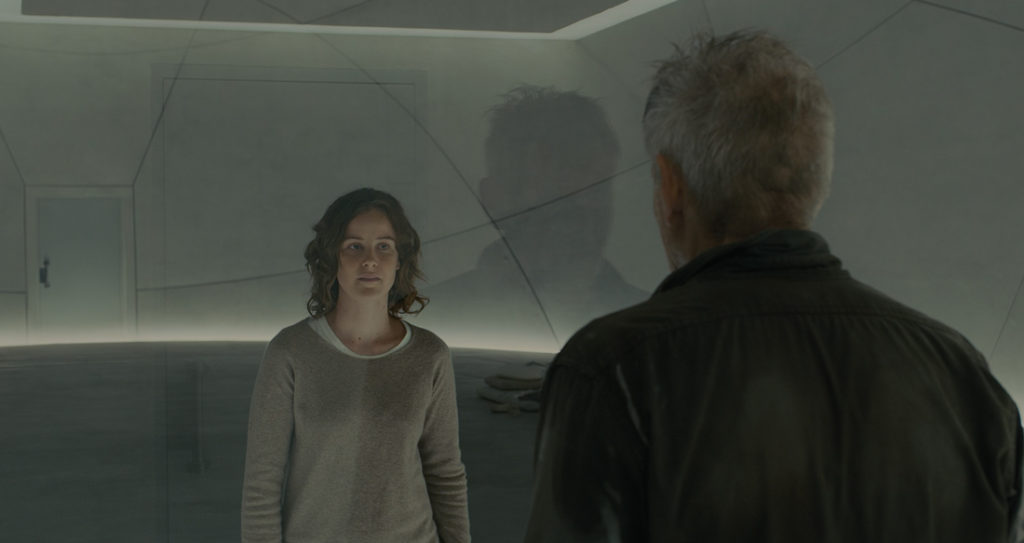
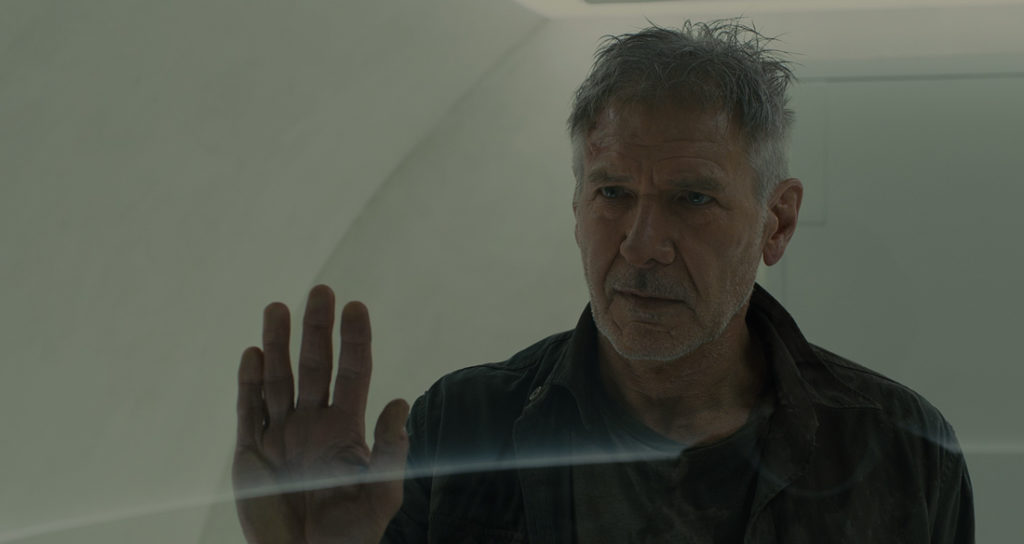
Here the ending, the final realization made by K, is best captured by Watts:
The misunderstanding of religious ideas is vividly illustrated in what men have made of the doctrine of immortality, heaven, and hell. But now it should be clear that eternal life is the realization that the present is the only reality, and that past and future can be distinguished from it in a conventional sense alone. The moment is the “door of heaven,” the “straight and narrow way that leadeth unto life,” because there is no room in it for the separate “I.” In this experience there is no one experiencing the experience. The “rich man” cannot get through this door because he carries too much baggage; he is clinging to the past and the future.
One might quote whole pages from the spiritual literature of all times and places to show that eternal life has been understood in this sense. The following from Eckhart will suffice:
The Now-moment in which God made the first man and the Now-moment in which the last man will disappear, and the Now-moment in which I am speaking are all one in God, in whom there is only one Now. Look! The person who lives in the light of God is conscious neither of time past nor of time to come but only of one eternity.… Therefore he gets nothing new out of future events, nor from chance, for he lives in the Now-moment that is, unfailingly, “in verdure newly clad.”
When you are dying and coming to life in each moment, would-be scientific predictions about what will happen after death are of little consequence. The whole glory of it is that we do not know. Ideas of survival and annihilation are alike based on the past, on memories of waking and sleeping, and, in their different ways, the notions of everlasting continuity and everlasting nothingness are without meaning.
It needs but slight imagination to realize that everlasting time is a monstrous nightmare, so that between heaven and hell as ordinarily understood there is little to choose. The desire to continue always can only seem attractive when one thinks of indefinite time rather than infinite time. It is one thing to have as much time as you want, but quite another to have time without end.
For there is no joy in continuity, in the perpetual. We desire it only because the present is empty. A person who is trying to eat money is always hungry. When someone says, “Time to stop now!” he is in a panic because he has had nothing to eat yet, and wants more and more time to go on eating money, ever hopeful of satisfaction around the corner. We do not really want continuity, but rather a present experience of total happiness. The thought of wanting such an experience to go on and on is the result of being self-conscious in the experience, and thus incompletely aware of it. So long as there is the feeling of an “I” having this experience, the moment is not all. Eternal life is realized when the last trace of difference between “I” and “now” has vanished—when there is just this “now” and nothing else.
By contrast, hell or “everlasting damnation” is not the everlastingness of time going on forever, but of the unbroken circle, the continuity and frustration of going round and round in pursuit of something which can never be attained. Hell is the fatuity, the everlasting impossibility, of self-love, self-consciousness, and self-possession. It is trying to see one’s own eyes, hear one’s own ears, and kiss one’s own lips.
To see, however, that life is complete in each moment—whole, undivided, and ever new—is to understand the sense of the doctrine that in eternal life God, the undefinable this, is all-in-all and is the Final Cause or End for which everything exists. Because the future is everlastingly unattainable, and, like the dangled carrot, always ahead of the donkey, the fulfillment of the divine purpose does not lie in the future. It is found in the present, not by an act of resignation to immovable fact, but in seeing that there is no one to resign.
For this is the meaning of that universal and ever-repeated religious principle that to know God, man must give up himself. It is as familiar as any platitude, and yet nothing has been harder to do, and nothing so totally misunderstood. How can a self, which is selfish, give itself up? Not, say the theologians, by its own power, but through the gift of divine grace, the power which enables man to achieve what is beyond his own strength. But is this grace given to all or to a chosen few, who, when they receive it, have no choice but to surrender themselves? Some say that it comes to all, but that there are those who accept its aid and those who refuse. Others say that it comes to a chosen elect, but still, for the most part, insist that the individual has the power to take it or leave it.
But this does not solve the problem at all. It replaces the problem of holding or surrendering the self by the problem of accepting or refusing divine grace, and the two problems are identical. The Christian religion contains its own hidden answer to the problem in the idea that man can only surrender himself “in Christ.” For “Christ” stands for the reality that there is no separate self to surrender. To give up “I” is a false problem. “Christ” is the realization that there is no separate “I.” “I do nothing of myself.… I and the Father are one.… Before Abraham was, I am.”
If there is any problem at all, it is to see that in this instant you have no “I” to surrender. You are completely free to do this at any moment, and nothing whatever is stopping you. This is our freedom. We are not, however, free to improve ourselves, to surrender ourselves, to lay ourselves open to grace, for all such split-mindedness is the denial and postponement of our freedom. It is trying to eat your mouth instead of bread.
Is it necessary to underline the vast difference between the realization that “I and the Father are one,” and the state of mind of the person who, as we say, “thinks he is God”? If, still thinking that there is an isolated “I,” you identify it with God, you become the insufferable ego-maniac who thinks himself successful in attaining the impossible, in dominating experience, and in pursuing all vicious circles to satisfactory conclusions.
I am the master of my fate; I am the captain of my soul!
When the snake swallows his tail he has a swelled head. It is quite another thing to see that you are your “fate,” and that there is no one either to master it or to be mastered, to rule or to surrender.
Must we also insist that this loss of “I” in God is not a mystic miasma in which the “values of personality” are obliterated? The “I” was not, is not, and never will be a part of human personality. There is nothing unique, or “different,” or interesting about it. On the contrary, the more human beings pursue it, the more uniform, uninteresting, and impersonal they become. The faster things move in circles, the sooner they become indistinguishable blurs. It is obvious that the only interesting people are interested people, and to be completely interested is to have forgotten about “I.”
We can see, then, that the basic principles of philosophy, religion, and metaphysics may be understood in two entirely different ways. They can be seen as symbols of the undivided mind, expressions of the truth that in each moment life and experience are a complete whole. “God” is not a definition of this state but an exclamation about it. Ordinarily, however, they are used as attempts to stand outside oneself and the universe to grasp them and to rule them. This process is circular, however complex and devious.
Because men have been circling for so many ages, the powers of technology have availed for little save to speed the process to a point of unbearable tension. Civilization is ready to fly apart by sheer centrifugal force. In such a predicament the self-conscious type of religion to which we have so long been accustomed is no cure, but part of the disease. If scientific thought has weakened its power we need have no regrets, for the “God” to which it could have brought us was not the unknown Reality which the name signifies, but only a projection of ourselves—a cosmic, discarnate “I” lording it over the universe.
The true splendor of science is not so much that it names and classifies, records and predicts, but that it observes and desires to know the facts, whatever they may turn out to be. However much it may confuse facts with conventions, and reality with arbitrary divisions, in this openness and sincerity of mind it bears some resemblance to religion, understood in its other and deeper sense. The greater the scientist, the more he is impressed with his ignorance of reality, and the more he realizes that his laws and labels, descriptions and definitions, are the products of his own thought. They help him to use the world for purposes of his own devising rather than to understand and explain it.
The more he analyzes the universe into infinitesimals, the more things he finds to classify, and the more he perceives the relativity of all classification. What he does not know seems to increase in geometric progression to what he knows. Steadily he approaches the point where what is unknown is not a mere blank space in a web of words but a window in the mind, a window whose name is not ignorance but wonder.
The timid mind shuts this window with a bang, and is silent and thoughtless about what it does not know in order to chatter the more about what it thinks it knows. It fills up the uncharted spaces with mere repetition of what has already been explored. But the open mind knows that the most minutely explored territories have not really been known at all, but only marked and measured a thousand times over. And the fascinating mystery of what it is that we mark and measure must in the end “tease us out of thought” until the mind forgets to circle and to pursue its own processes, and becomes aware that to be at this moment is pure miracle.
In ways that differ but little, this is the last word of Western and Eastern wisdom alike. The Hindu Upanishads say:
He who thinks that God is not comprehended, by him God is comprehended; but he who thinks that God is comprehended knows him not. God is unknown to those who know him, and is known to those who do not know him at all.
Goethe says it in words which, to the modern mind, may be plainer:
The highest to which man can attain is wonder; and if the prime phenomenon makes him wonder, let him be content; nothing higher can it give him, and nothing further should he seek for behind it; here is the limit.
Or there are the words of St. John of the Cross, one of the greatest seers of the Christian tradition:
One of the greatest favors bestowed on the soul transiently in this life is to enable it to see so distinctly and to feel so profoundly that it cannot comprehend God at all. These souls are herein somewhat like the saints in heaven, where they who know him most perfectly perceive most clearly that he is infinitely incomprehensible; for those who have the less clear vision do not perceive so clearly as do these others how greatly he transcends their vision.
In such wonder there is not hunger but fulfillment. Almost everyone has known it, but only in rare instants when the startling beauty or strangeness of a scene drew the mind away from its self-pursuit, and for a moment made it unable to find words for the feeling. We are, then, most fortunate to be living in a time when human knowledge has gone so far that it begins to be at a loss for words, not at the strange and marvelous alone, but at the most ordinary things. The dust on the shelves has become as much of a mystery as the remotest stars; we know enough of both to know that we know nothing. Eddington, the physicist, is nearest to the mystics, not in his airier flights of fancy, but when he says quite simply, “Something unknown is doing we don’t know what.”
In such a confession thought has moved full circle, and we are again as children. To those still feverishly intent upon explaining all things, upon securing the water of life firmly in paper and string, this confession says nothing and means nothing but defeat. To others, the fact that thought has completed a circle is a revelation of what man has been doing, not only in philosophy, religion, and speculative science, but also in psychology and morals, in everyday feeling and living. His mind has been in a whirl to be away from itself and to catch itself.
Ye suffer from yourselves, none else compels, None other holds you that ye live and die And whir upon the wheel, and hug and kiss its spokes of agony, Its tire of tears, its nave of nothingness.
Discovering this the mind becomes whole: the split between I and me, man and the world, the ideal and the real, comes to an end. Paranoia, the mind beside itself, becomes metanoia, the mind with itself and so free from itself. Free from clutching at themselves the hands can handle; free from looking after themselves the eyes can see; free from trying to understand itself thought can think. In such feeling, seeing, and thinking life requires no future to complete itself nor explanation to justify itself. In this moment it is finished.
“Did you know that transformation of consciousness is possible at any moment, that you can suddenly change the perception you have of yourself? People sometimes imagine that taking action means triumphing over the Other. What a mistake! If you wish to act in the world, you must explode that perception of the ego that has been imposed and embedded since childhood, and which refuses to change. Expand your boundaries endlessly and without cease." “Go into a trance. Let yourself be possessed by a more powerful mind than your own, an impersonal energy. It is not a question of losing consciousness but of allowing the original sacred madness, already within you, to speak. “Stop being your own witness, stop observing yourself, be an actor in the pure state, an entity in action. Your memory will cease to record facts, actions, uttered words. You will lose all notion of time. Until now you have been living on the isle of reason, neglecting the other living forces and other energies. The landscape is expanding. Become one with the ocean of the unconscious." “You will then know a state of superconsciousness in which there will be no missed action or accident. Space will no longer be a concept; you will become space. You will have no concept of time; you will become the phenomenon as it happens. In this state of extreme presence, every gesture and every action are perfect. You cannot fool yourself; there is no plan or intention. There is only pure action in the eternal present." … “Do not be afraid of freeing the instinct, no matter how primitive. Going beyond the rational does not mean denying the mental force: be open to the poetry of intuition, to flashes of telepathy, to voices that do not belong to you, to words that come to you from another dimension. Watch them join to the infinite extent of your feelings and to the inexhaustible creative force conferred upon you by sexual energy. No longer look at your body as a past concept but as the vibrating subjective reality of the present. You will see that your body stops heeding the commands of rational concepts and allows itself to be moved by forces belonging to other dimensions, by the Totality of reality. A caged animal moves like rational perception. The free movement of an animal in the forest is comparable to the trance. The animal in a cage must eat at assigned hours. For action to occur, the rational must be given words. The wild animal feeds itself and never has any illusions about its food. The actions of an individual in a trance are not motivated by what he has learned, but by what is.”
Epilogue “That art thou” (tat tvam asi):
With the general synopsis of the movie out of the way, I can finally throw down the gantlet and provide my interpretation of the all-seeing eye at the beginning of both movies to join the ranks amongst all those whom has tried (the back drop of endless blogs and reddit chains about the eyes), I claim mine holds the most substance, if not truth, then at least intrigue.

Both movies of Bladerunner new and old are brilliant in exploring the concept of impermanence especially in the context of human mortality. The first film plays with the troupe that the eyes are the windows to one’s soul to its full extent in which replicants in the film are shown to have a hollowed/mirrored light affect to the eyes when they look into the camera to physically represent their artificiality to the audience (the essence of their soullessness). In the first film, I would argue the opening eye belonged to the character Batty (played by Rutger Hauer), “I’ve seen things you people wouldn’t believe. Attack ships on fire off the shoulder of Orion. I watched C-beams glitter in the dark near the Tannhauser gate. All those moments will be lost in time… like tears in rain… Time to die.” The beginning eye shows the gaze of Batty as he returns to earth to meet his maker, the main driving force of the narrative of the movie; the reflection of the futuristic cityscape acts as analogy, that this eye also serves as something metaphysical, a witness to the ‘human’ narrative that the movie explores and foreshadows the death to come. Like in quantum mechanics, the existence of the universe requires a witness to ‘see/acknowledge’ it’s there, much like the movie itself requires an audience to receive the narrative itself. One simply has to notice how this gaze is repeated to understand its significance within the film. Water imagery is widely used in both films, in the original movie, it stands in for the impermanent nature of our physical world and represents death as captured by the ultimate death scene of Batty’s demise as he repeats the initial gaze and stares straight at the camera and confronts the audience. Everything in those eyes, all that he had bear witnessed to, “all those moments will be lost in time…like tears in the rain…”.
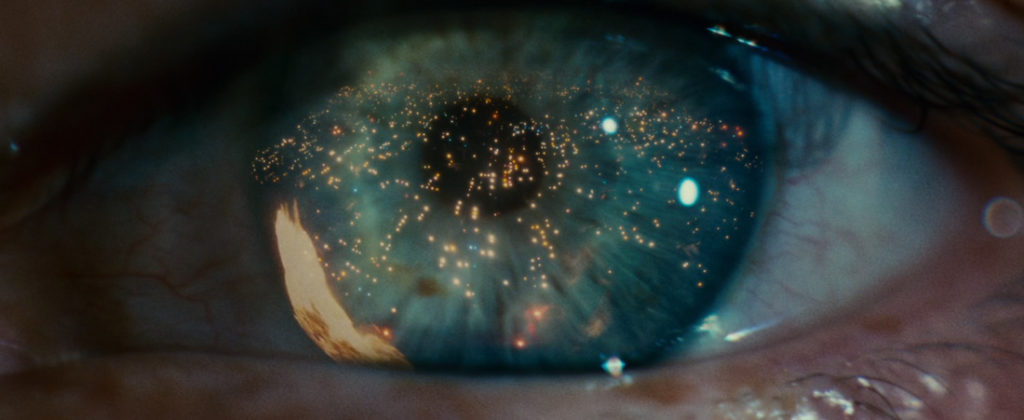
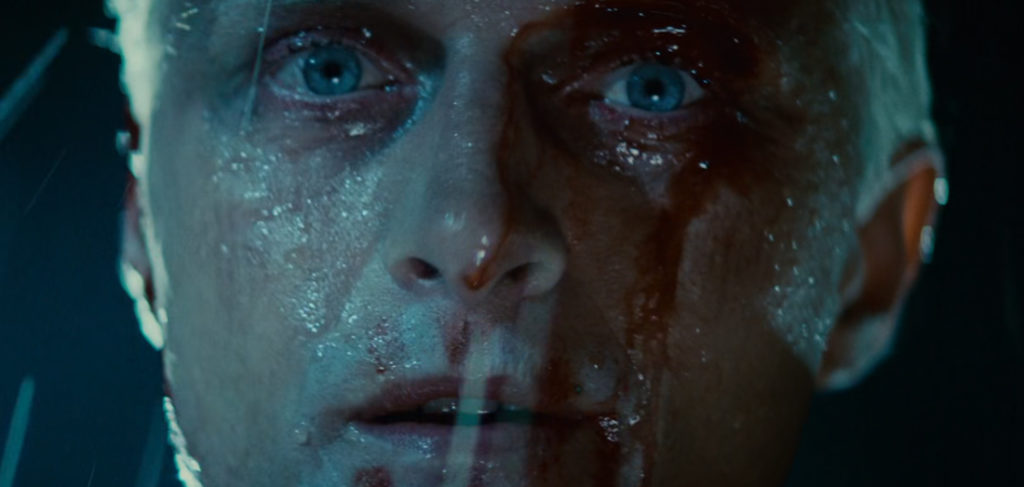
Notice here that both the beginning eye and the final gaze are not hollow or reflected, but are fully human/here. This shared gaze is to instill/share with the audience their own sense of mortality and all our brief moments of time here in the universe. As a final/ultimate gesture of Batty’s defiance, he kneels down and accepts/confronts his own death and finally finds his ‘ghost in the shell’; his gaze/his consciousness transitions his meaningless existence to purpose: as a witness to the brief and chaotic splendors of human time, as a soulless robot becomes fully human the moment it can accept its own mortality. The moment where materials transcend its own physicality is the moment it gives up its form; it is through Batty’s gaze/consciousnesses through mortality that gave him a soul to reach immortality; instead of living aimlessly as a hollow being, a future what will never be, when Batty died he was fully human, a true moment in the infinite precent. To quote Baudrillard, “Contrary to everything we ordinarily believe, nature first created immortal beings, and it was only by winning the battle for death that we became the living beings that we are. Blindly, we dream of defeating death and achieving immortality, whereas that is our most tragic destiny, a destiny inscribed in the previous life of our cells.” Much like the cliched saying: the price of freedom is often one’s life, the only means of being immortal is to give up one’s self and join into the everlasting cycle of death and birth and rebirth ad-infinity. This triumph over death through death into life carries over and becomes the premise of the second film. As opposed to the first film, as aforementioned the first eye foreshadows death, I argue the green all-seeing eye of the second film foreshadows life and belongs to Rachael, the green eye that that Deckard remembers.
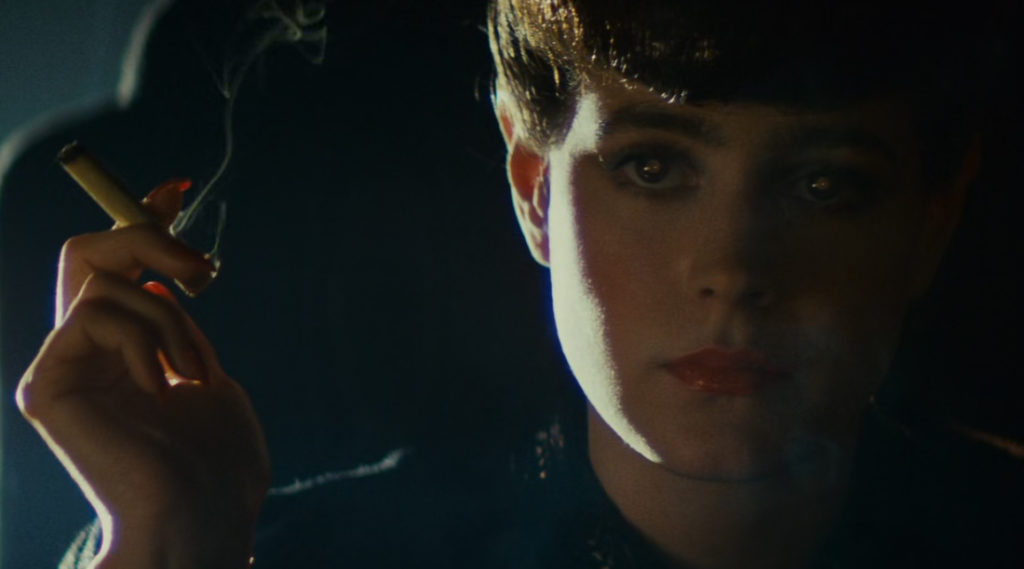
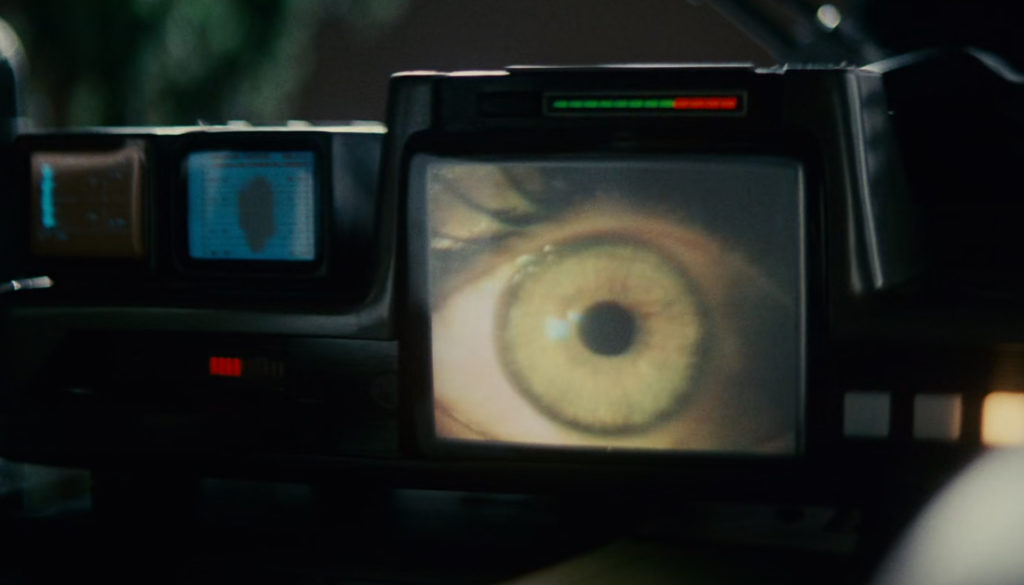
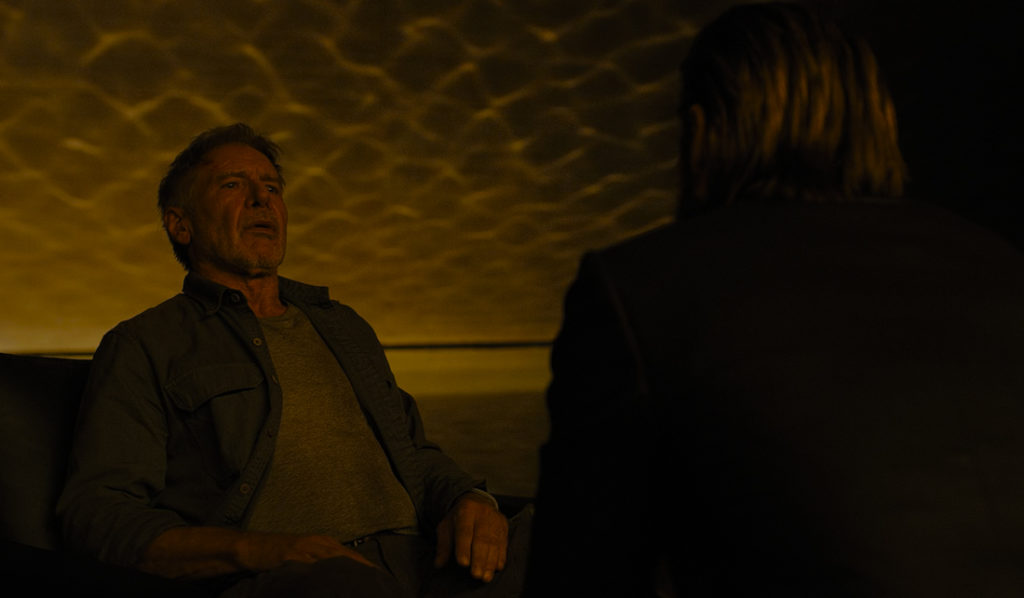




Wallace: Pain reminds you the joy you felt was real. More joy, then. Do not be afraid. An angel... made again. For you.

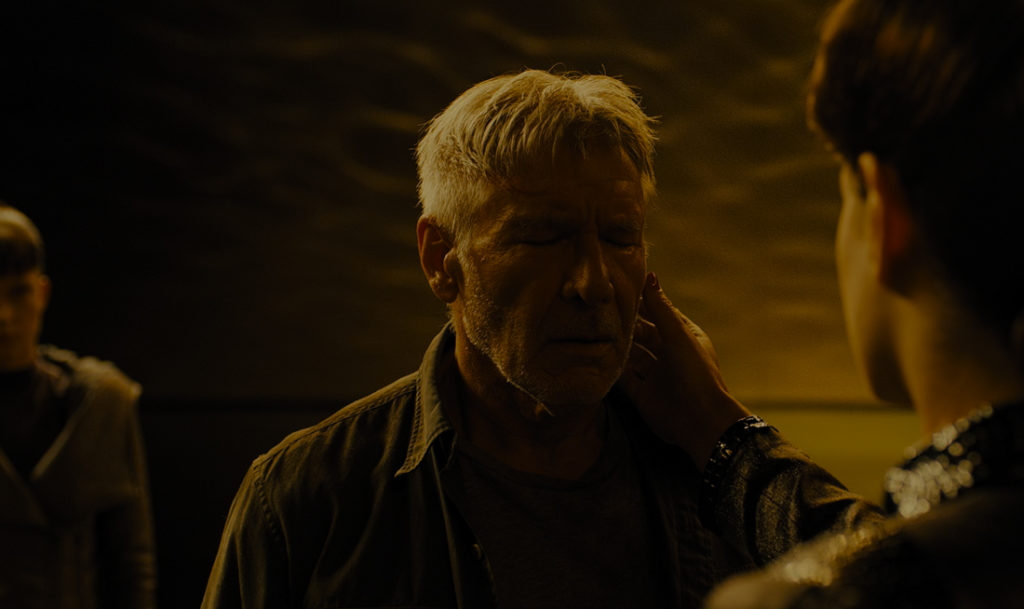
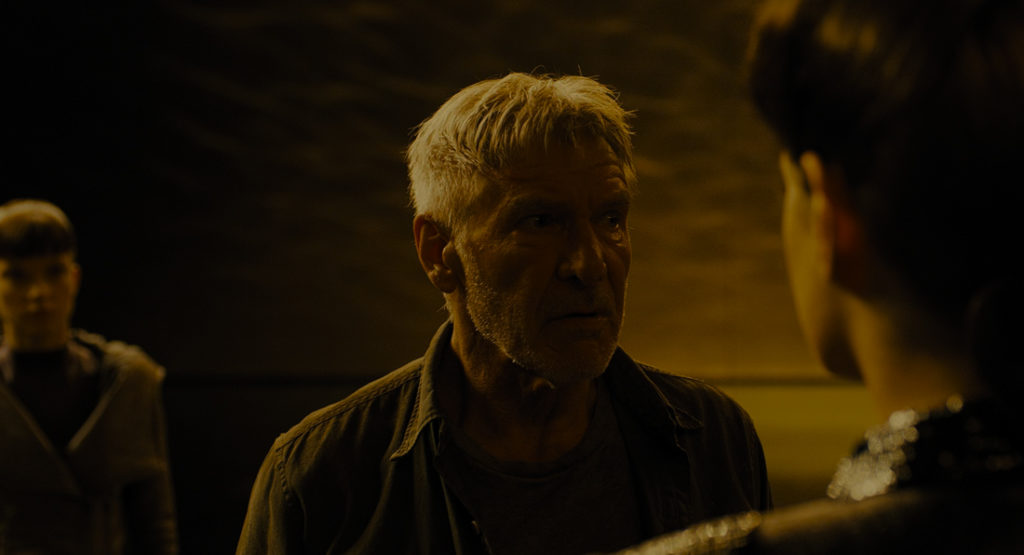





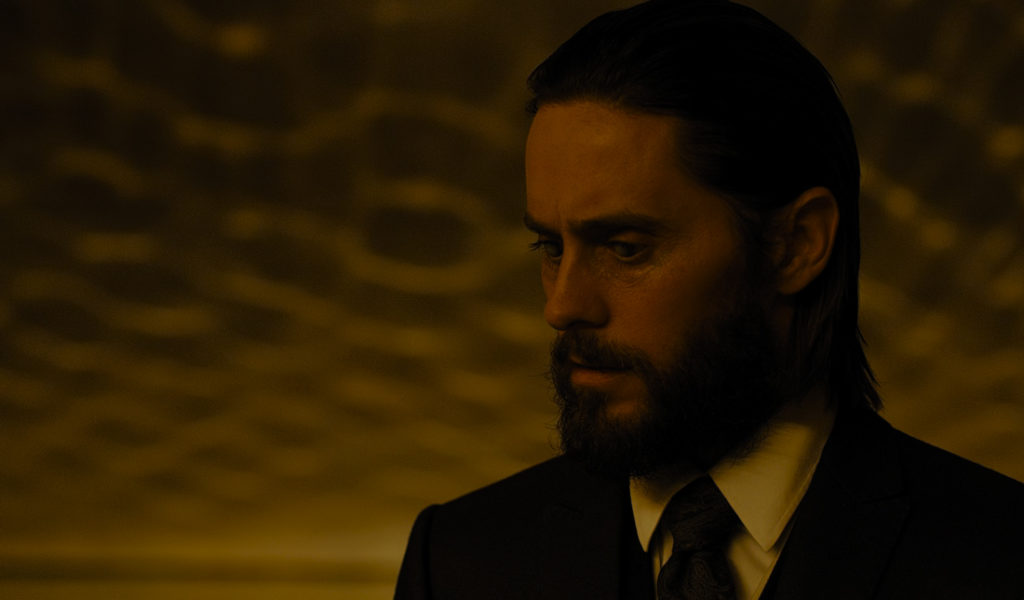
The missing character that was here throughout the movie and yet wasn’t as her presence lives on though both Ana Stelline and her dreams and the unwavering immortal memory of her. In essence she/Rachael gave ‘birth’ to this story that K wakes up to. Personally, I would like to suggest another more poignant interpretation: the eye was Mariette and not Mariette at the same time. To explain, I refer back to the film’s premise that Wallace Corporation could not find the key to replicant reproduction from Rachel’s remains or from Deckard himself. As cliched as it sounds, I claim the key of immorality is within the ‘fifth element’ (much like another sci-fi movie with Bruce Willis) which eludes them, it is ‘the thing’ beyond the materiality of the subjects; the key to replicant reproduction is ‘transcendental love’, what Deckard and Rachel felt for each other was an impossible love made real.
However brief Rachel’s life was, her genuine love for Deckard, and him to her, granted her immortality in death through life in their daughter Dr. Ana Stelline; a true triumph over death. Here I argue you see the same repetition in the second story with the love scene with Mariette as Joi and K. To quote Jodorowsky’s voice of Death in which it describes life conquering death through human desire: ” What joy! What immeasurable joy! My permanent destruction opens the way to constant creation. If there is no end, there can be no beginning. I am at the service of eternity, your eternity. If you devote yourself to transformation, you will become the master of the ephemeral moment, because you will live it in its infinite intensity. It is because of me that desire is born in the belly, in the genitals. Coitus serves to conquer eternity”; a gem of a hidden allegory of Cupid and Psyche imbedded into the story. As miraculous as Ana Stelline’s birth was, she was still incomplete as implied by her inability to live outside of quarantine/bubble (outside of the realm of dreams).

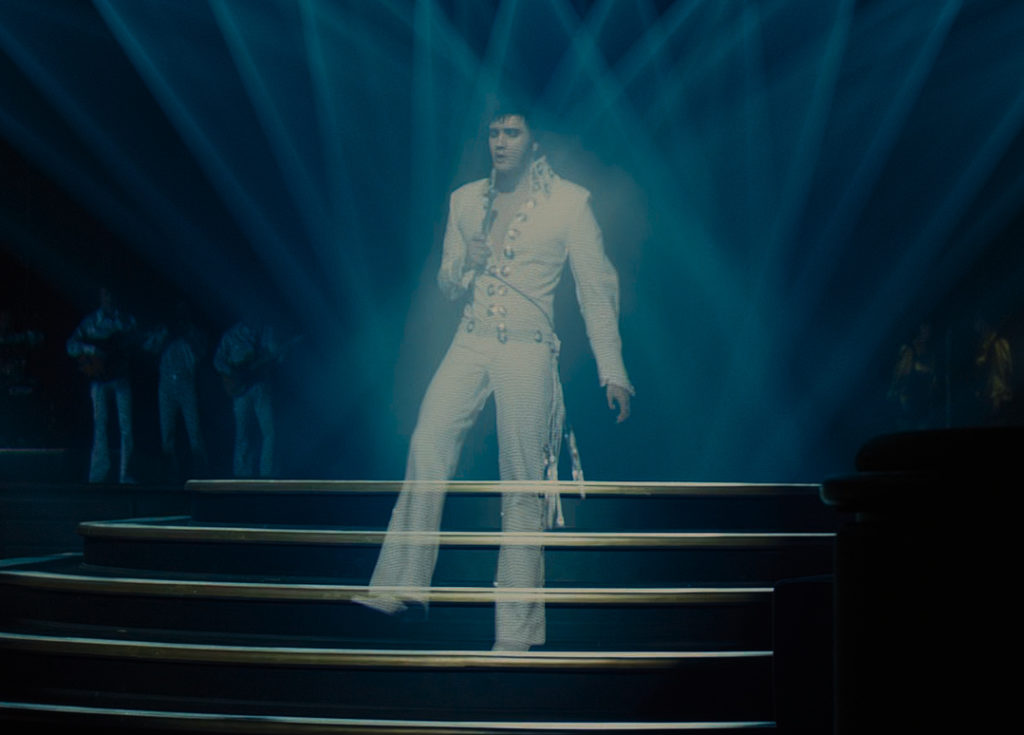

Here Joi stands in for the extra element/the embodiment of transcendental love, a love beyond limits of the body, that allows perfection to be born into reality. Mariette (or Marionette/puppet), acts at the living allegory of the ‘spiritual automaton’: the aspect of the human form/material world embodied by the divine transcendental love through the character Joi; a love made of perfection without form, beginning or an end, an idea/ideal made manifest. In their combination they are the female human beyond human, an embodiment of the real and the Real. They joined in union with K the ascetic ‘fool’, who even at the very beginning of the film has forgone all material attachments, but here we see K understanding the authenticity of his love for both the material (Mariette) and the immaterial (Joy) aspects of reality and surrenders his all inner struggles/insecurities and gives into divine grace.





Joi: She's real. I wanna be real for you. K: You are real for me.





Mariette: Look at you. Joi: Quiet now, I have to sync.





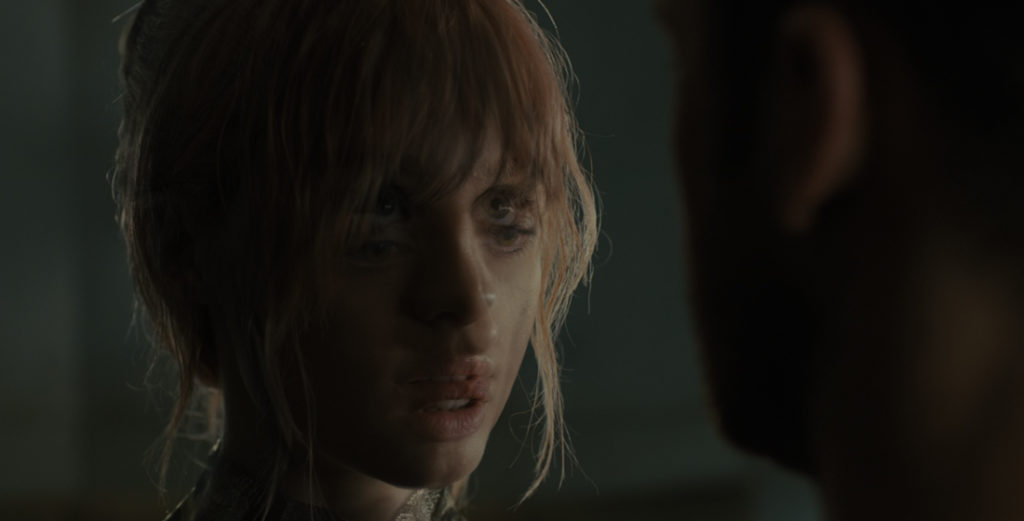













Mariette: It's from a tree...


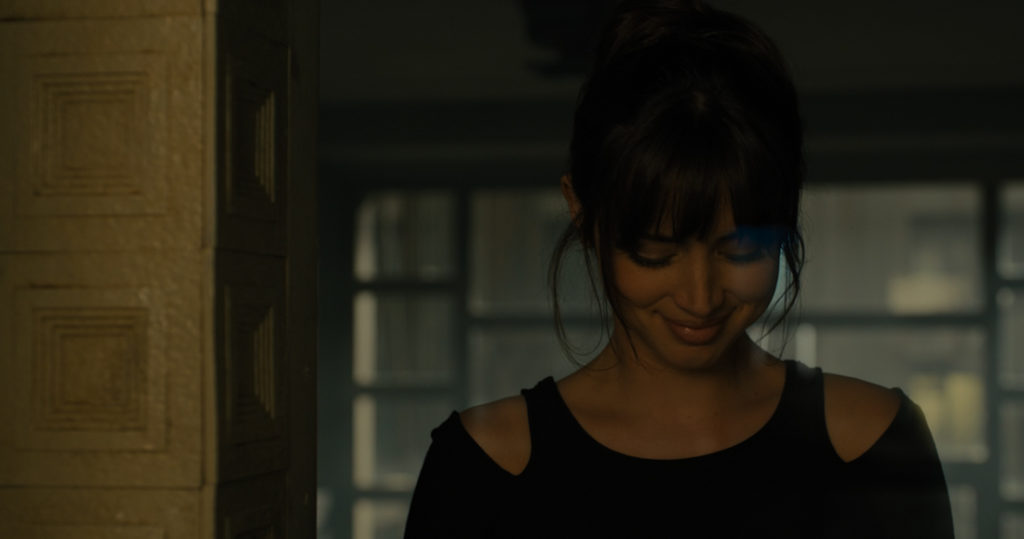
What the audience witnesses in this slightly comedic exchange, is human innocence and love at its purest in the union of the holy trinity that will bring forth the miracle child of replicant/human or the metahuman new Aeon that Ana Stelline’s existence was not able to fulfill. As an inverse to the first film, all the water imagery in the second points towards the impermanence of reality through life, specifically life through birth, like the breaking of water of a new born babe. The all-seeing green eye at the beginning of the movie: I argue is the eye of Mariette’s but more accurately, not of her eye, but the eye of the life that has awakened within her from this union (genetic combination of K/Joy and Mariette—hence the extreme emerald green)
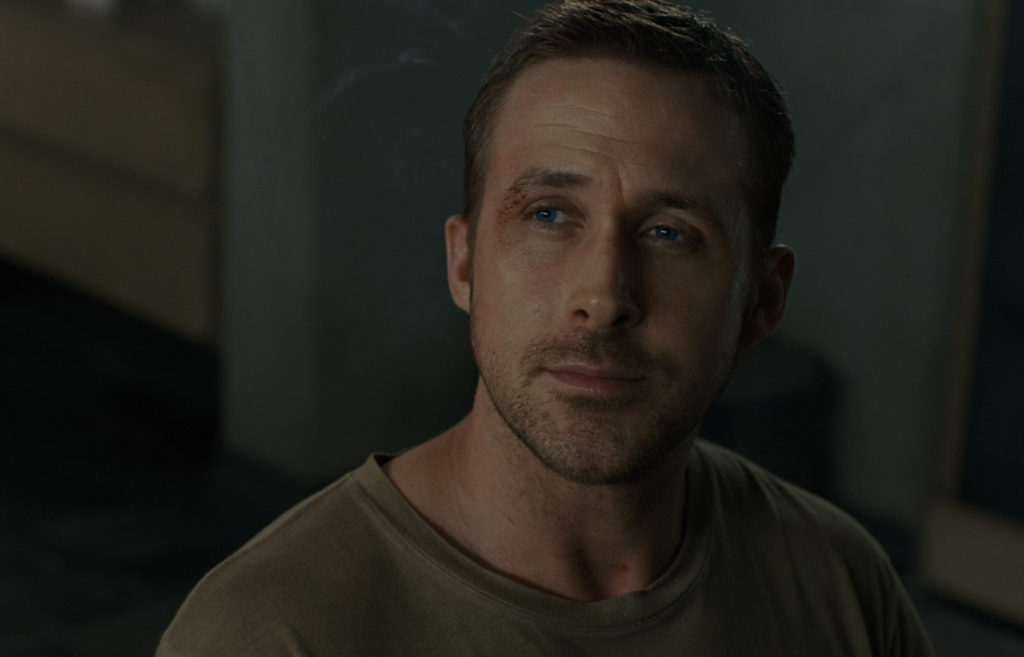
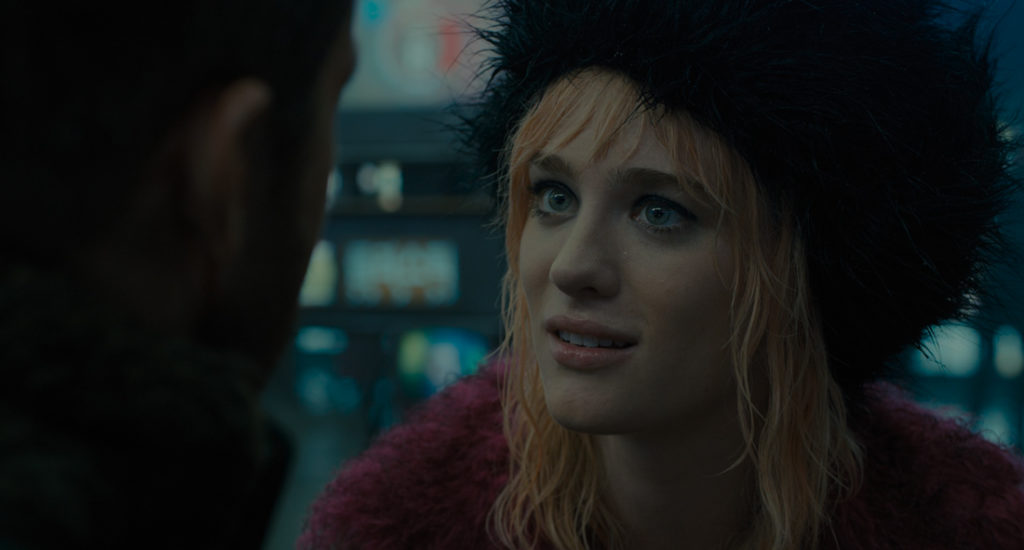
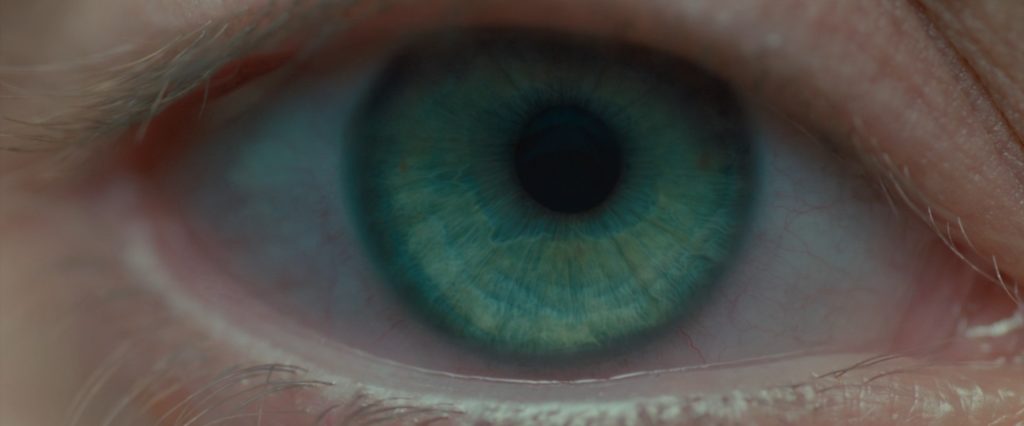
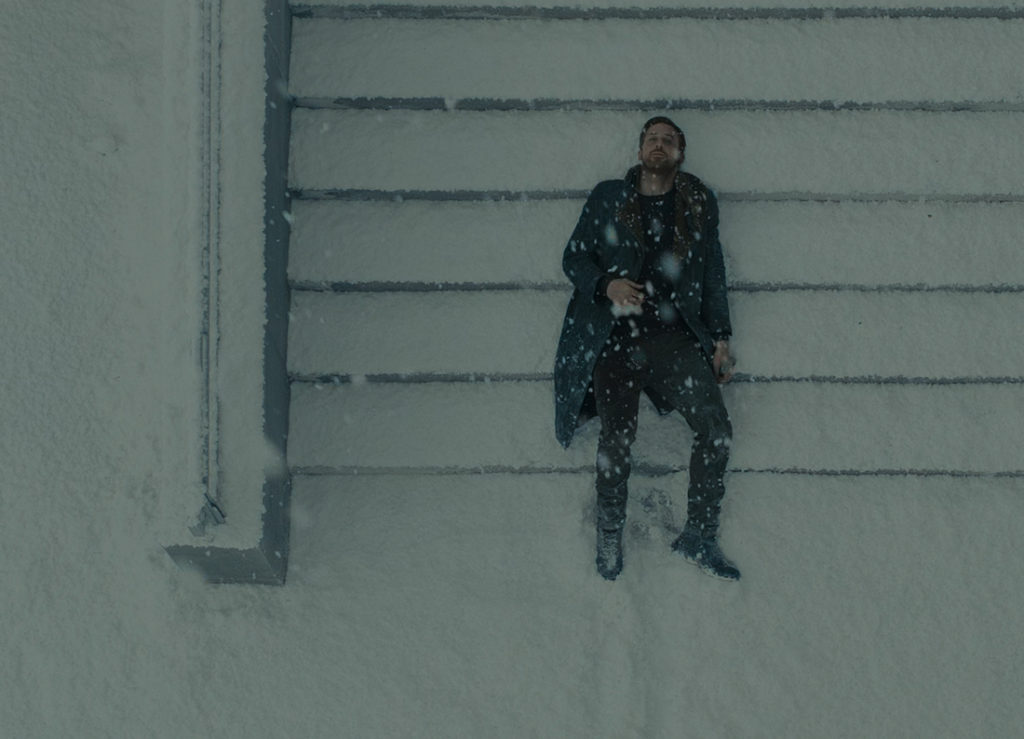
Much like the cosmic universal baby in the film 2001 Space Odyssey that greeted audiences at the end of the character Dave’s journey, here the audience is given a crystal of time, the sign of the future, in the most Walter Benjamin sense of Messianic time of what’s to come, foreshadowing the promised time of human and machine spiritual revolution/evolution and enlightenment (and perhaps setups the next movie Bladerunner 2069) that is to come through one’s willingness to surrender to the love of Life, the lesson K learns at the end of the movie as he stares up at the sky dying as a real man—Do what though wilt, Love is the law, Love under will…
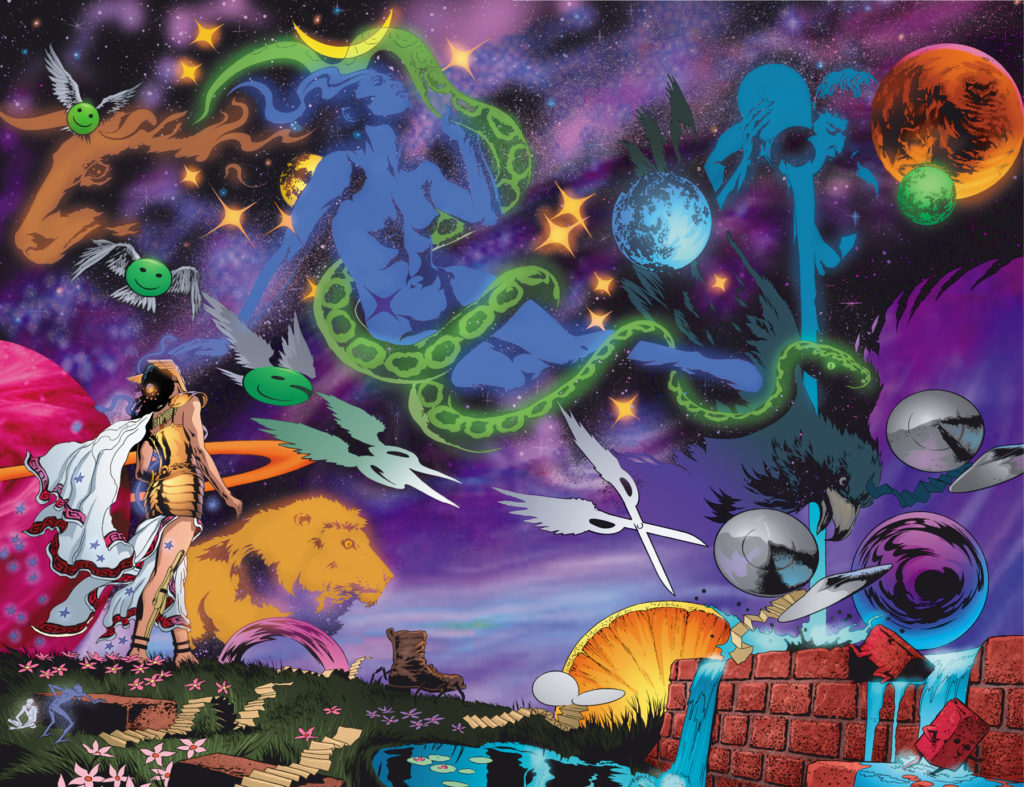
Before our exploration ends, I must again reemphasize: do not mistaken me and assume the vehicle in which I took to reach my destination as the destination itself. All modes of thought are just that, simply modes of thought. Here, Zen is the method I am suggesting to remove the blockage towards advancing in one’s pursuit where any attempt at truth is impossible. That path and vehicle is subjective to every individual, the esoteric path is a solidary one in which we must all walk alone, much like all our paths when we come knocking on heavens door. The whole point of all the words, images, stories, ideas, thoughts are all to simply provoke you to unblock your mind:
Both Takuan and Bankei stressed the fact that the “original” or “unborn” mind is constantly working miracles even in the most ordinary person. Even though a tree has innumerable leaves, the mind takes them in all at once without being “stopped” by any one of them. Explaining this to a visiting monk, Bankei said, “To prove that your mind is the Buddha mind, notice how all that I say here goes into you without missing a single thing, even though I don’t try to push it into you.” When heckled by an aggressive Nichiren monk who kept insisting that he couldn’t understand a word, Bankei asked him to come closer. The monk stepped forward, “Closer still,” said Bankei. The monk came forward again. “How well,” said Bankei, “you understand me!” In other words, our natural organism performs the most marvelously complex activities without the least hesitation or deliberation. Conscious thought is itself founded upon its whole system of spontaneous functioning, for which reason there is really no alternative to trusting oneself completely to its working. Oneself is its working.
Zen is not merely a cult of impulsive action. The point of mo chih ch’u is not to eliminate reflective thought but to eliminate “blocking” in both action and thought, so that the response of the mind is always like a ball in a mountain stream-“one thought after another without hesitation.” There is something similar to this in the psychoanalytic practice of free association, employed as a technique to get rid of obstacles to the free flow of thought from the “unconscious.” For there is a tendency to confuse “blocking”–a purely obstructive mechanism–with thinking out an answer, but the difference between the two is easily noticed in such a purely “thinking out” process as adding a column of figures. Many people find that at certain combinations of numbers, such as 8 and 5 or 7 and 6, a feeling of resistance comes up which halts the process. Because it is always annoying and disconcerting, one tends also to block at blocking, so that the state turns into the kind of wobbling dither characteristic of the snarled feed-back system. The simplest cure is to feel free to block, so that one does not block at blocking. When one feels free to block, the blocking automatically eliminates itself. It is like riding a bicycle. When one starts falling to the left, one does not resist the fall (i.e., the block) by turning to the right. One turns the wheel to the left–and the balance is restored. The principle here is, of course, the same as getting out of the contradiction of “trying to be spontaneous” through accepting the “trying” as “spontaneous,” through not resisting the block.
“Blocking” is perhaps the best translation of the Zen term nien as it occurs in the phrase wu-nien, “no-thought” or, better, “no second thought.” Takuan points out that this is the real meaning of “attachment” in Buddhism, as when it is said that a Buddha is free from worldly attachments. It does not mean that he is a “stone Buddha” with no feelings, no emotions, and no sensations of hunger or pain. It means that he does not block at anything. Thus it is typical of Zen that its style of action has the strongest feeling of commitment, of “follow-through.” It enters into everything wholeheartedly and freely without having to keep an eye on itself. It does not confuse spirituality with thinking about God while one is peeling potatoes. Zen spirituality is just to peel the potatoes. In the words of Lin-chi:
When it’s time to get dressed, put on your clothes. When you must walk, then walk. When you must sit, then sit. Don’t have a single thought in your mind about seeking for Buddhahood.… You talk about being perfectly disciplined in your six senses and in all your actions, but in my view all this is making karma. To seek the Buddha (nature) and to seek the Dharma is at once to make karma which leads to the hells. To seek (to be) Bodhisattvas is also making karma, and likewise studying the sutras and commentaries. Buddhas and Patriarchs are people without such artificialities.… It is said everywhere that there is a Tao which must be cultivated and a Dharma which must be realized. What Dharma do you say must be realized, and what Tao cultivated? What do you lack in the way you are functioning right now? What will you add to where you are?
As another Zenrin poem says:
There’s nothing equal to wearing clothes and eating food. Outside this there are neither Buddhas nor Patríarchs.
This is the quality of wu-shih, of naturalness without any contrivances or means for being natural, such as thoughts of Zen, of the Tao, or of the Buddha. One does not exclude such thoughts; they simply fall away when seen to be unnecessary. “He does not linger where the Buddha is, and where there is no Buddha he passes right on.” For as the Zenrin says again:
To be conscious of the original mind, the original nature– Just this is the great disease of Zen!
As “the fish swims in the water but is unmindful of the water, the bird flies in the wind but knows not of the wind,” so the true life of Zen has no need to “raise waves when no wind is blowing,” to drag in religion or spirituality as something over and above life itself. This is why the sage Fa-yung received no more offerings of flowers from the birds after he had had his interview with the Fourth Patriarch, for his holiness no longer “stood out like a sore thumb.” Of such a man the Zenrin says:
Entering the forest he moves not the grass; Entering the water he makes not a ripple.
No one notices him because he does not notice himself.
It is often said that to be clinging to oneself is like having a thorn in the skin, and that Buddhism is a second thorn to extract the first. When it is out, both thorns are thrown away. But in the moment when Buddhism, when philosophy or religion, becomes another way of clinging to oneself through seeking a spiritual security, the two thorns become one–and how is it to be taken out? This, as Bankei said, is “wiping off blood with blood.” Therefore in Zen there is neither self nor Buddha to which one can cling, no good to gain and no evil to be avoided, no thoughts to be eradicated and no mind to be purified, no body to perish and no soul to be saved. At one blow this entire framework of abstractions is shattered to fragments. As the Zenrin says:
To save life it must be destroyed. When utterly destroyed, one dwells for the first time in peace. One word settles heaven and earth; One sword levels the whole world.
Of this “one sword” Lin-chi said:
If a man cultivates the Tao, the Tao will not work–on all sides evil conditions will head up competitively. But when the sword of wisdom [prajna] comes out there’s not one thing left.
The “sword of prajna” which cuts away abstraction is that “direct pointing” whereby Zen avoids the entanglements of religiosity and goes straight to the heart. Thus when the Governor of Lang asked Yao-shan, “What is the Tao?” the master pointed upwards to the sky and downwards to a water jug beside him. Asked for an explanation, he replied: “A cloud in the sky and water in the jug.”
All that is ever stopping you is you yourself. The moment we stop trying, ever trying, to take a glimpse behind the curtain to sneak a peak of the show, we come to realize there was nothing ever there behind the curtains. Only in that moment, does it becomes apparent that the stage was never on the other side, can one finally grasp we were never the audience but the very show itself. Much like these famous words from Shakespeare:
All the world's a stage, And all the men and women merely Players; They have their exits and their entrances, And one man in his time plays many parts, His Acts being seven ages. At first, the infant, Mewling and puking in the nurse's arms. Then the whining schoolboy, with his satchel And shining morning face, creeping like snail Unwillingly to school. And then the lover, Sighing like furnace, with a woeful ballad Made to his mistress' eyebrow. Then a soldier, Full of strange oaths and bearded like the pard, Jealous in honor, sudden and quick in quarrel, Seeking the bubble reputation Even in the cannon's mouth. And then the justice, In fair round belly with good capon lined, With eyes severe and beard of formal cut, Full of wise saws and modern instances; And so he plays his part. The sixth age shifts Into the lean and slippered pantaloon, With spectacles on nose and pouch on side; His youthful hose, well saved, a world too wide For his shrunk shank, and his big manly voice, Turning again toward childish treble, pipes And whistles in his sound. Last scene of all, That ends this strange eventful history, Is second childishness and mere oblivion, Sans teeth, sans eyes, sans taste, sans everything.
The stage is set, always set, for all of our individual performances. Much like an improvisation performance, spontaneity is the name of the game. The key to that is simply forget you are performing, like all the greatest actors, and simply be who you are meant to be at that exact present moment:
One stops trying to be spontaneous by seeing that it is unnecessary to try, and then and there it can happen. The Zen masters often bring out this state by the device of evading a question and then, as the questioner turns to go, calling him suddenly by name. As he naturally replies, “Yes?” the master exclaims, “There it is!”
To the Western reader it may seem that all this is a kind of pantheism, an attempt to wipe out conflicts by asserting that “everything is God.” But from the standpoint of Zen this is a long way short of true naturalness since it involves the use of the artificial concept–“everything is God” or “everything is the Tao.” Zen annihilates this concept by showing that it is as unnecessary as every other. One does not realize the spontaneous life by depending on the repetition of thoughts or affirmations. One realizes it by seeing that no such devices are necessary. Zen describes all means and methods for realizing the Tao as “legs on a snake”–utterly irrelevant attachments.
To the logician it will of course seem that the point at which we have arrived is pure nonsense–as, in a way, it is. From the Buddhist point of view, reality itself has no meaning since it is not a sign, pointing to something beyond itself. To arrive at reality–at “suchness”–is to go beyond karma, beyond consequential action, and to enter a life which is completely aimless. Yet to Zen and Taoism alike this is the very life of the universe, which is complete at every moment and does not need to justify itself by aiming at something beyond. In the words of a Zenrin poem:
If you don’t believe, just look at September, look at October! The yellow leaves falling, falling, to fill both mountain and river.
The mysteries of the universe is not out there somewhere beyone our reach, its always already here right in front of us; unconditionally revealed to everyone. Spiritual praxis is not something for the elite, the trained, the spiritual, the educated or something beyond the average person or child. Spiritual praxis is daily life itself in motion. Don’t get “stuck” and dwell in pasts, futures or fictional images of potentials that simply don’t exist or trap yourself in non-existent expectations/obligations; like water, when the mind becomes stagnant and dwells in lost desert mirages no life can thrive. Imagine a new teflon pan, regardless of what one burns and fries up in the heat of the act, it all just rinses off and starts fresh again. And lest not forget, to look, to really LOOK, at the truths when they are simply always staring back at you in the places that you least expected to find them. In the hopes to finding the things that one never lost; all one has to do is open their minds to seeing the very simplicities of life in the same yet unfamilar light. Our lives are never held in a state of need, but the desire to want is the very experience of existence itself. Just enjoy the things that truly matter to you without the complications of the mind to take one out of the moment; there is frankly nothing else more important:
That there is a way of looking at life apart from all conceptions, beliefs, opinions, and theories is the remotest of all possibilities from the modern mind. If such a point of view exists, it can only be in the vacant brain of a moron. We suffer from the delusion that the entire universe is held in order by the categories of human thought, fearing that if we do not hold to them with the utmost tenacity, everything will vanish into chaos.
We must repeat: memory, thought, language, and logic are essential to human life. They are one half of sanity. But a person, a society, which is only half sane is insane. To look at life without words is not to lose the ability to form words—to think, remember, and plan. To be silent is not to lose your tongue. On the contrary, it is only through silence that one can discover something new to talk about. One who talked incessantly, without stopping to look and listen, would repeat himself ad nauseam.
It is the same with thinking, which is really silent talking. It is not, by itself, open to the discovery of anything new, for its only novelties are simply rearrangements of old words and ideas. There was a time when language was constantly being enriched by new words—a time when men, like Adam, saw things before they named them. Today, almost all new words are rearrangements of old words, for we are no longer thinking creatively. By this I do not mean that we ought all to be popping with inventions and revolutionary discoveries. This is the—always rare—power of those who can both see the unknown and interpret it. For most of us, the other half of sanity lies simply in seeing and enjoying the unknown, just as we can enjoy music without knowing either how it is written or how the body hears it.
Certainly the revolutionary thinker must go beyond thought. He knows that almost all his best ideas come to him when thinking has stopped. He may have struggled and struggled to understand a problem in terms of old ways of thinking, only to find it impossible. But when thought stops from exhaustion, the mind is open to see the problem as it is—not as it is verbalized—and at once it is understood.
But going beyond thought is not reserved to men of genius. It is open to all of us in so far as “the mystery of life is not a problem to be solved, but a reality to be experienced.” It is given to many to be seers, but to few to be prophets. Many can listen to music, but few can perform and compose. But you cannot even listen if you can hear only in terms of the past. What should we make of one of Mozart’s symphonies if our ears were attuned only to the music of tom-toms? We might get the rhythms, but almost nothing of the harmony and melody. In other words, we should fail to discover an essential element of the music. To be able to hear, much less write, such a symphony men had to discover new noises—the vibrations of catgut, the sound of air in a tube, and the hum of a plucked wire. They had to discover the whole world of tone, as something entirely different from pulse.
If I can only conceive pulse, I cannot appreciate tone. If I can think of painting only as a way of making colored photographs without a camera, I can see nothing but ineptitude in a Chinese landscape. We learn nothing of very much importance when it can be explained entirely in terms of past experience. If it were possible to understand all things in terms of what we know already, we could convey the sense of color to a blind man with nothing but sound, taste, touch, and smell.
If this is true in the various arts and sciences, it is a thousand times more true when we come to the understanding of life in a larger sense and want to have some knowledge of the ultimate Reality, or God. It is surely absurd to seek God in terms of a preconceived idea of what God is. To seek thus is only to find what we know already, which is why it is so easy to deceive oneself into all manner of “supernatural” experiences and visions. To believe in God and to look for the God you believe in is simply to seek confirmation of an opinion. To ask for a revelation of God’s will, and then to “test” it by reference to your preconceived moral standards is to make a mockery of asking. You knew the answer already. Seeking for “God” in this way is no more than asking for the stamp of absolute authority and certainty on what you believe in any case, for a guarantee that the unknown and the future will be a continuation of what you want to retain from the past—a bigger and better fortress for “I.” Ein feste Burg!
If we are open only to discoveries which will accord with what we know already, we may as well stay shut. This is why the marvelous achievements of science and technology are of so little real use to us. It is in vain that we can predict and control the course of events in the future, unless we know how to live in the present. It is in vain that doctors prolong life if we spend the extra time being anxious to live still longer. It is in vain that engineers devise faster and easier means of travel if the new sights that we see are merely sorted and understood in terms of old prejudices. It is in vain that we get the power of the atom if we are just to continue in the rut of blowing people up.
Tools such as these, as well as the tools of language and thought, are of real use to men only if they are awake—not lost in the dreamland of past and future, but in the closest touch with that point of experience where reality can alone be discovered: this moment. Here life is alive, vibrant, vivid, and present, containing depths which we have hardly begun to explore. But to see and understand it at all, the mind must not be divided into “I” and “this experience.” The moment must be what it always is—all that you are and all that you know. In this house there is no room for thee and me!
As a final gesture of our spiritual exploration together that has come to an end, I will leave you with one final note to remember and carry with you, as quoted from the immortal words of Metallica (witness all the variations in which to say it, they are simply all saying the same words in four different ways…):
Nothing Else Matters:
So close, no matter how far Couldn't be much more from the heart Forever trusting who we are And nothing else matters Never opened myself this way Life is ours, we live it our way All these words, I don't just say And nothing else matters Trust I seek and I find in you Every day for us something new Open mind for a different view And nothing else matters
Never cared for what they do Never cared for what they know But I know So close, no matter how far It couldn't be much more from the heart Forever trusting who we are And nothing else matters Never cared for what they do Never cared for what they know But I know I never opened myself this way Life is ours, we live it our way All these words, I don't just say And nothing else matters
Trust I seek and I find in you Every day for us something new Open mind for a different view And nothing else matters Never cared for what they say Never cared for games they play Never cared for what they do Never cared for what they know And I know, yeah, yeah So close, no matter how far Couldn't be much more from the heart Forever trusting who we are No, nothing else matters
……………………………………………………………………………………………………………………………………………………………………………………………..
Vi Veri Veniversum Vivus Vici.


